Last Updated on August 26, 2022 by
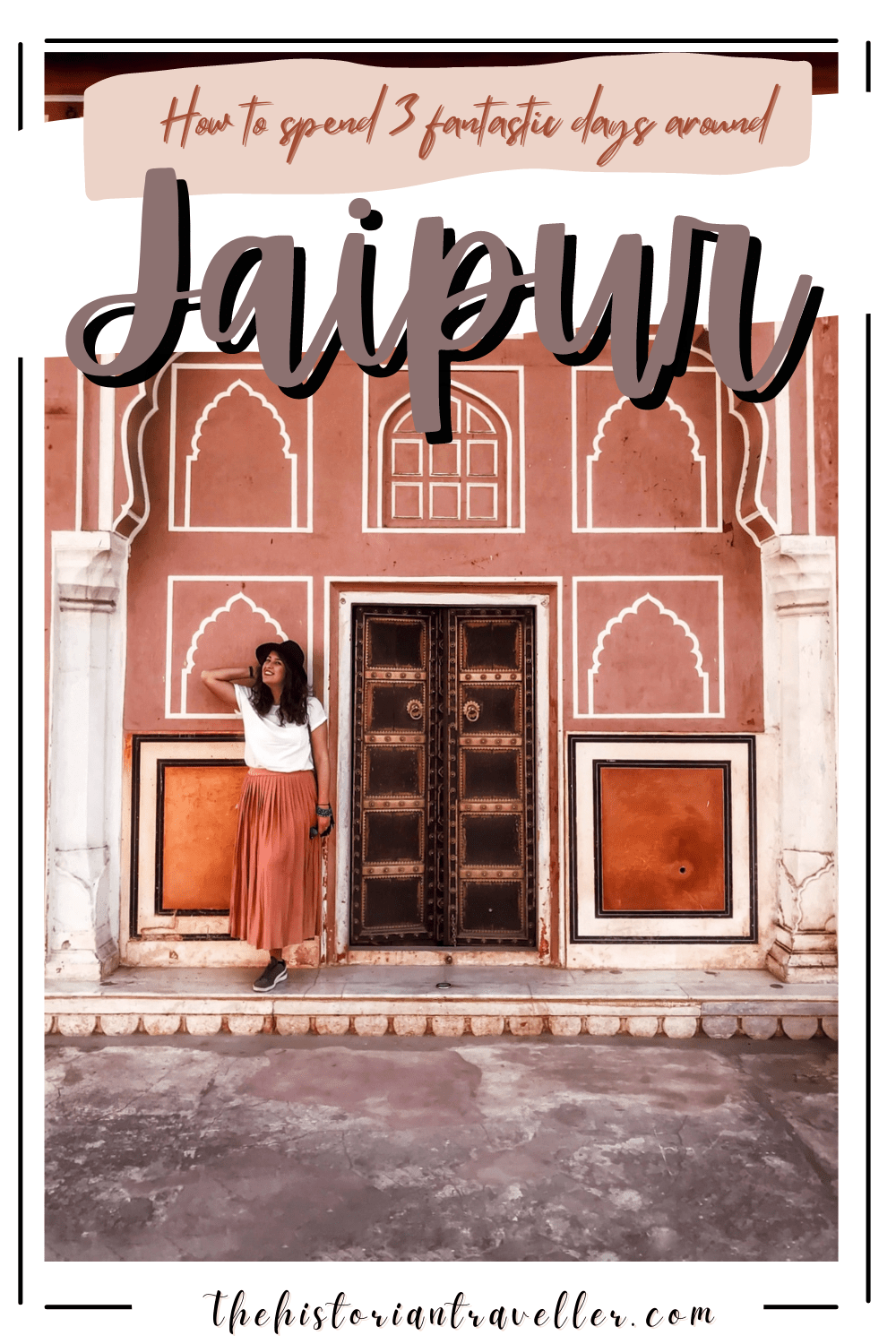
Jaipur. The buzzing capital of Rajasthan. Chaotic, exotic, beautiful and pink. Jaipur was probably my favourite city along my 20-days itinerary of India. In this guide, will find a detailed Jaipur 3-days itinerary. This includes maps, things to do, where to eat in Jaipur and how to go around!
Table of Contents
A brief history of Jaipur
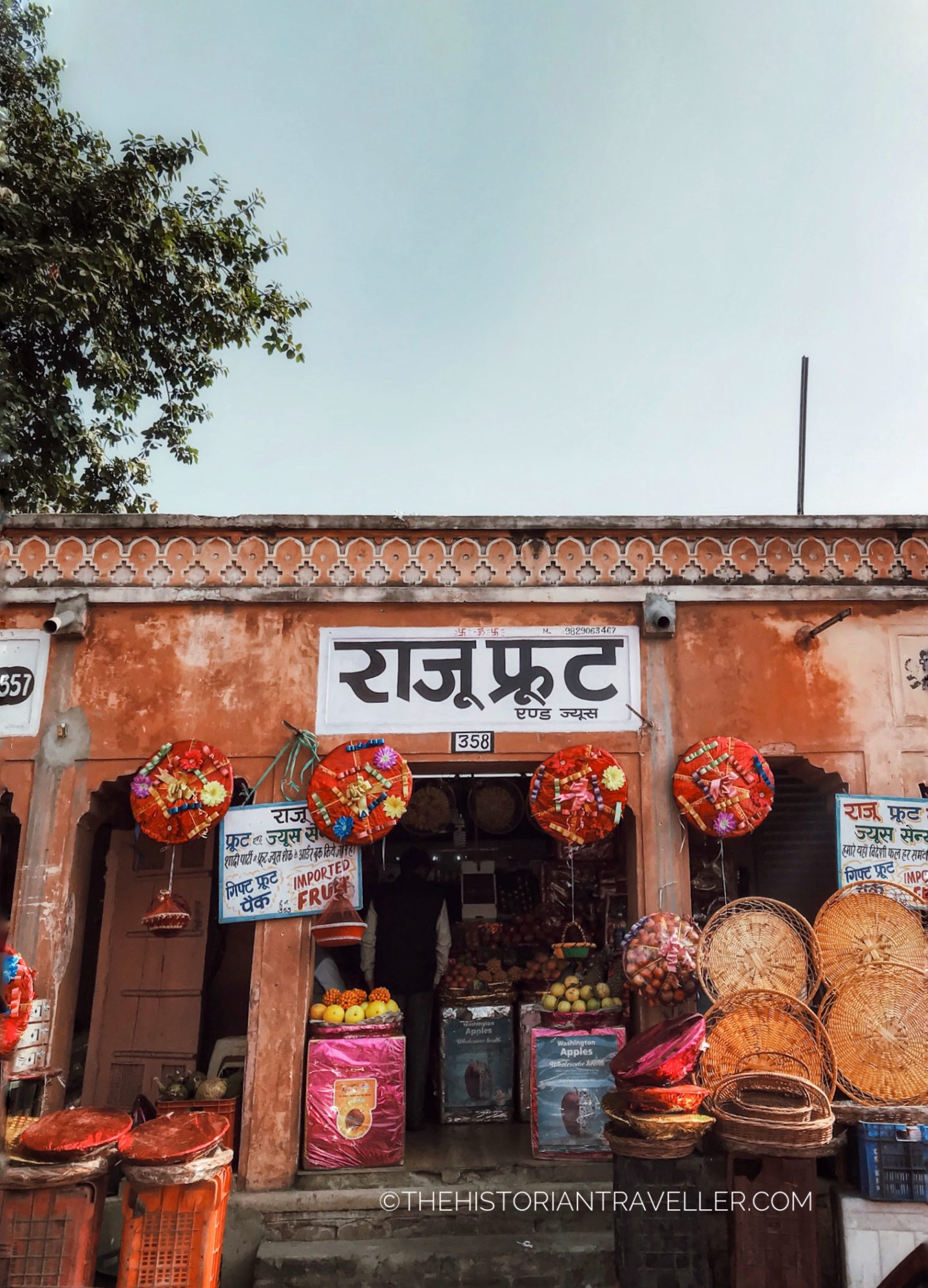
Jaipur, the capital and largest city of the Indian state of Rajasthan was founded by Maharaja Sawai Jai Singh II in 1727. In order to accommodate the needs of a constant growing population he planned to shift the capital of Rajasthan from Amer to Jaipur.
The building of a fairytale city
The construction of the city of Jaipur took just four years and the urban plan used for its development followed the principles of Vastu Shastra. This is traditional Hindu architectural system that integrates religious beliefs into architectural patterns. Indeed, the city’s division into nine main blocks was an incredible advanced system during that century.
This made Jaipur one of the most modern Indian cities during the XVIII century. For reason of public security, the city has always been walled and accessible throughout one of its 8 gates (9 if one considers also the latest built gate, famous as the “Patrika Gate”). When it was built, the city didn’t have the current outlook. Indeed, this was part of the “welcome plan” for the Prince of Wales and Queen Victoria who were visiting the city in 1876. In this occasion, the city was painted entirely in pink.
Why pink? Because for Indian people, the colour pink was understood as a sign of hospitality. Therefore, painting in this colour an entire city was considered a great sign of welcoming towards its guests. From this moment onward, Jaipur became famous with the epithet of “Pink City”. The name is still used to describe the city that still keeps its street painted with this lovely vibrant colour.
Getting to Jaipur from Agra or New Delhi
Jaipur is far 268 km from New Delhi and 241 km from Agra (travelling by car). It can be reached by plane, train or car. The closest airport is the Jaipur International Airport located at about 25 mins from the city centre.
Driving to Jaipur from Agra
The road trip from Agra to Jaipur takes about 4 hours ( a little bit more if you consider the Indian traffic). It is not advised to travel by car on your own. Indian roads are risky, there are animals on the street, people drive in a crazy way and you may even get scammed along the road. The best thing to do is hiring a cab with an expert driver. This can be done via your hotel or external agencies.
Because we were principally in India for the wedding of two friends of us, they helped us with this giving us a trusted local contact who organised the road trip for us. Indeed, with the same driver and at a combined price we travelled from Agra to Vrindavan and then from Agra to Jaipur (the day after).
Cost of a cab from Agra to Jaipur
A medium A/C cab in good conditions generally costs around ₹ 4,500 (£ 50 circa). However, if you are not making any stop, travelling light and don’t care about air conditioning in the car, you can try to negotiate a lower price. I’ve heard of some companies that take people from Agra to Jaipur as cheap as ₹ 2,500. However, I can’t grant you about their reliability. Moreover, consider to go on a A/C not just for the warm weather but also for the pollution.
In certain areas of India the air quality is very poor. Therefore, without air conditioning and with a very warm temperature, you will travel with open windows, breathing the most polluted air and risking a pollution poisoning (having had this in Agra, I wouldn’t wish this to anyone!).
Travelling by coach, train or plane to Jaipur
Travelling by mini-bus/coach is recommended only to experienced and adventurous travellers (possibly male only). Local friends highly discouraged us to get on a coach because of frequent scams, criminality and even kidnapping. Better safe than sorry!
Train is so far the cheapest option. The fastest train going from Agra to Jaipur is the 22988 AF AII SUPERFAST. This takes 4 hours and costs ₹155-555 (1-7£).
If you want to know how to book a train ticket in India if you are a tourist check my guide here!
Moreover, if you are getting to Jaipur from New Delhi, the most convenient way might be flying. Companies like Air Asia, Spice Jet, Air India and IndiGo offers daily flight between the two cities as cheap as £18 for 55 mins flight (average fares go between £33-58).
Tip
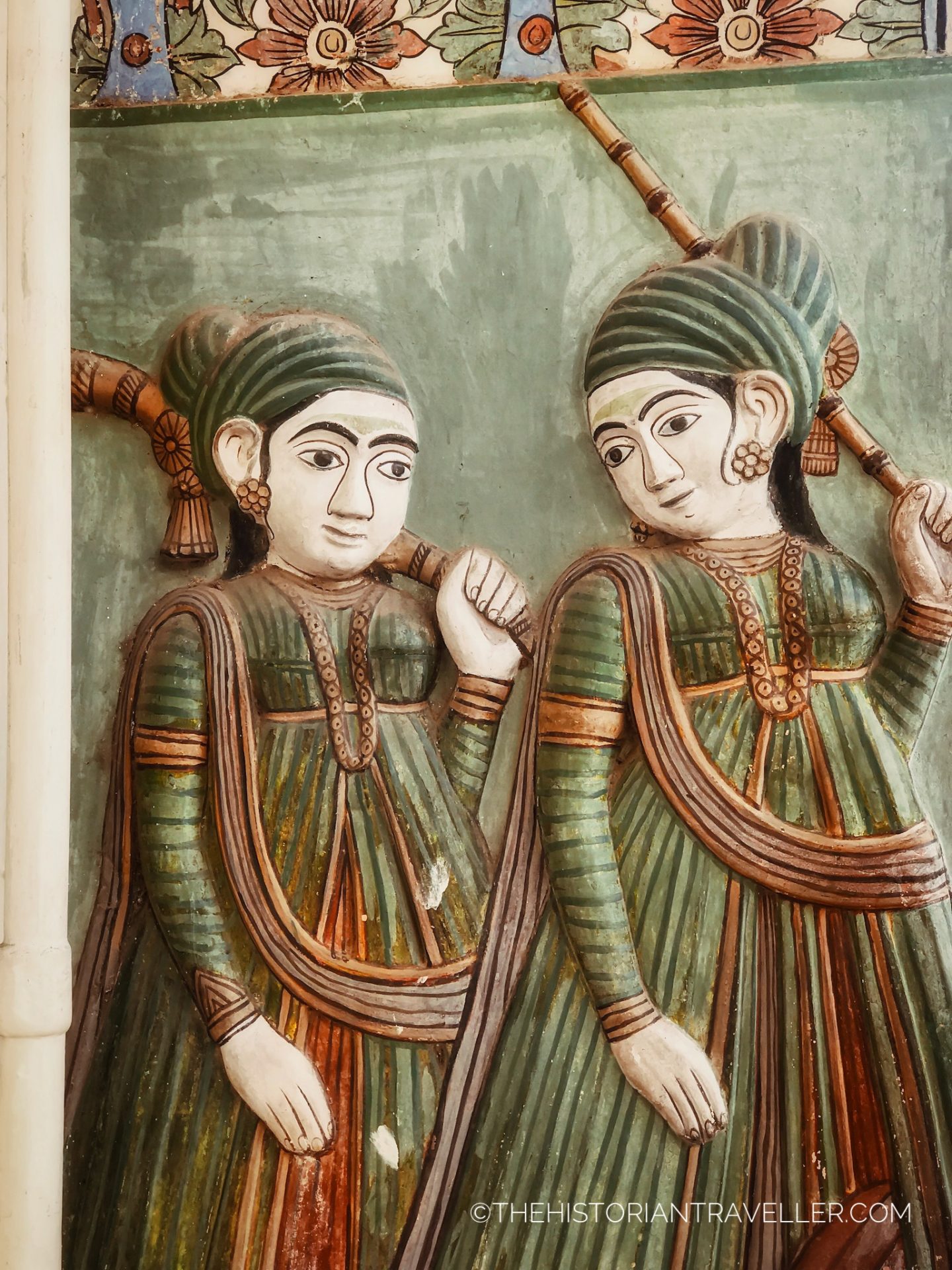
Whether you are reaching Jaipur by car or train, BE AWARE OF SCAMMERS! Especially if you are a first timer in India. Don’t go venturing alone and always check with the police or your hotel if you have any doubt. In addition, if you would like to book a cab to go to Jaipur and not sure who to trust, refer to your hotel, they will always have a trusted driver.
Getting around Jaipur
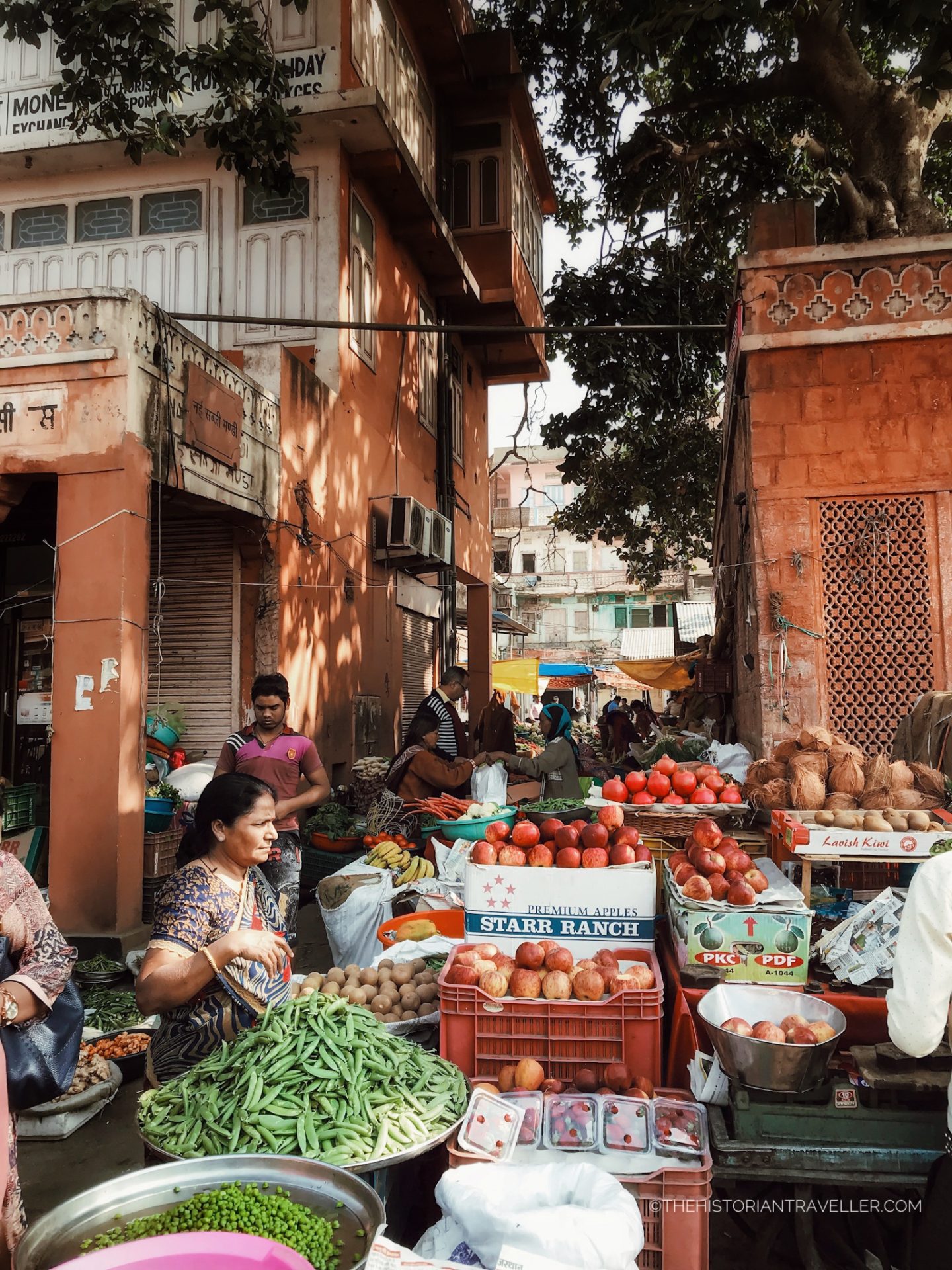
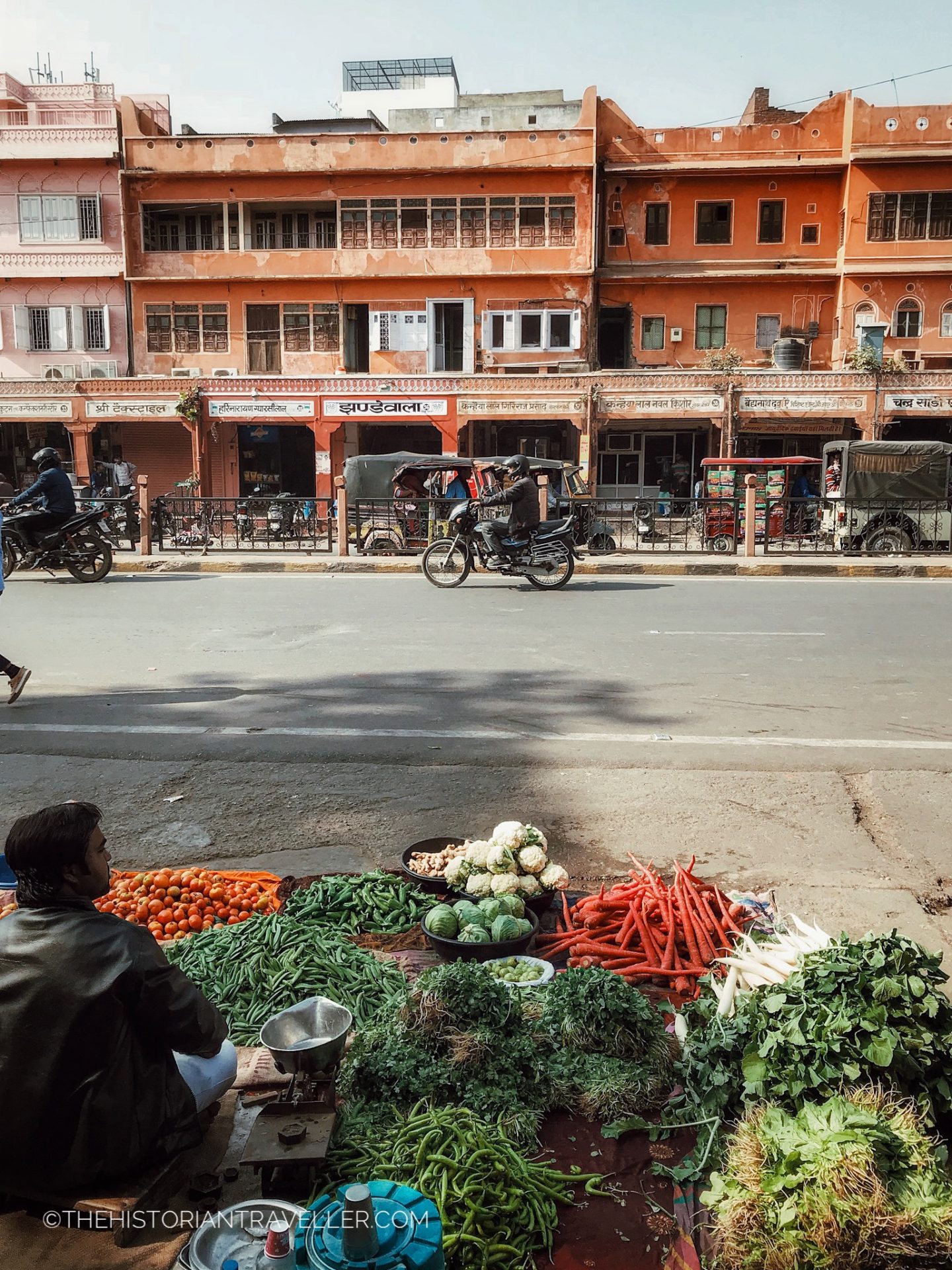
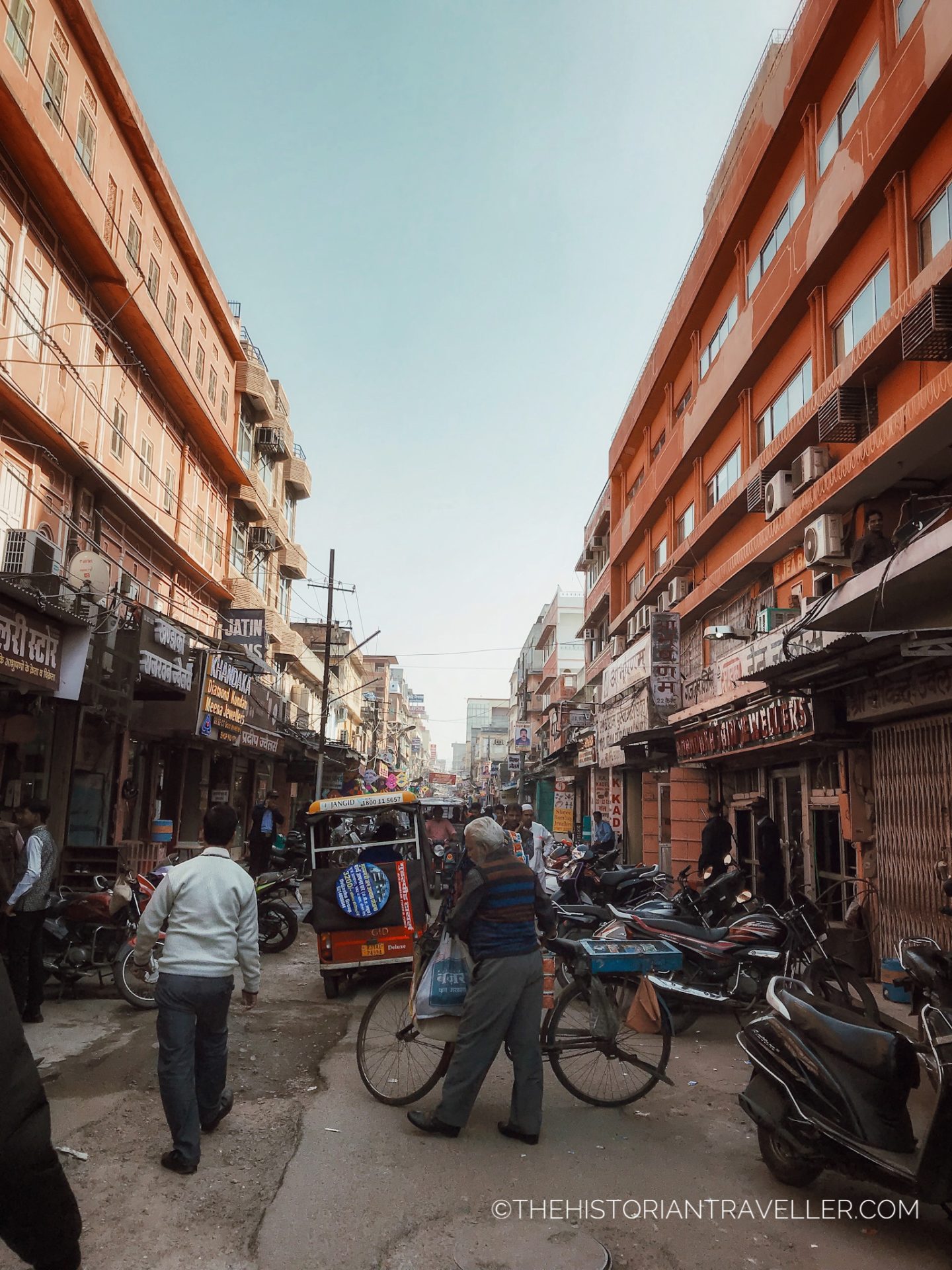
Jaipur is a big city and getting to see all you want to see might not be easy without knowing how to move around. Find below the most reliable ways to get around Jaipur.
Getting around by taxi
Differently from Agra, where you can get around only by pre-paid taxis, Jaipur is served by Uber. Someone might disagree with this, but we used Uber for most of our daily trips in different Indian cities (except Agra). I found it cheap, honest, safe and reliable. Moreover, we travelled with Uber in Jaipur also by night. We had no problem at all (which is something you should’t undervalue when in India).
If you have bought an Indian sim at the airport, you can choose to move also with the cab company OLA. This is very similar to Uber but needs an Indian number to be booked. Otherwise, you can use your usual Uber app (and your roaming charges) to book cab. To be sure of not being scammed, always check that the details of your Uber booking and driver correspond to the cab you are taking. Moreover be sure the driver understands your name and destination.
Getting around by Tuk Tuk
Going around with a tuk tuk is one of the most funny experience you can do in India. Jaipur doesn’t make an exception. In fact, Tuk Tuk are cheap and perfect for brief distances. According to my experience, they are also lifesavers in case your phone is dead and you don’t know how to book an Uber. Tuk Tuks are also quite reliable. Nevertheless, you might have to “fight” for obtaining fair price (never expect to pay the same price of local people anyway). Especially if you look too much touristy. To be sure your driver doesn’t take advantage of you, ALWAYS ask the price of the ride BEFORE jumping on a Tuk Tuk. Moreover, clarify if the price is for one person only or for a whole group.
Walking around Jaipur
Walking around Jaipur is pretty safe, especially around touristic areas like the City Palace or the Hawa Mahal. In fact, we did walk a lot in Jaipur (a lot more than other Indian cities). This because we had an hotel at just 20 mins walk from the City Palace. Therefore, it was pointless for us to take a taxi when so close to certain city attraction.
However, walking can be a little stressing around the frontal facade of the Hawa Mahal. Indeed, the street it’s ridiculously full of cars and crossing the road can be quite challenging. The trick is to follow what the locals do. They know perfectly how to sneak into the traffic and cross the street safely. The great boulevards and bazaars are mostly safe to walk. However, people may approach you. Sometimes just to have a chat because they are curious about you, sometimes because they want to bring you to their cousin bazaar and sometimes because they are try to scam you. Therefore, if you decide to walk keep your eyes wide open and trust your instinct.
Jaipur 3 days itinerary
If you are planning to arrive in Jaipur by car, the first day might be the most stressing one. Your driver might wants to pick you up very early in the morning (like at 4.30 am) and take advantage of the empty roads to avoid the traffic. You will stay in the car for no less than 4 hours (possibly without stopping at all) and when arriving in Jaipur might it be hot, humid, chaotic and different from all the other Indian cities you visited.
Moreover, your driver might insist you (our driver did) to visit the abandoned village of Fatehpur Sikri. This place is right on the main road to Jaipur and is the most visited place by tourist going to the Pink City from Agra. We would probably visited if we had one more day but we preferred to opt for the less touristic Abhaneri’s stepwell, known as Chand Baori.
Day 1- Visiting Jaipur off the beaten track
Knowing what was expecting us, we decided to opt for a light itinerary and visit some some of the Jaipur’s off the beaten track attractions that otherwise we would probably never visited. First of all, we asked the driver to pick-up us around 7.30 and not 4.30. We were still suffering from the pollution poisoning we had the past days in Agra and we needed all the rest possible before undertaking another long road trip.
The itinerary we proposed to our driver was departing at 7.30 from Agra and driving towards the Chand Baori Step-Well (B) in the city of Abhaneri. We hoped to arrive in Abhaneri around 12 pm, visiting the site and then driving again towards Jaipur. When in Jaipur, our first stop should be the Patrika Gate (C) which is quite at the edge of the city and then our final stop before our hotel, the iconic Jal Mahal (D). In all of this we decided to skip lunch and go for a relaxed meal at the hotel restaurant at night.
Visiting the Chand Baori Step-Well. What you need to know.
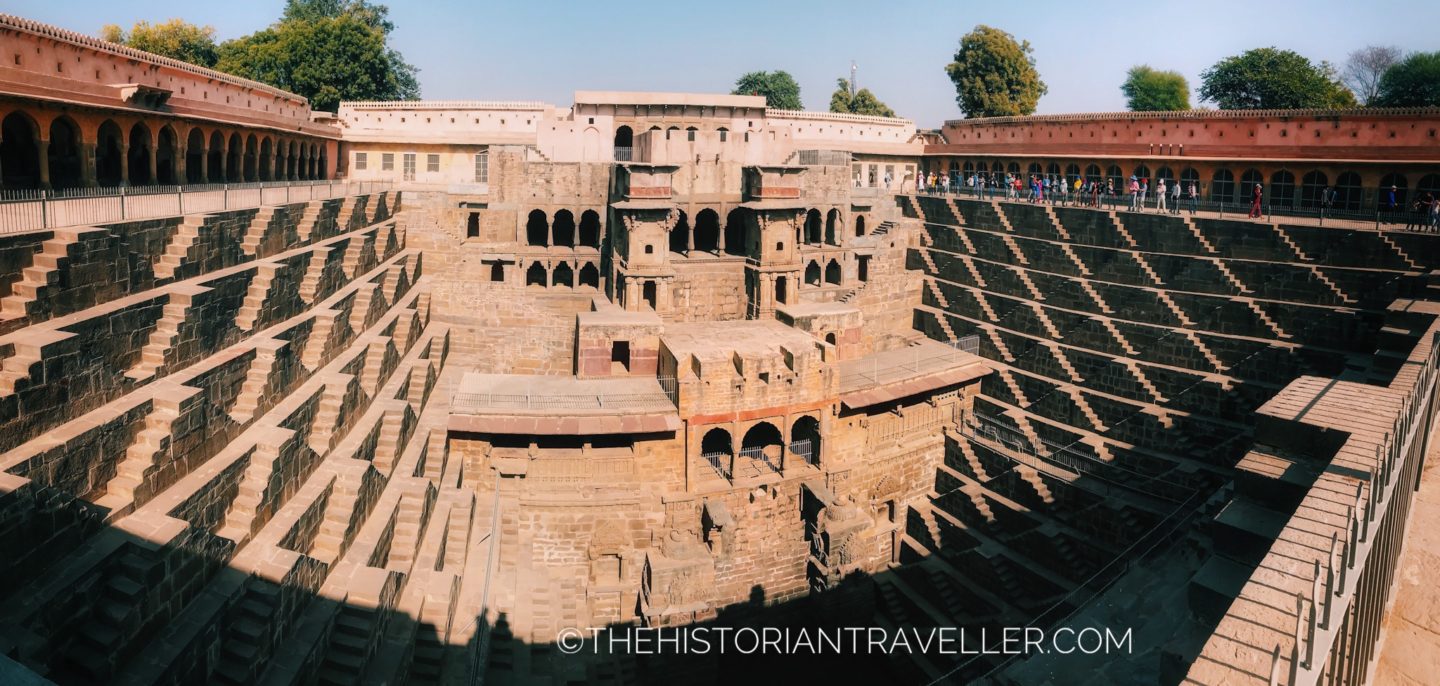
The Chand Baori, is one of the largest, deepest and oldest Step-Wells in Rajasthan with the oldest part of the structure dating back to the 8th century A.D.. In Hindi, the word baoli means “step”. This Step-Well is descending to the bottom of the ground for about 20 metres throughout more than 3,500 steps based on 13 levels.
The Step-Well was built with the purpose of providing water to the village of Abhaneri (water is still visible at the bottom). Descending the step-well is not possible for safety reasons. This because the steps are very slippery and narrow and people fell down in the past. Interestingly, any tentative to corrupt the guardian to let us go to the lower level was unsuccessful.
The Chand Baori is located in the historical village of Abhaneri. This was created by King Raja Chand of Gurjar Kingdom in the 9th century A.D. The original name of the village was “Abha Nagri” meaning “city of brightness”. The legend says that the goddess Harshat Mata spreaded the brightness of his joy all over the village, from here the name. Unfortunately, of this beautiful and legendary medieval village only the Step-Well and the nearby temple are still surviving.
Getting to Abhaneri
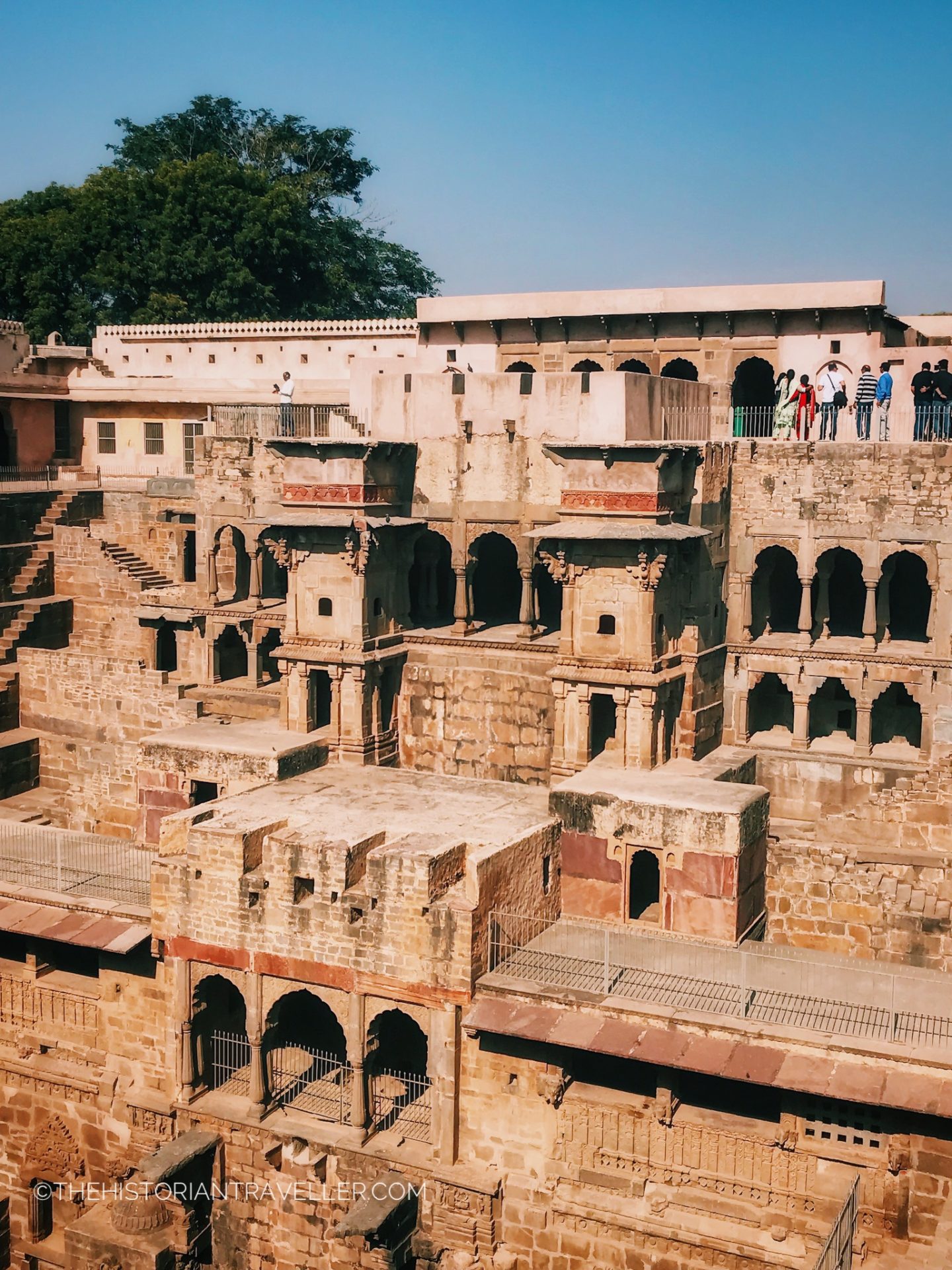
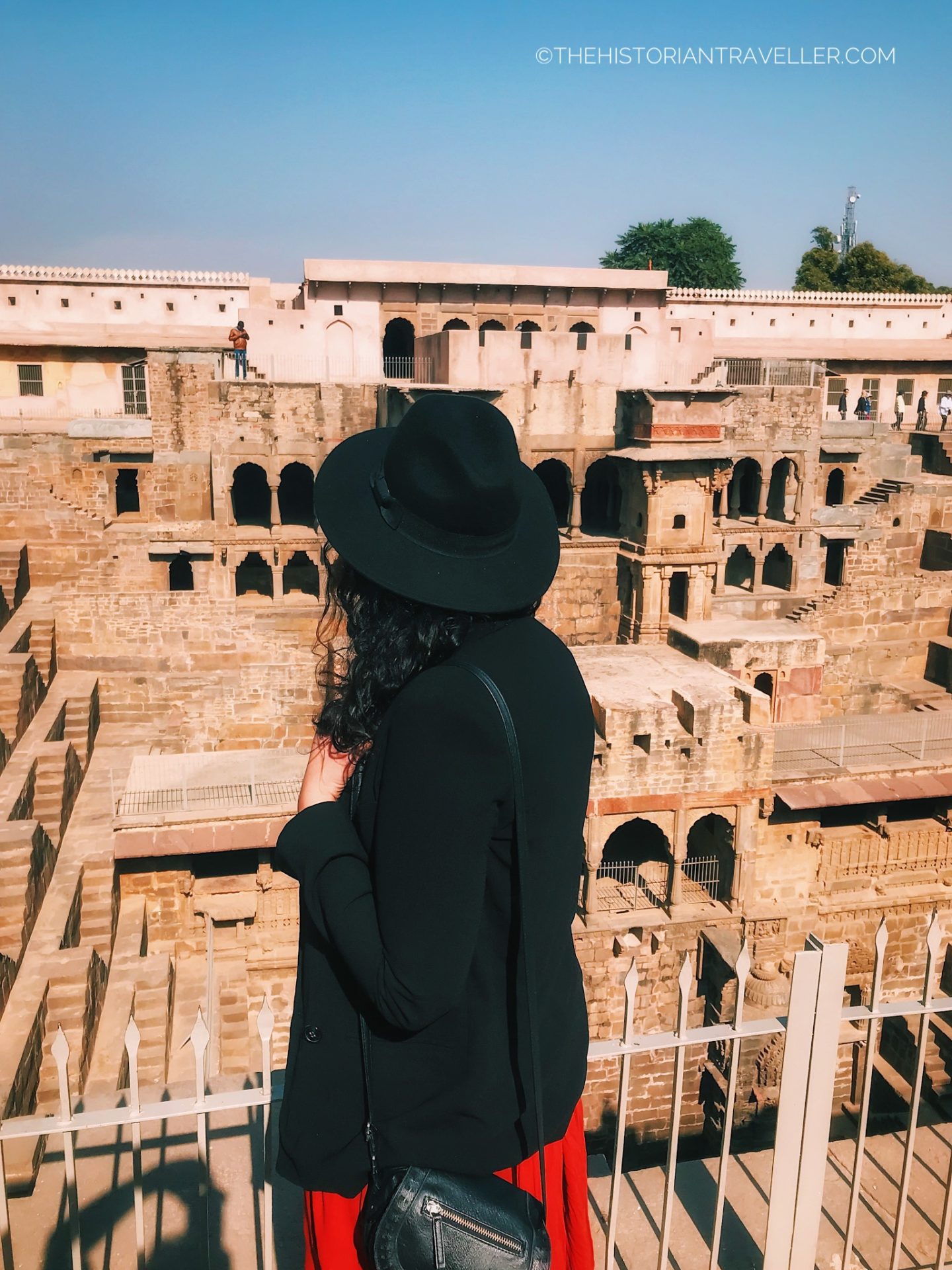
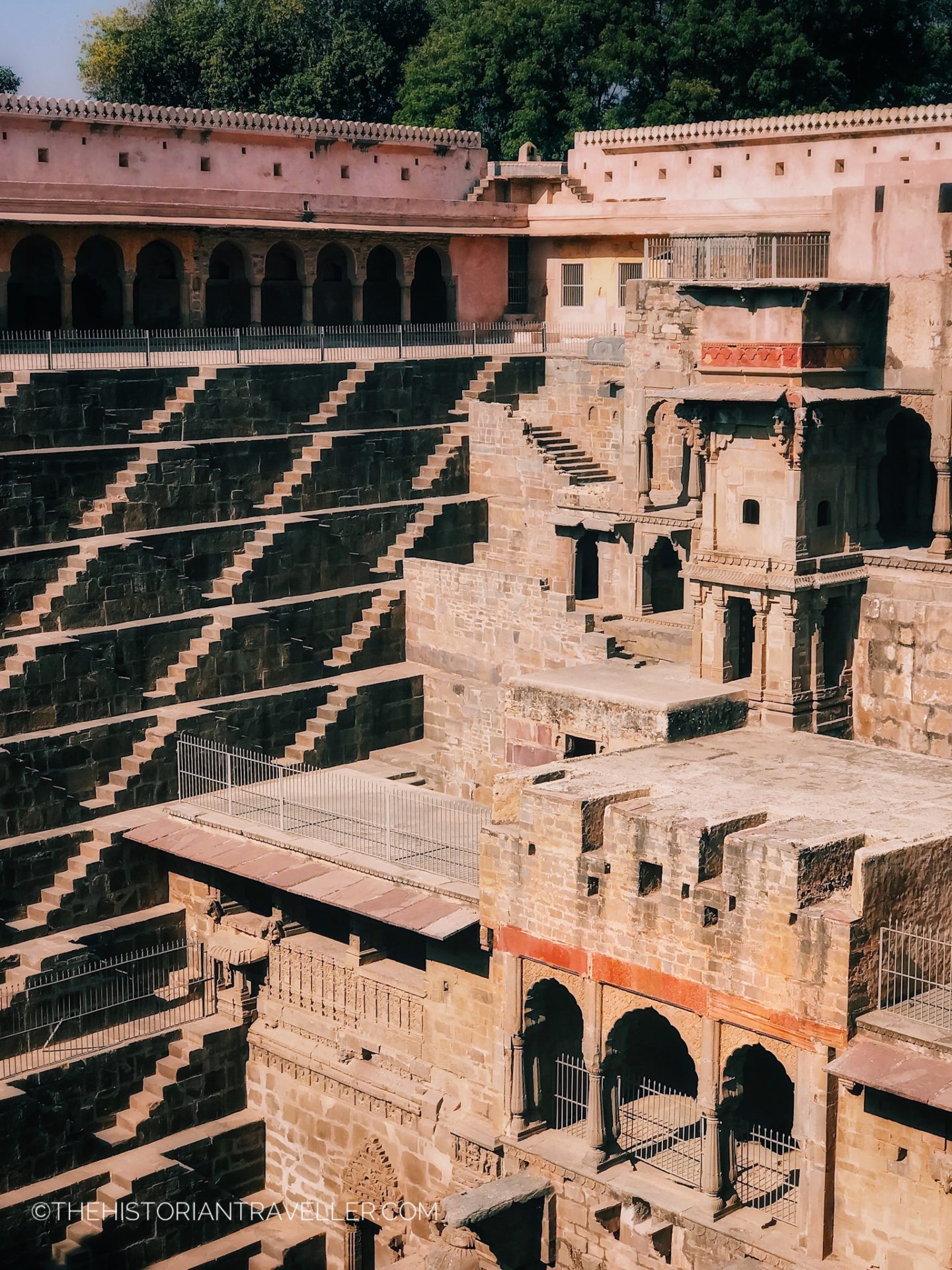
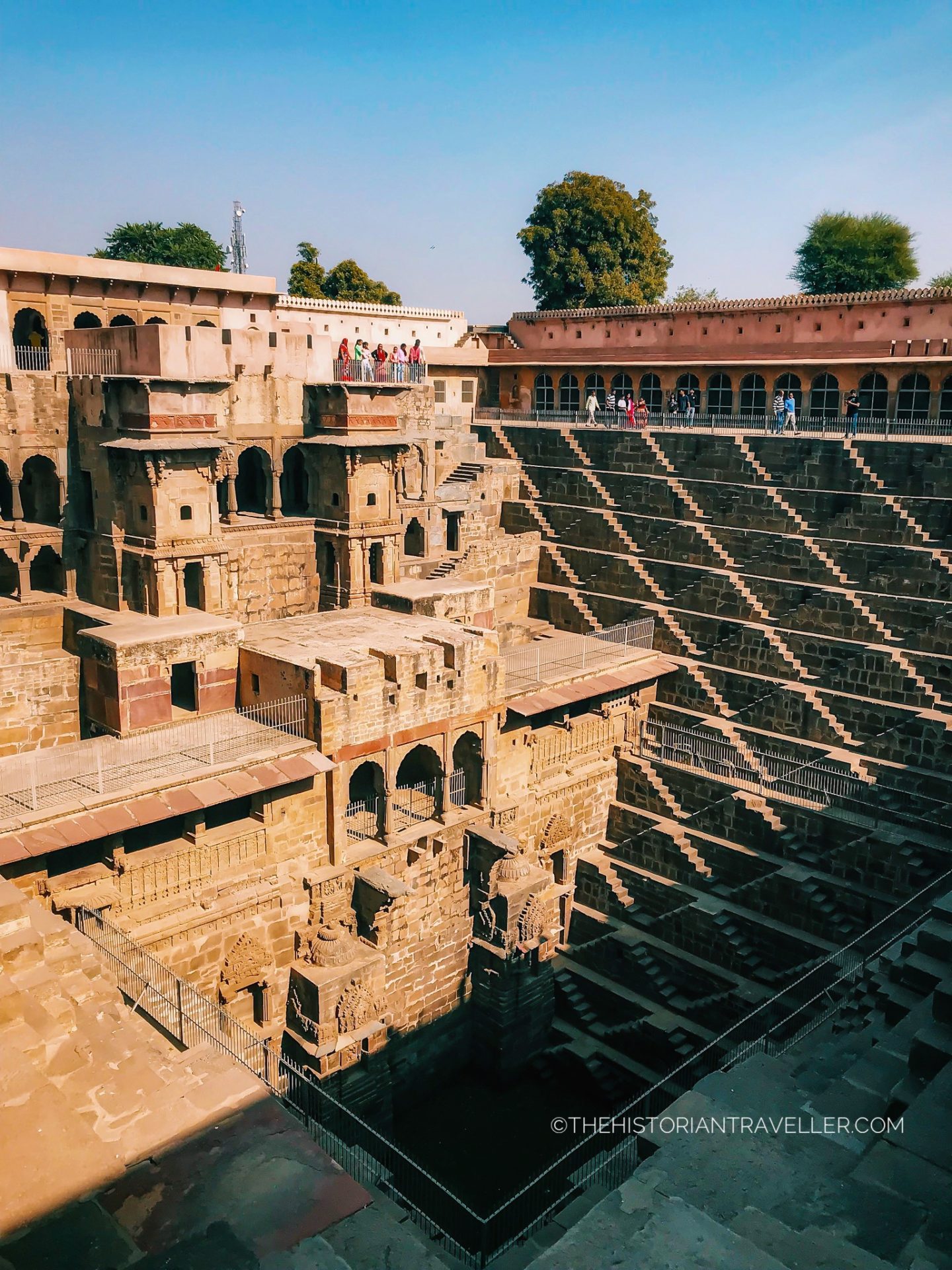
The village of Abhaneri is far from Jaipur around 95 km (2h drive circa) and 30.9 km from Dausa. The village is located on the NH-11 Jaipur-Agra road.
How much does it cost visiting the Chand Baori?
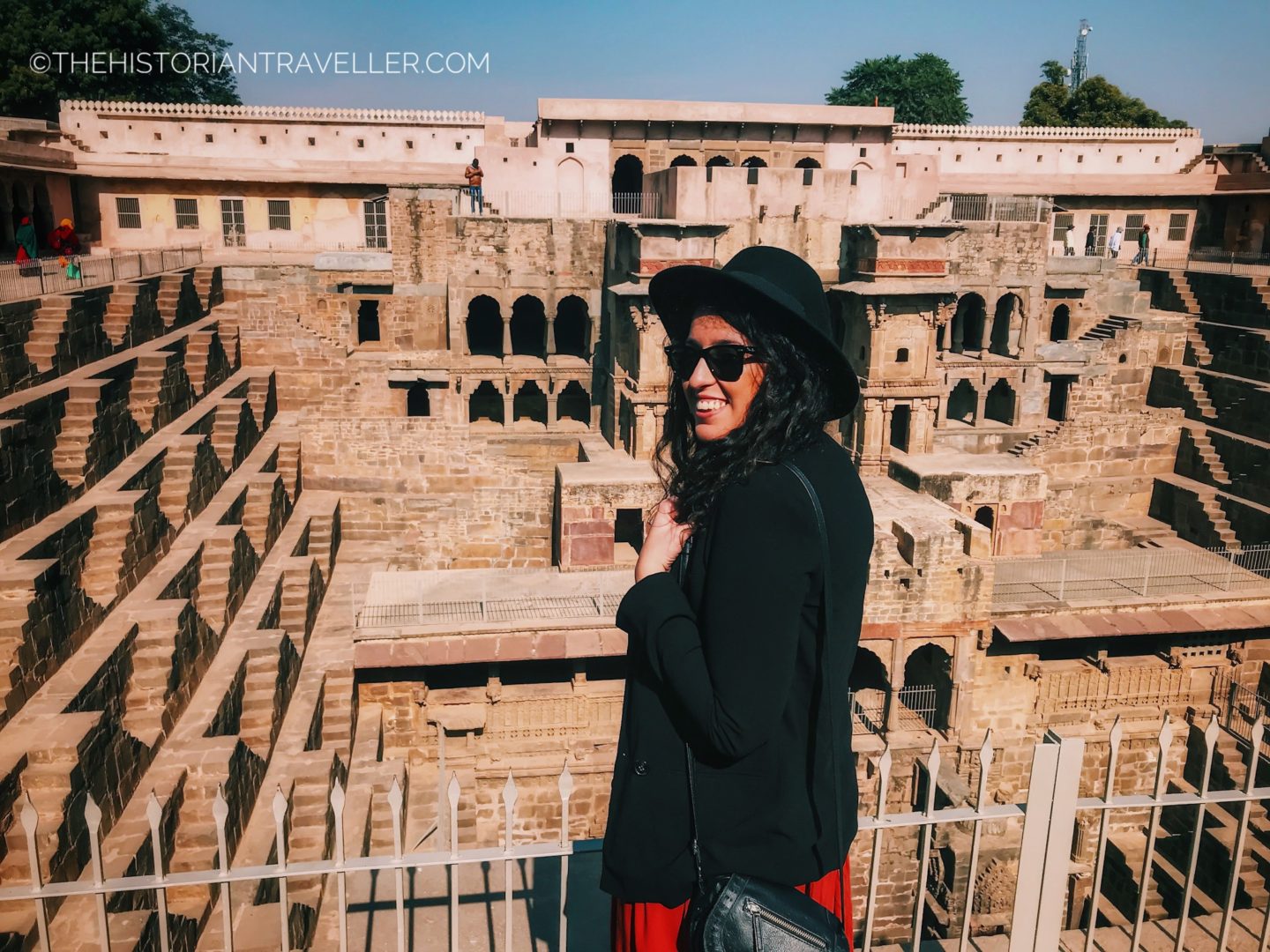
Visiting the Chand Baori is completely free! If anyone is asking you money for any reason to access the Step-Well, he/she is cheating on you! If you want, you can leave an offer to the temple nearby or to the guardian, if he is so kind to take you around and tell you a bit of history of the place. In our case, the guardian asked us if we would like him to explain a bit of history of the place and we accepted. He also took some nice picture of us, so we left him a generous offer. I asked him also if I could take some pictures INSIDE the well but he kindly refused.
How long time do I need to visit the Step-Well?
Because you can’t really access the staircases leading to the bottom of the Well, seeing the structure only from its surroundings, I would say that a half hour is more than enough to take pictures and give you a comprehensive view of the archaeological site. However, if you visit also the Harshat Mata Temple (see below) you will spend more or less 1 hour in total.
Bonus stop – The Harshat Mata Temple
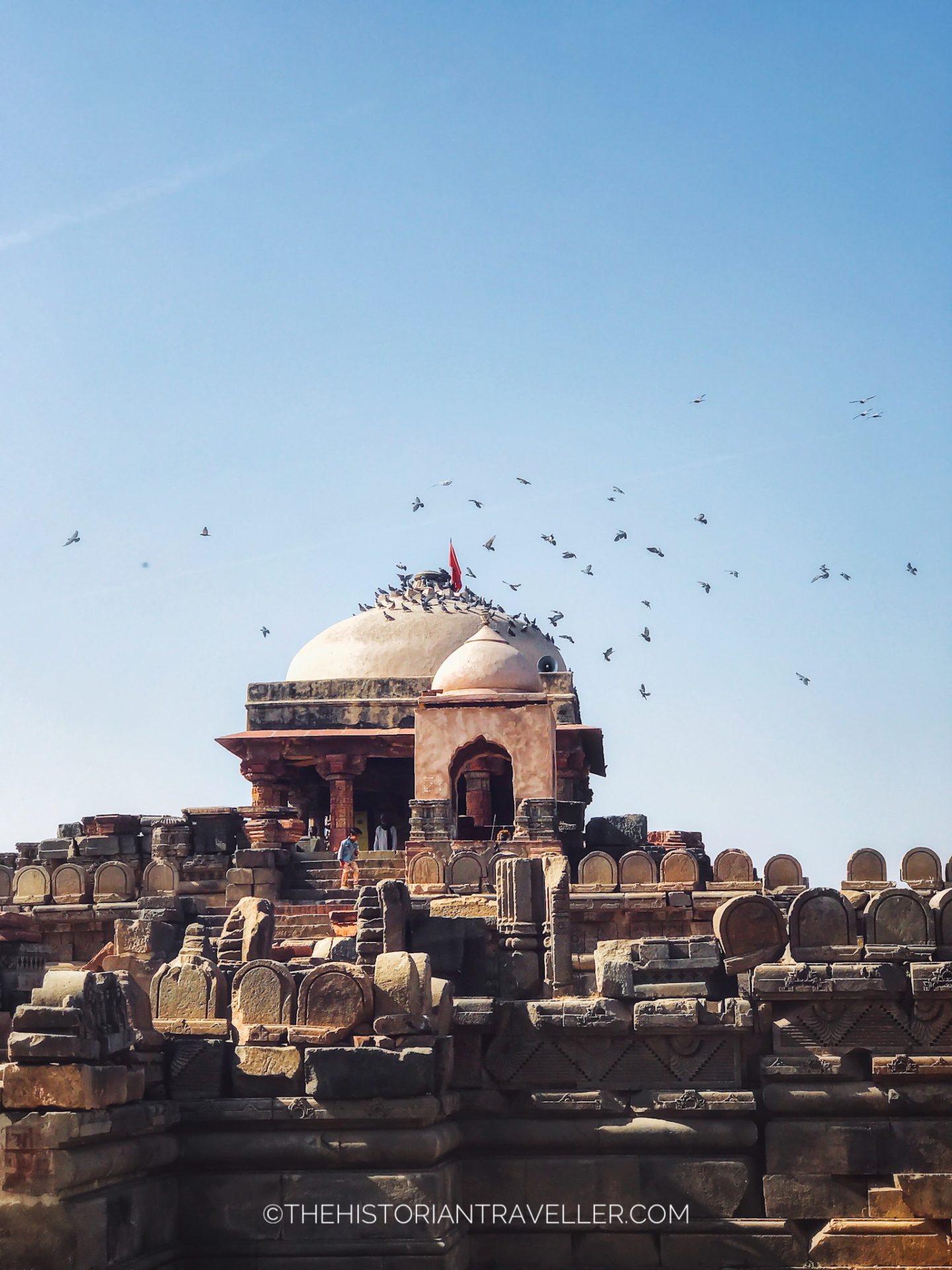
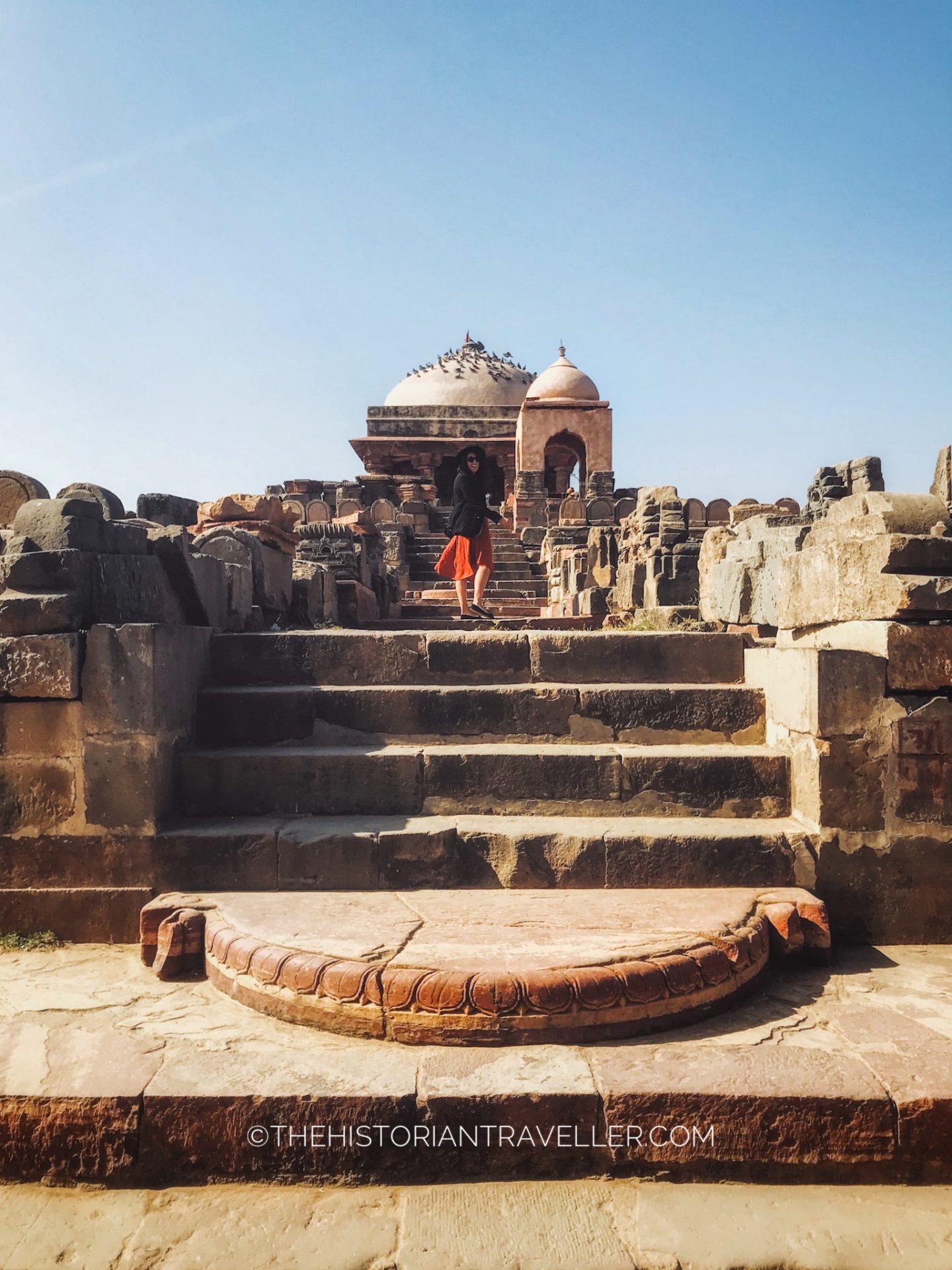
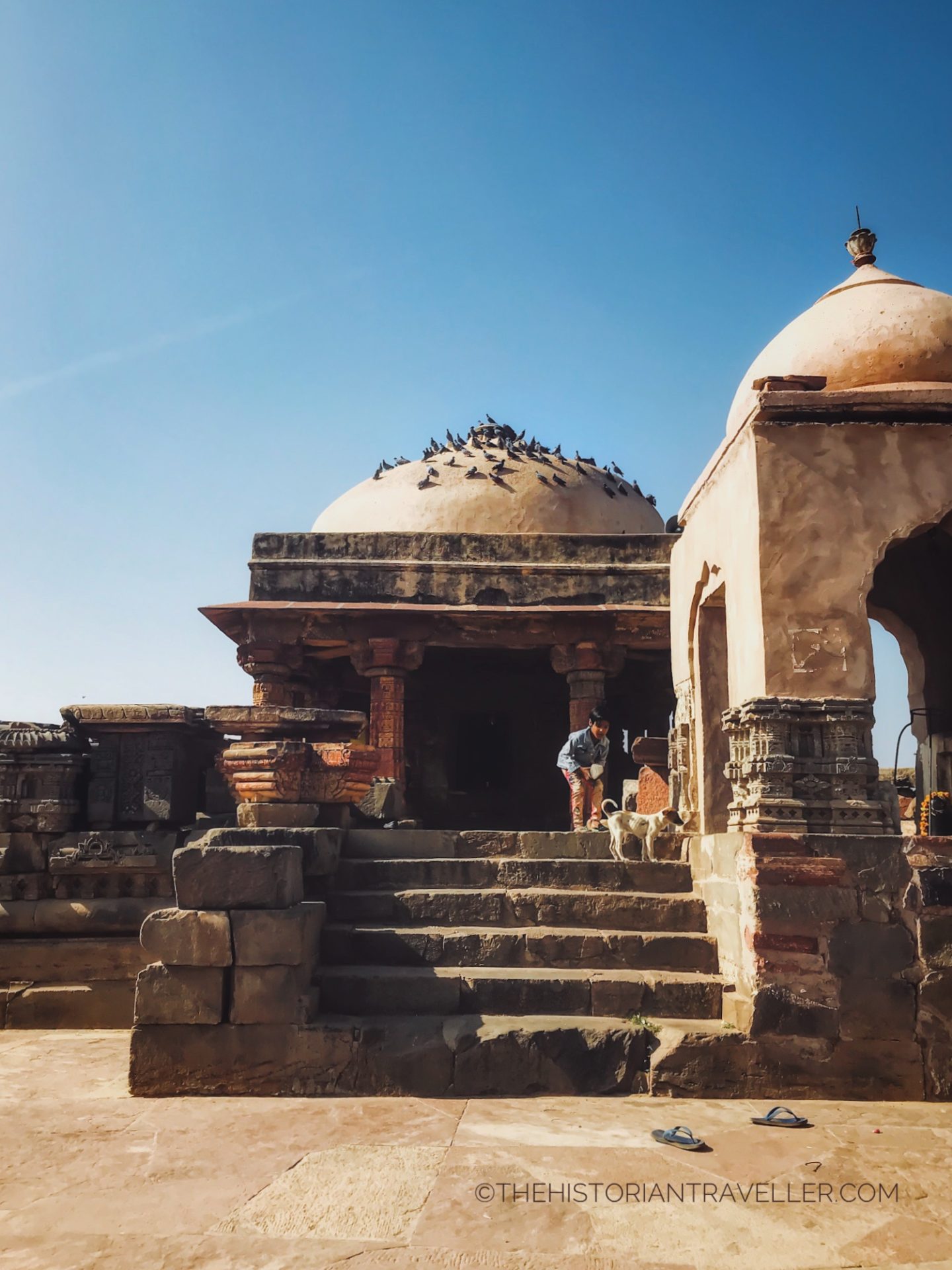
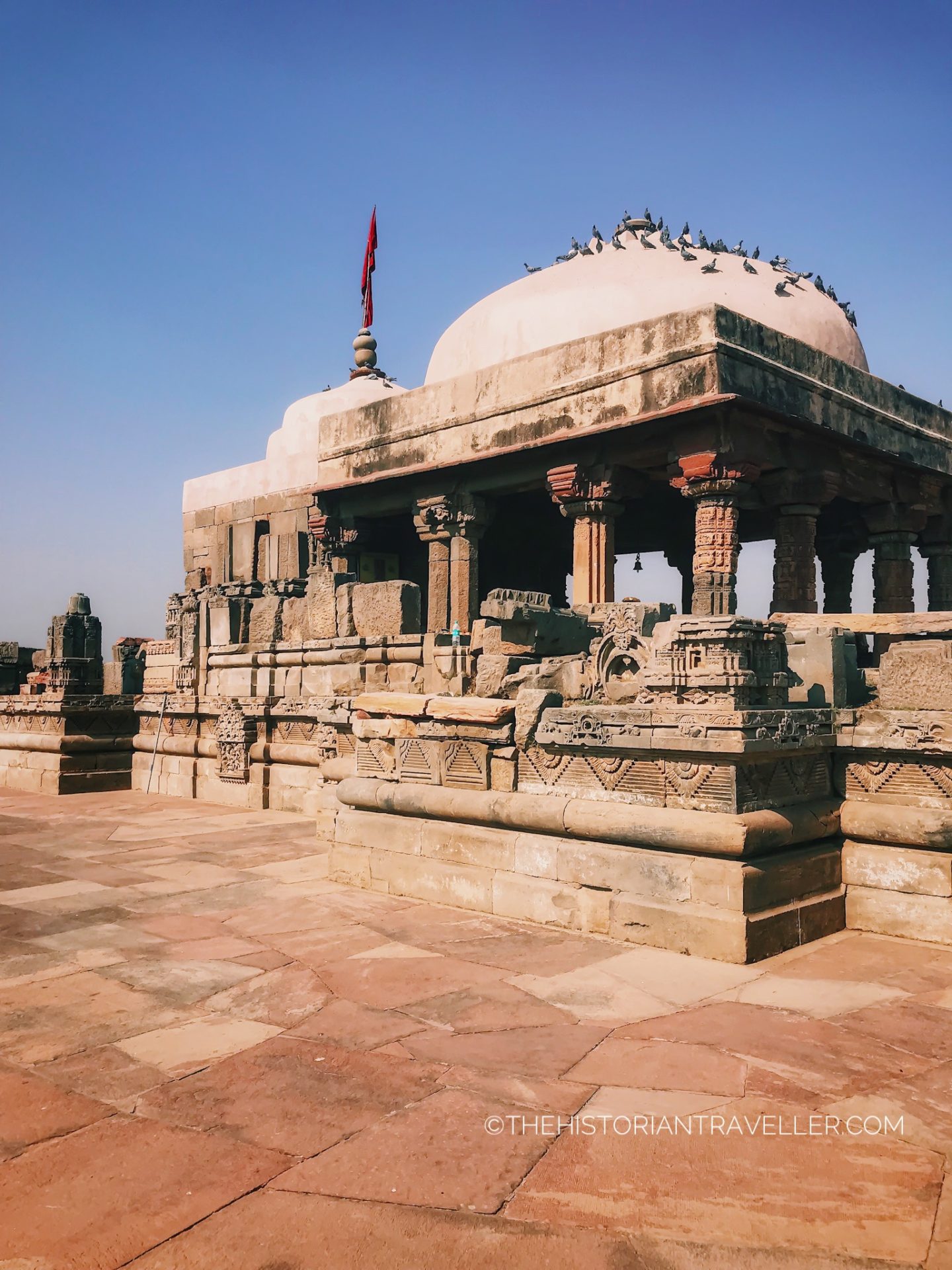
When exit the Chand Baori, don’t miss to pay a visit to the nearby temple of Harshat Mata. This that was built together with the Step-Well by King Chand to honour the goddess who brought joy to the village. During ancient times, before visiting the temple, people washed their hands and feet into the water of the Chand Baori Step-Well as a ritual. In fact, for the Hindu religion, water is considered a sacred purifier from evil.
The fairytale ninth gate of Jaipur. The Patrika Gate
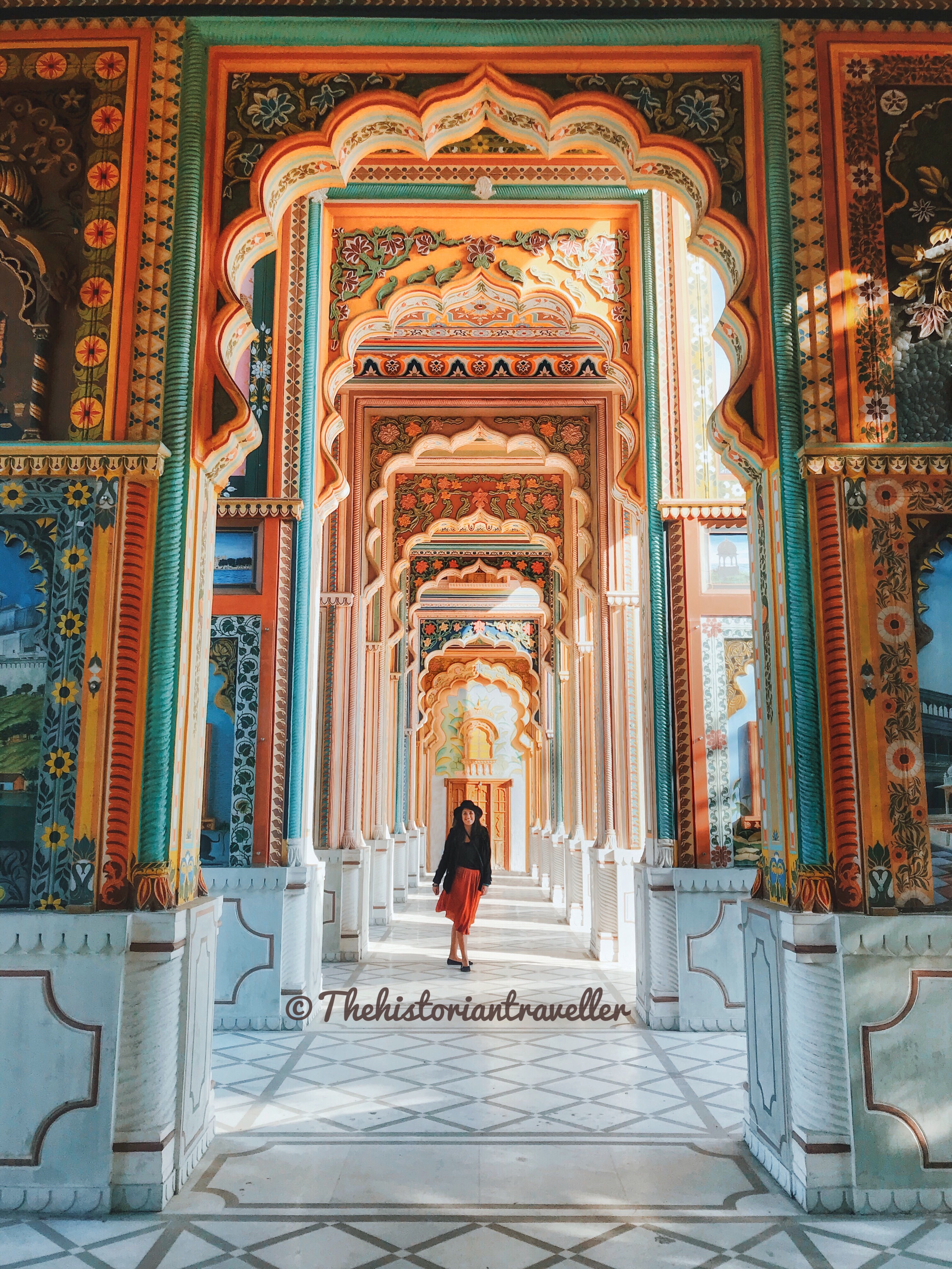
Far from the main Jaipur chaos, almost at the edge of the city, you will find the “ninth gate” to the Pink city. This is famous as the Patrika Gate.A mind-blowing architectural piece built just in 2009. The Patrika Gate introduces people to the largest circular garden of Asia (something you cannot certainly miss while in Jaipur!).
I think this was one of my favourite places because this piece of architecture it isn’t just a gate, but it unleashes feelings belonging to a mysterious exotic past. A period in which India was not only that beautiful chaotic country we know today, but it was also forests, wilderness and timeless fairy-tales.
The Patrika Gate represents exactly this. A remembrance of the Rajasthan’s glorious past painted in hundreds of beautiful details across this architectural jewel. Moreover, architects calls the number 9 as the soul of the gate. In fact, there are Nine pavilions, which are nine feet large etc. The gate is, indeed, the ninth one surrounding the city.
Best time to visit the Patrika Gate
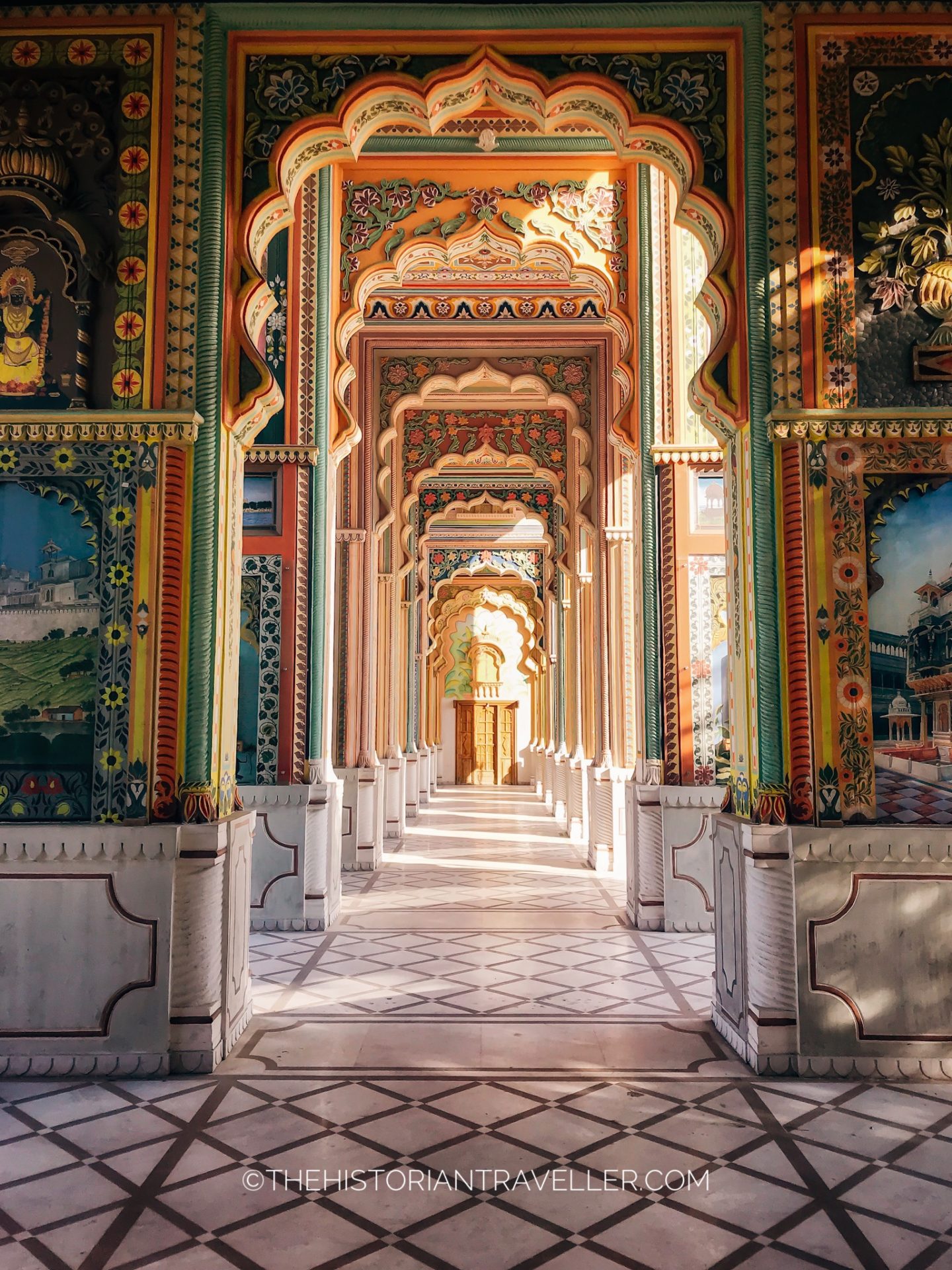
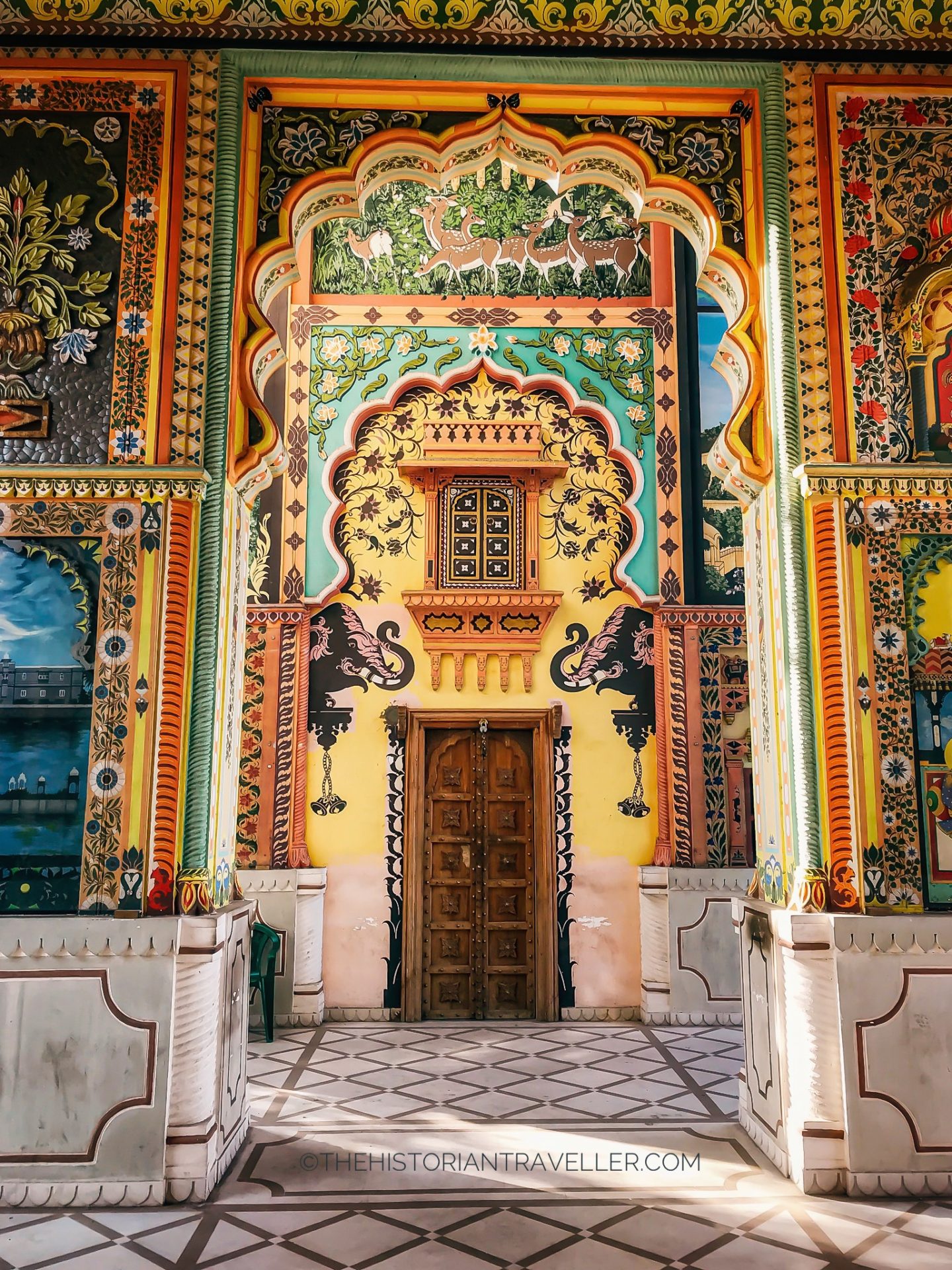
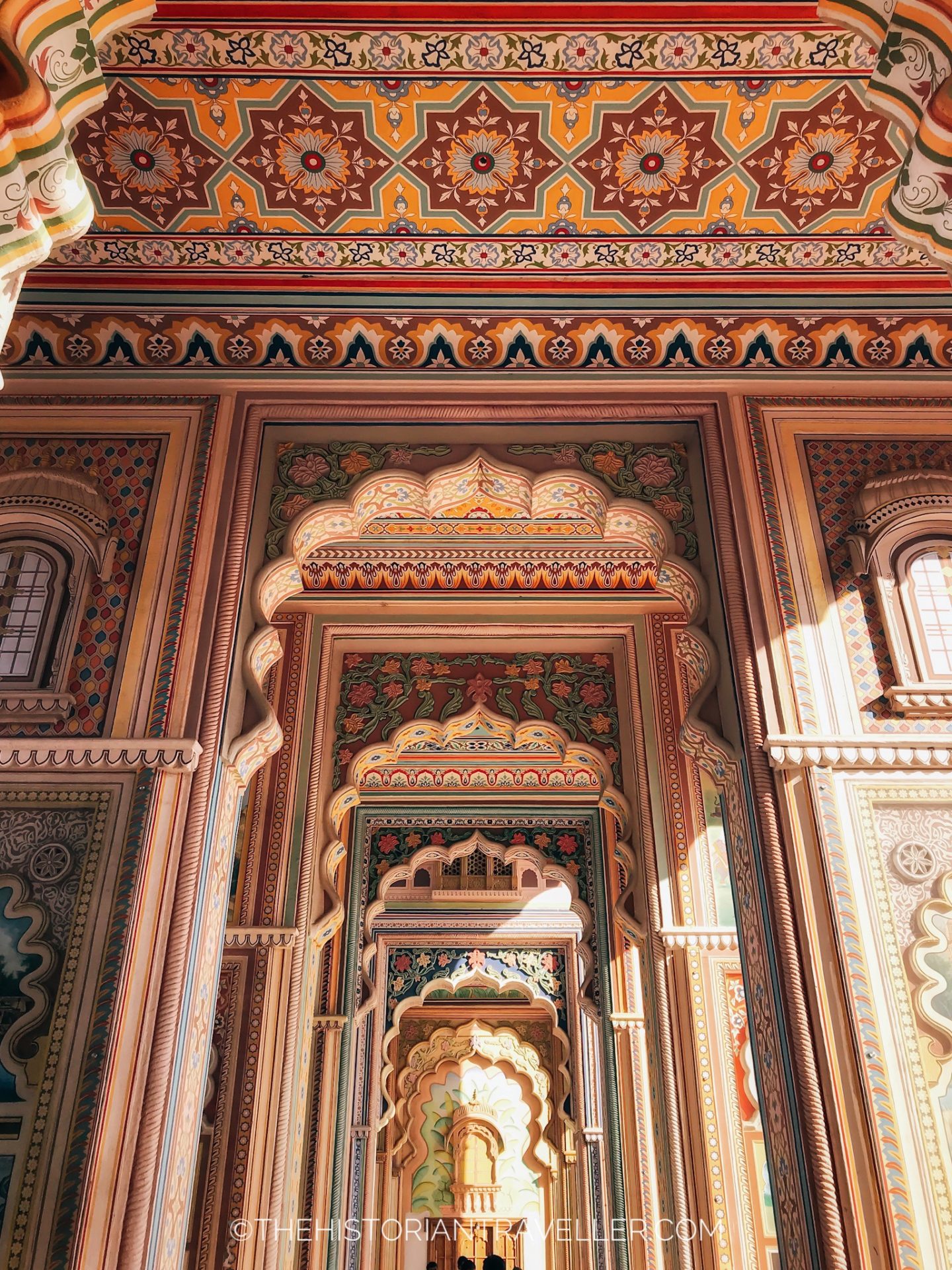
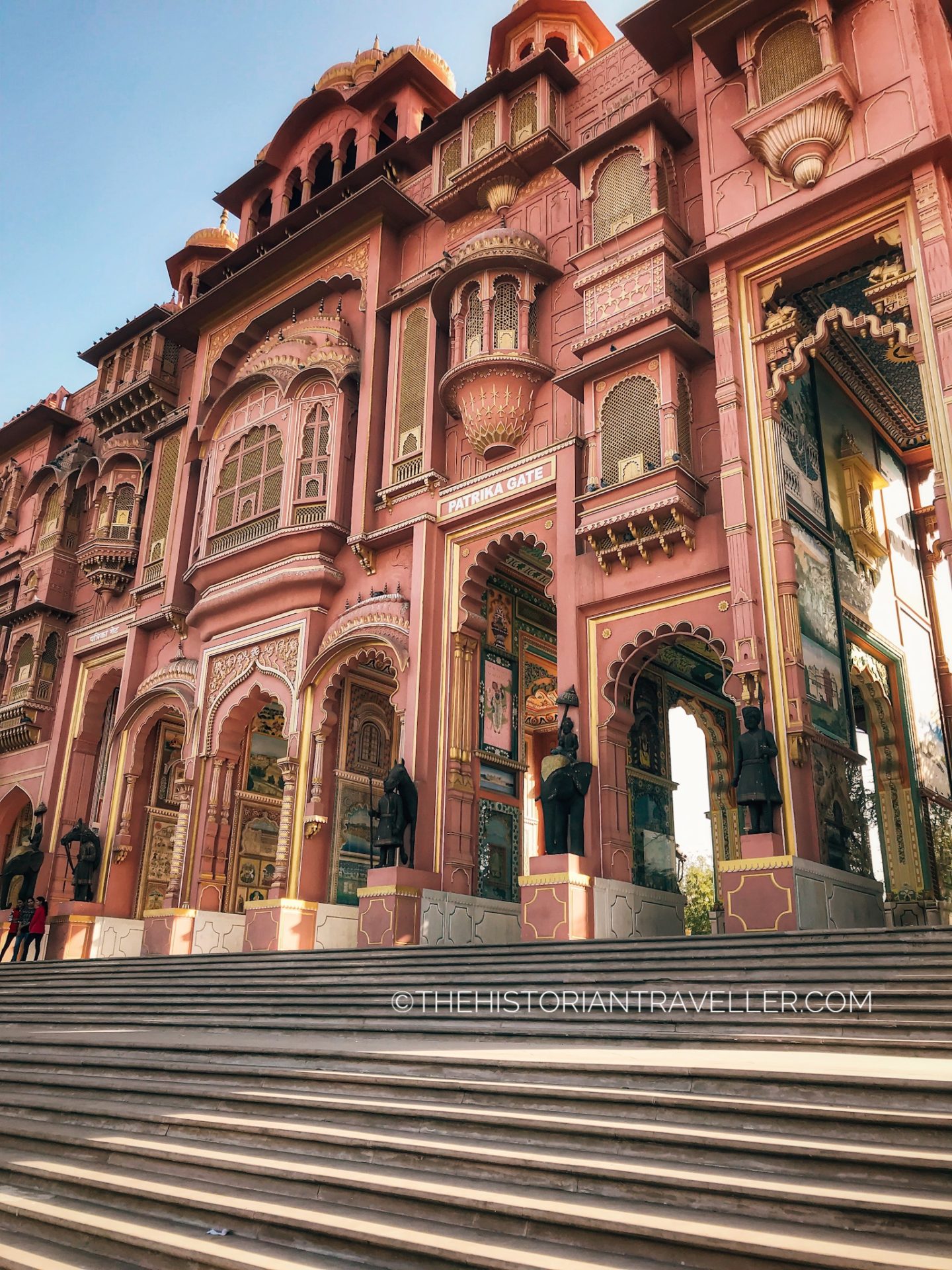
The best time to visit the Patrika Gate is mid-afternoon (between 4-5 pm) when the sun is a bit lower and the light plays with the colours of the paintings creating beautiful colours.
Tips and Scam alert
It was difficult to convince our driver to leave us at the Patrika Gate. I don’t know why, but he was insisting that there was nothing to see in that side of the city. In fact, he called the circular gardens “just a roundabout”. I needed to be very firm about the fact that I wanted to go there (yes, most drivers in India tend to be very insisting if they think is better to go somewhere else).
Visiting the gate and the adjacent garden is FREE but stay alert for scammers nearby. Thanks to Instagram this place became quite popular and Indian scammers are well-aware of that. For example, I wanted just to have a picture of myself with the beautiful archways but a man was standing ALL THE TIME behind me, in every picture.
This made me quite nervous and uncomfortable. I tried to wait, I asked him kindly to move away. Nothing. I immediately found out he wanted money to stay away from my pictures. However, this happened because every nice girl with a flowing skirt wanted a picture alone there. Therefore, I let him stay and photo-shopped him later (same result – no stress).
Visiting the Jal Mahal
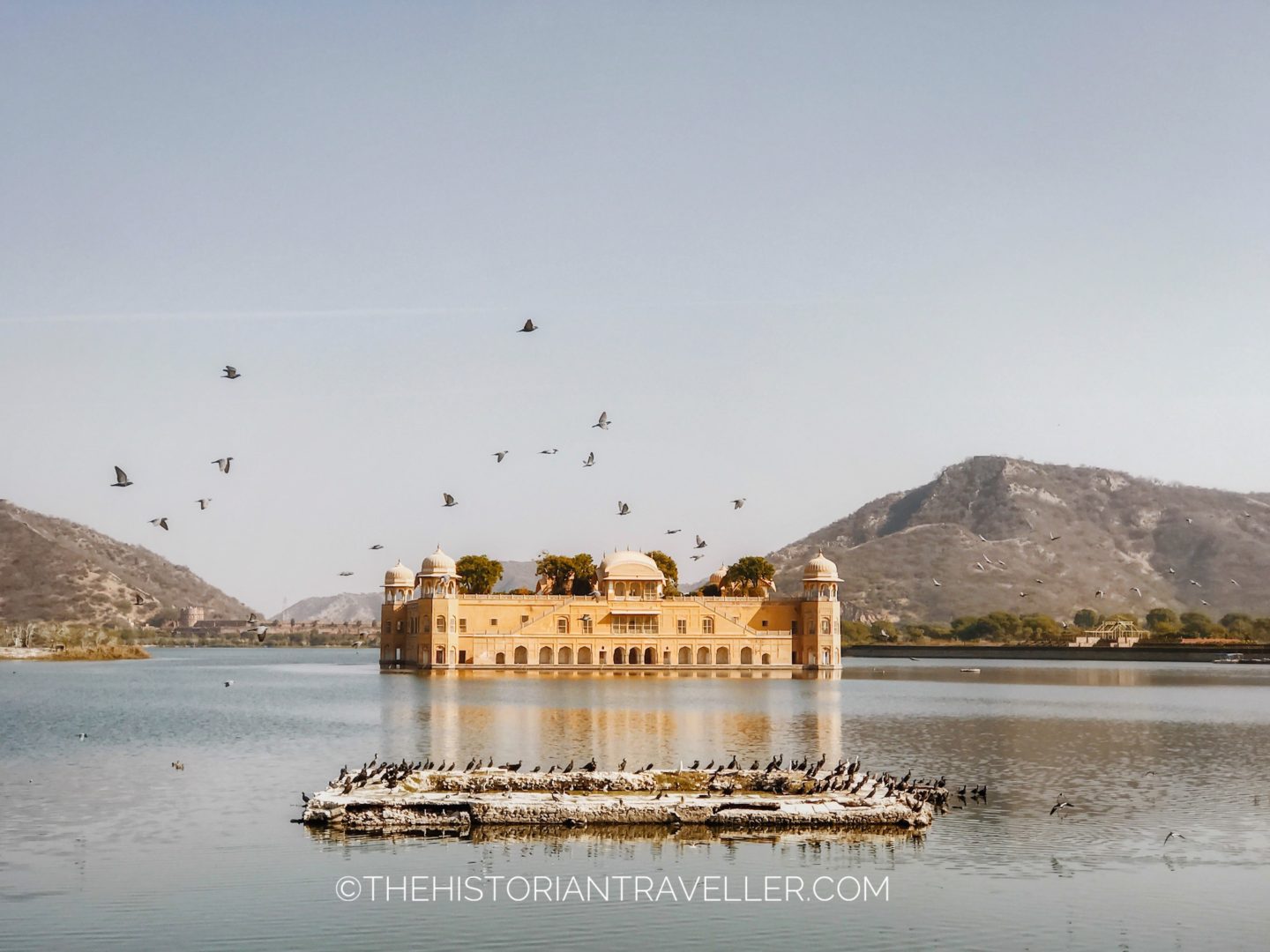
In the middle of the Man Sangar Lake in Jaipur there is a beautiful palace called Jal Mahal. The name literally means “Water Palace”. The Jal Mahal dates back to 1699 and it used to be a hunting lodge for the local Raja. During that period, the level of water was very low and the palace had a normal ground level access.
Nevertheless, the construction of a dam by the King of Amer changed the sort of the Jal Mahal. In fact, the amount of water storage flooding into the valley caused the submersion of the palace and its decline. What you can see today from the shores of the lake is just the last floor of this beautiful royal palace. There are, in fact, three others submerged floors underwater.
Practical Information
Visiting the palace is, unfortunately, strictly off limits. Until 2015, little gondola-style boats were navigating around the lake to allow visitors to get a closer look of the Jal Mahal. Nevertheless, due to the fragility of the environment and the presence of a bird sanctuary in the terrace of the palace, is no longer possible to take a boat tour. The only way to see the palace now is from the banks of the Man Sagar Lake. Without crowd, the visit will not take more than 30 mins.
Day 2 – Exploring the Pink City
Our second day in Jaipur was packed with activities. The morning started with a walk around the city Then we visited the City Palace (A) and Hawa Mahal (B). At lunchtime we boarded a tuk tuk that left us at the iconic Café Palladio (C) were we had a delicious lunch. In the afternoon, we took an Uber to the mysterious Galta-ji Monkey Temple and completed our day itinerary at the beautiful Sisodia Garden (D). My suggestion is to start early, stay hydrated and take a good lunch break to have energy for the afternoon activities.
First stop: exploring the City Palace
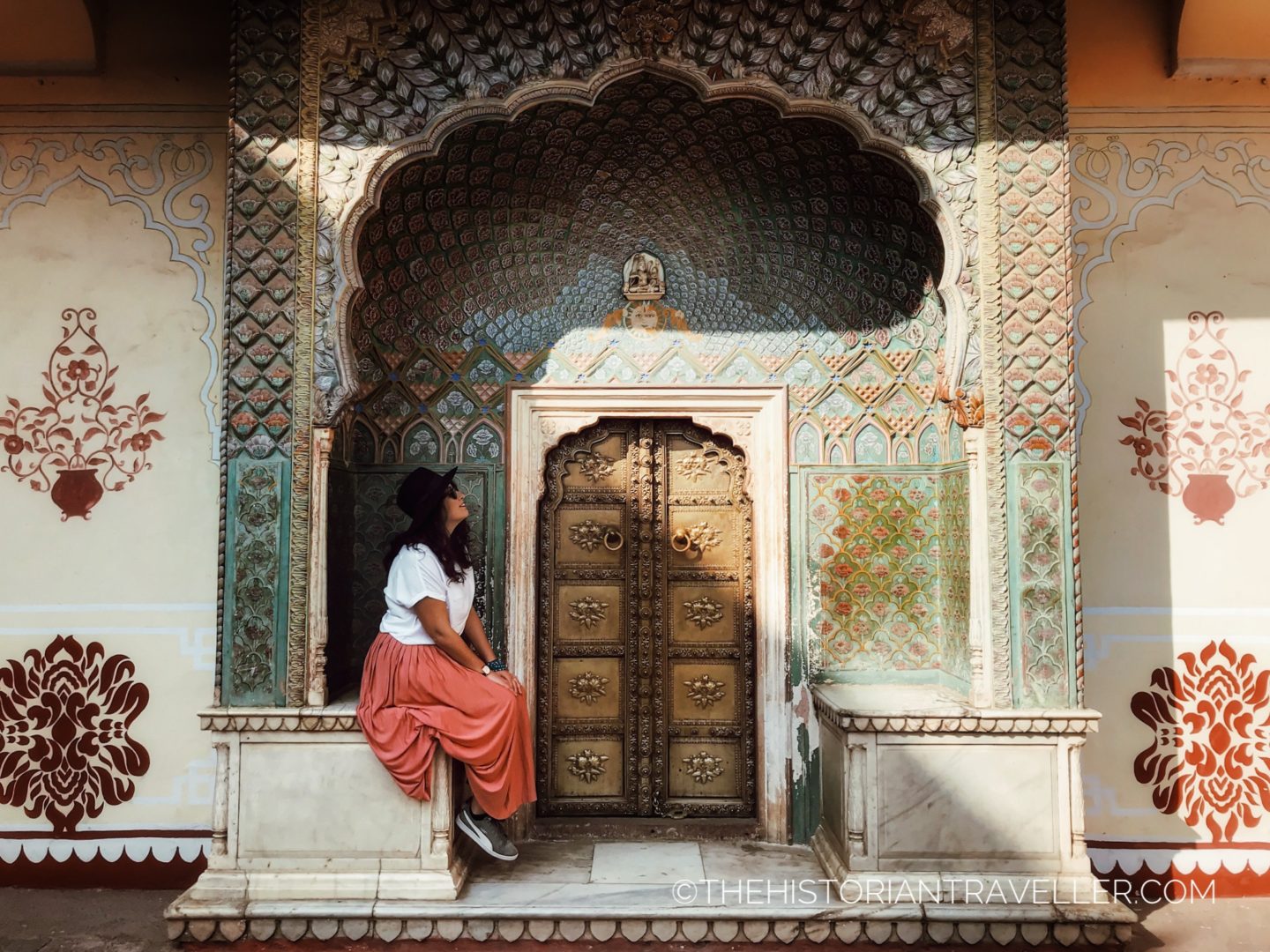
The City Palace of Jaipur is one of the main attractions in the Pink City. For this reason, it’s quite popular among tourists, with long queues at the ticket counter. The City Palace is actually a complex of buildings, pavilions and gardens belonging to the royal family of Jaipur (that still lives there). The ruler of Amer, Jai Singh II, who built the outer walls and the city of Jaipur, initiated the palace in 1729. The most visited structures of the City Palace are the Chandra Mahal (pictured above), the City Palace Museum and the Shri Govind Dev Temple.
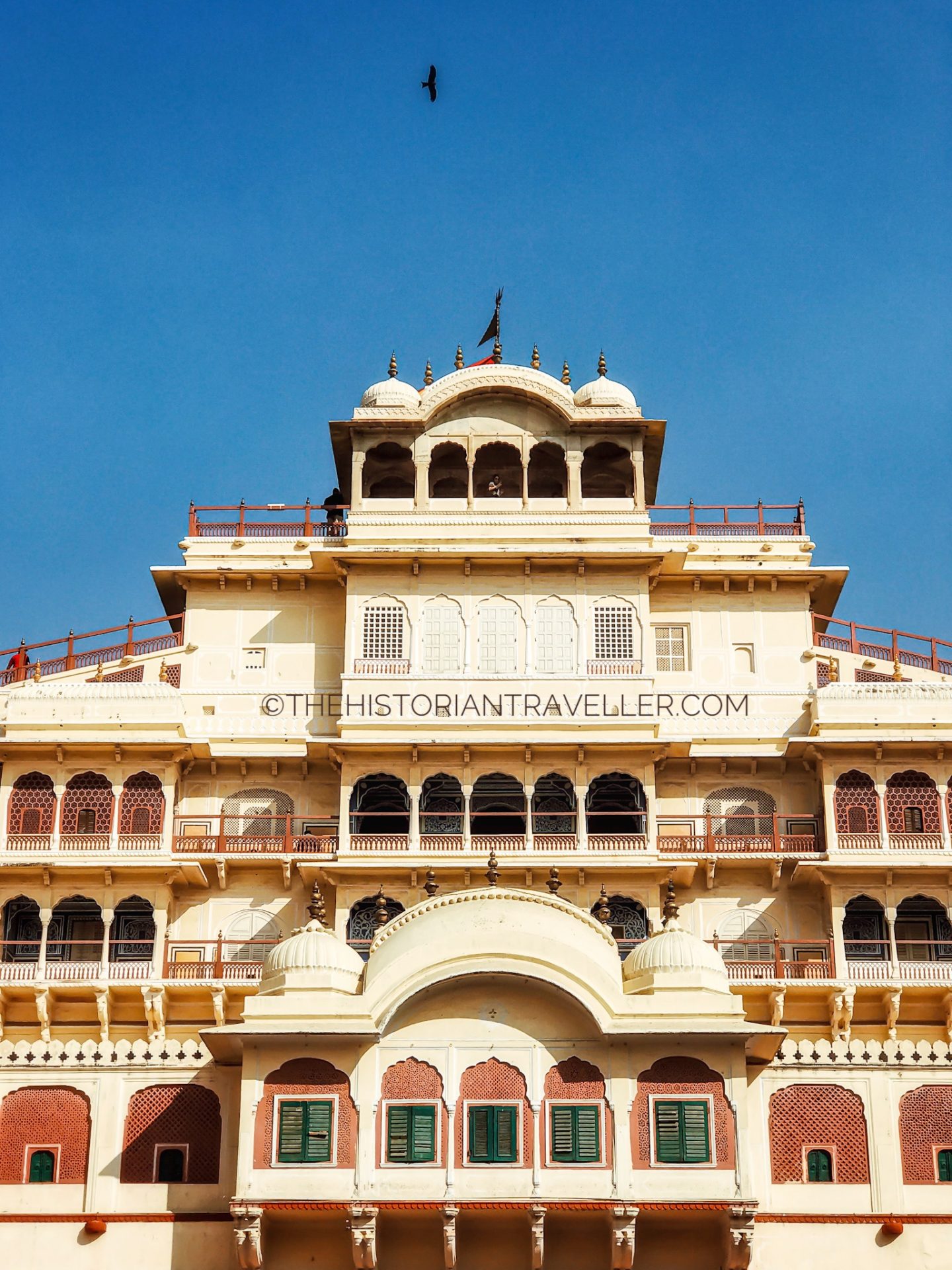
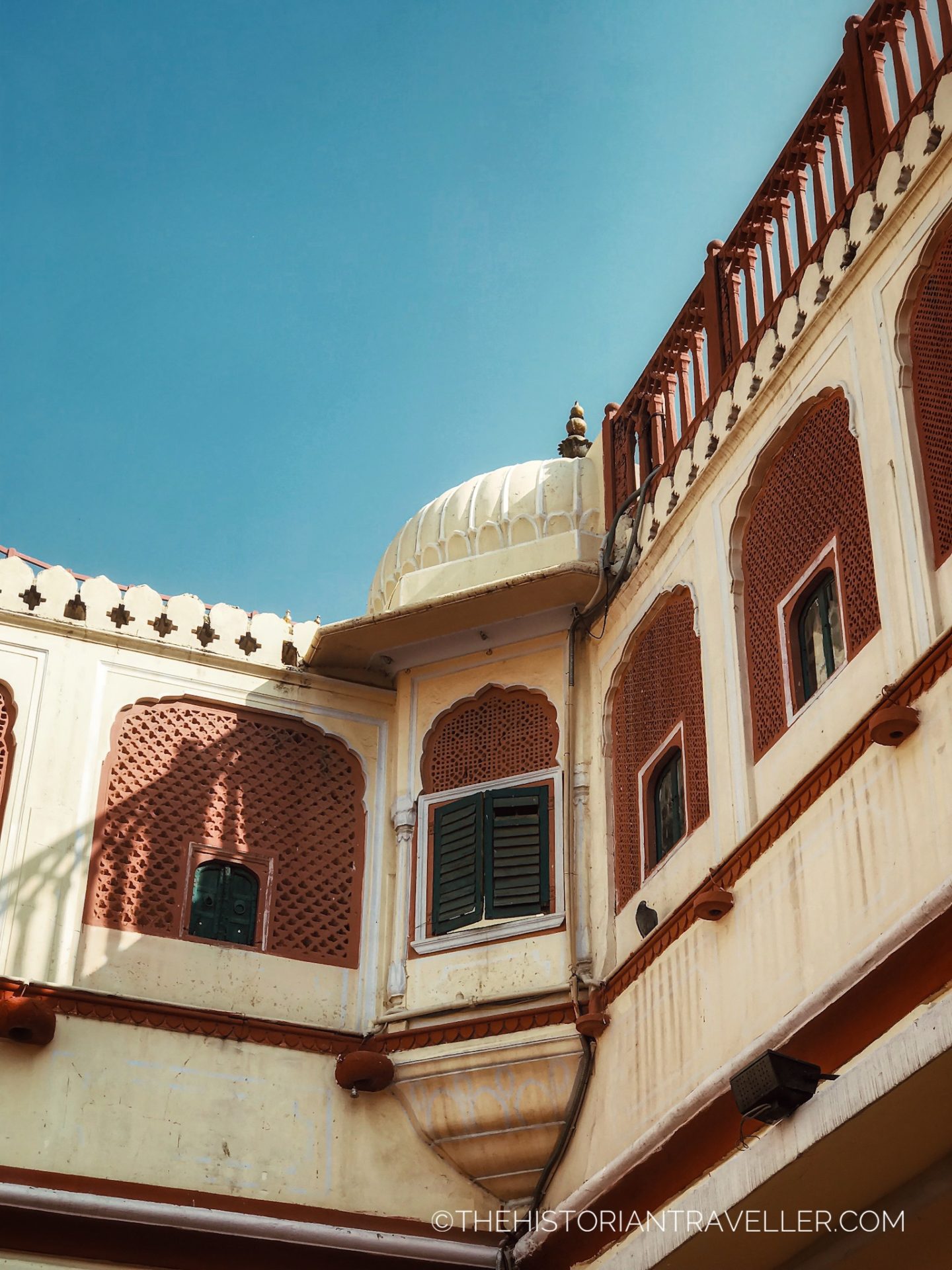
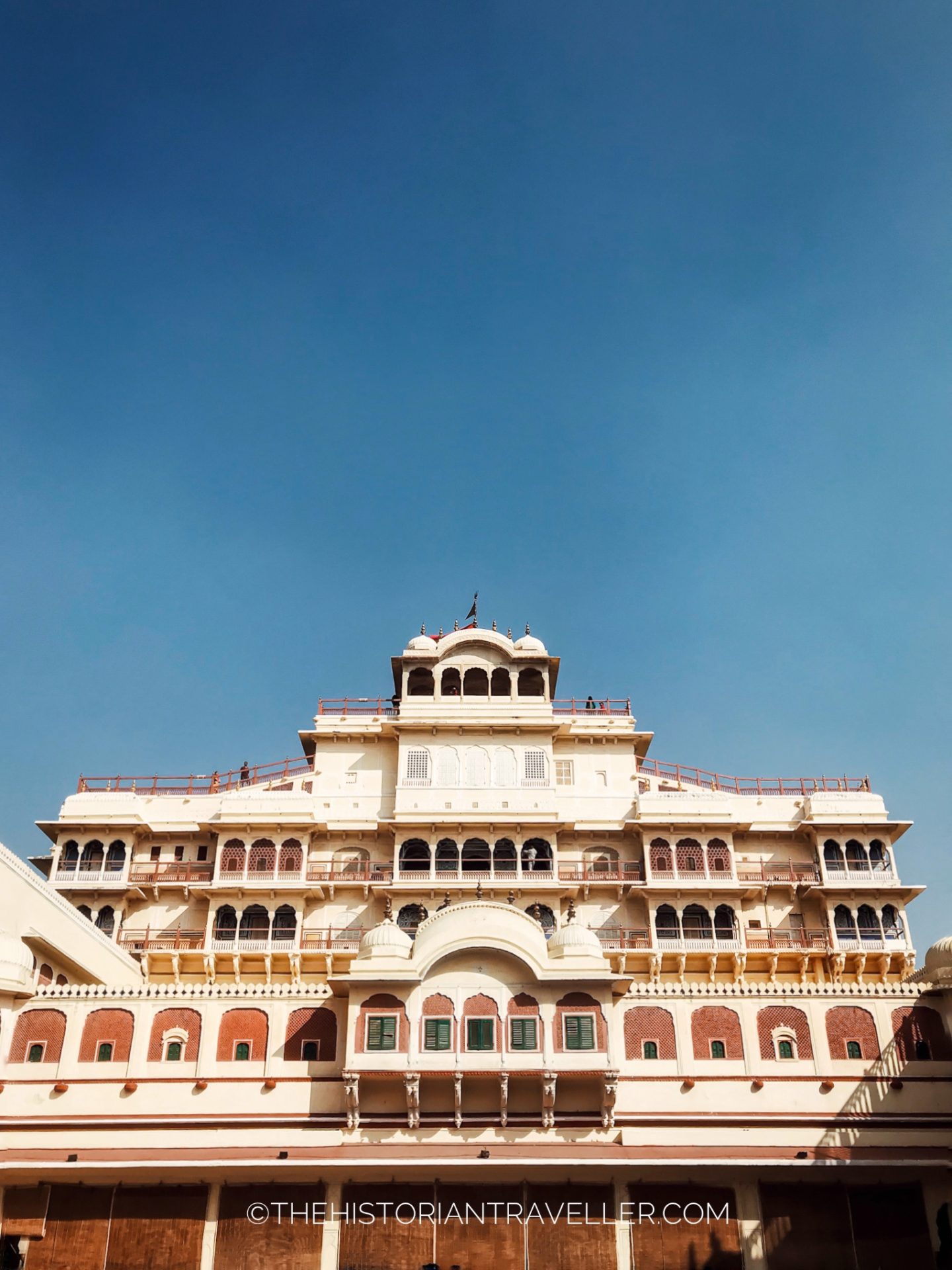
The Chandra Mahal is the oldest structure of the palace. It includes seven floors of beautifully decorated rooms and the worldwide famous Pritam Niwas Chowk or “Courtyard of the Beloved”. This is a beautiful courtyard that features 4 uniquely carved gates each one representing a season and a different divinity. This courtyard was used for dance performances seen by the royal family from the balconies of the Chandra Mahal.
Best time for visiting the City Palace
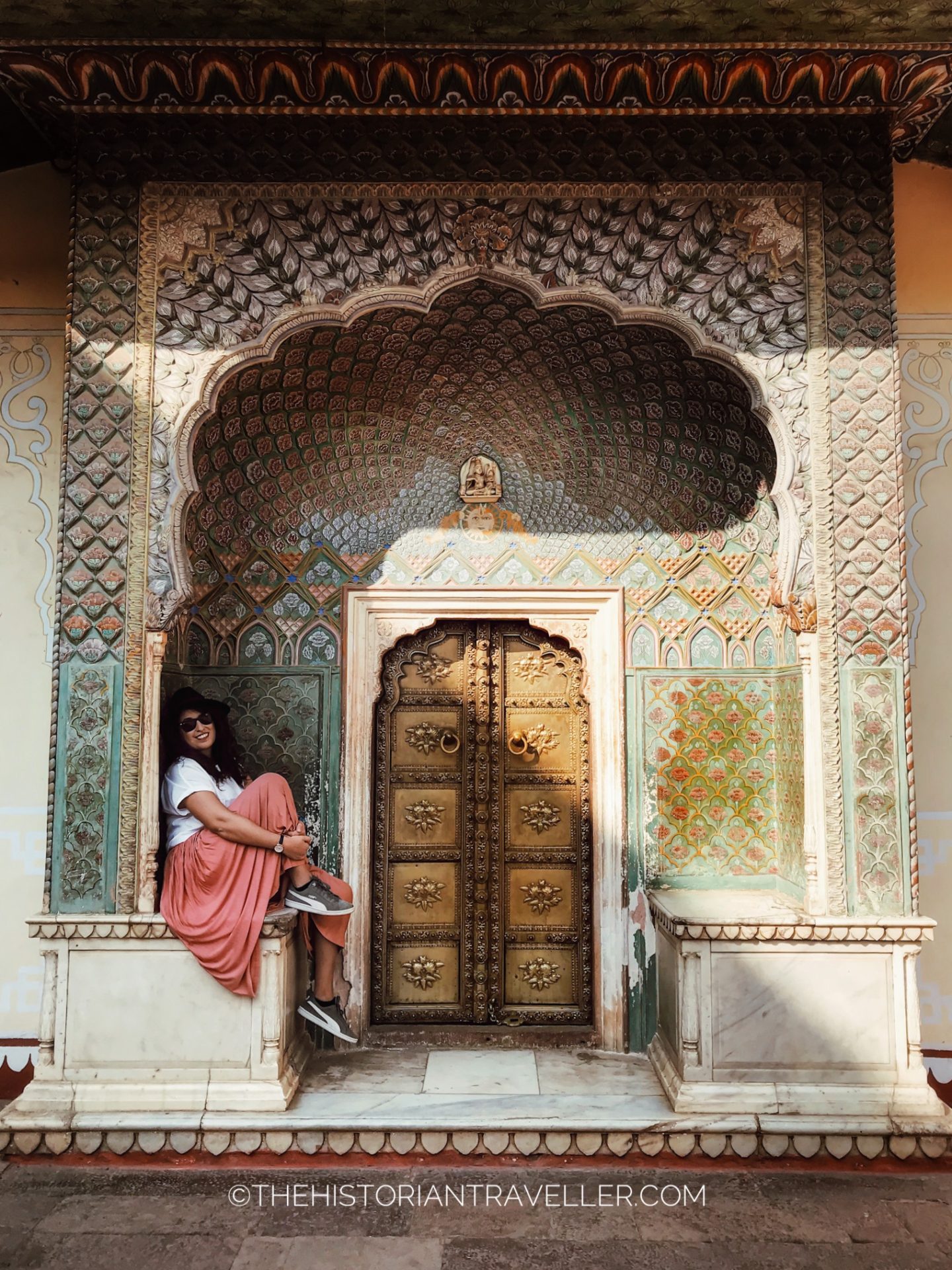
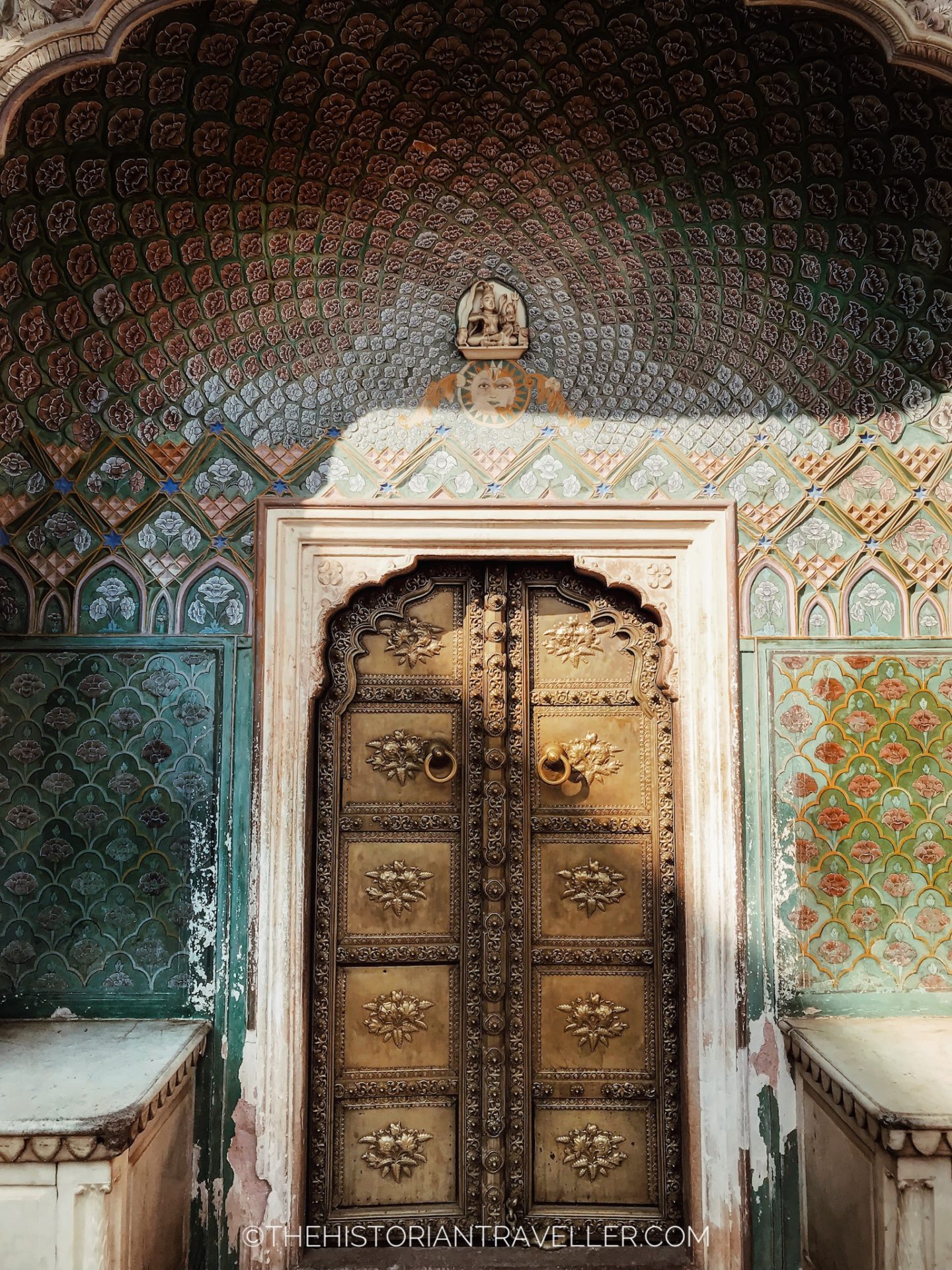
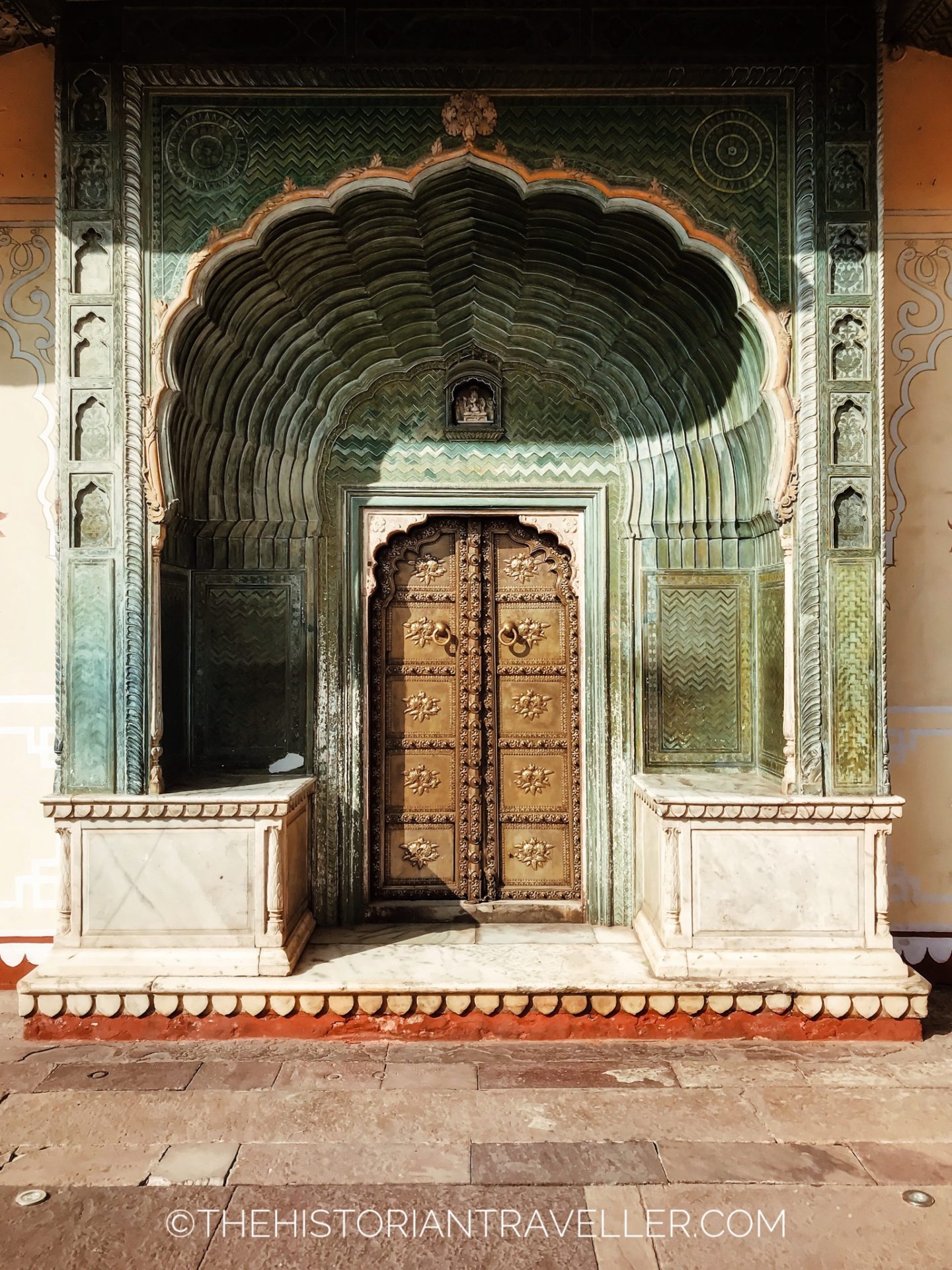
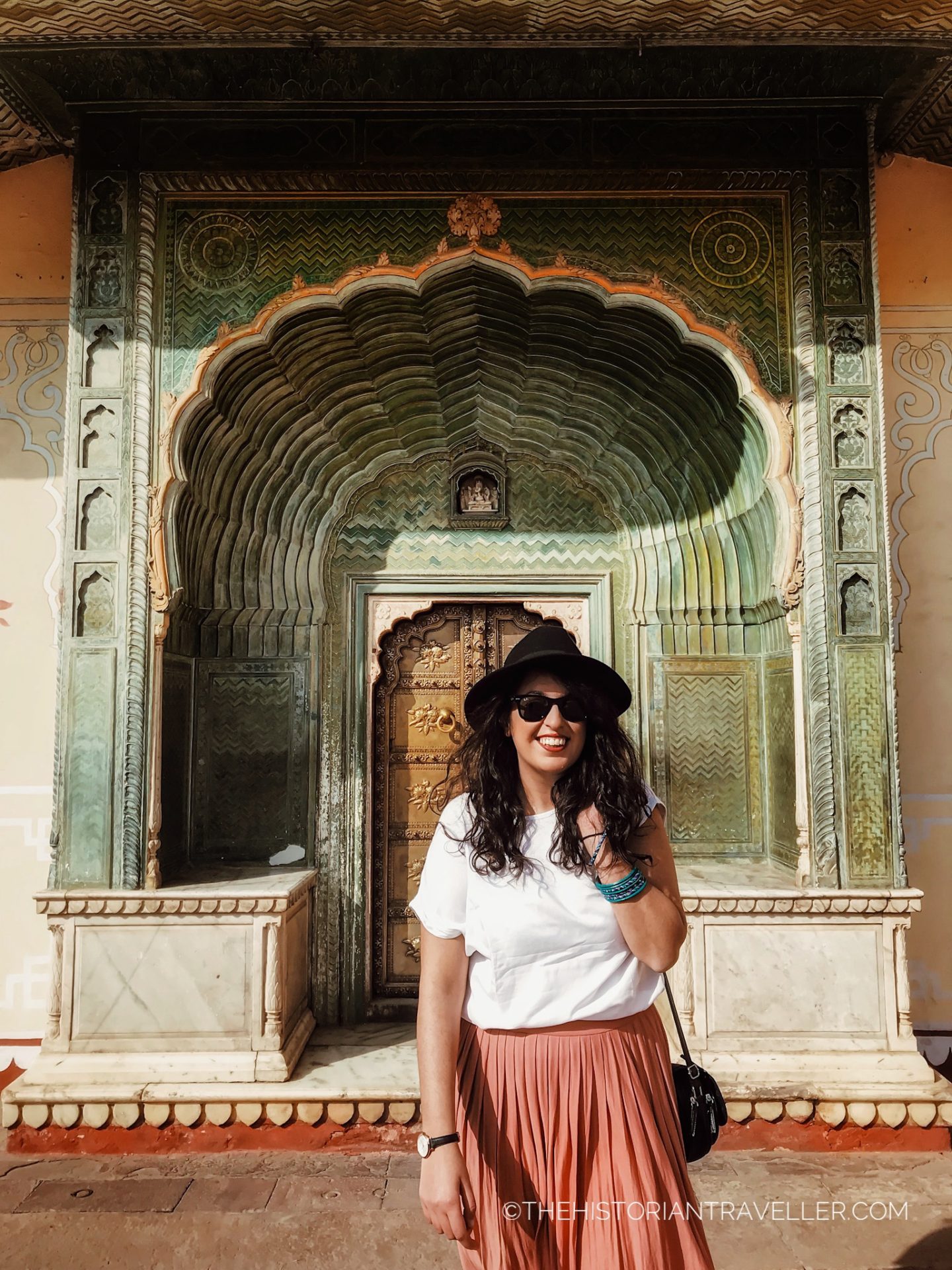
I suggest you to visit the palace at early morning, before other places. Indeed, the palace is one of the most visited places in Jaipur and tend to be quite crowded at mid-morning. Moreover, if you are a picture-addicted and want beautiful pictures for your Instagram, when you arrive, go straight to the Chandra Mahal courtyard of the beloved. In fact, this is the most crowded places of the entire complex and if you hope to have a picture with the iconic doors is better to arrive before the others. You can easily spend a half-day wandering around the timeless courtyards and inside the palace’s eighteenth-century walls without never get tired.
Practical Information
General entry to the City Palace costs ₹700 (£6.70). This gives you access to the main ground of the complex. You can visit the courtyards, the armoury and the museum and the Royal Cenotaphs. However, if you want to visit also the private rooms of the royal residence, you have to purchase a different ticket sold at the entrance gate. There are two types of tickets, one called Royal Grandeur costing ₹2,000 (£19.40) and one called Royal Splendour costing ₹ 2,500 (£25). The Royal Grandeur gives you access to some of rooms of the Chandra Mahal (with a guided tour). The Royal Splendour ticket gives you access to all the rooms and visitable sections of the City Palace (with a guided tour).
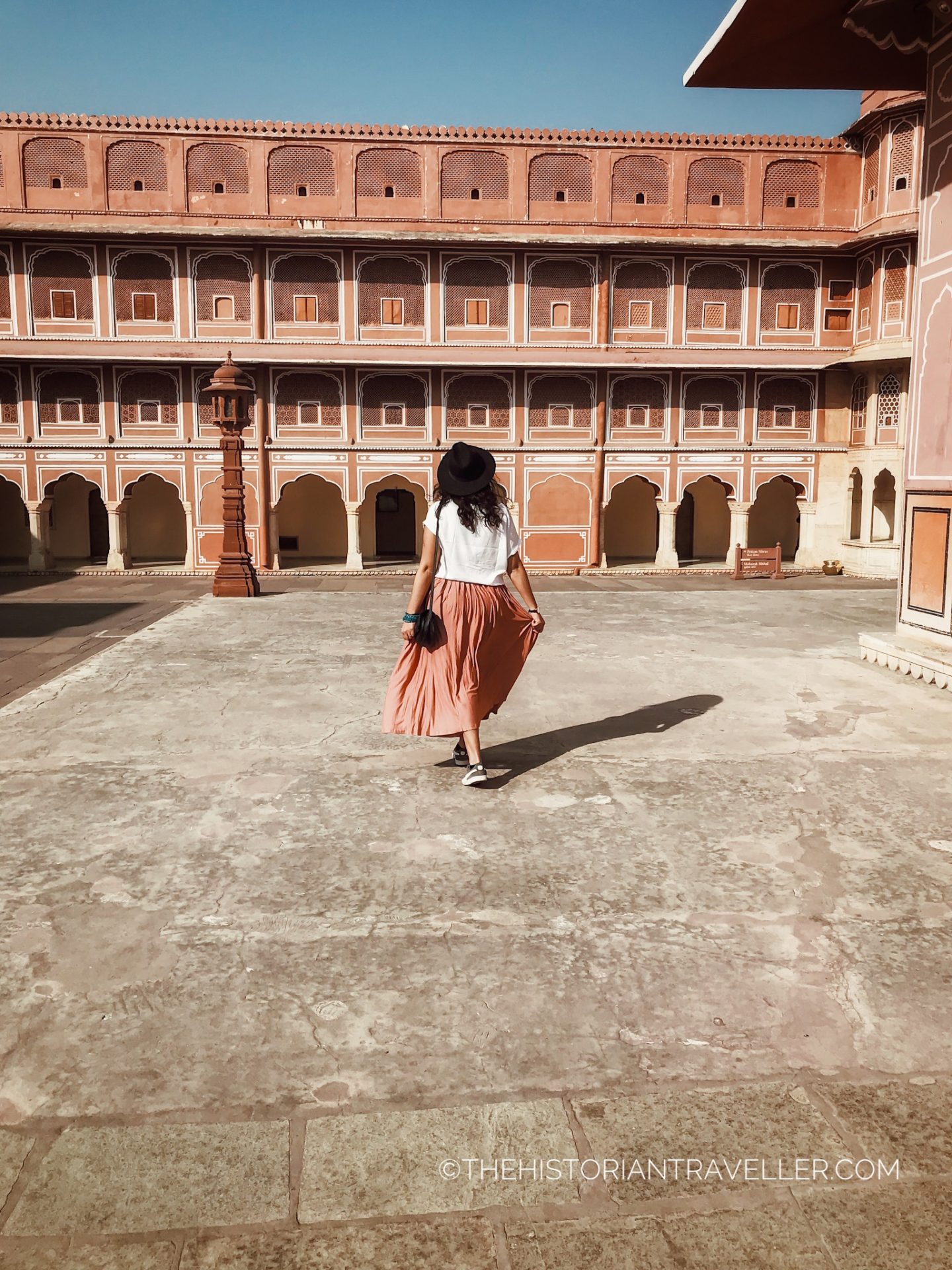
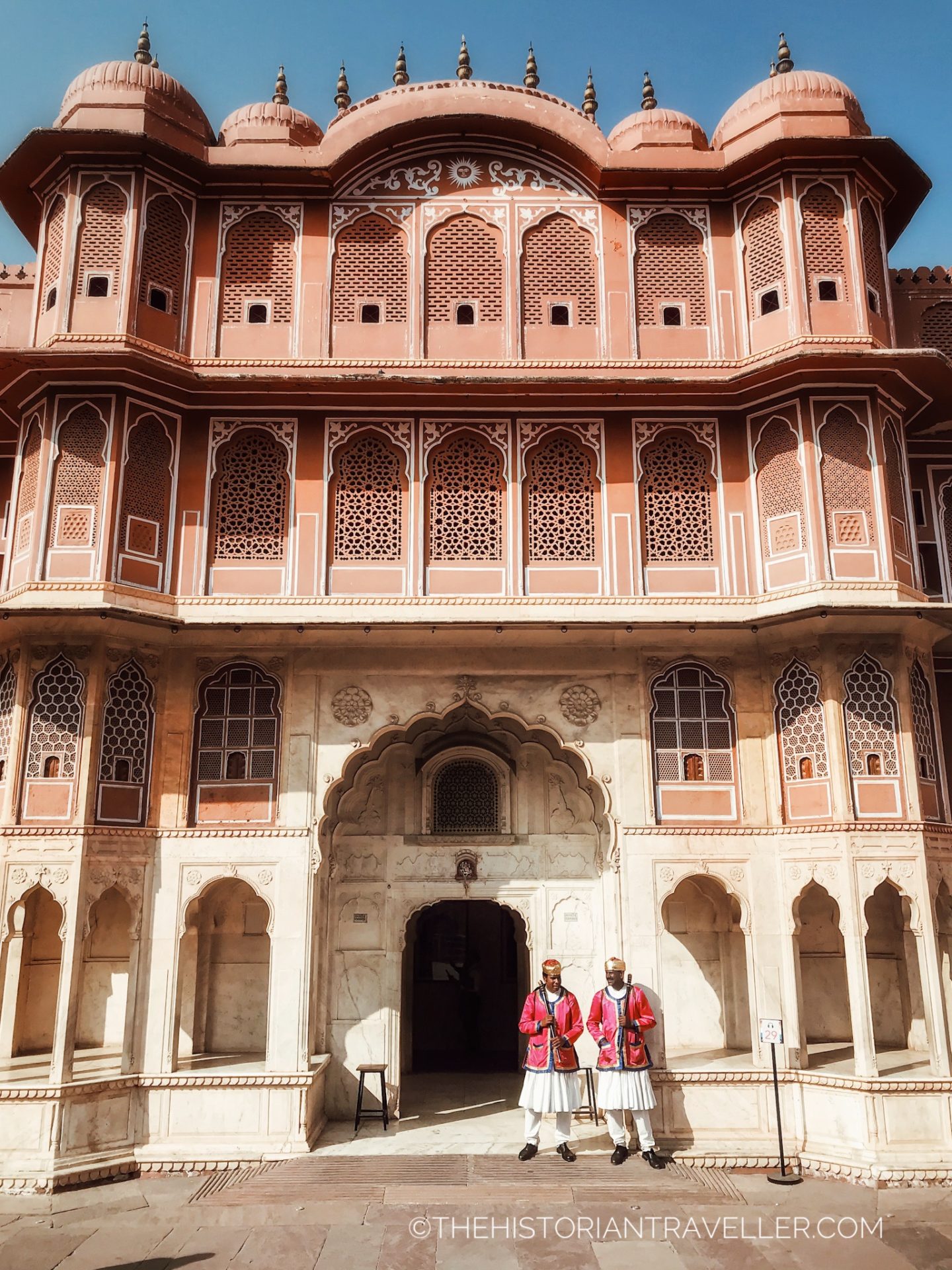
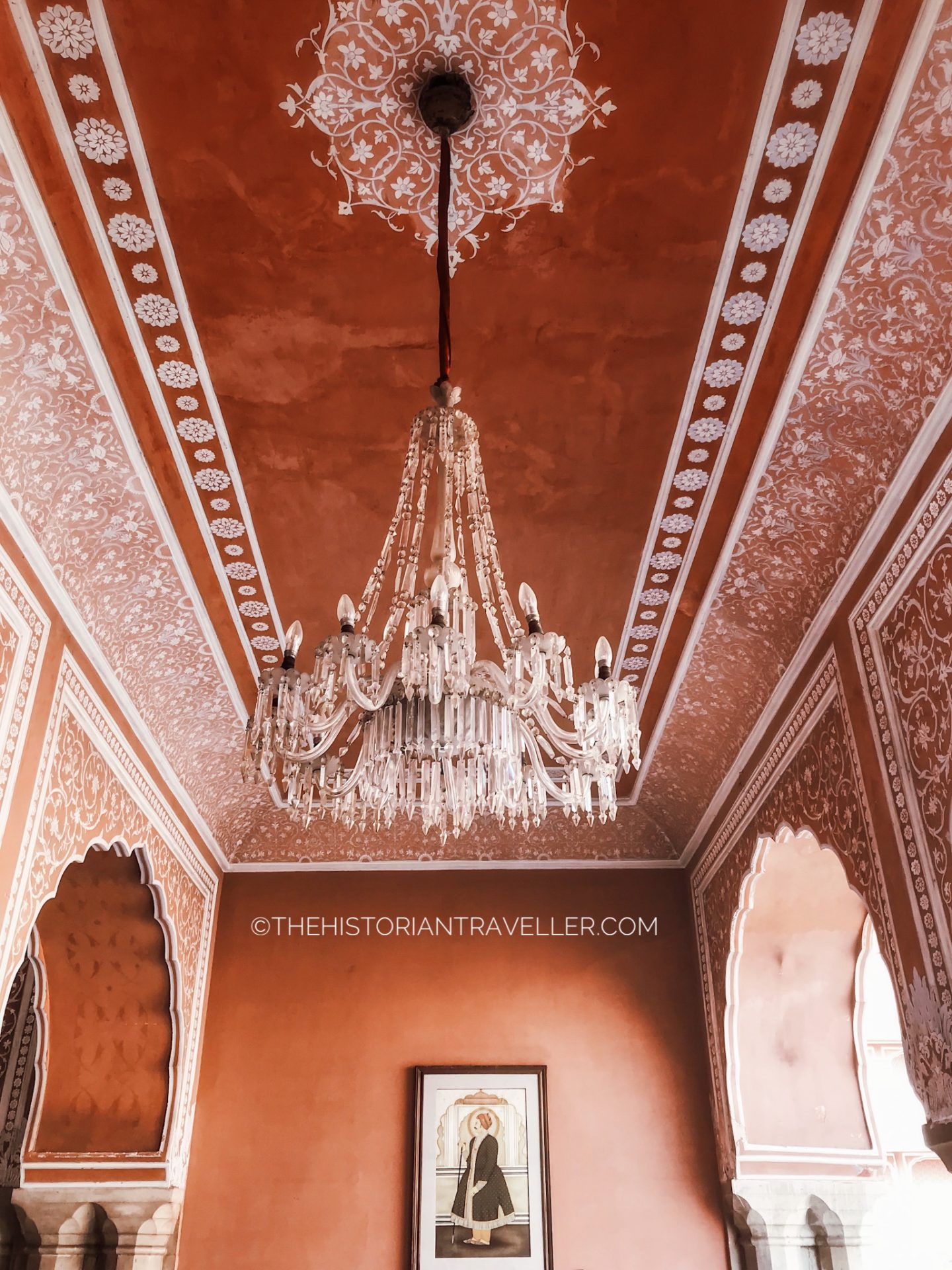
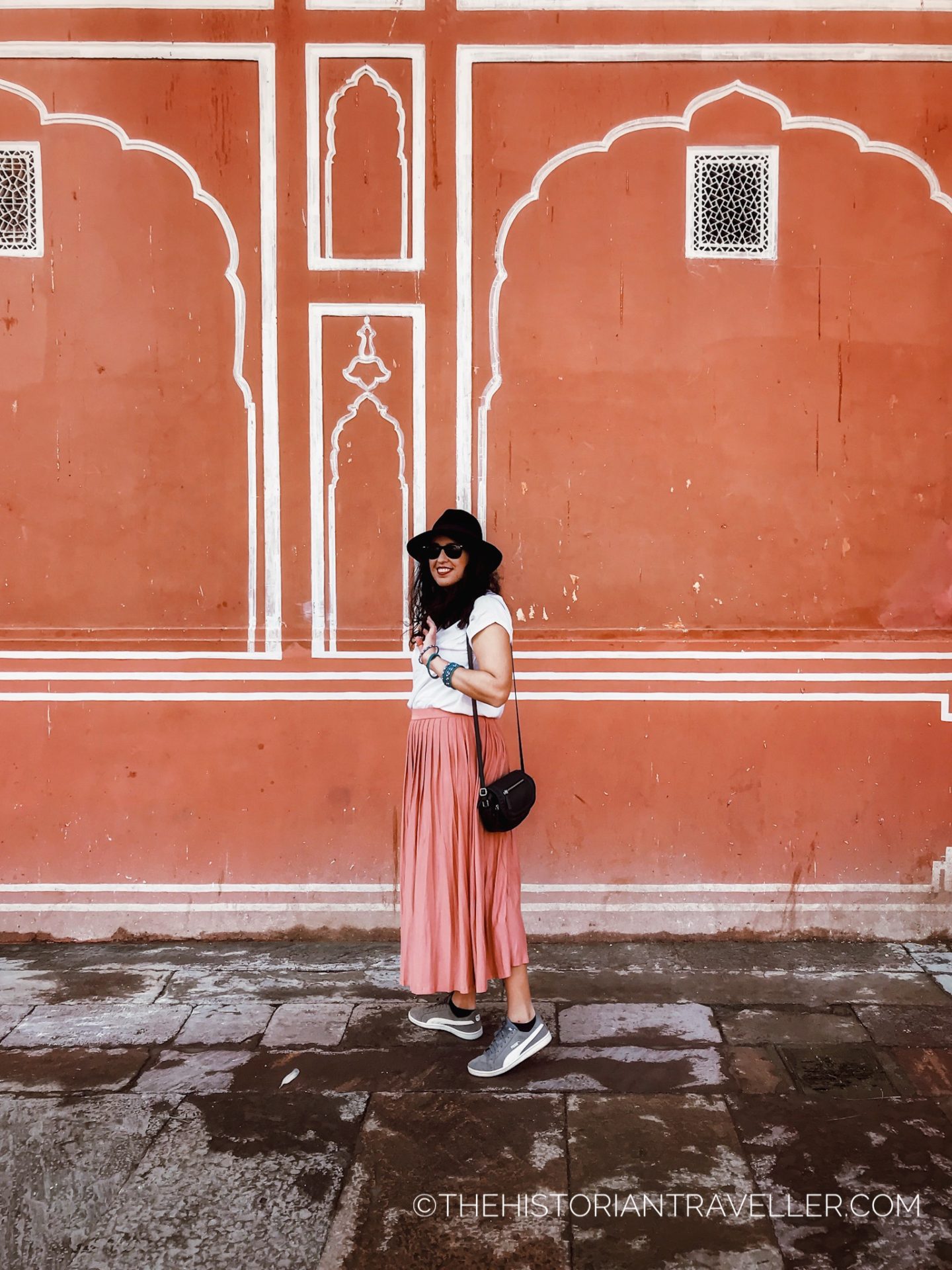
To note that you can book online ONLY the composite basic ticket. You can do it here. If you want one of the two special tours, you have to add these ticket after and in person at the ticket counter. This because some of the rooms might not be available on the day you visit (particularly if the royals are on site) so they might change the tours at the last minute.
How long time do I need to visit the City Palace?
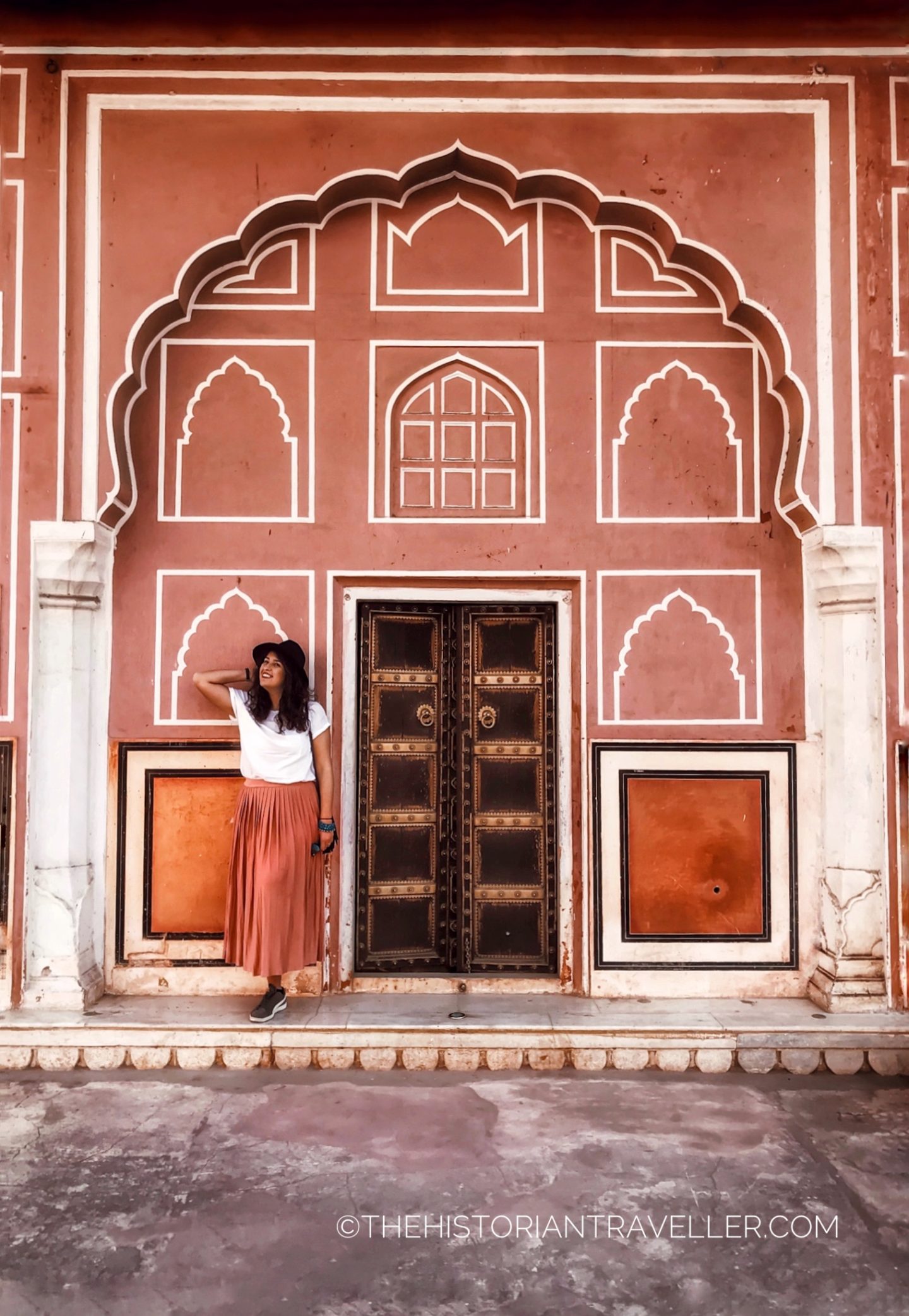
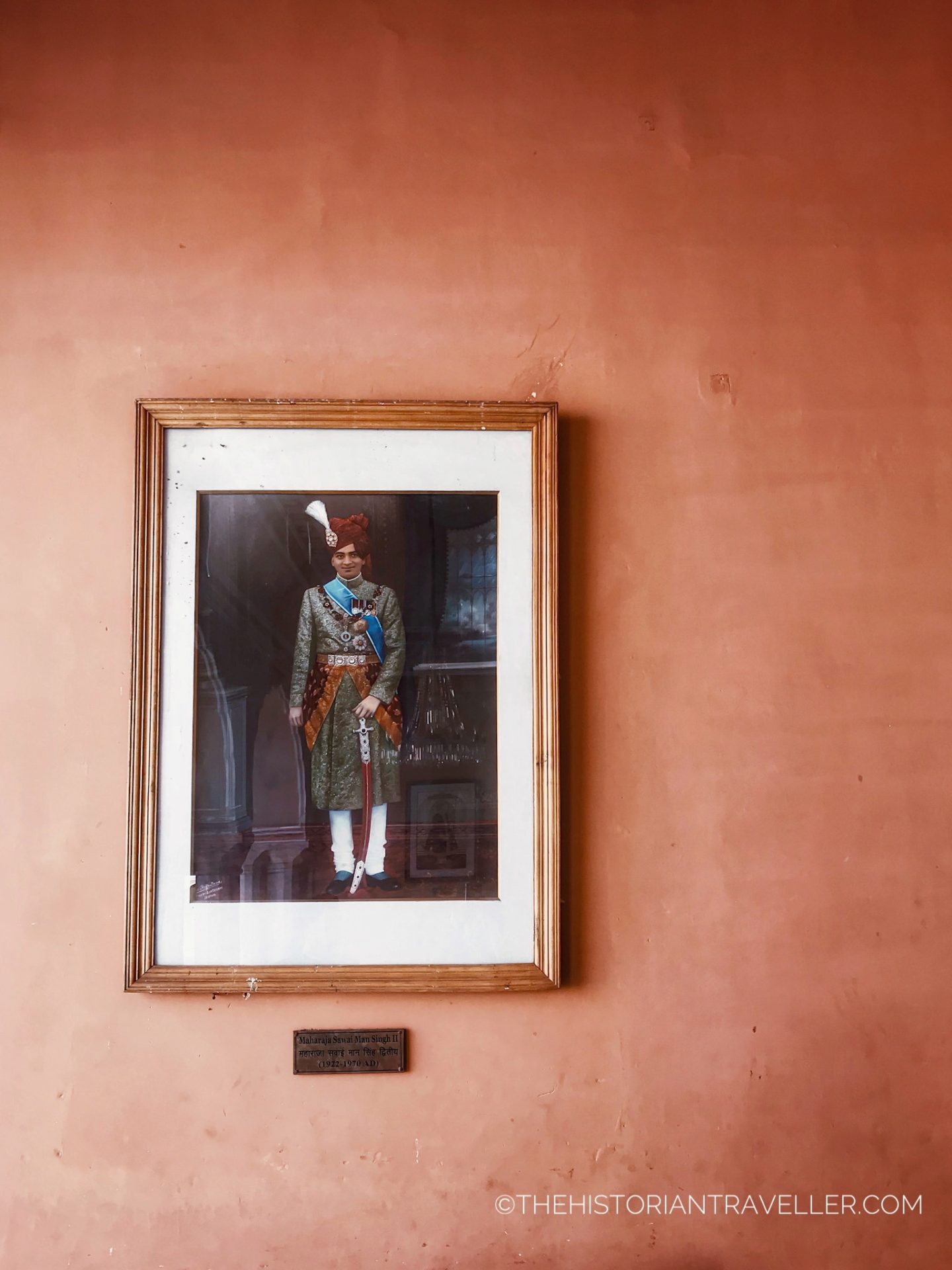
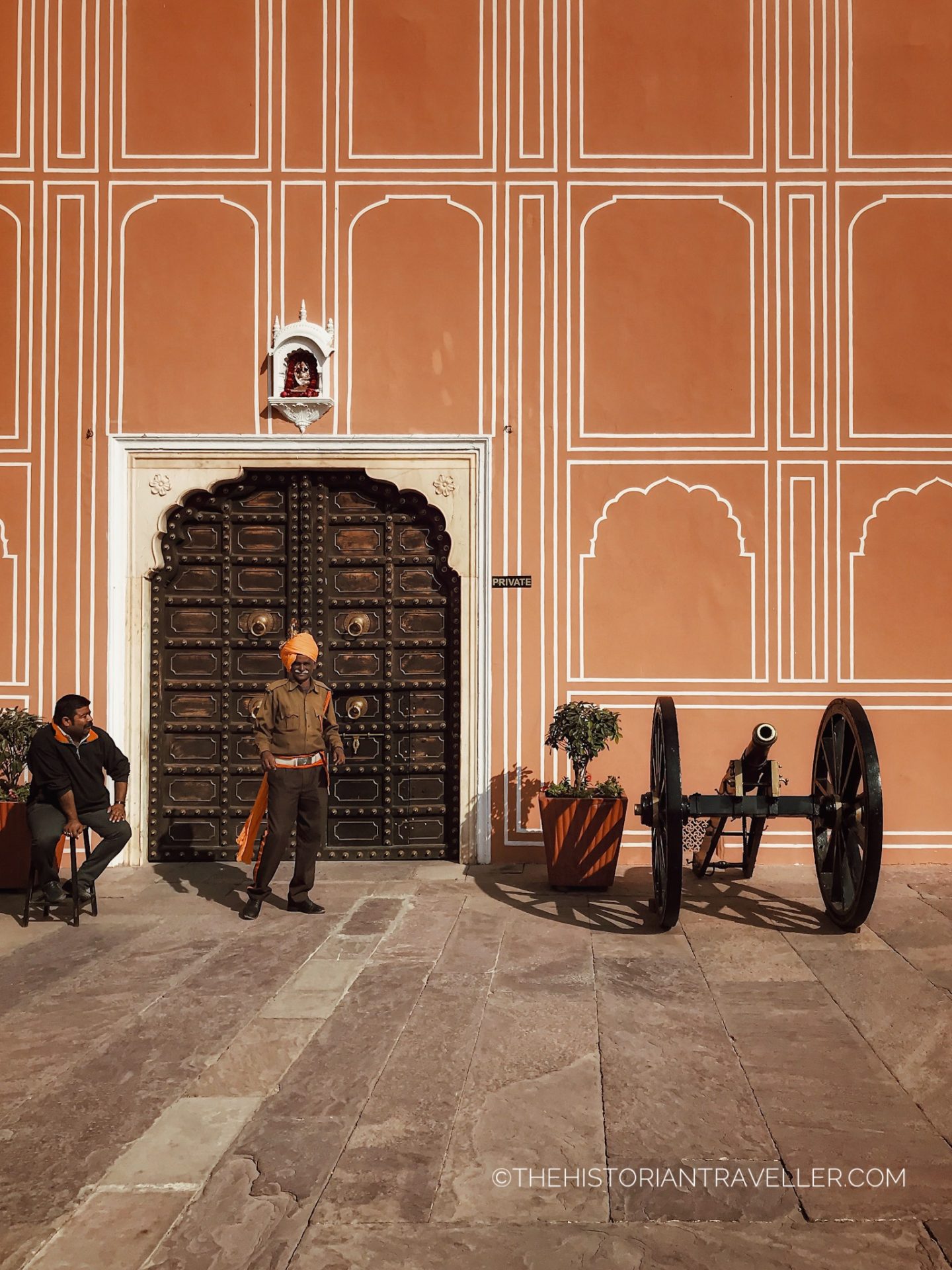
If you buy the composite basic ticket (like I did) you will need about two hours to visit all the visitable parts. However, if you have also one of the special tickets you will likely need some additional hours because the visits are organised at specific times. Therefore, is better to keep 3-4 hours free for the whole visit.
Second stop: be enchanted at the magnificent Hawa Mahal
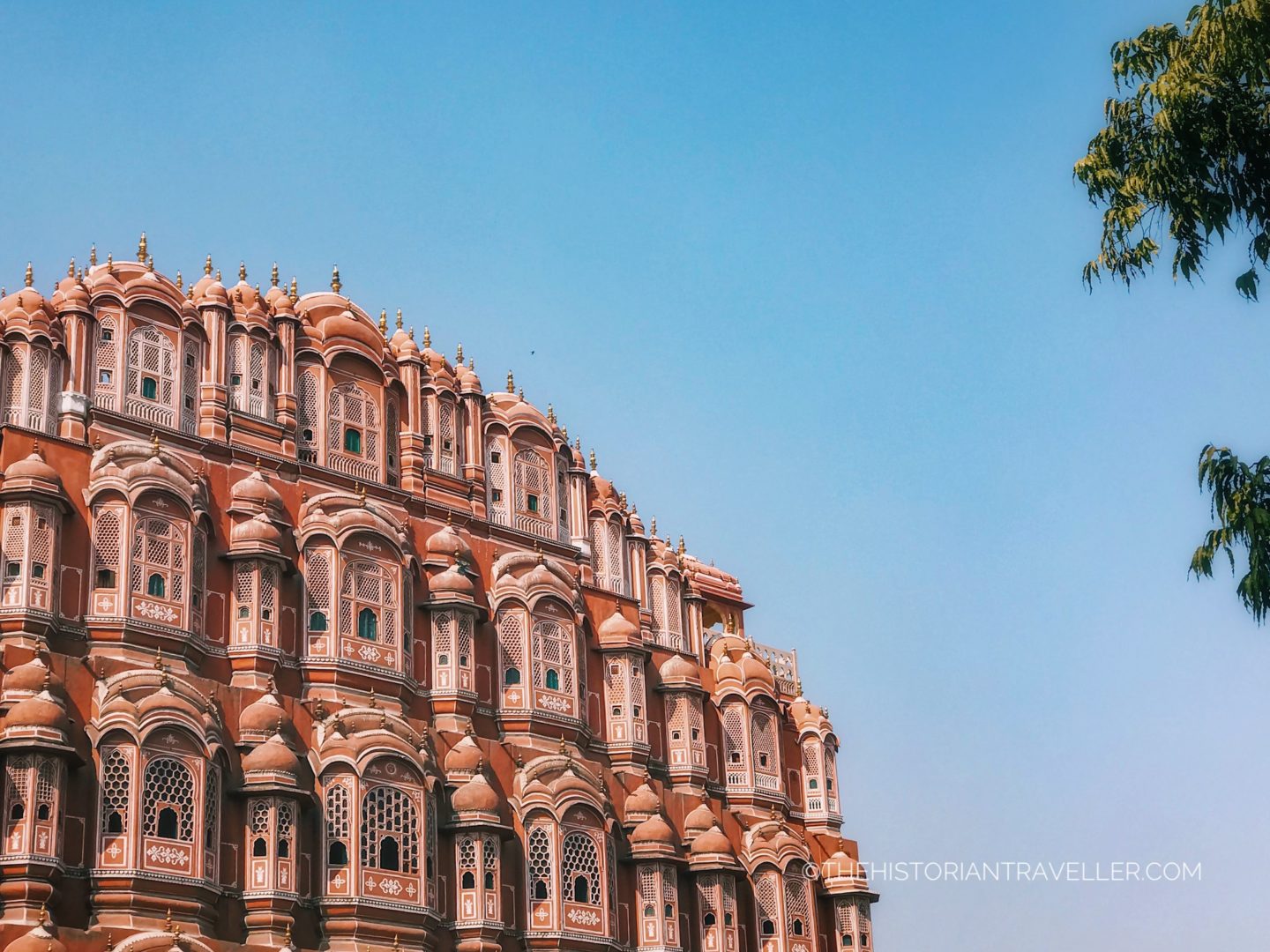
I dreamed of visiting the Hawa Mahal for a long time and, despite is situated right on one of the most crowded streets of Jaipur, it did not disappoint at all. Many people tent to not visit its inside because believe the main facade is its best part. However, if you have the occasion I warmly suggest you go and visit. The unexpected beauty of its rooms will surprise you!!
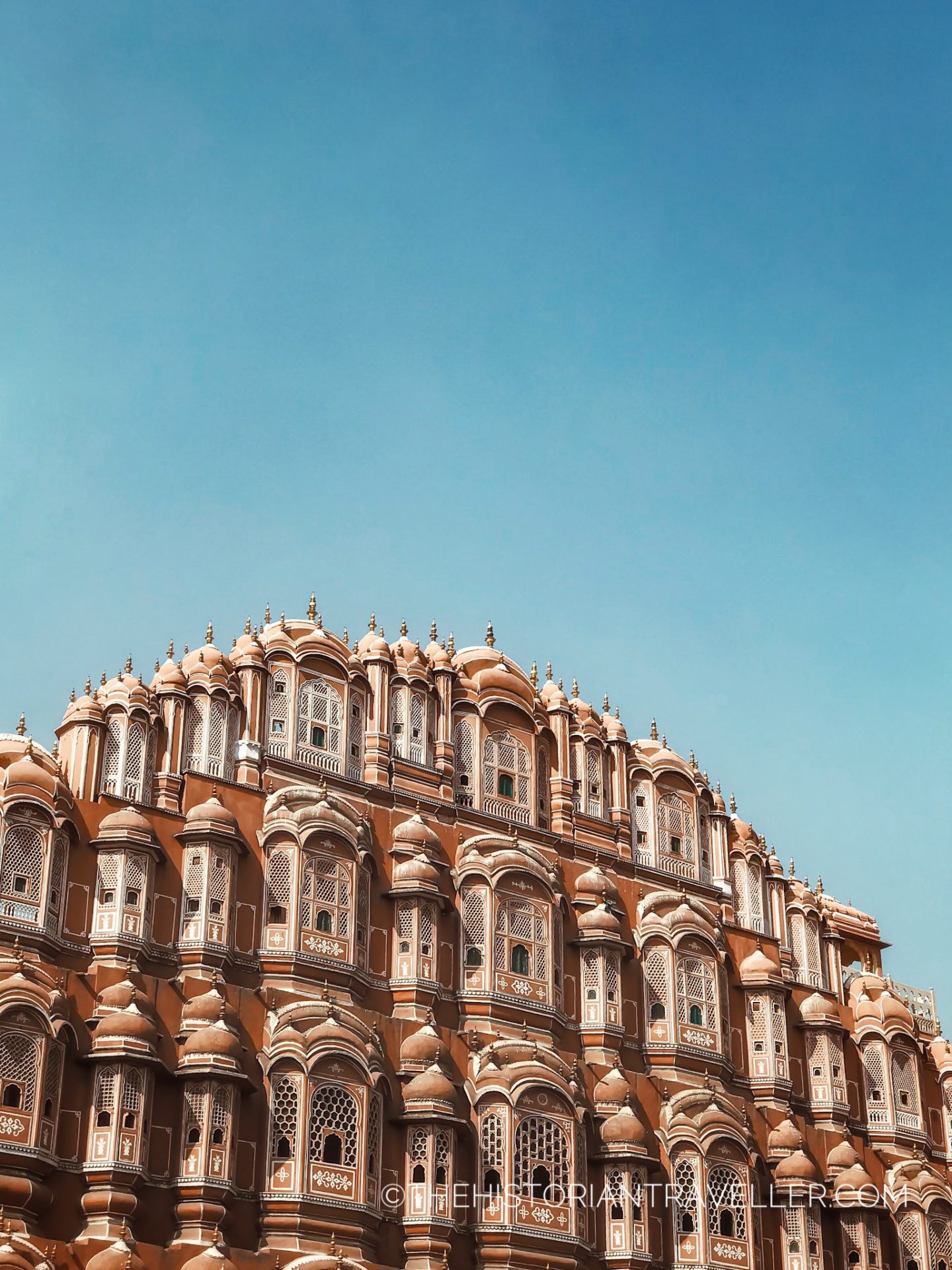
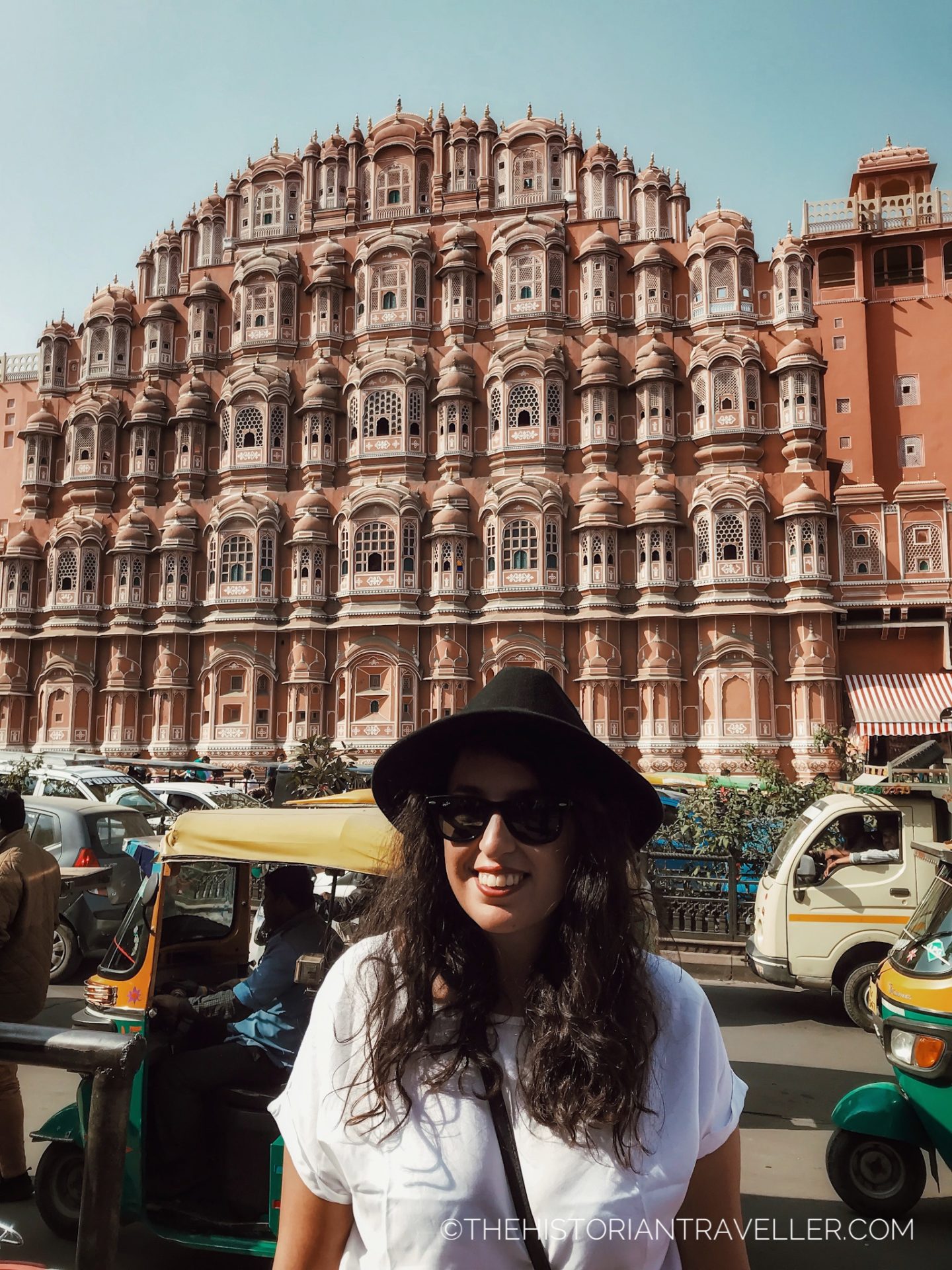
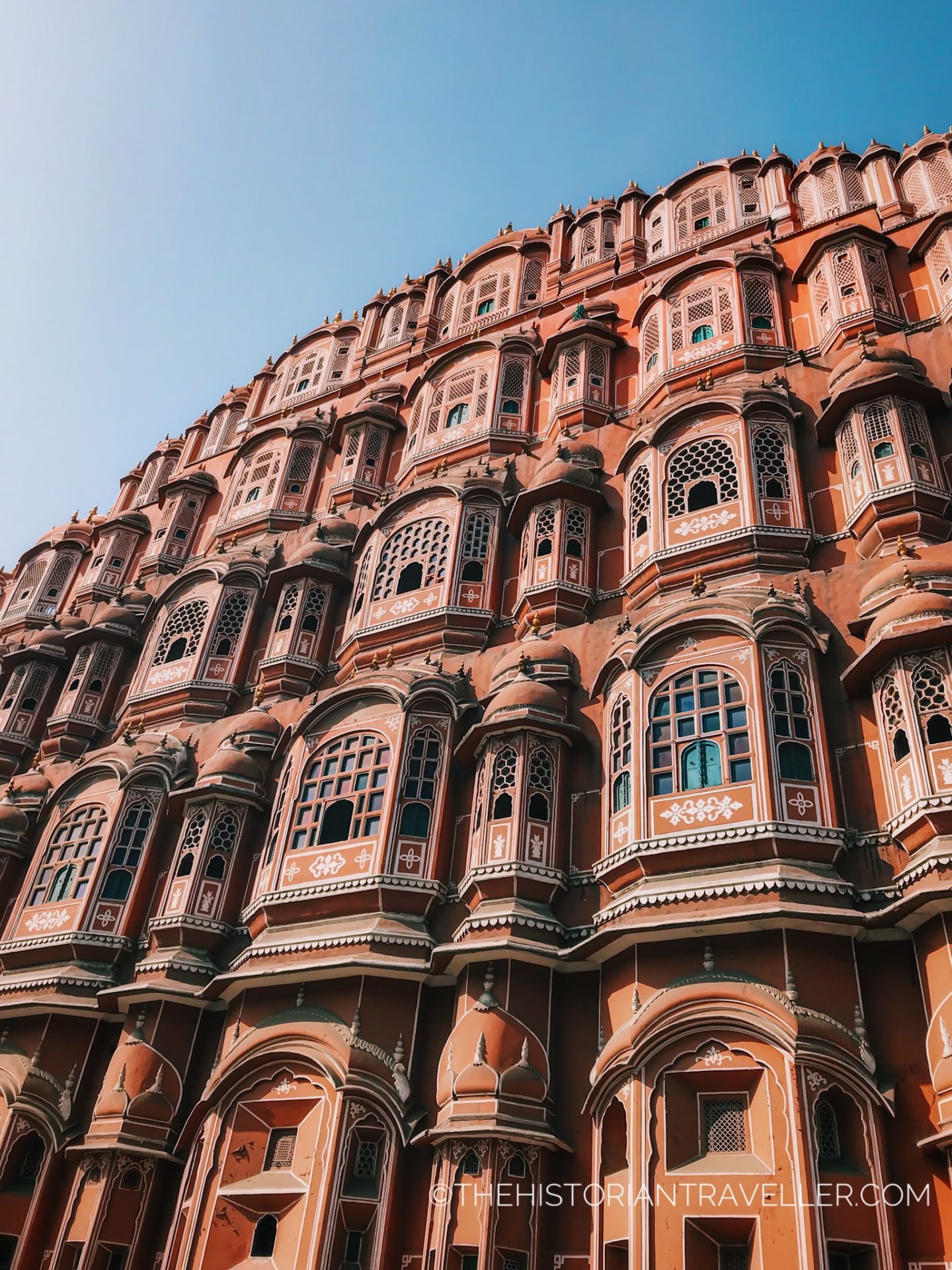
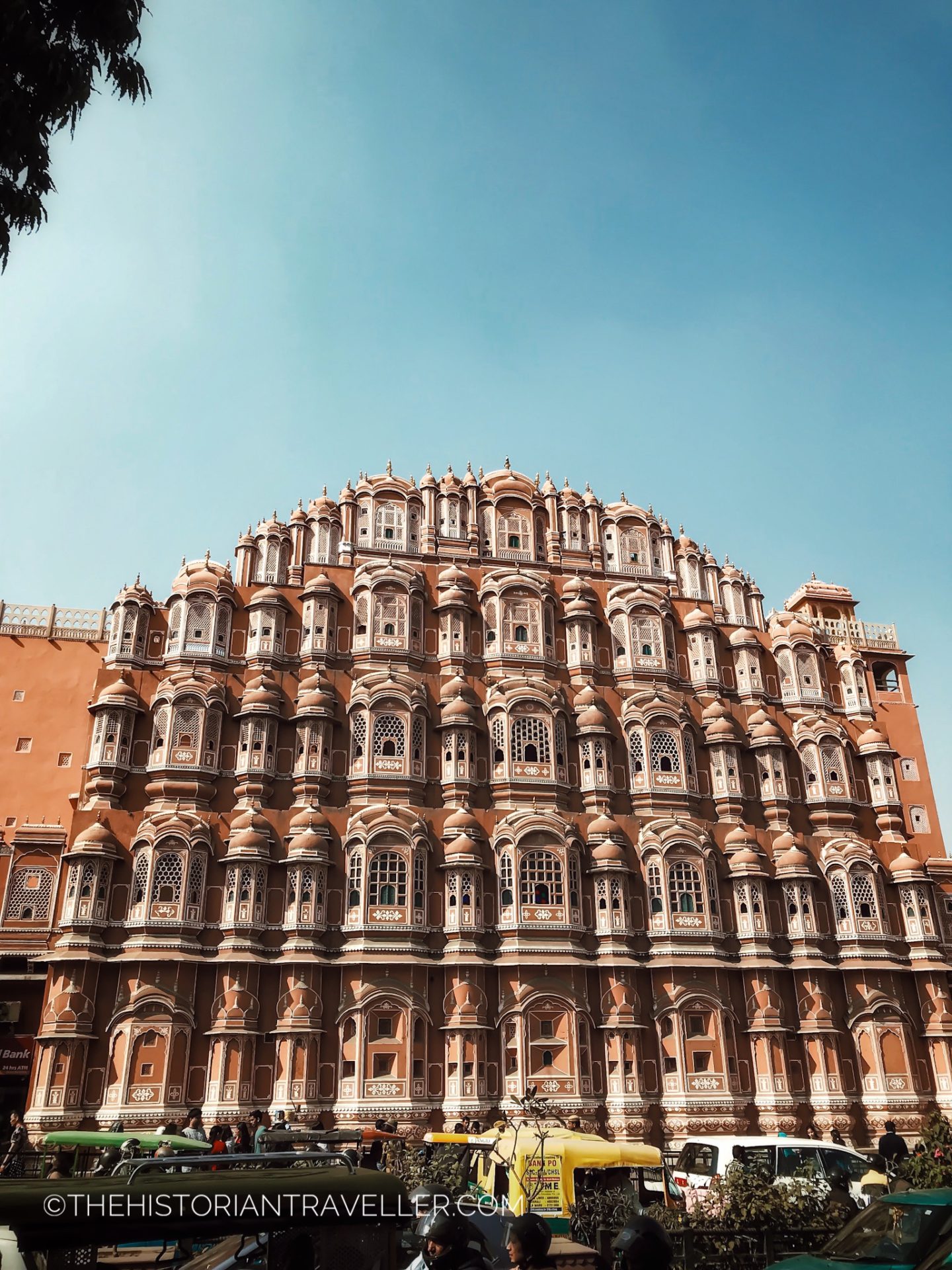
Rajput Sawai Pratap Singh built the Hawa Mahal in 1799 and it’s a five-storey building. The shape of the facade is very peculiar because it was inspired by the crown of Lord Krishna. The palace is famous also with the name “palace of winds” because of its 953 small windows known with the name Jharokhas and decorate with lattice work. The original scope of the windows was that of allowing royal women to watch the life out of the palace without being seen from the outside. Moreover, the Hawa Mahal is also one of the few places to not have a front gate! Indeed, the facade you see from the street it’s actually the back of the palace.
Inside the Hawa Mahal. Discovering the Palace of winds
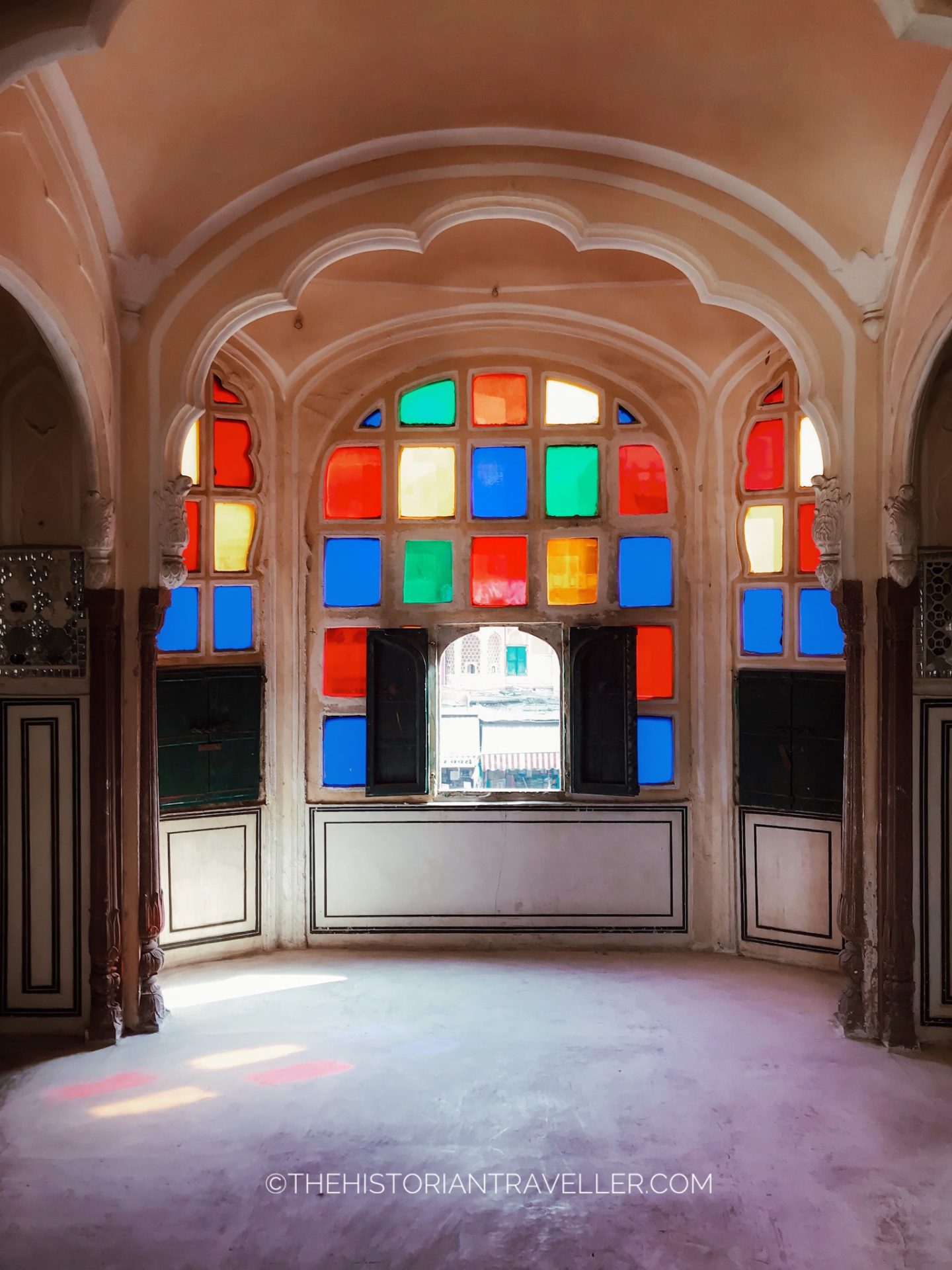
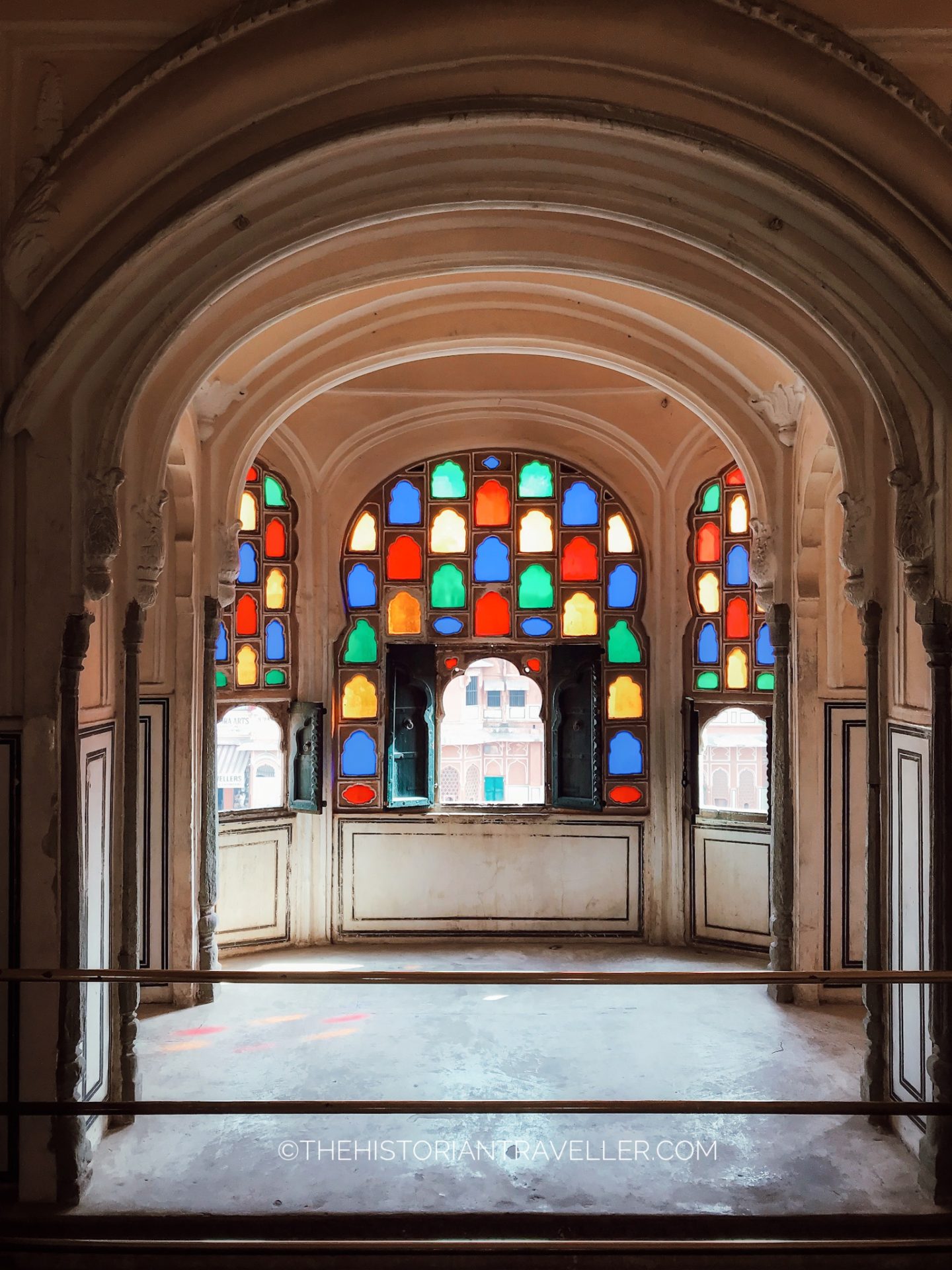
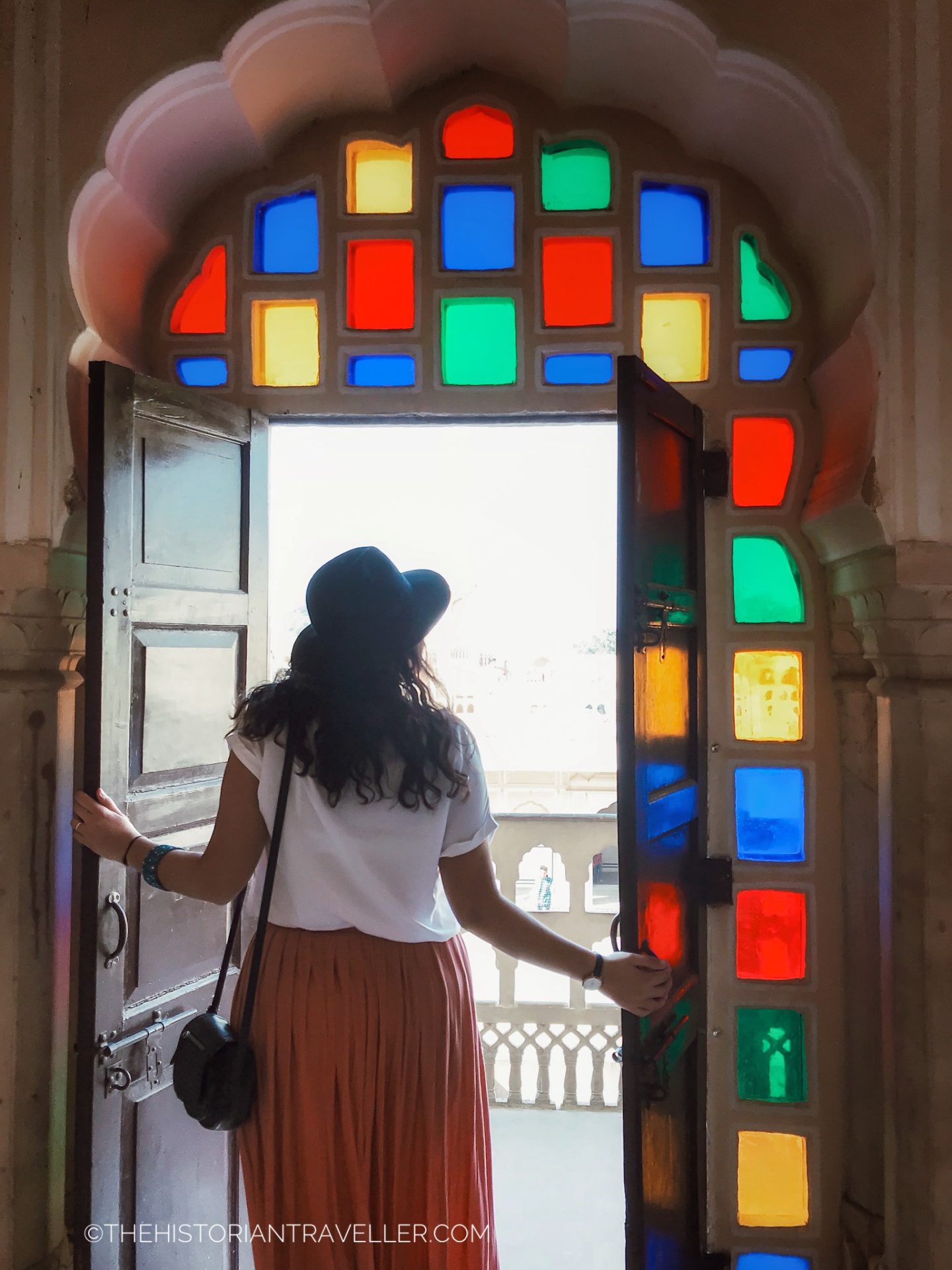
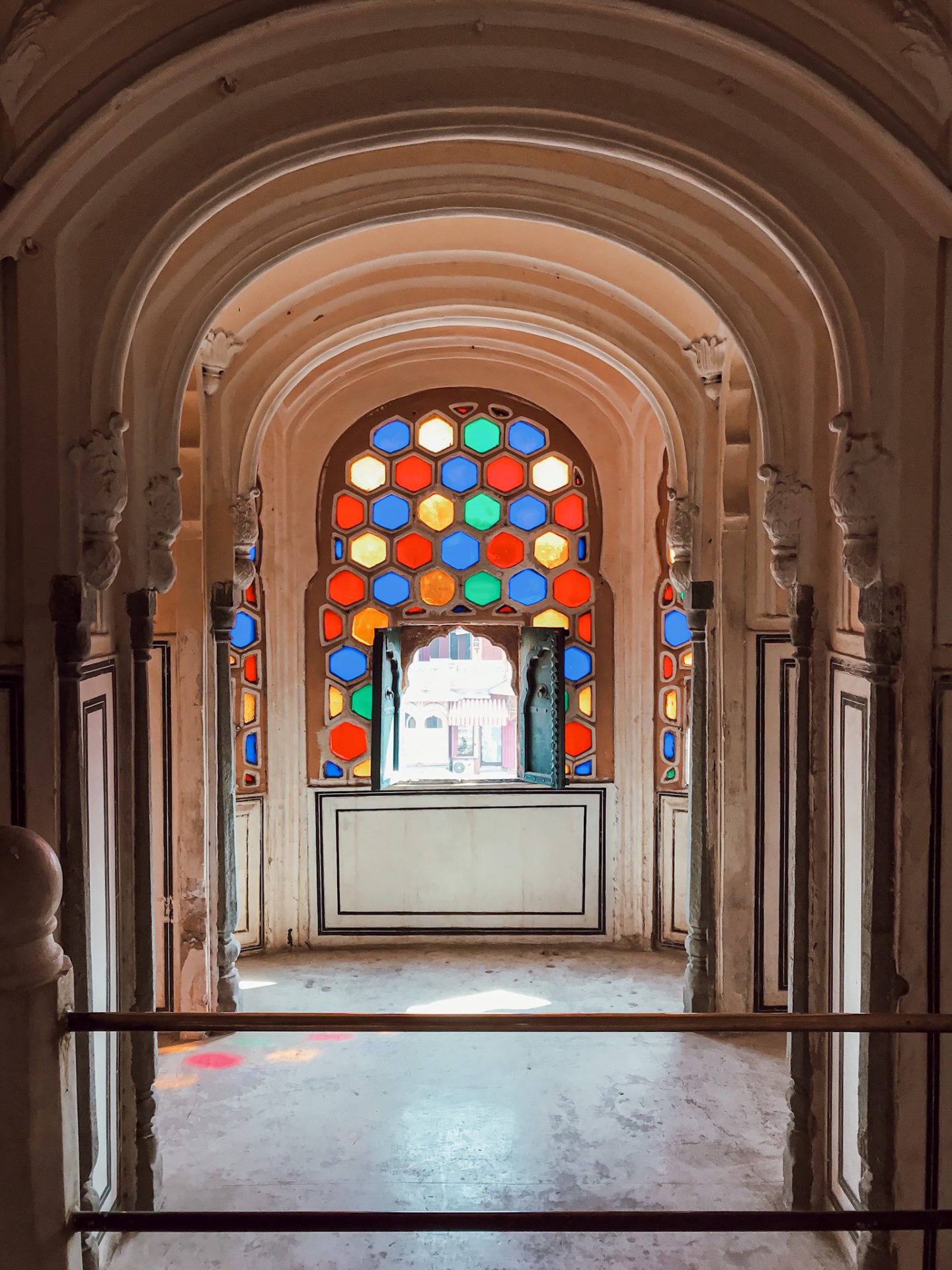
One of the things I always wondered before visiting India was. What is like the Hawa Mahal inside? On social media you are submerged with photos of its popular back-facade but not many people show what is like inside its mysterious rooms. It was a real surprise to discover how different, simpler and beautiful the Hawa Mahal look from its inside. It is much sober compared to its well known facade but at the same time equally beautiful. Once you enter the white marble gate, you will be welcomed by a large courtyard featuring a central fountain. You can immediately see the doubled-storey back (which is actually the front) of the famous street facade that is surprisingly painted not only in pink but also in yellow.
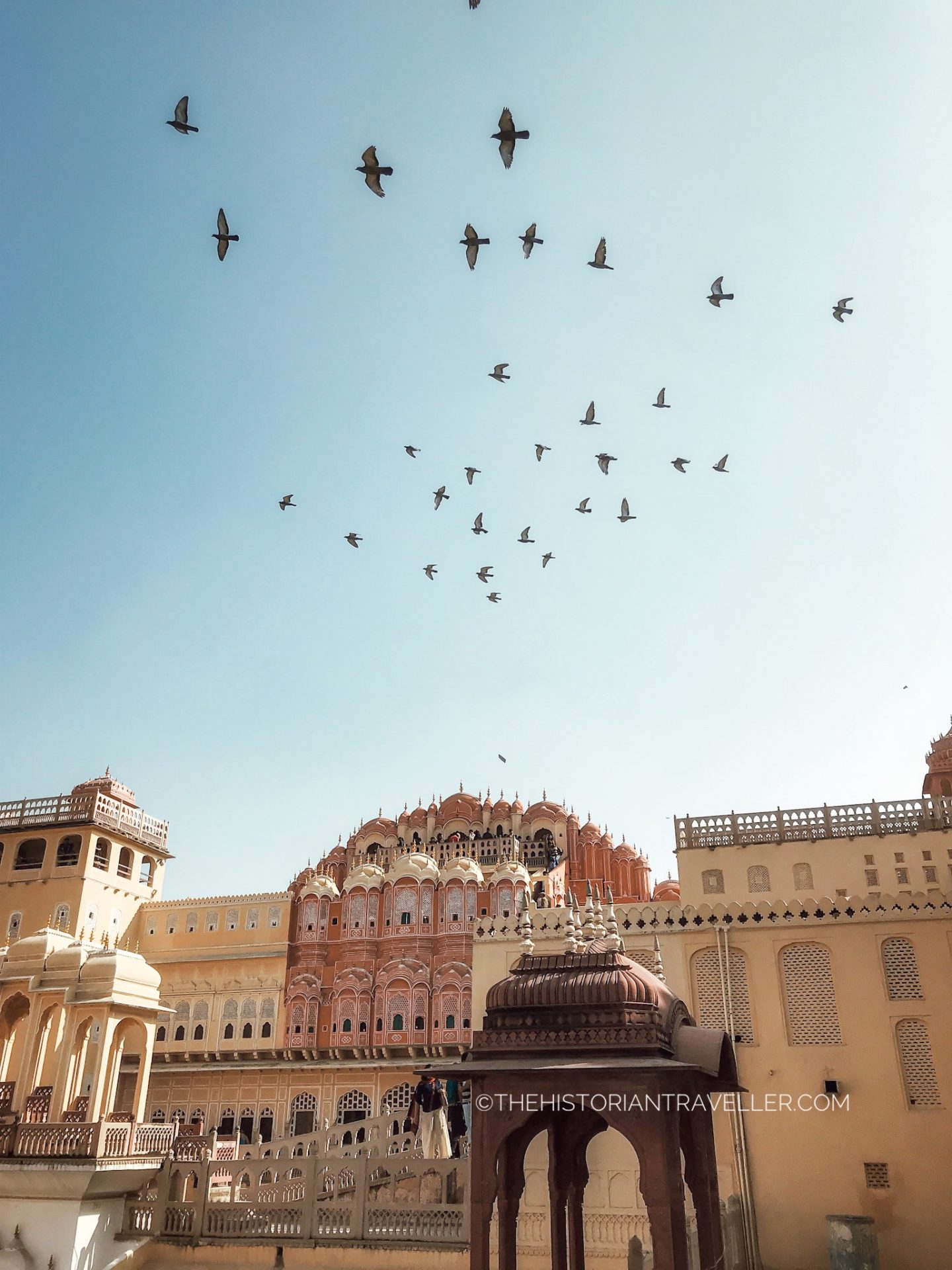
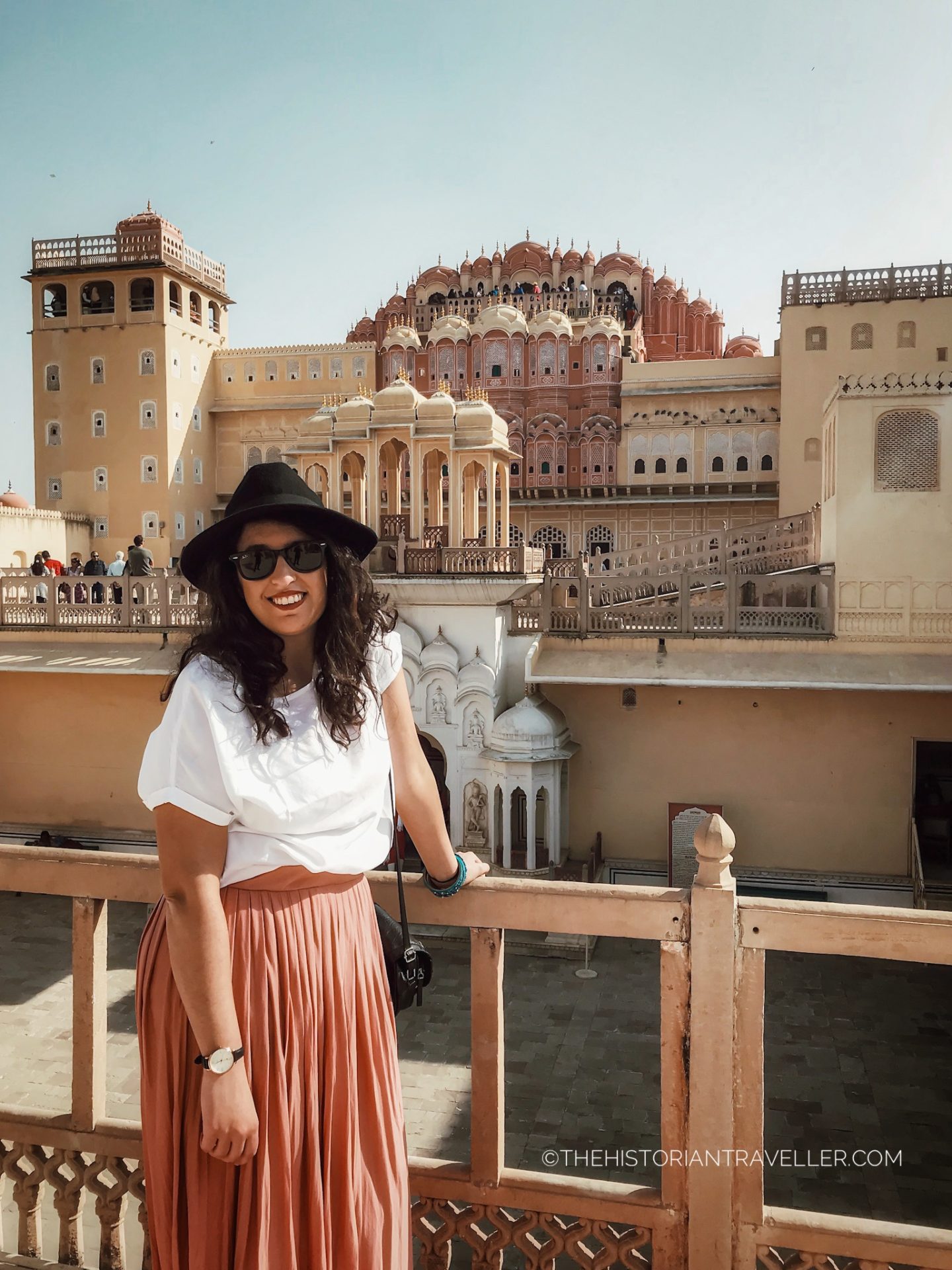
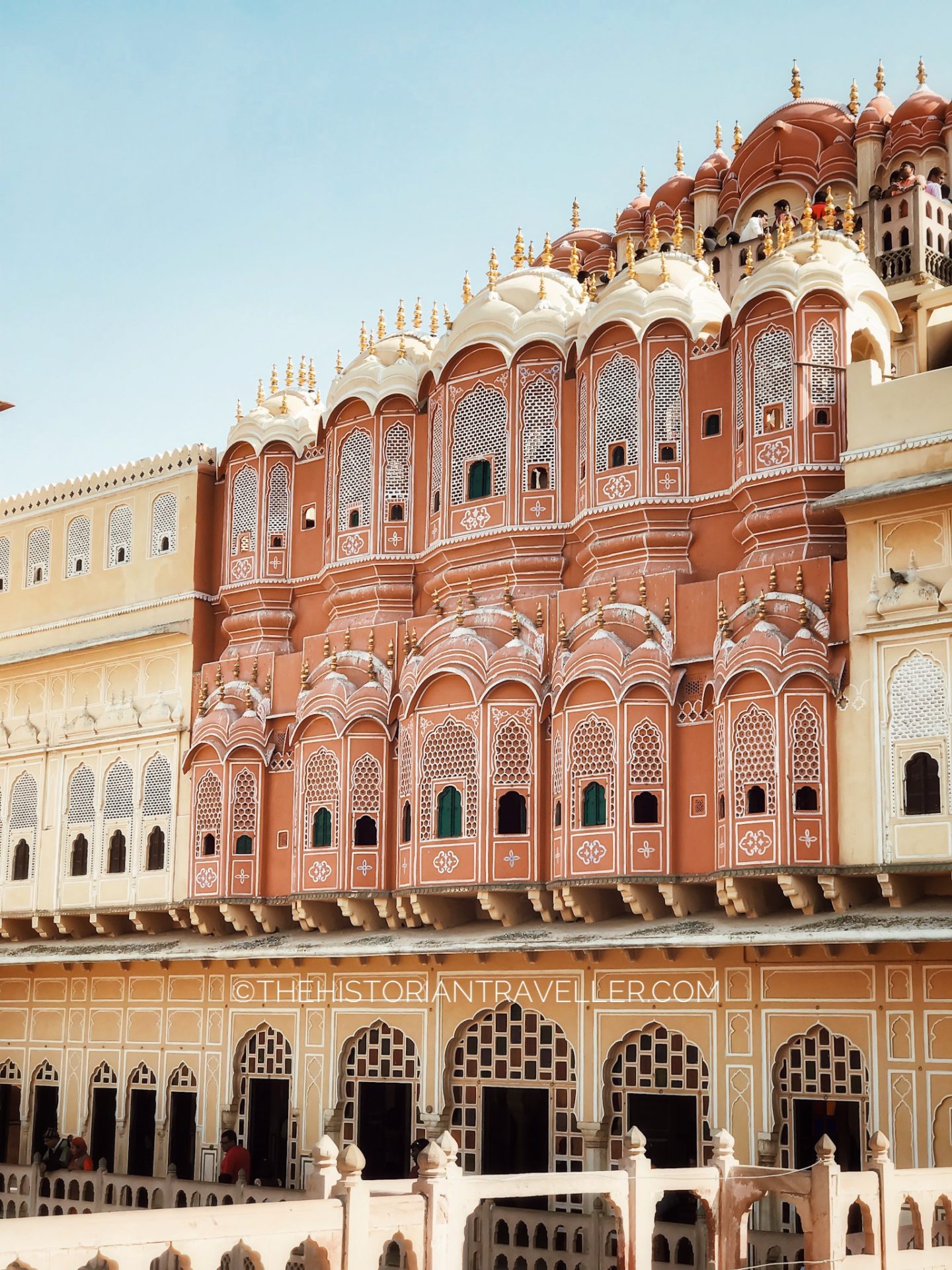
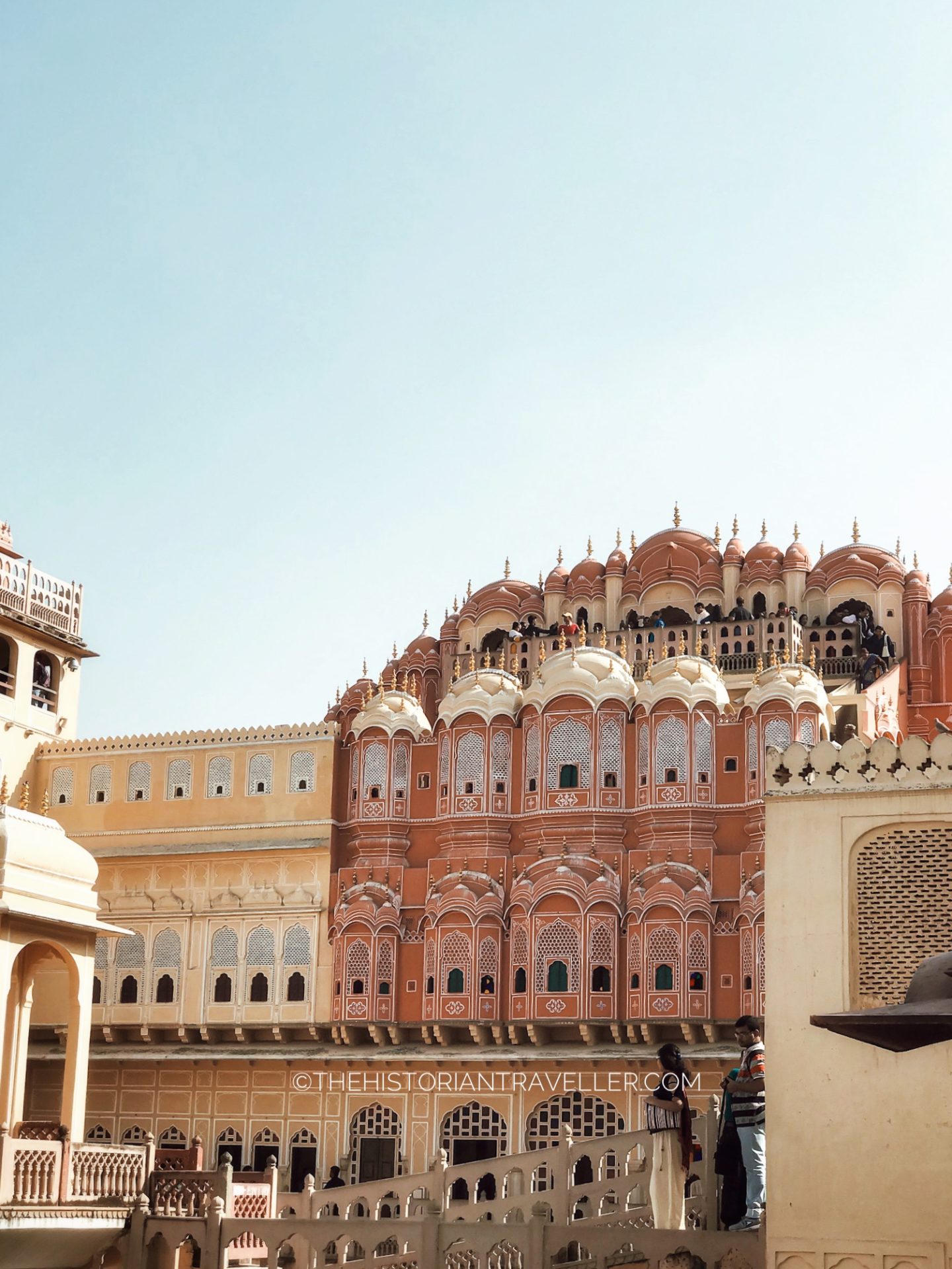
From here, smaller courtyards are accessible throughout a series of corridors. If you throughout these small windows, you can see Jaipur markets and the life of the city passing by from the smallest of the windows. Once you return to the central courtyard, you will notice some side openings, these will lead you up into upper parts of the building through a series of ramps. Yes! You read well, ramps not stairs! In fact, the ramps allowed the royal women to be transported by palanquins (sort of chairs).
The five different floors of the Hawa Mahal
Each of the five different floors of the Hawa Mahal has a different name. These are called respectively Sharad Mandir, Ratan Mandir ,Vichitra Mandir ,Prakash Mandir and Hawa Mandir.
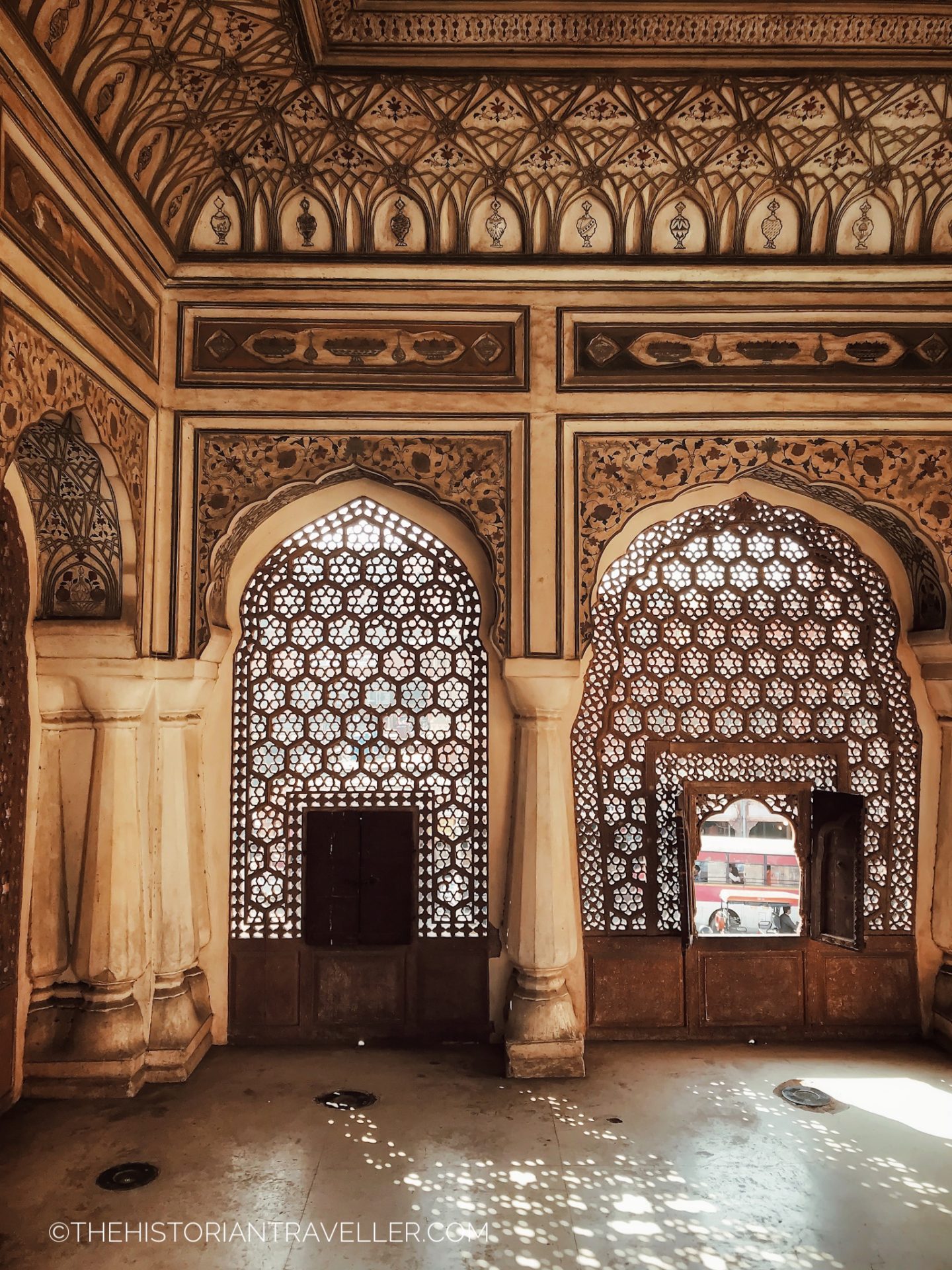
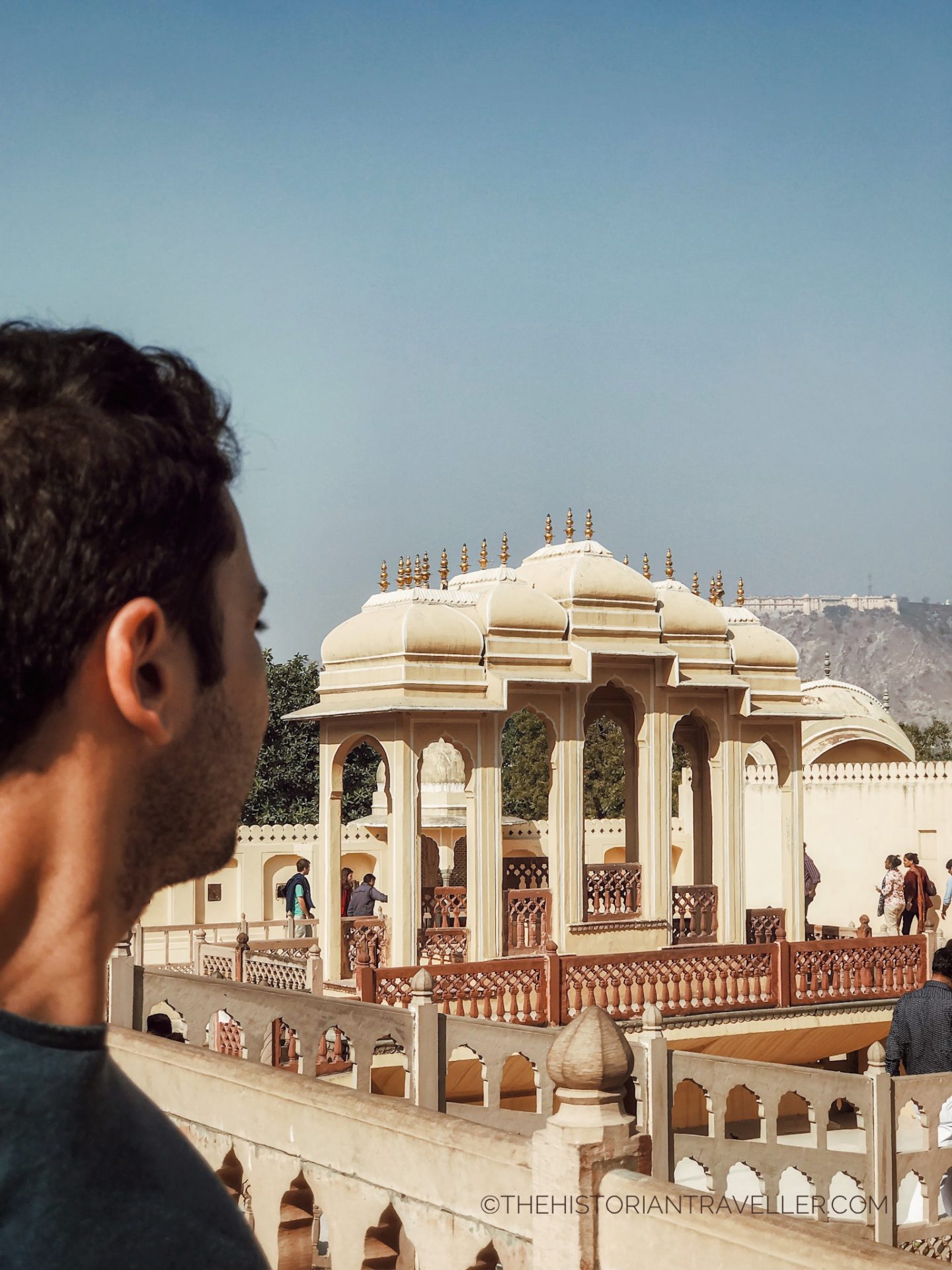
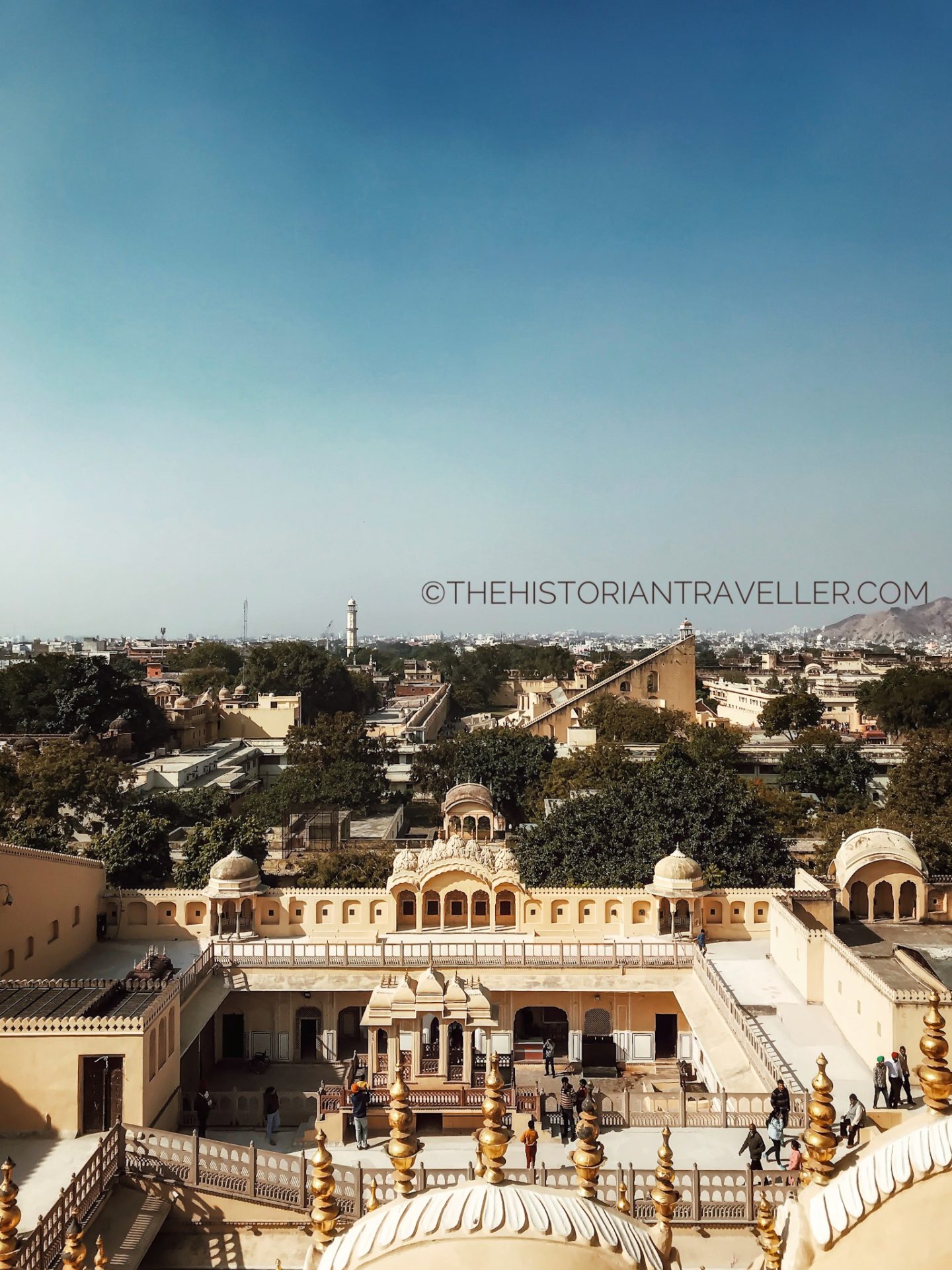
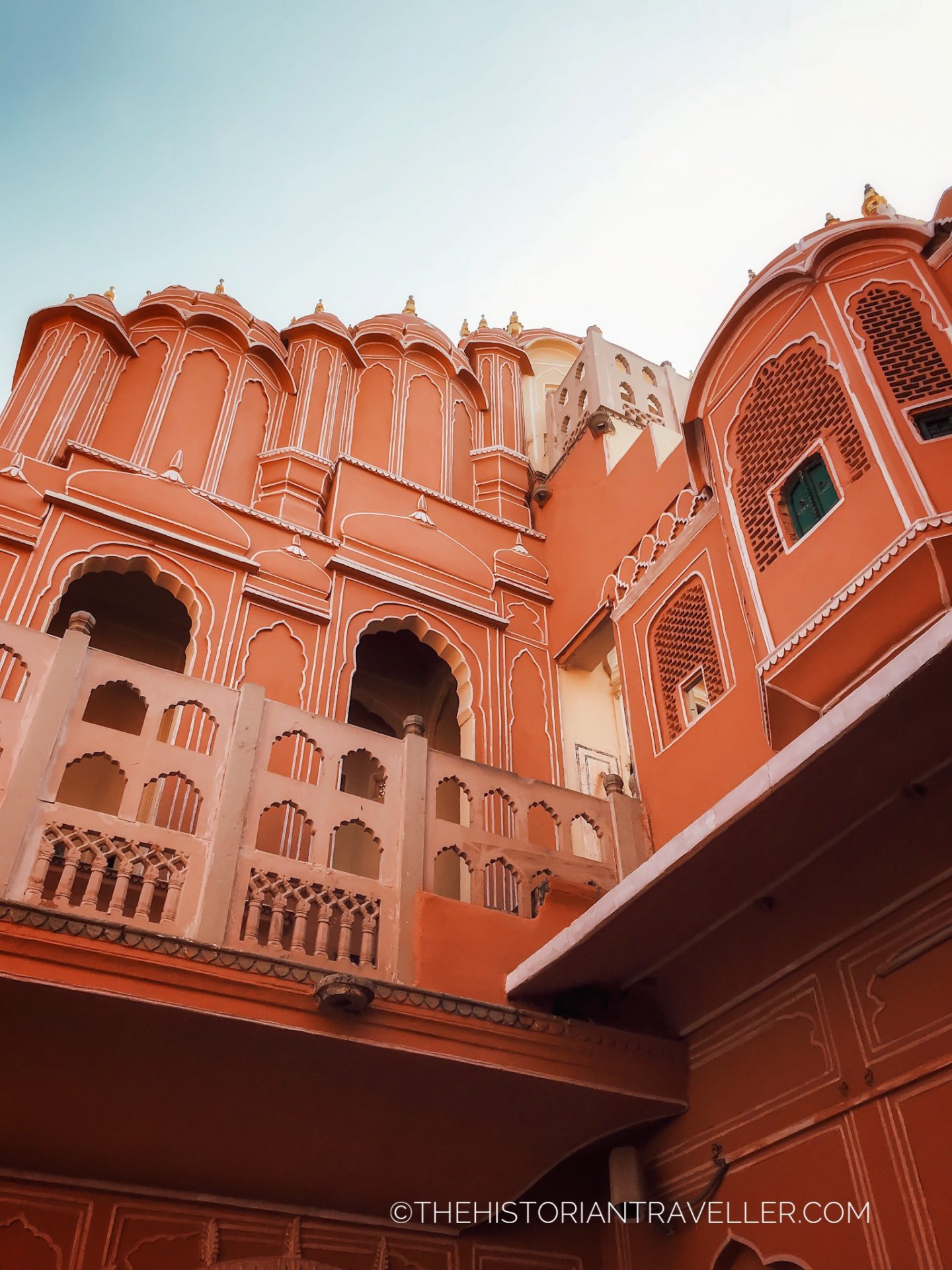
Sharad Mandir it’s the first floor and its name comes from the Autumn festivities that were celebrated during this season on this level. of the palace Mandir. Ratan Mandir is the second floor. This features beautiful stained glass windows that filter the lights according to the time of the day. The name Ratan means “gem” in Hindi because the artwork of this floor is considered the gem of the palace. This floor features also a small balcony with a view on the courtyard.
The third floor is Vichitra Mandir. This was the worship place of the Maharaja who came here to spend time alone and pray. The fourth floor is called Prakash Mandir. You can reach it through a series of small ramps and little staircases. These will lead you to two side terraces from where you can enjoy a partial view of the palace. The fifth and last floor is called Hawa Mandir (from where the palace take its name). Here you can enjoy the best view of Jaipur. This is also the most windy place of the palace and you can feel also a pleasant breeze.
How to find the entrance of the Hawa Mahal
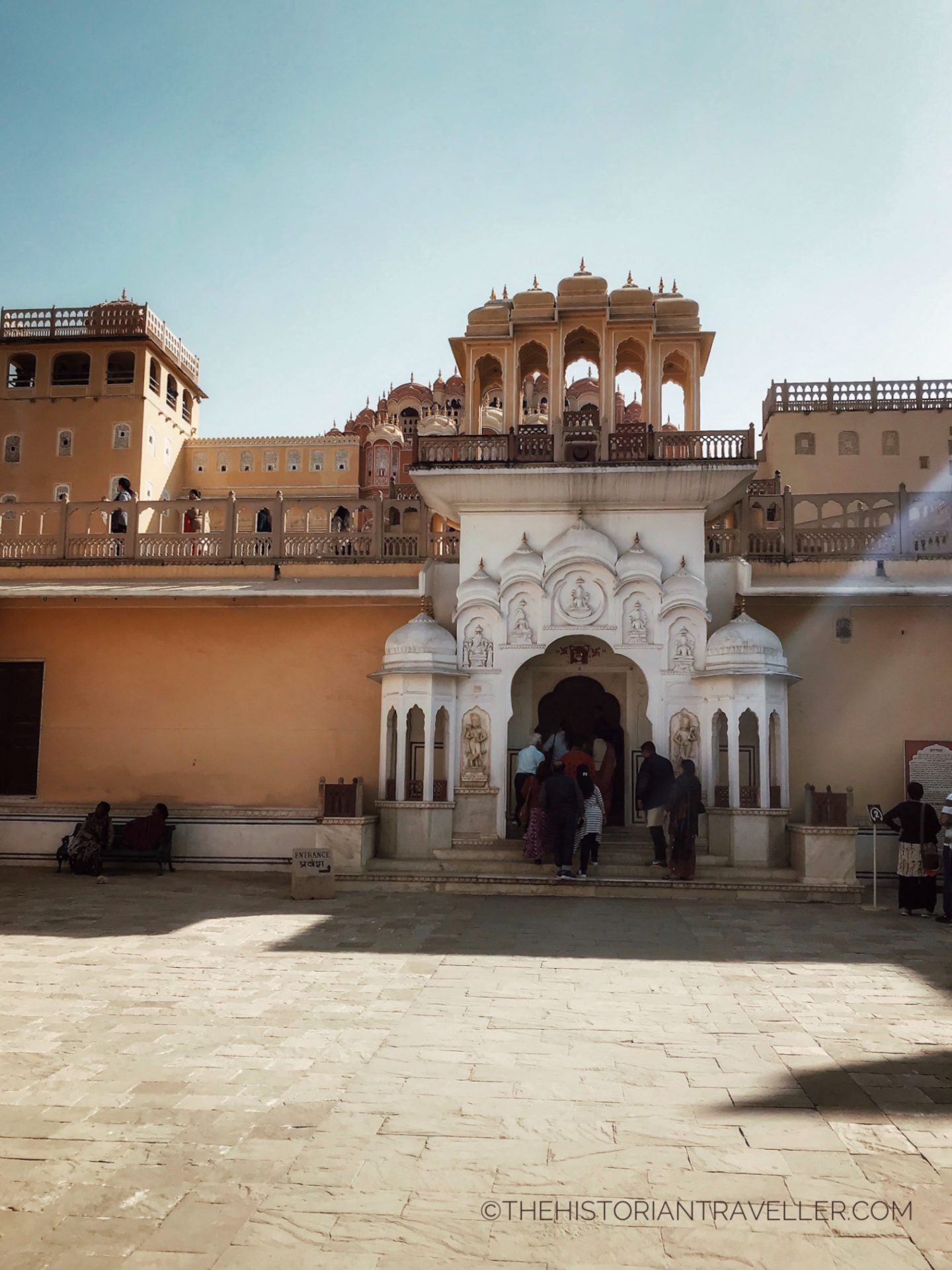
The entrance to the palace is a bit tricky. In fact, giving that many people know the place only because of its rear facade, when they arrive there and can’t find the entrance they become very confused. First of all, DON’T PANIC. There is an entrance (pictured above), it’s not as spectacular as the rear facade and it’s not visible from the street. However, it’s not difficult to find it.
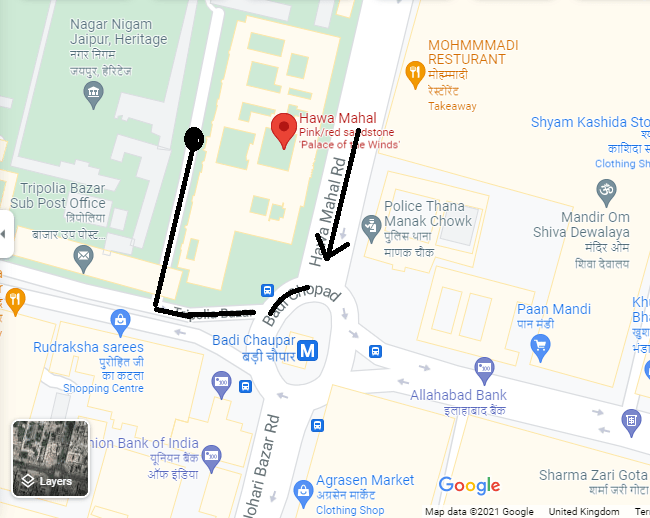
Second, remain on the same side of the street of the rear facade. This street is called “Hawa Mahal Road” from here, in order to access the palace, you have to walk for about 5 mins. Go straight towards a street called “Tripolia Bazar” (left if you are facing the Hawa Mahal). Here you will see many stalls and little shops part of the Hawa Mahal Market. When you turn into the Tripolia Bazar, just before the Post Office and immediately in your right-hand side, there is a little covered street. Enter here and follow the way for one minute. When you see a white-marbled gate on your right, this is the entrance!
To note that the entrance does not correspond with the same place where you can buy the tickets. These are sold in a very tiny office placed on the right of the entrance. Bring cash with you because you can’t pay by card.
Fees and Opening hours
The entrance fee to the palace is just of ₹50 (less than 1£) and you can go up till the last floor and visit also the museum.
The Hawa Mahal is open daily from 9.00 am to 4.30 pm
What is the best time to visit the Hawa Mahal?
In my opinion, the best times to visit are early morning and mid- morning. In fact, if you go at these times, you can enjoy the sunlight entering through the colourful stain glasses of the Ratan Mandir floor. The colourful windows will shine towards the floor creating a magical effect.
Eating in Jaipur: lunch at Caffé Palladio
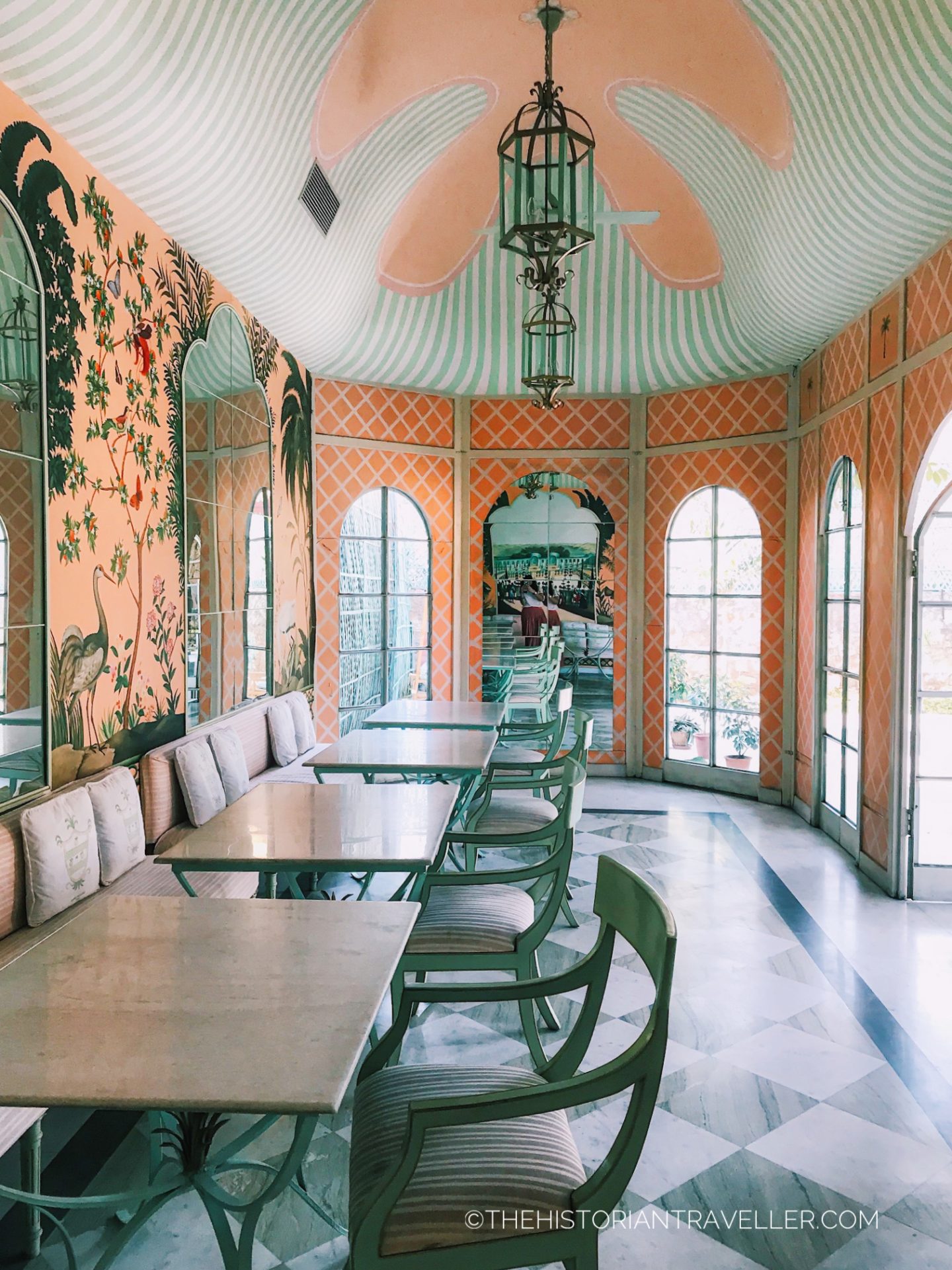
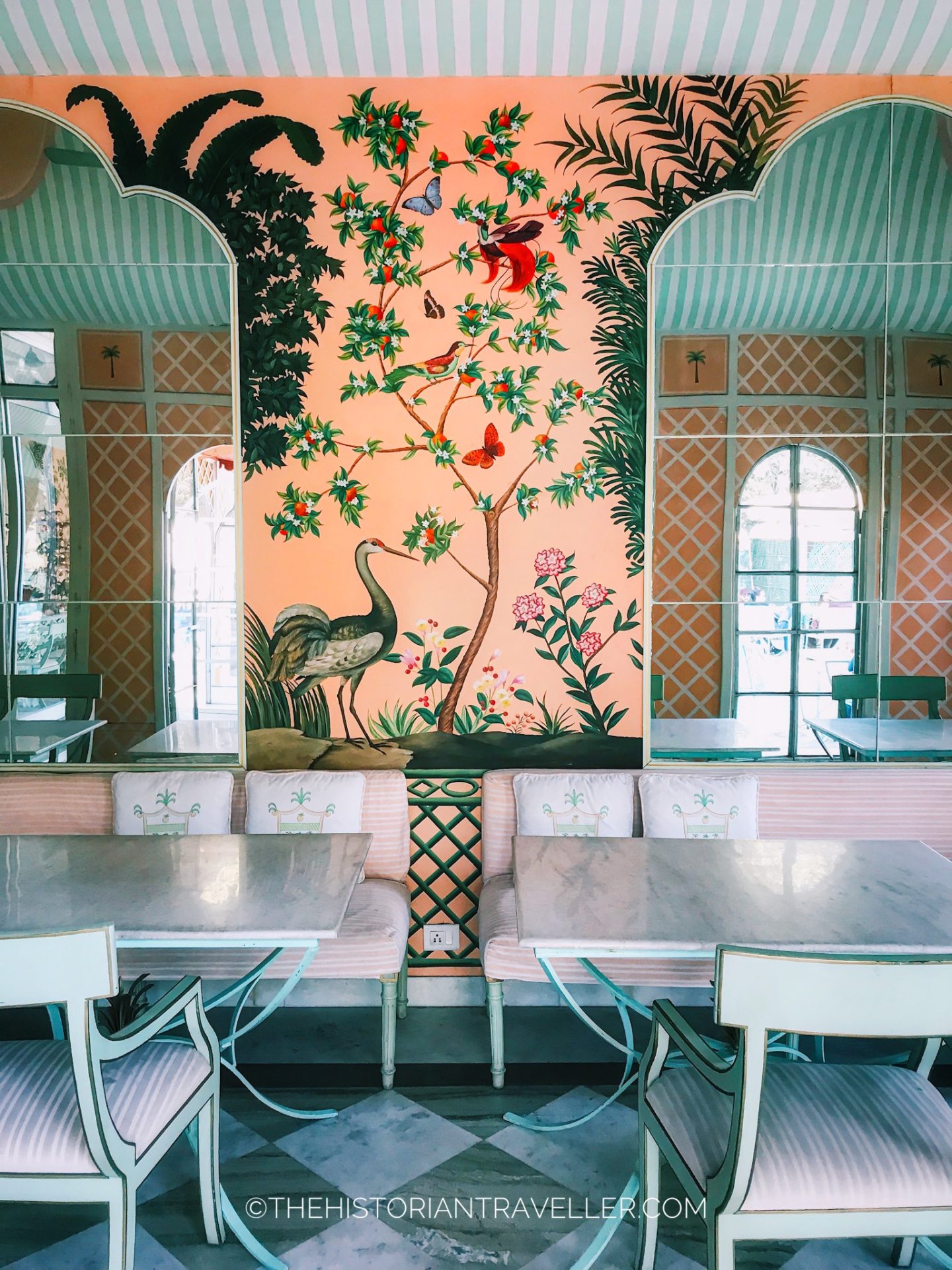
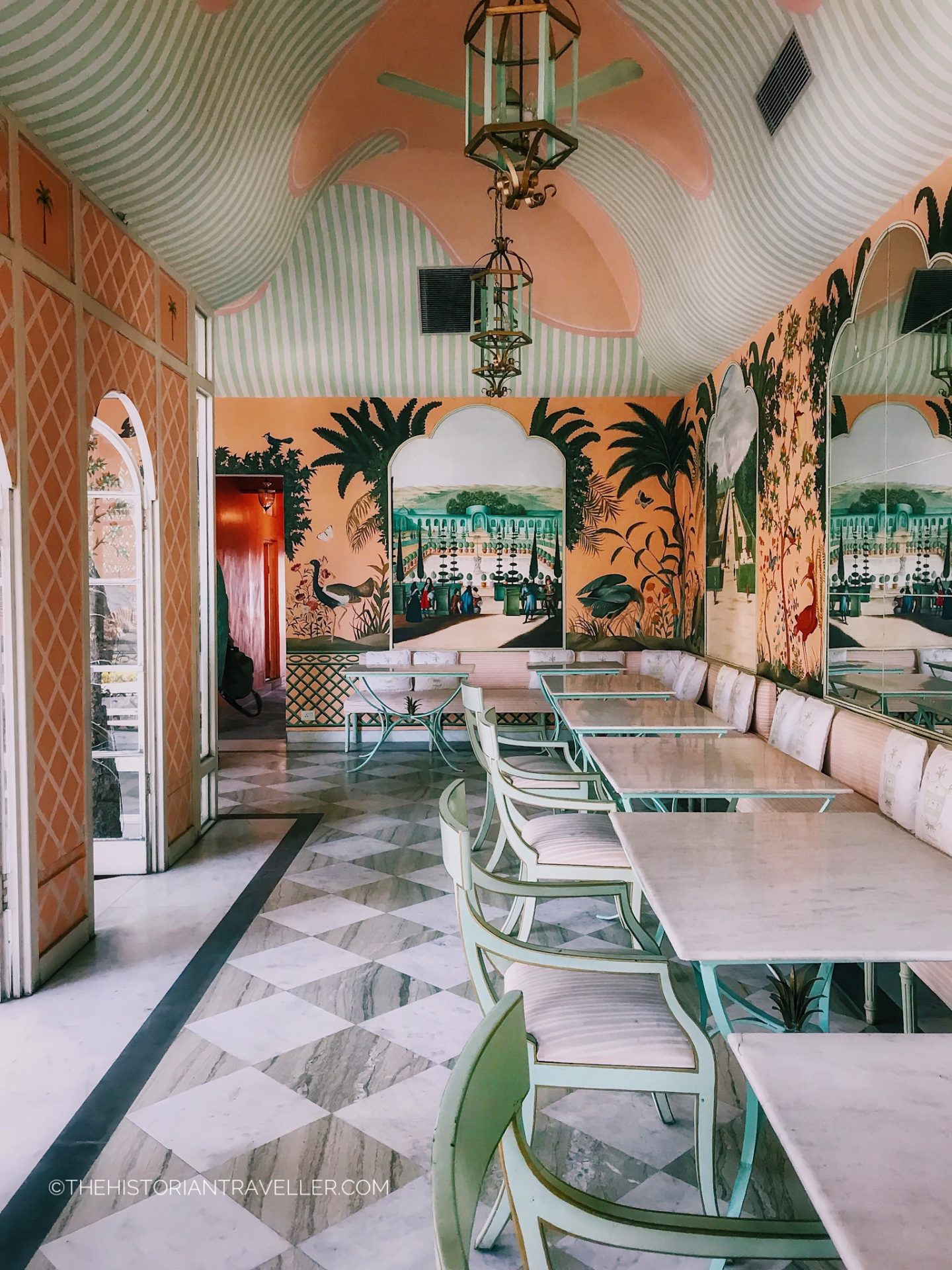
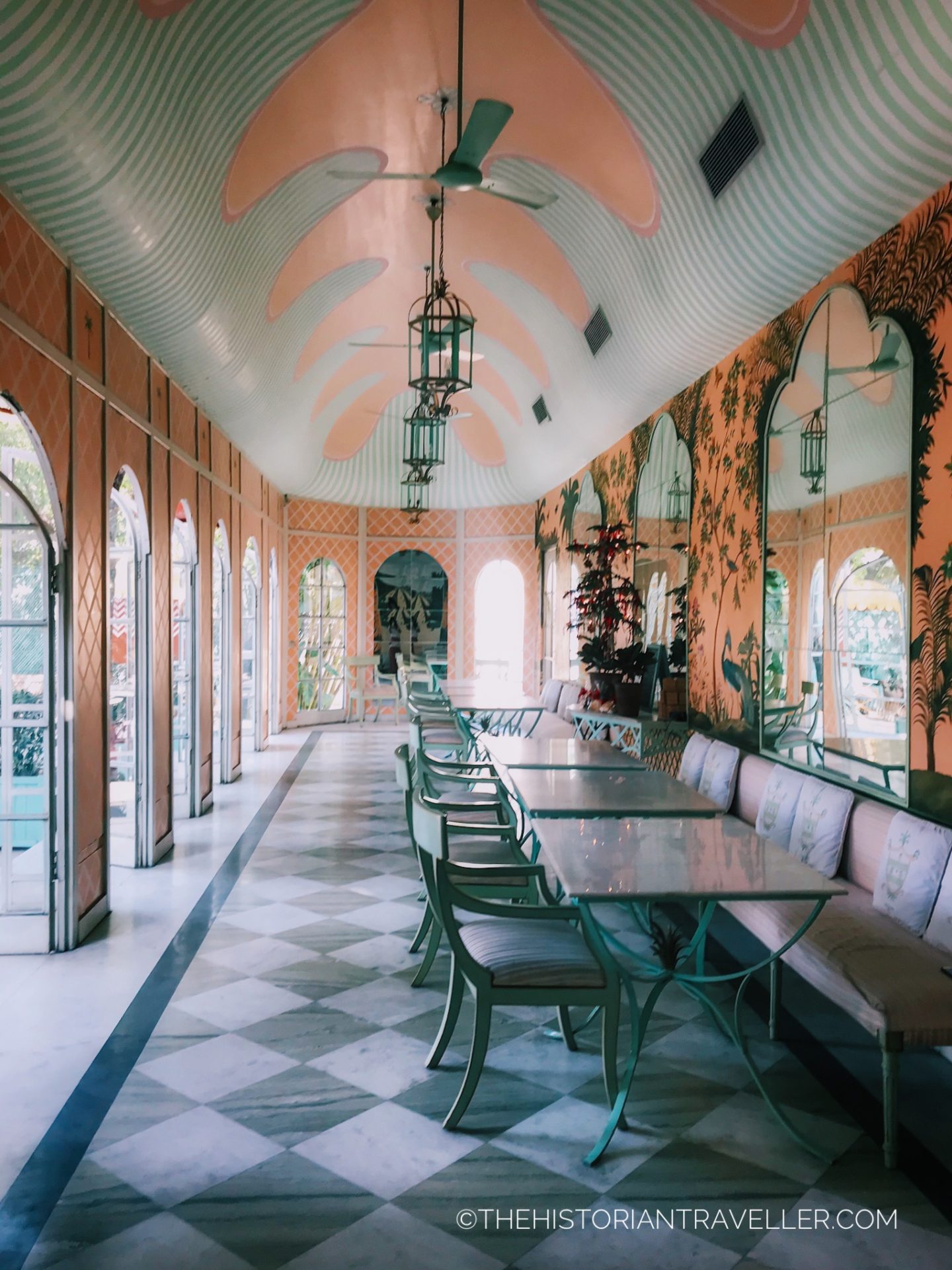
Jaipur is full of lovely places where to have lunch (including the nice cafe in front of the Hawa Mahal). However, since I was planning my trip to India. I had only one place in my mind. This is Caffé Palladio (to not confuse with Bar Palladio that is the “night” version of this restaurant that we visited on our last day to Jaipur – see forward).
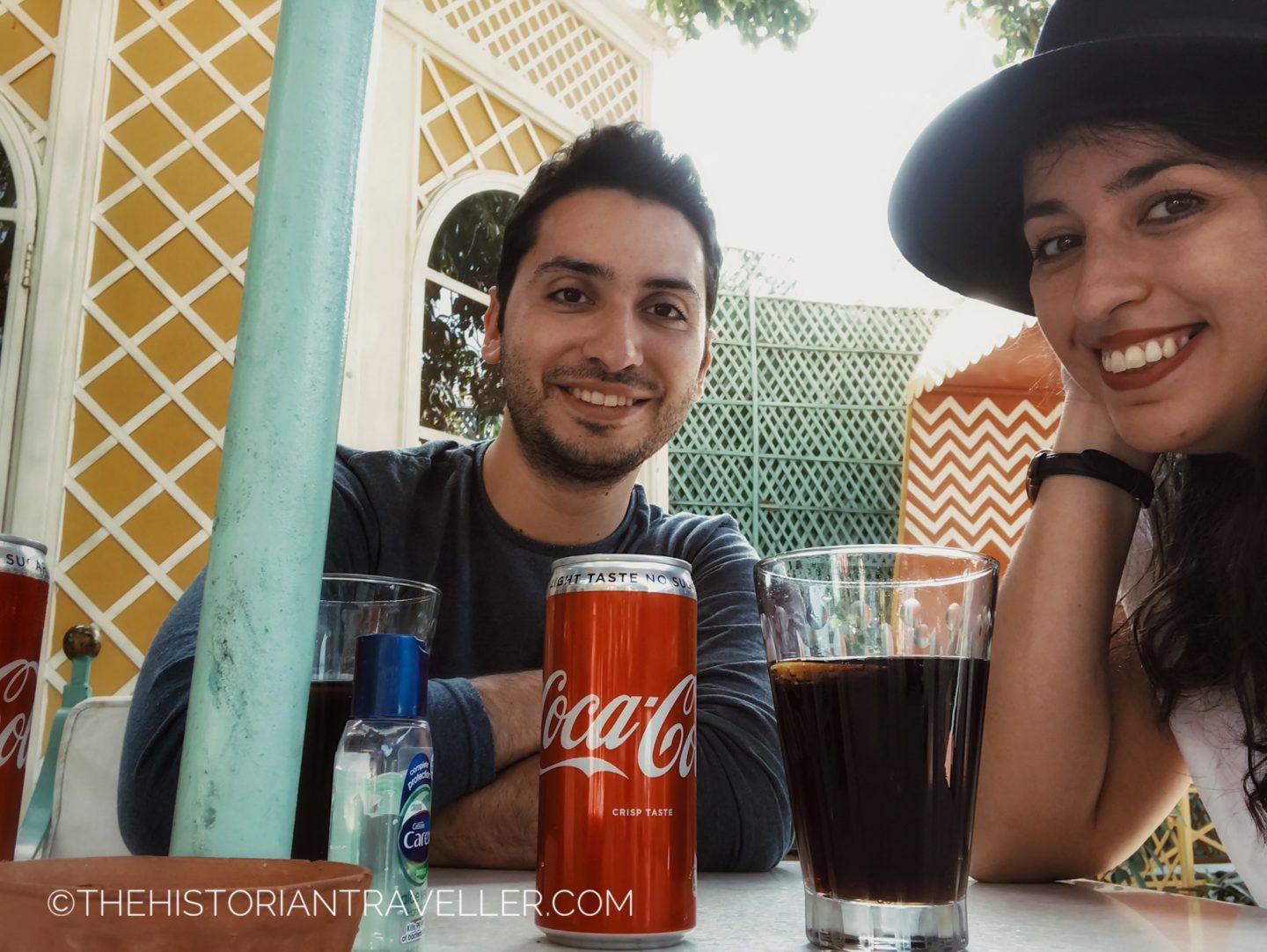
One of the reasons why I want to visit Caffé Palladio is for its incredible interior design. In fact, its luscious appearance was conceived from the genius of Marie-Anne Oudejans who designed also Bar Palladio. Both places are owned by Barbara Miolini who, after a stay in India, fell in love with the Rajasthani culture and decided to bring a piece of Italy in the heart of Jaipur.
A little part of Sicily in India

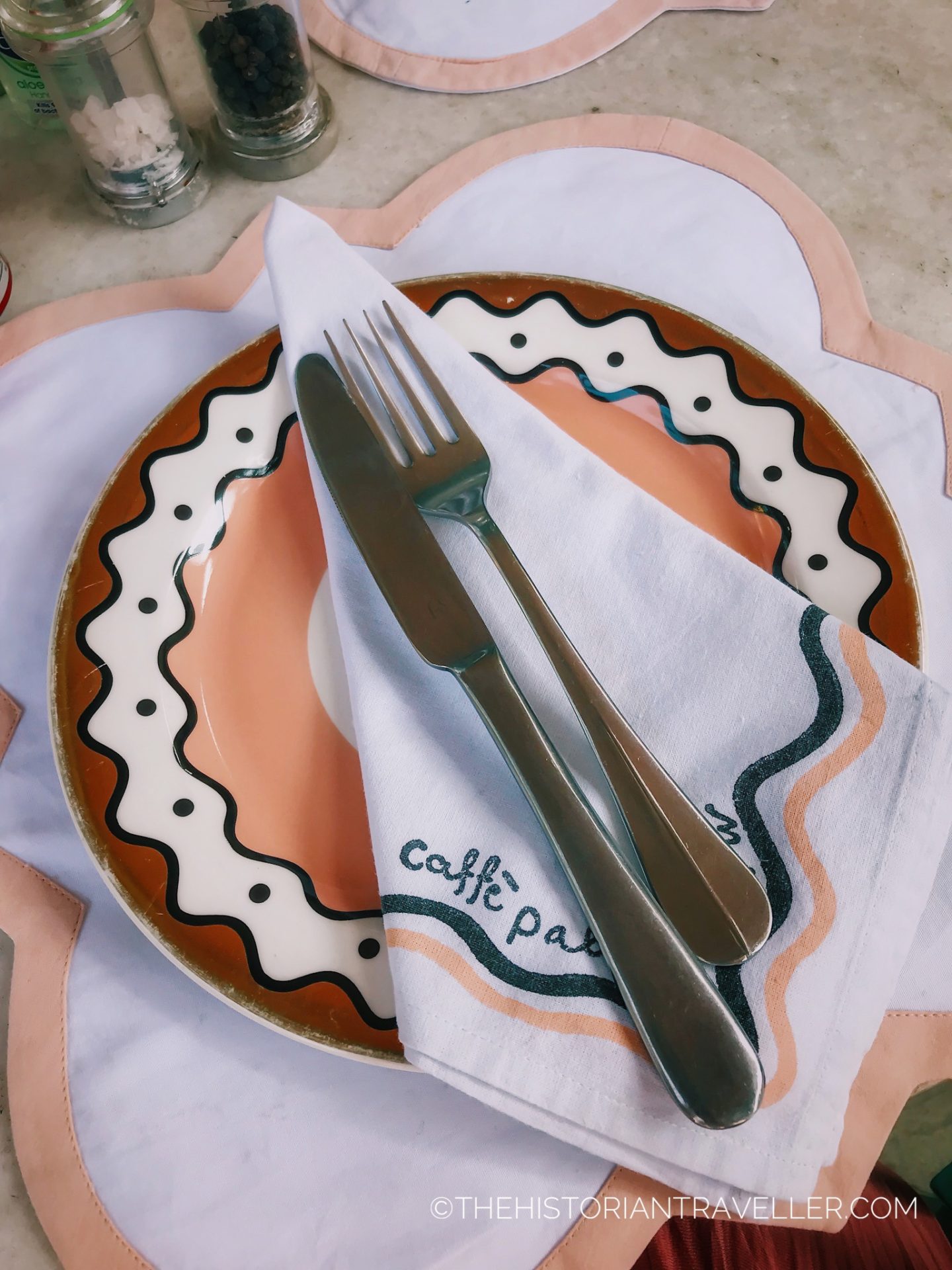

As a good Sicilian as I am, I could not miss the opportunity to visit this little gem situated slightly out of the Pink City. Indeed, you need just a single step inside the property to think that you are no longer in the chaotic Jaipur but in a sunny terrace somewhere in Sicily.
Indeed, Sicilian cuisine has inspired most of the dishes served at Caffé Palladio. Among all the places I could imagine to eat a great home-made pasta alla norma, India was probably the least of the places coming into my mind!
Dining at Caffé Palladio. Practical information
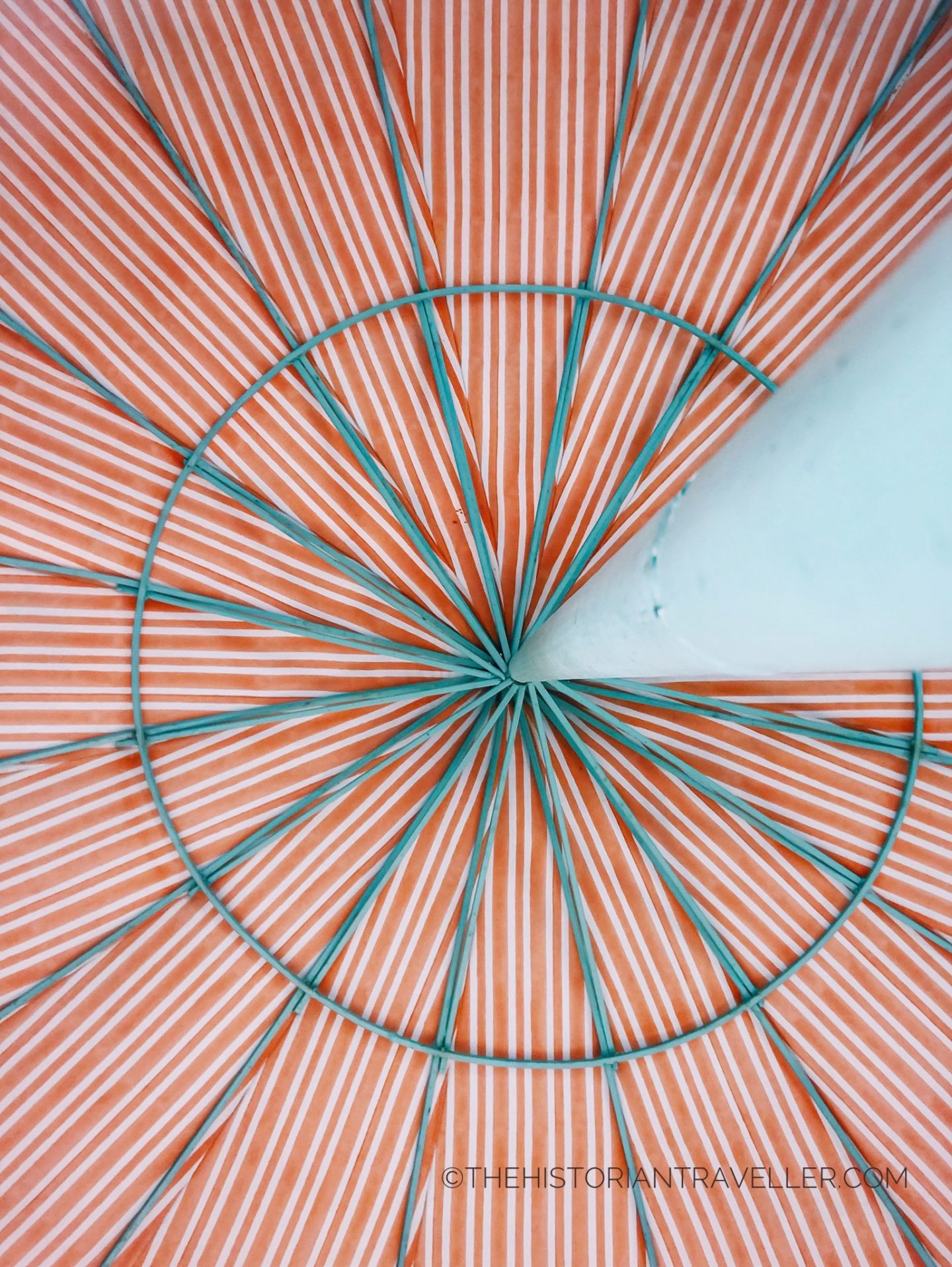
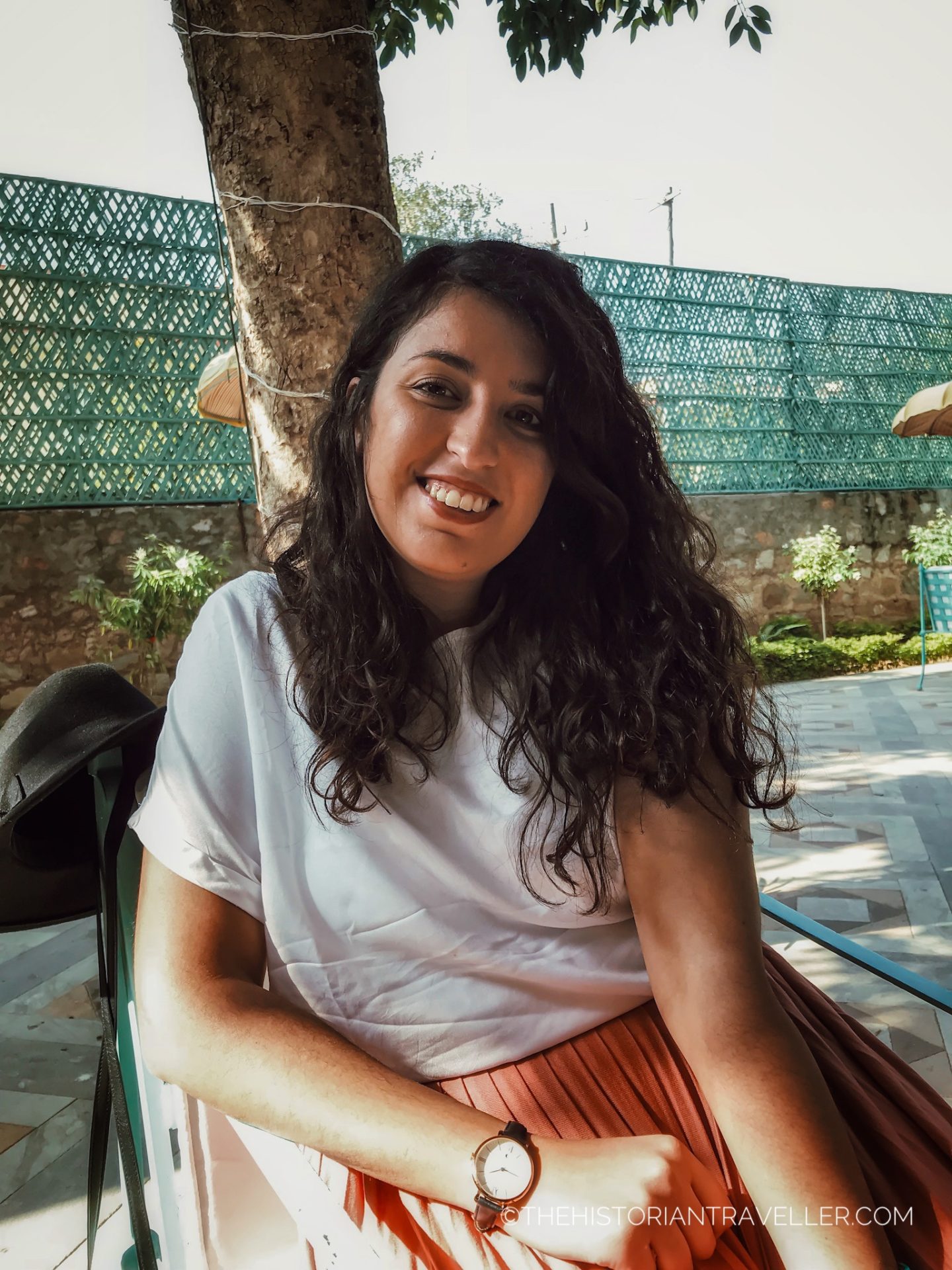
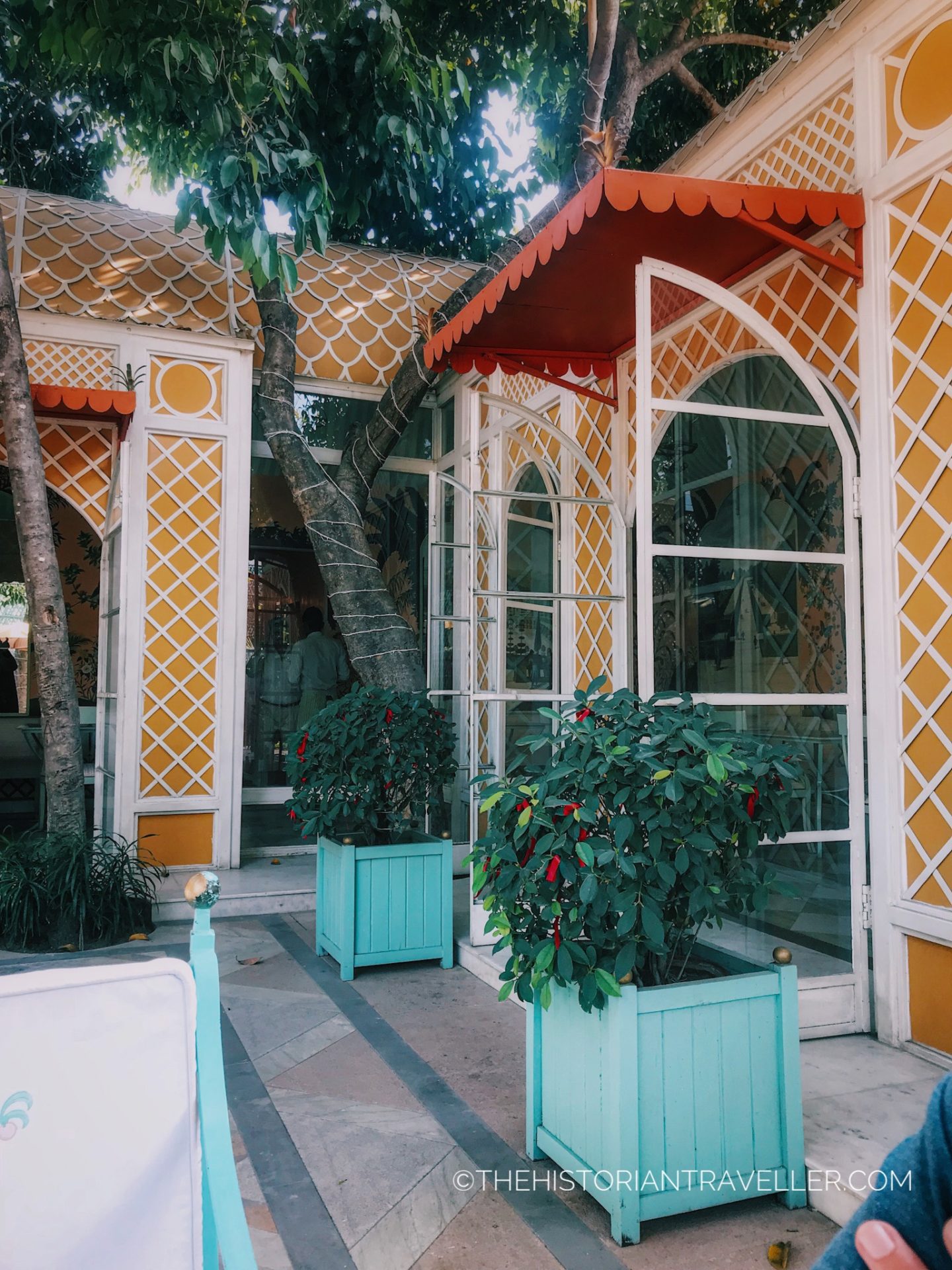
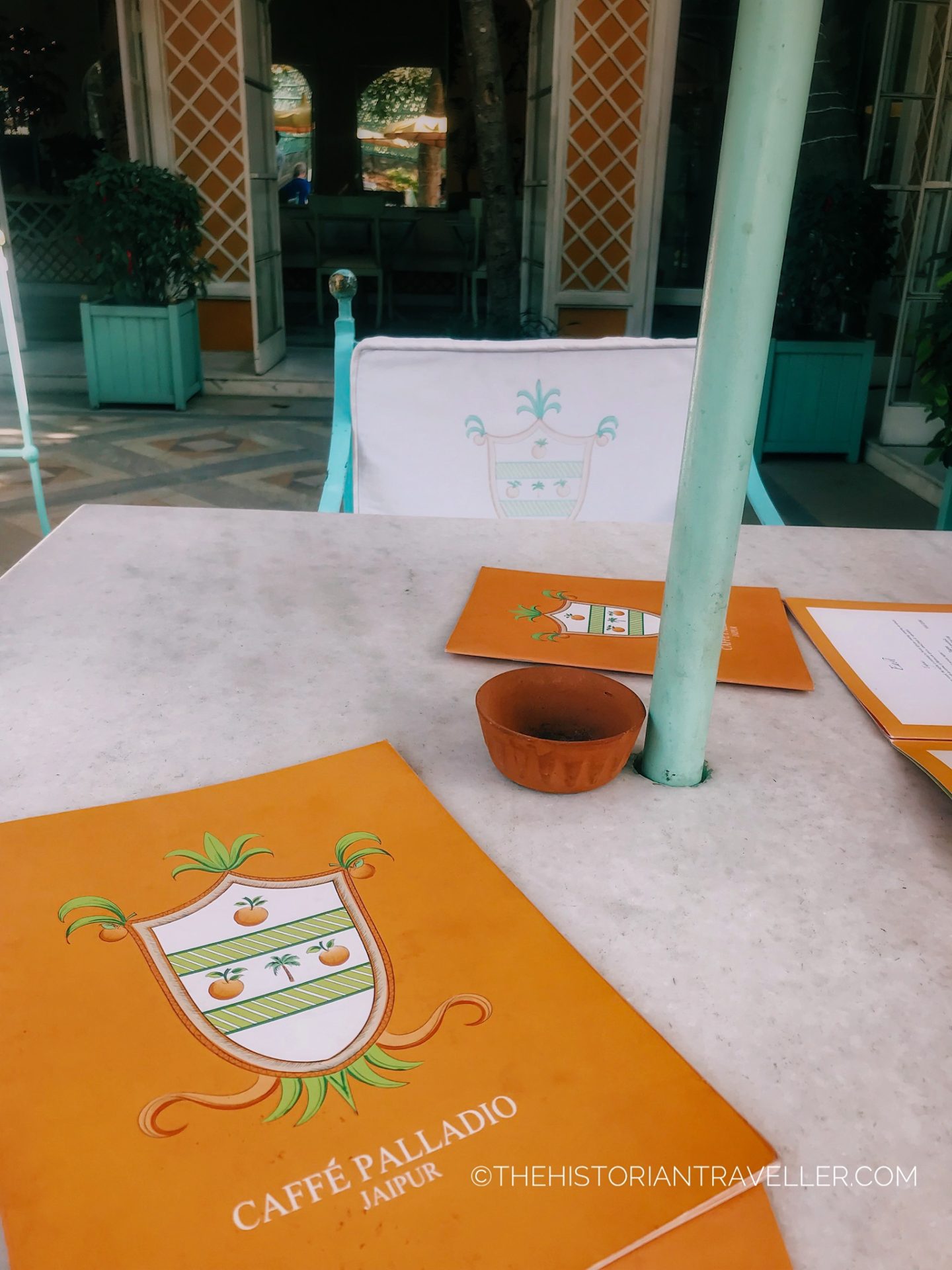
Caffé Palladio is usually open from lunch to mid afternoon. Differently from Bar Palladio, you don’t need a reservation to dine here. You can just pop in and request a seat. Despite visiting during high season, we didn’t find crowd when we had lunch there.
Caffè Palladio serves lunch but also desserts and afternoon tea. Prices are also quite affordable ranging from ₹200-850 (£2 -10) depending on the dish.
2021 UPDATE. Caffè Palladio is temporarily closed because it’s changing location! Therefore, you should no longer go to 100, Jawahar Lal Nehru Marg, Santha Bagh. Instead, is better to follow the updates from the website as the new location will be announced soon.
Third stop: explore the Galta-ji Monkey Temple
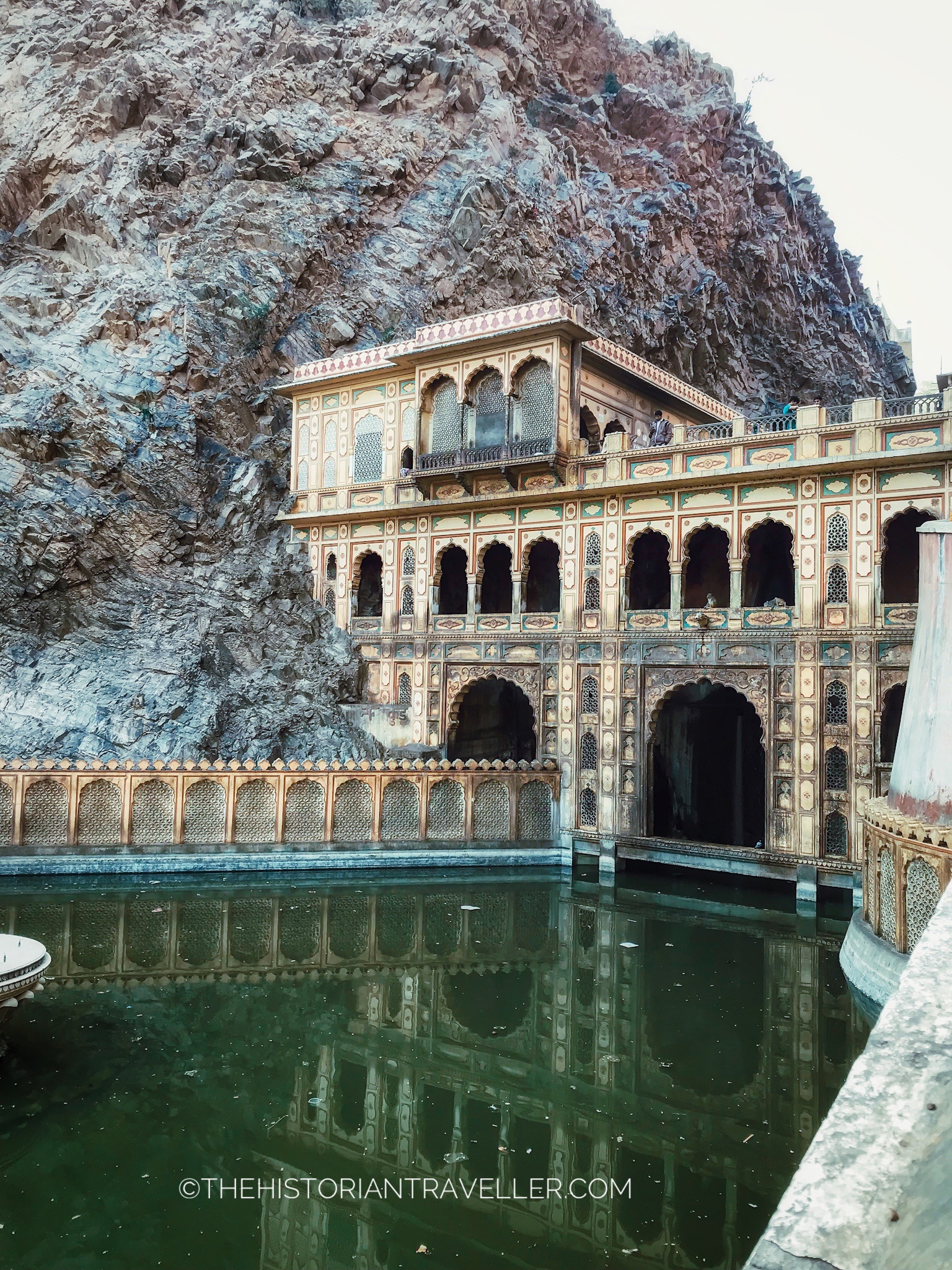
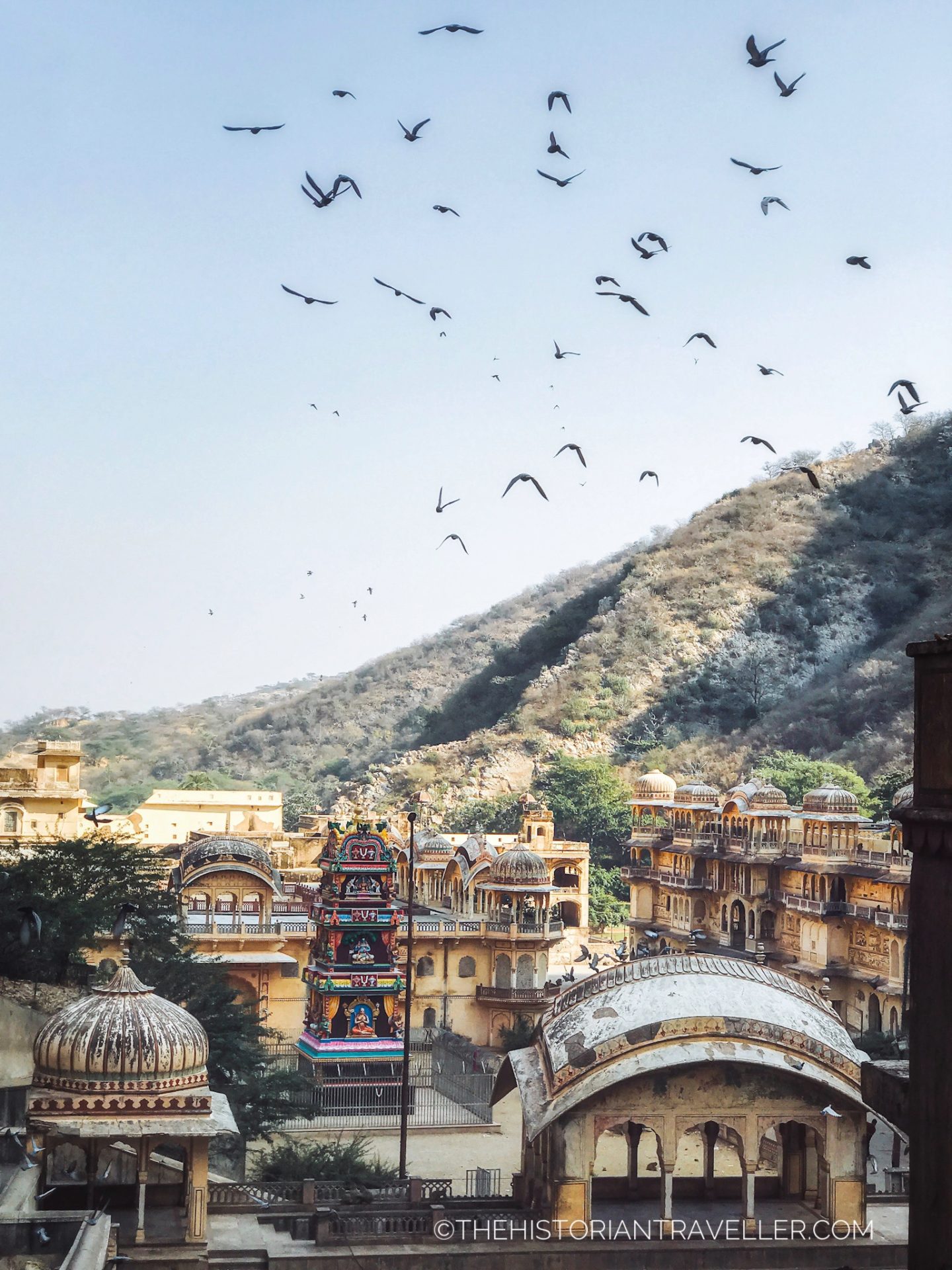
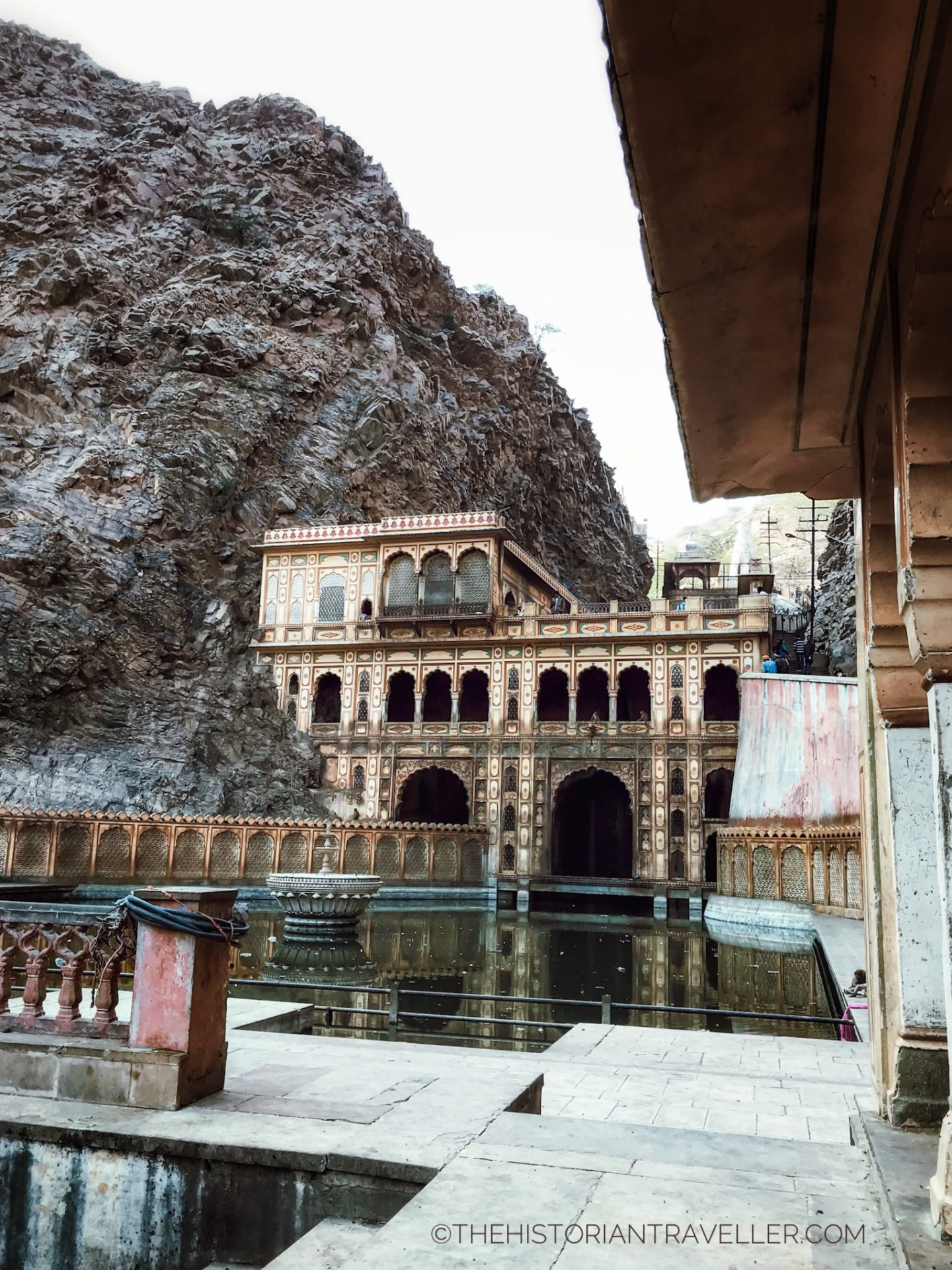
We had a crazy morning at the Pink City! In fact, we walked through picturesque bazaars, fell in love with the Rajput architecture and eat the most delicious food. We needed a lunch pause away from the continuous horn in central Jaipur. Recharged by pasta and bruschette from Caffè Palladio, we were ready to go on the road again. This time to explore Jaipur’s most hidden temple, the mysterious Galta – Ji. Carved into the mountain, ancient pilgrimage site and inhabited by a colony of 5,000 monkeys.
Jaipur hidden gem
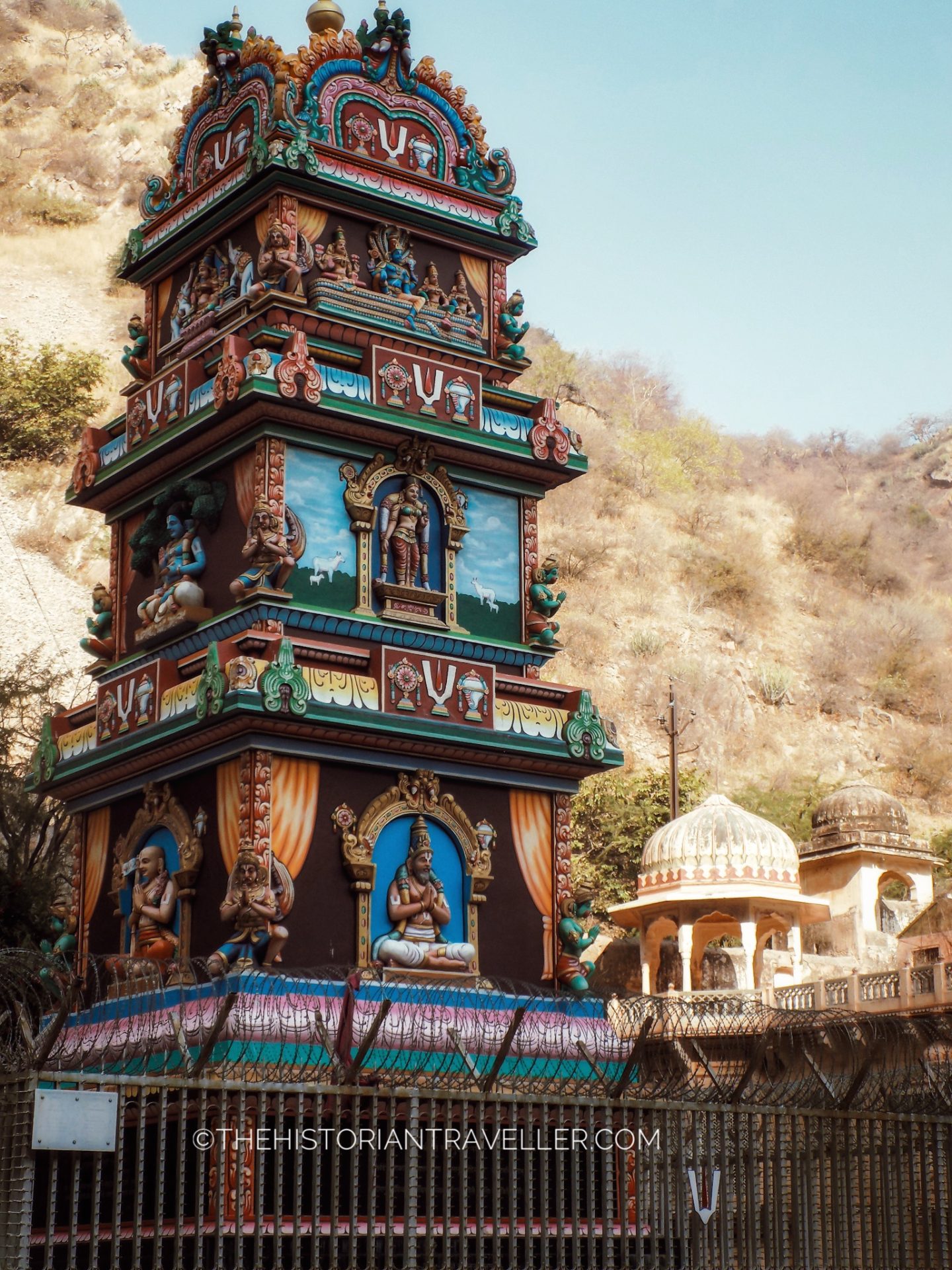
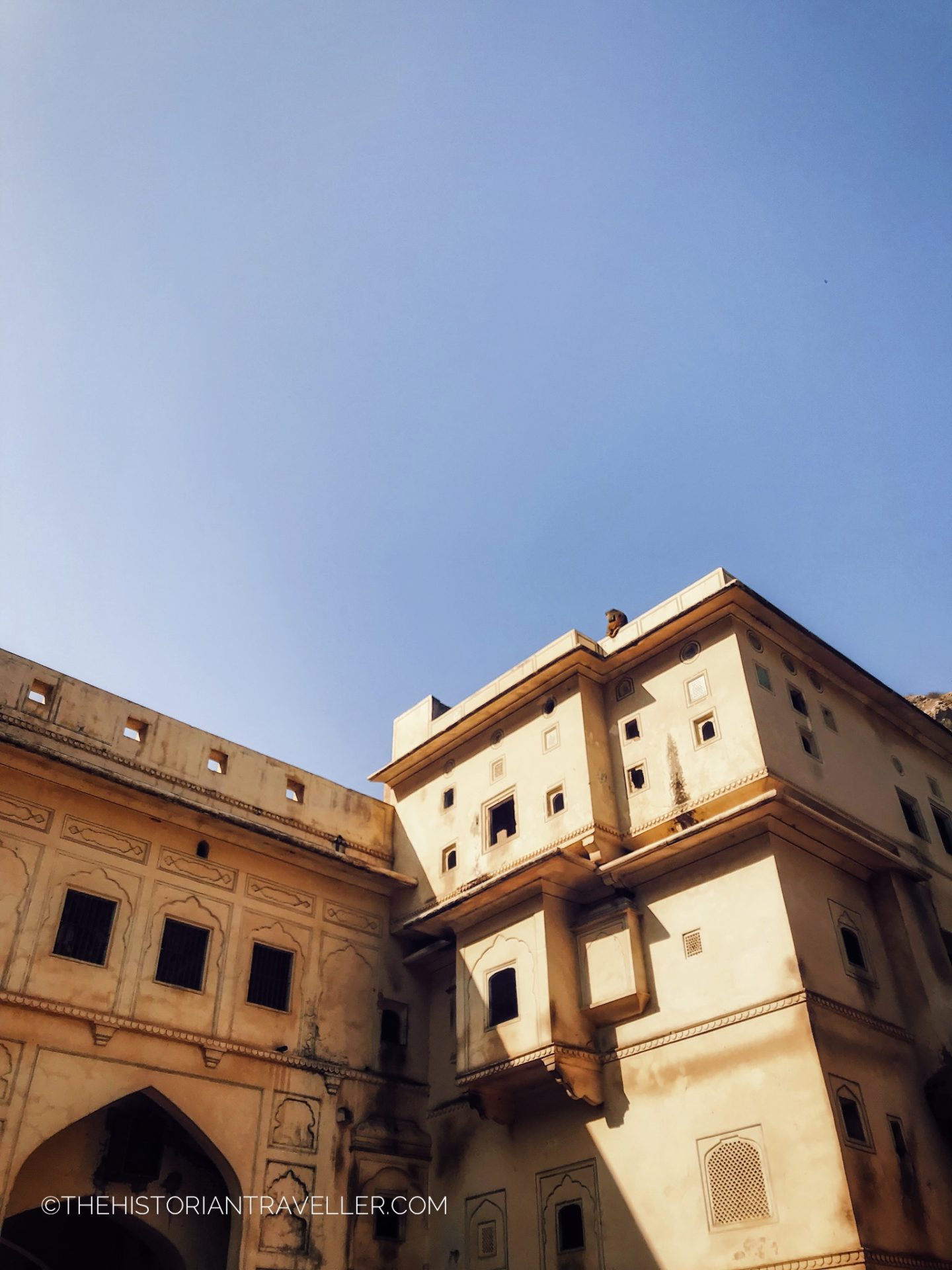
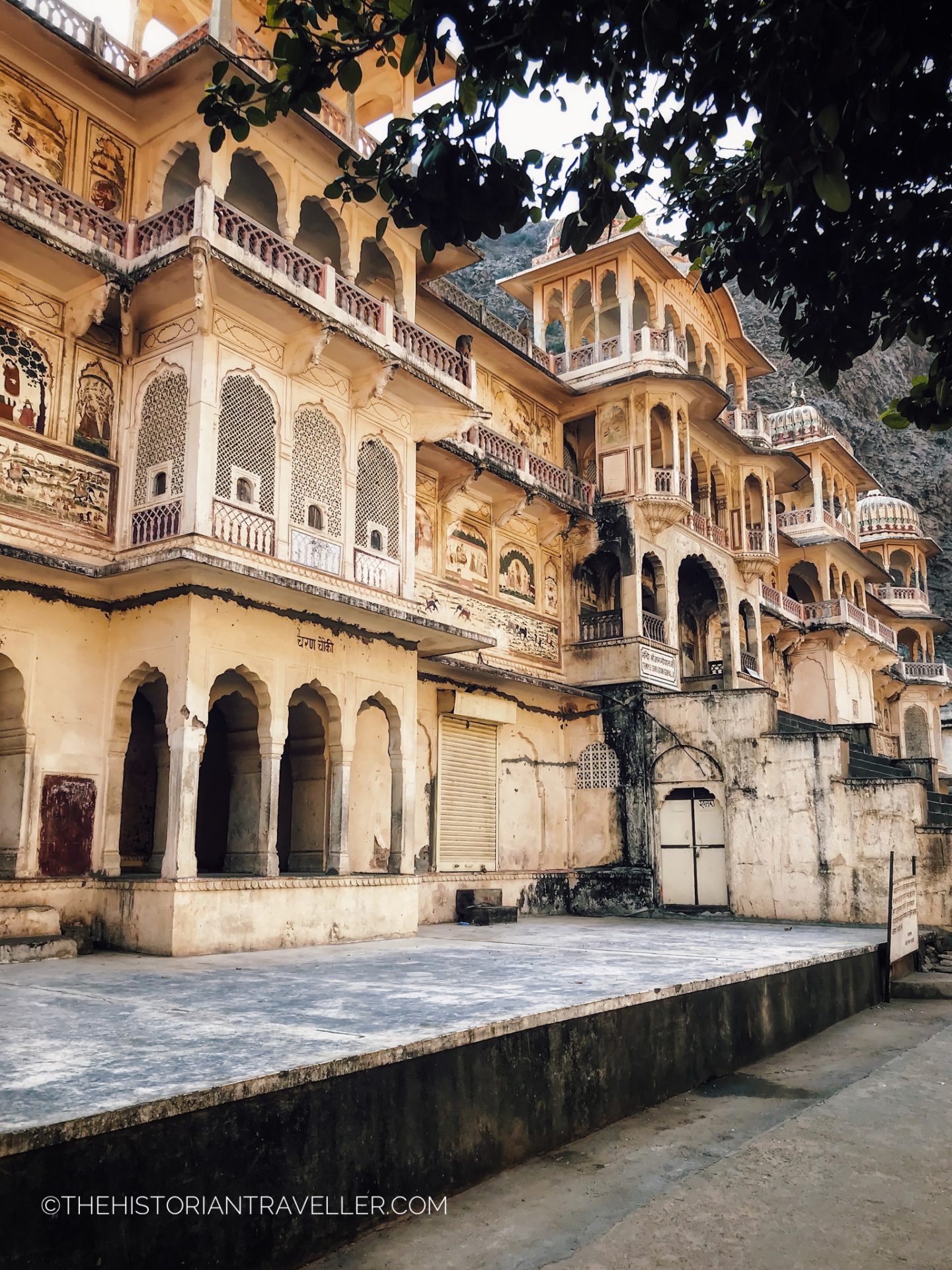
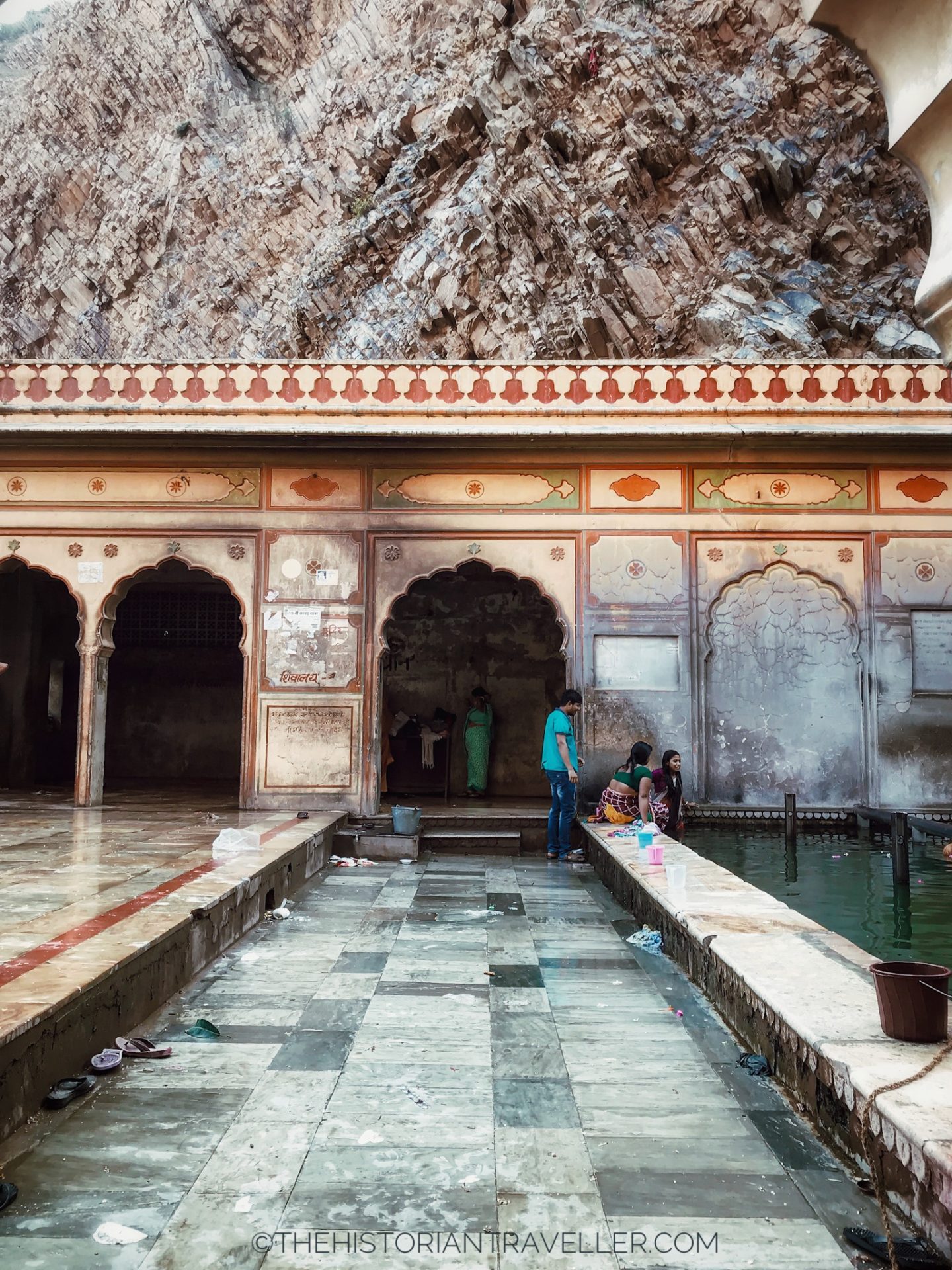
I always believed there are places that keeps a sort of timeless beauty. Despite disrepair, despite human being, despite the inclemency of time. Galta-ji is one of those places. Situated at 10 km far from Jaipur, within a narrow crevice, Galta-ji is still a site of pilgrimage for Hindu religious.
Don’t be surprised to see locals bathing in one of the seven, not-very-clean, pools around the sixteenth-century complex. The Hanuman temple, more famous as Galta-ji or simply “the monkey temple” is not a single structure. In fact, it is a complex of buildings stretched within a narrow mountain pass. This mountain pass is considered a sacred location since the sixteenth century. This because of the natural source of water flowing into the valley and gathering into the seven pools.
The biggest pool (the one you see when arriving) is called Galta Kund. It’s very deep and a local legend says that it never dries. Galta-ji’s temples are known also for their colony of mischief monkeys. Indeed, these monkeys are famous for being very naughty. Particularly against visitors (be warned they love so much to steal and bite!)
Mischief monkeys
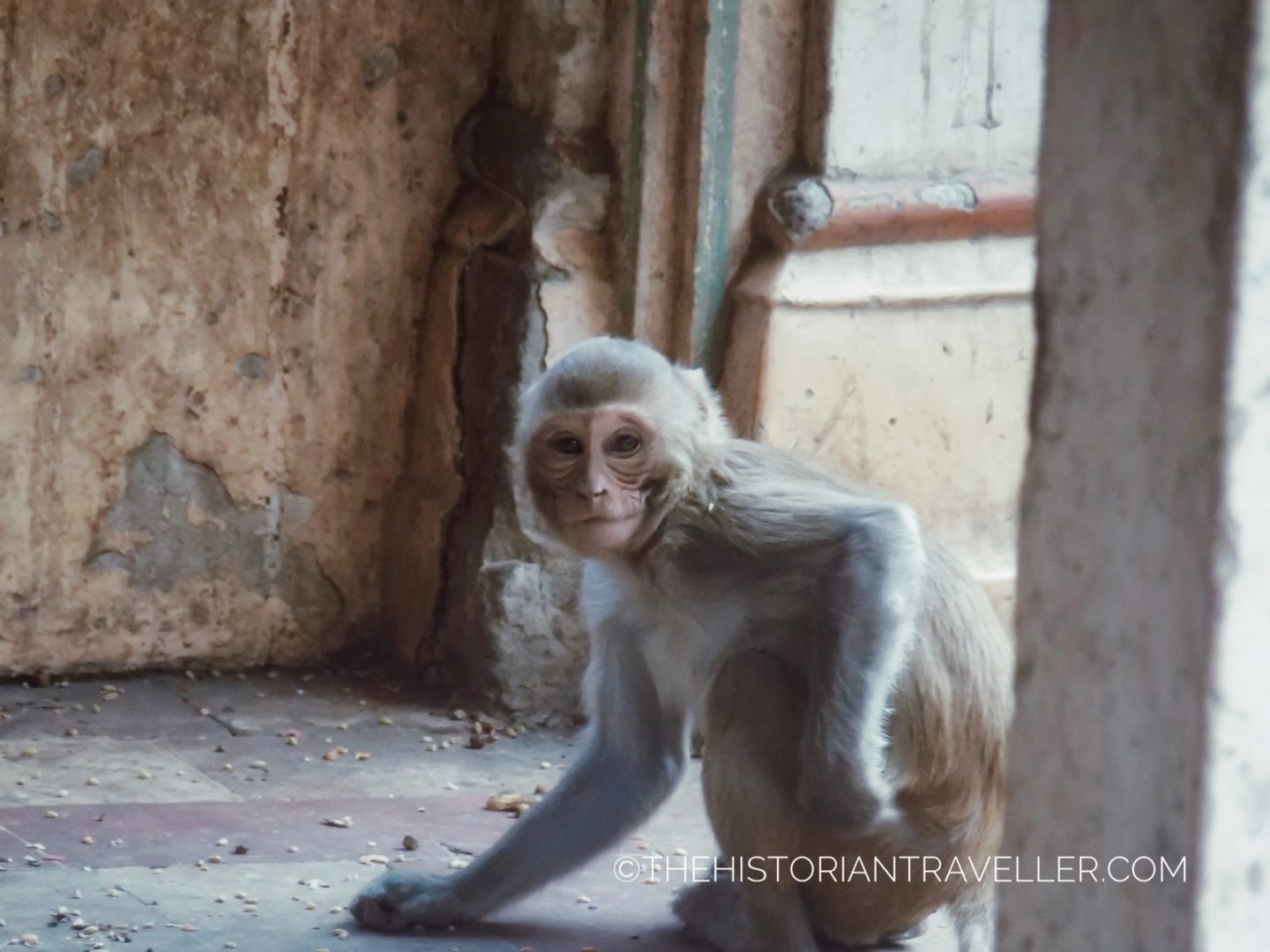
I found the monkeys at Galta- Ji quite unfriendly and most of the time nervous when people walked around them. I warmly suggest you to avoid touching or feeding them if possible. Even if they look cute and even if some local people offers you some food to approach them in a friendly way. Indeed, there is a high risk these animals carry rabies and might scratch or bite you.
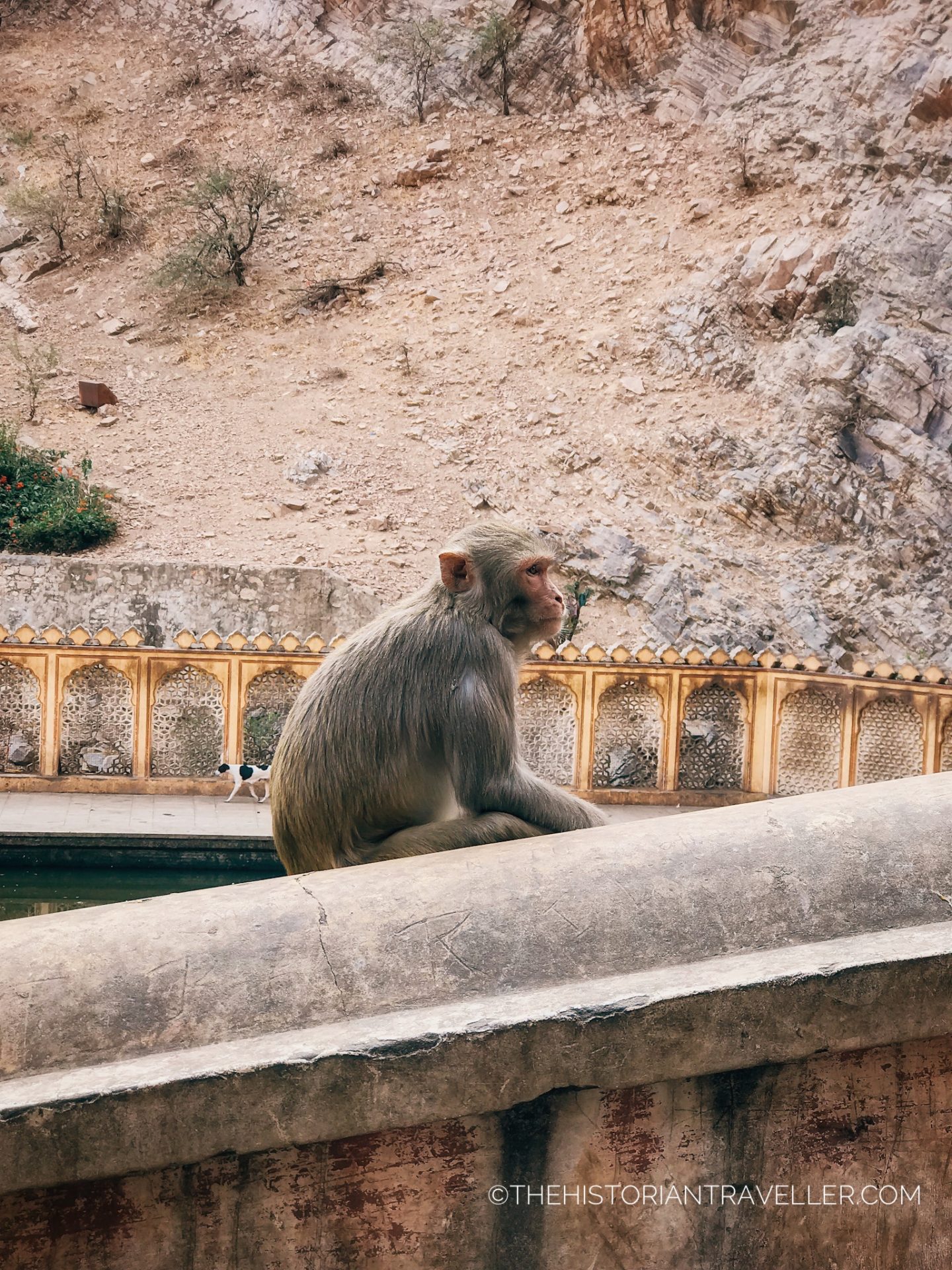
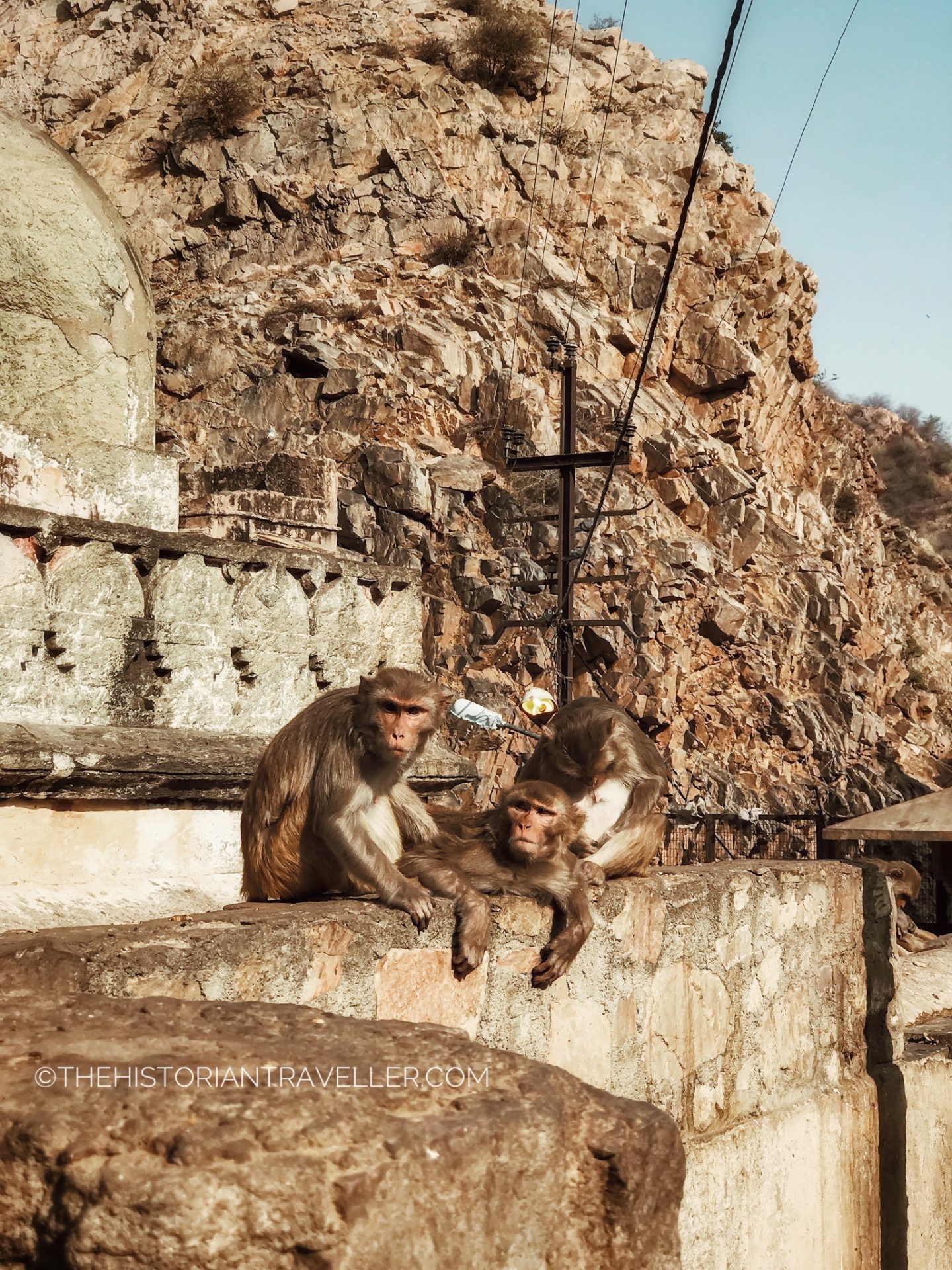
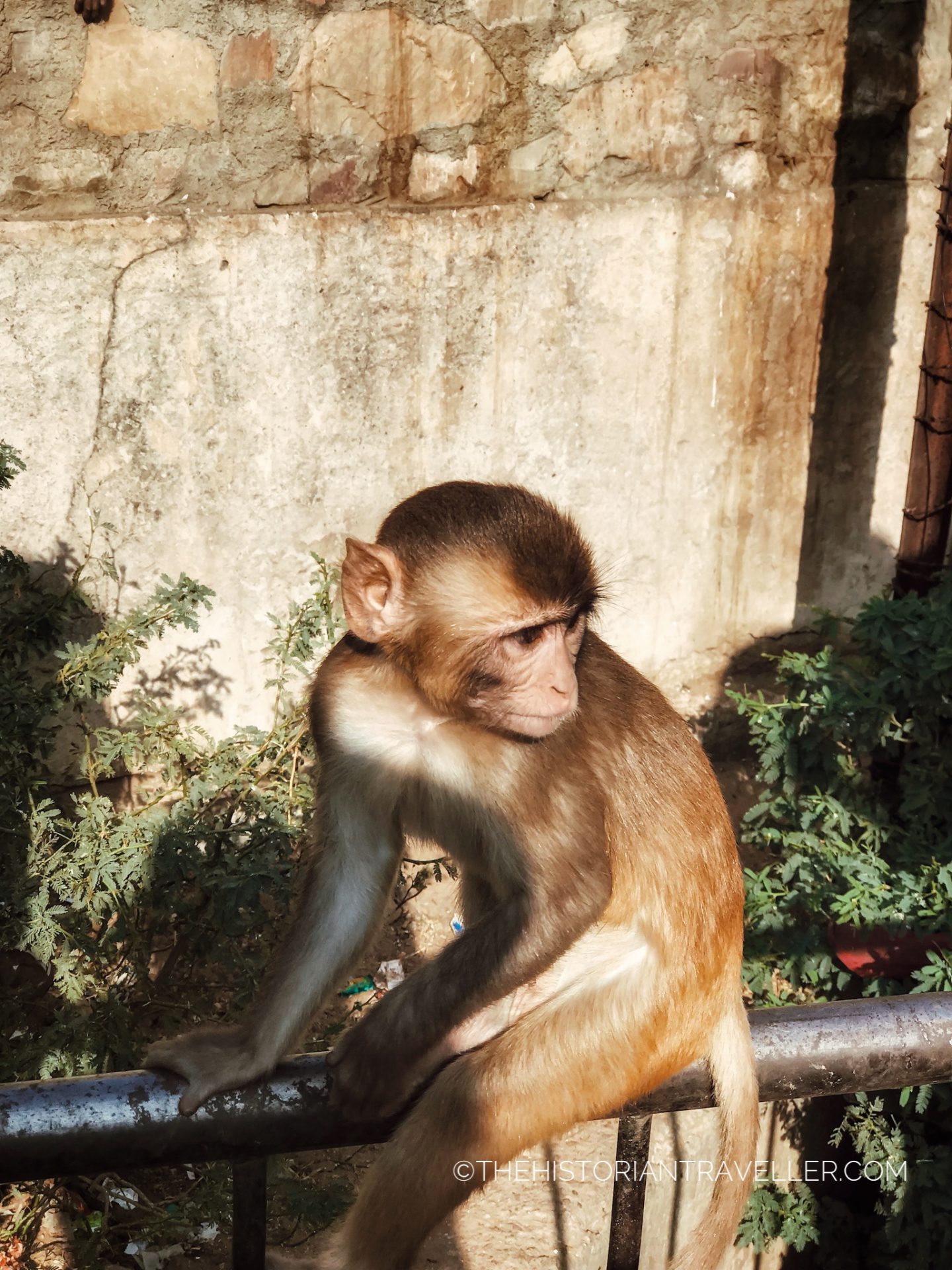
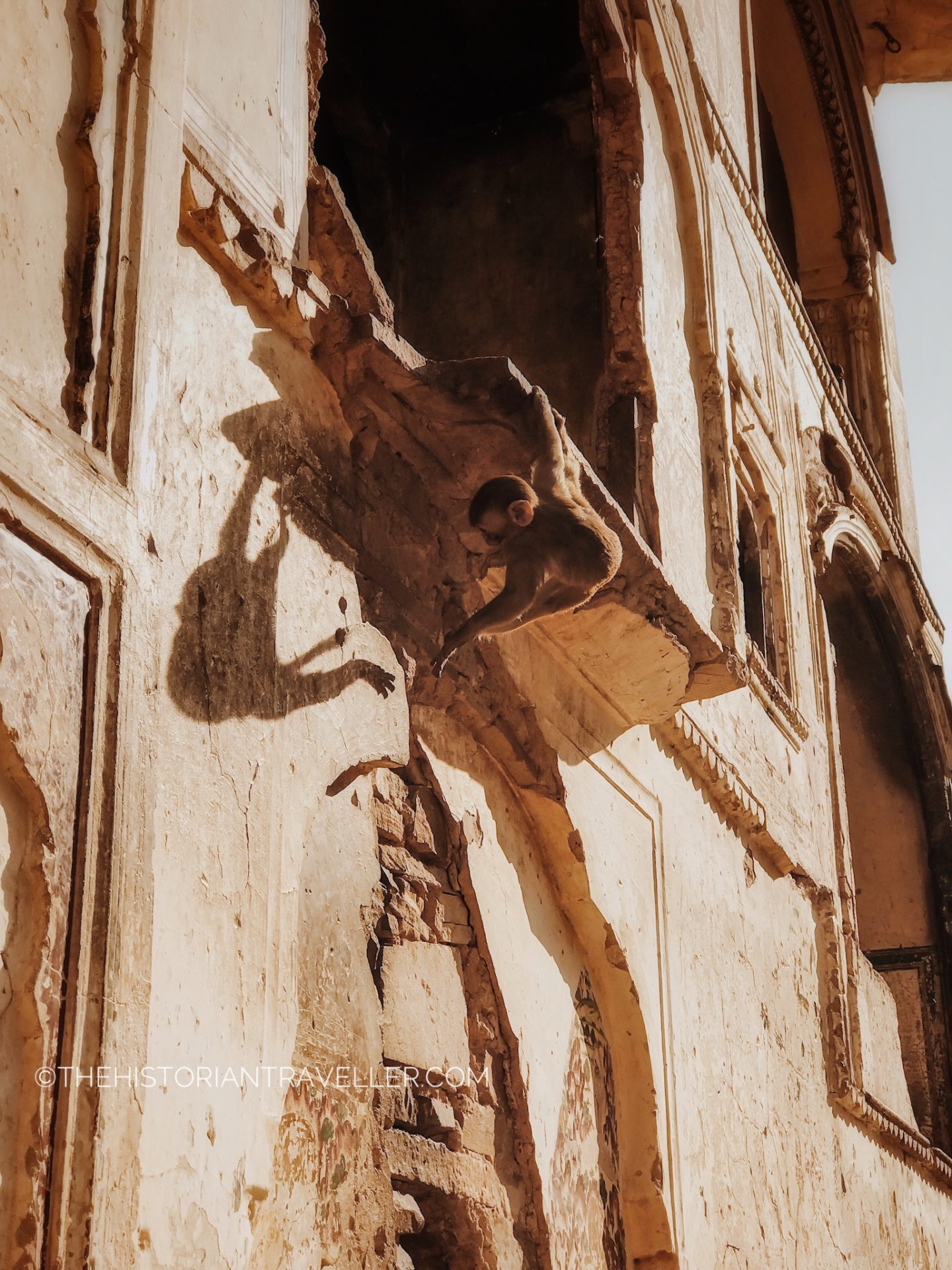
Tip: Don’t dare to put your camera or phone too close to the monkeys. They will steal it. Seriously. You know Abu, the Alladdin’s monkey? They are worse. Not because they are trained, just because they are used to this life. If you want to photograph them, carry with you a zoom lens and keep at distance. In fact, they don’t like being photographed either.
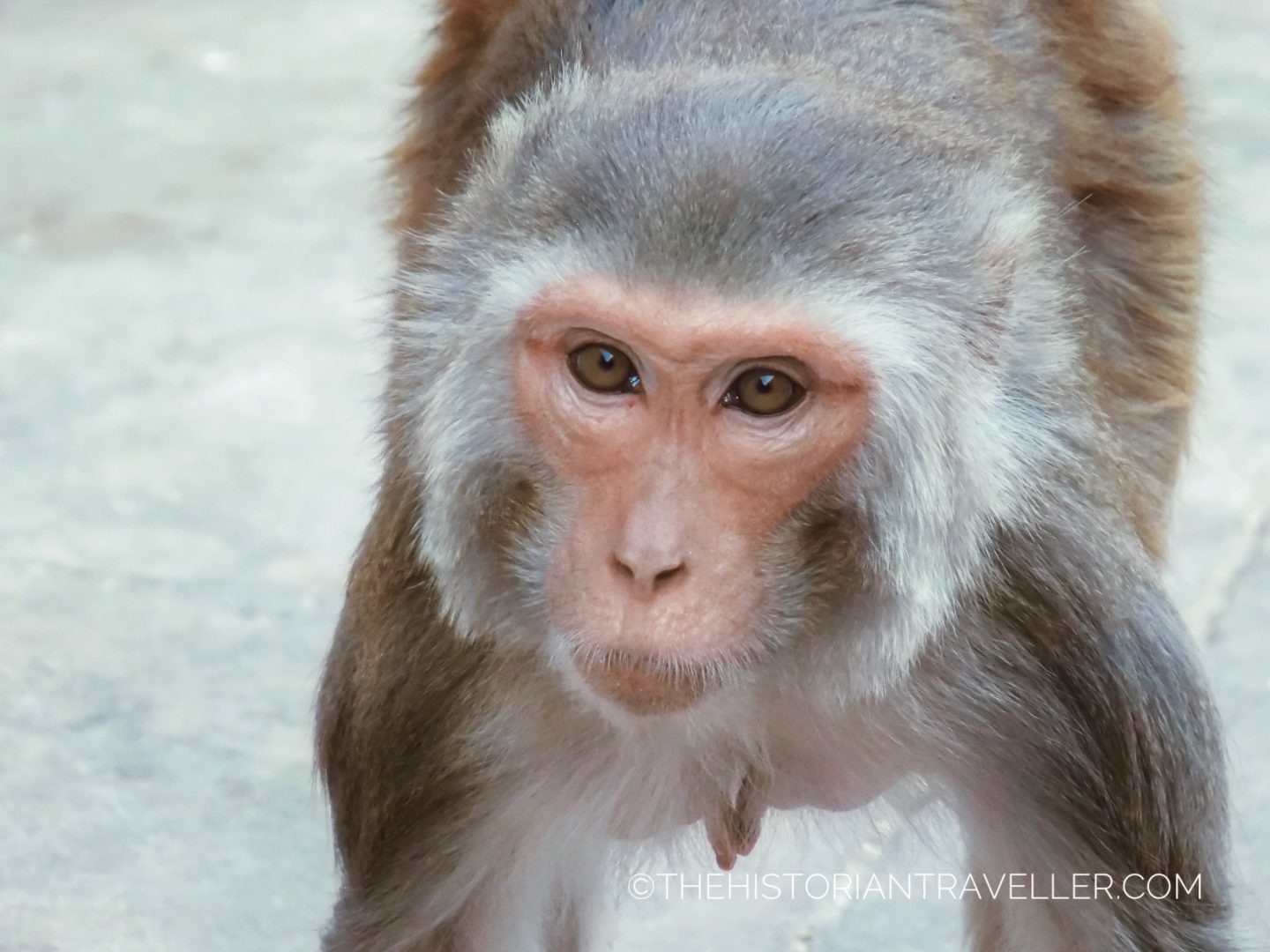
Moreover, the site is still used for pilgrimage and locals go there to pray. They might approach you to give you a benediction, a blessing or a forehead mark with kumkuma (the latter happen to us). Don’t be rude. You are a foreign on their sacred temple and this is a gesture of welcome and blessing for you.
Getting to Galta-ji
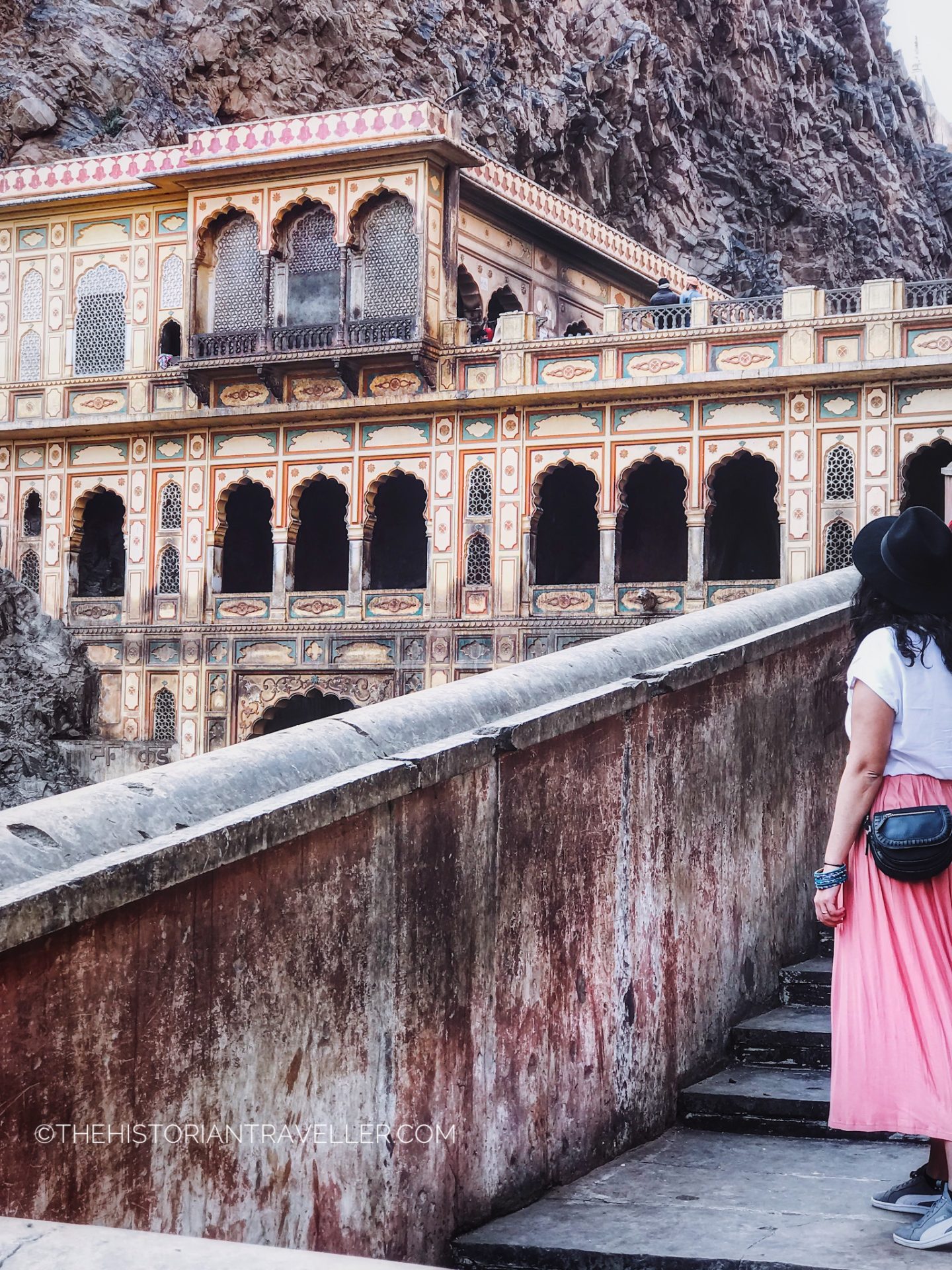
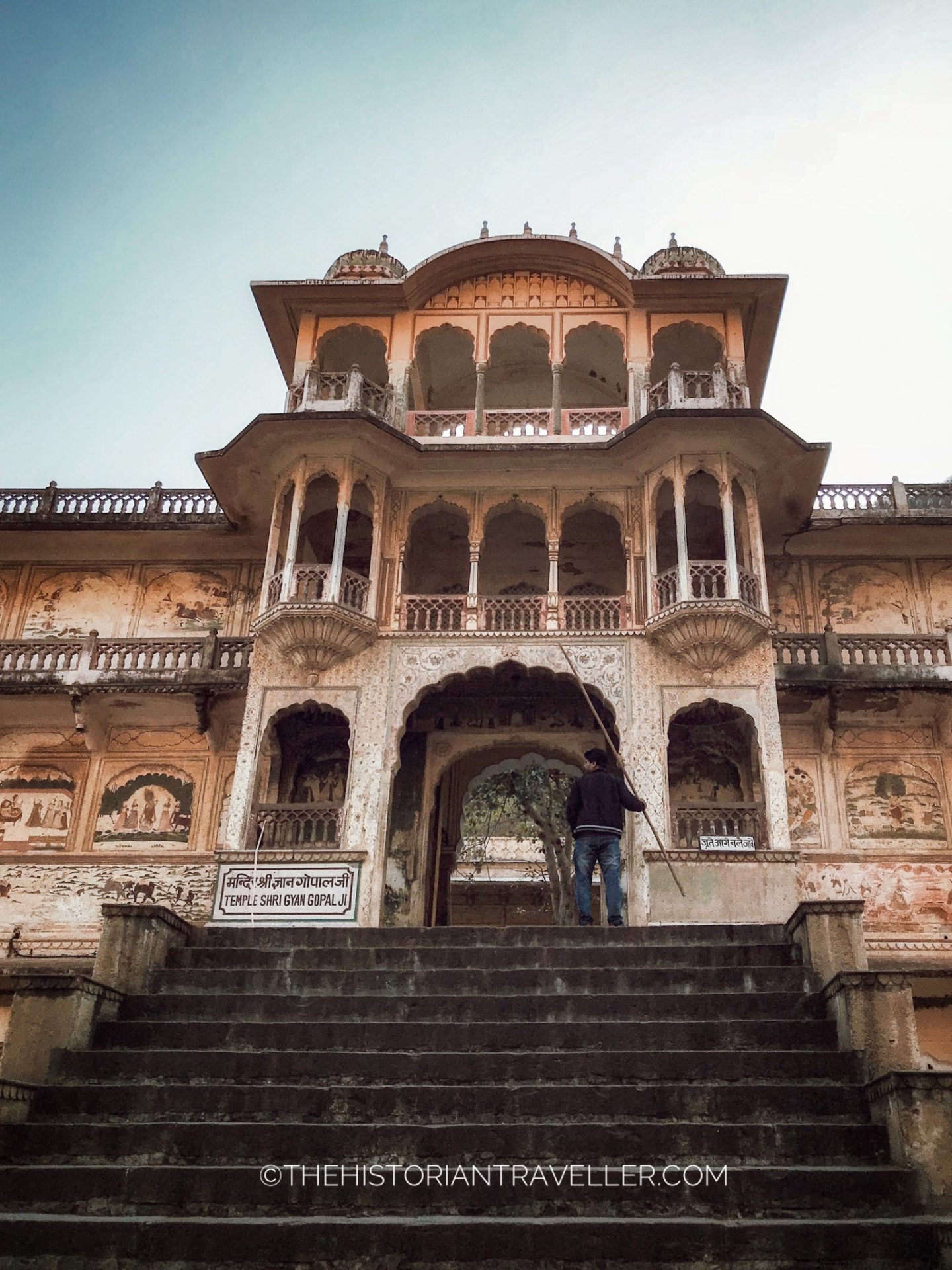

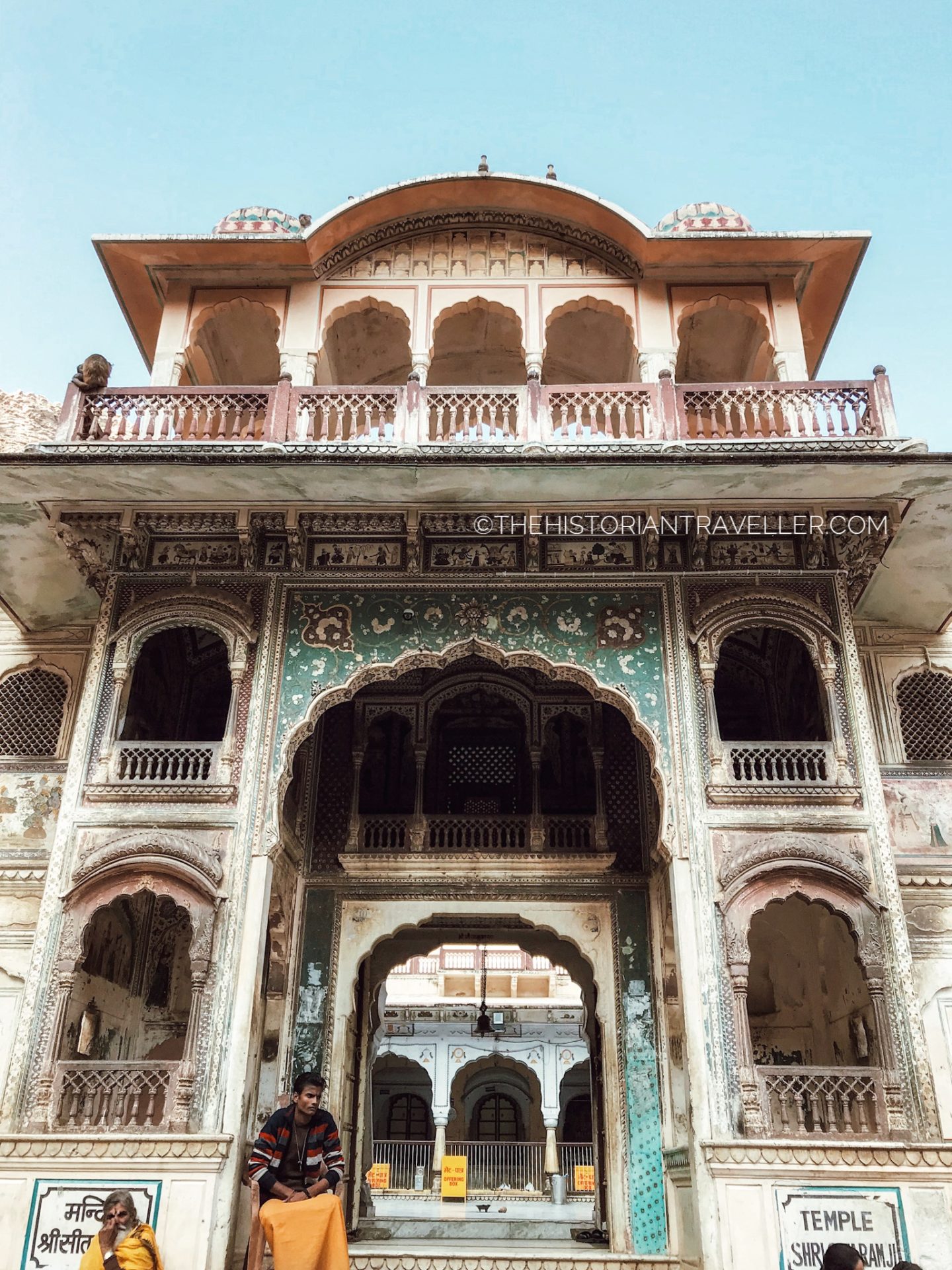
There are essentially two main ways to reach Galta-ji: by car or walking. If you go by car, this is a twenty minutes ride from central Jaipur. We booked a Uber straight in front Caffé Palladio. A one-way ride generally costs around ₹230-260.
If you decide to go walking, consider a 1h/1h and a half hike from the Pink city. Local call this route the “secret passage”. In fact, this is a small scenic route through the mountains (quite steep in the last 30 mins), The route pass via the Sun Temple and then arrives to Galta-ji. I actually don’t know anyone who did this route. Moreover, during our visit we were not equipped for a hike (plus my phone died at one point).
Therefore, I can’t guarantee if this is safe or nice to do (especially solo). I’m sure you can find some more info online but if you are not sure, take a taxi or a tuk tuk.
TIP: Be sure your driver understands you that he has to leave you straight in front of the temple entrance. Many drivers when they read “Galta-ji” will leave you at the village not at the temple. To be sure you can say “Monkey Temple” or “Hanuman Temple”. If by mistake you were dropped at the village, don’t panic. You can reach the temple by walking 10-15 minutes on the main road.
Galta-ji fees and opening hours
There is no official entrance fee to Galta-ji. However, a guardian at the entrance will ask you a ₹50 donation for the use of your camera equipment, even if it’s just a phone.
Last stop. Getting lost in the Sisodia Rani Ka Bagh
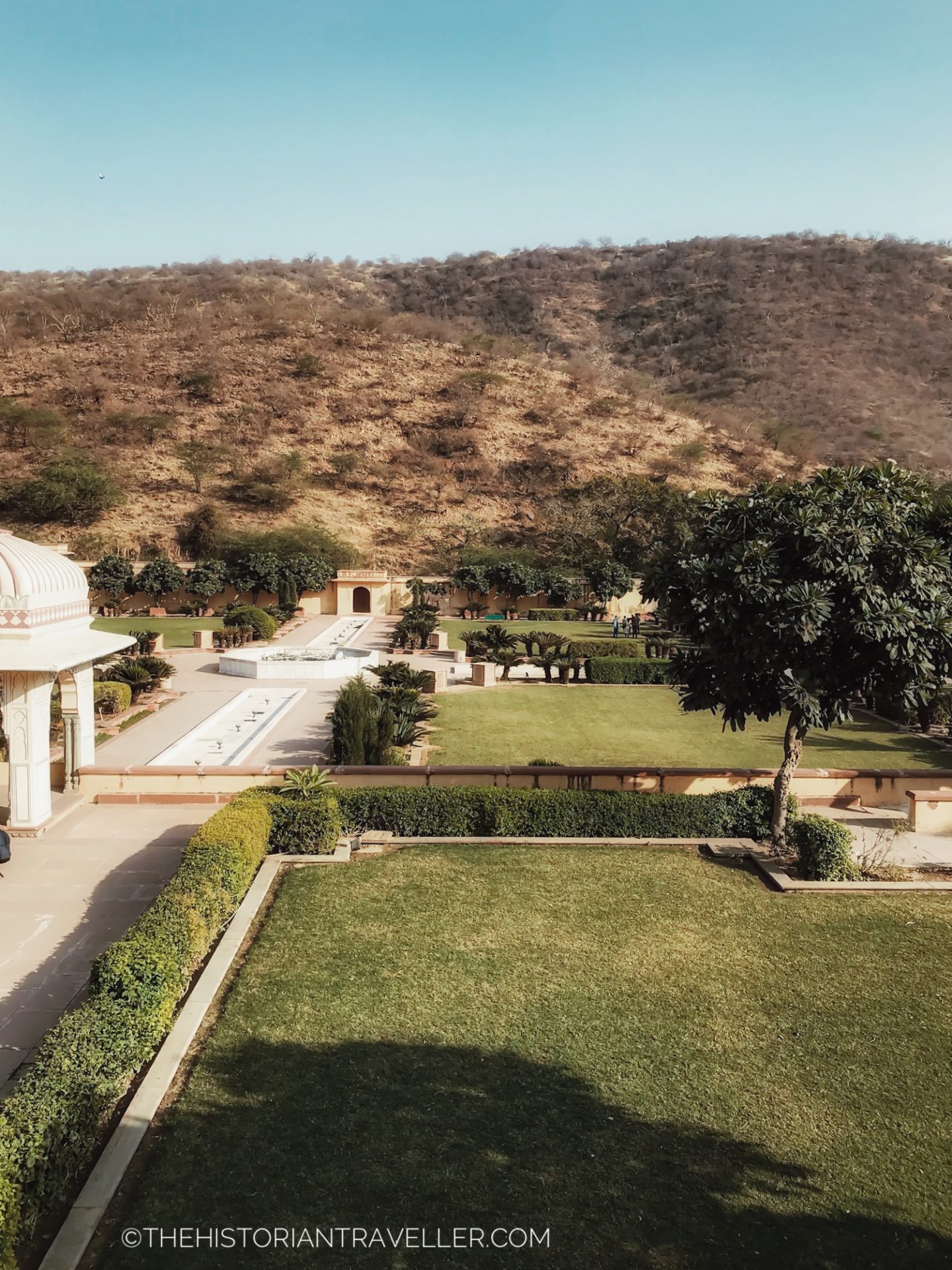
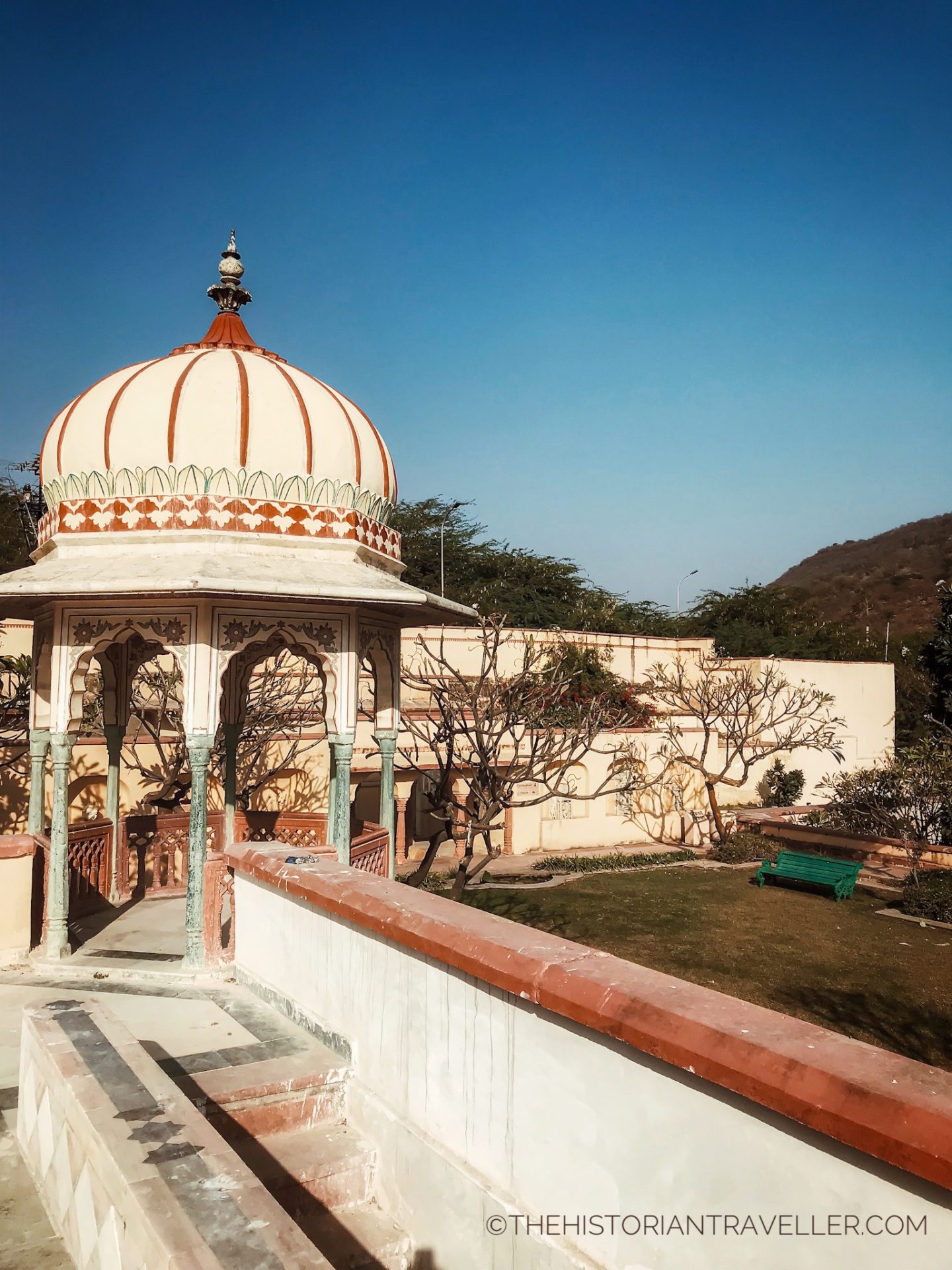
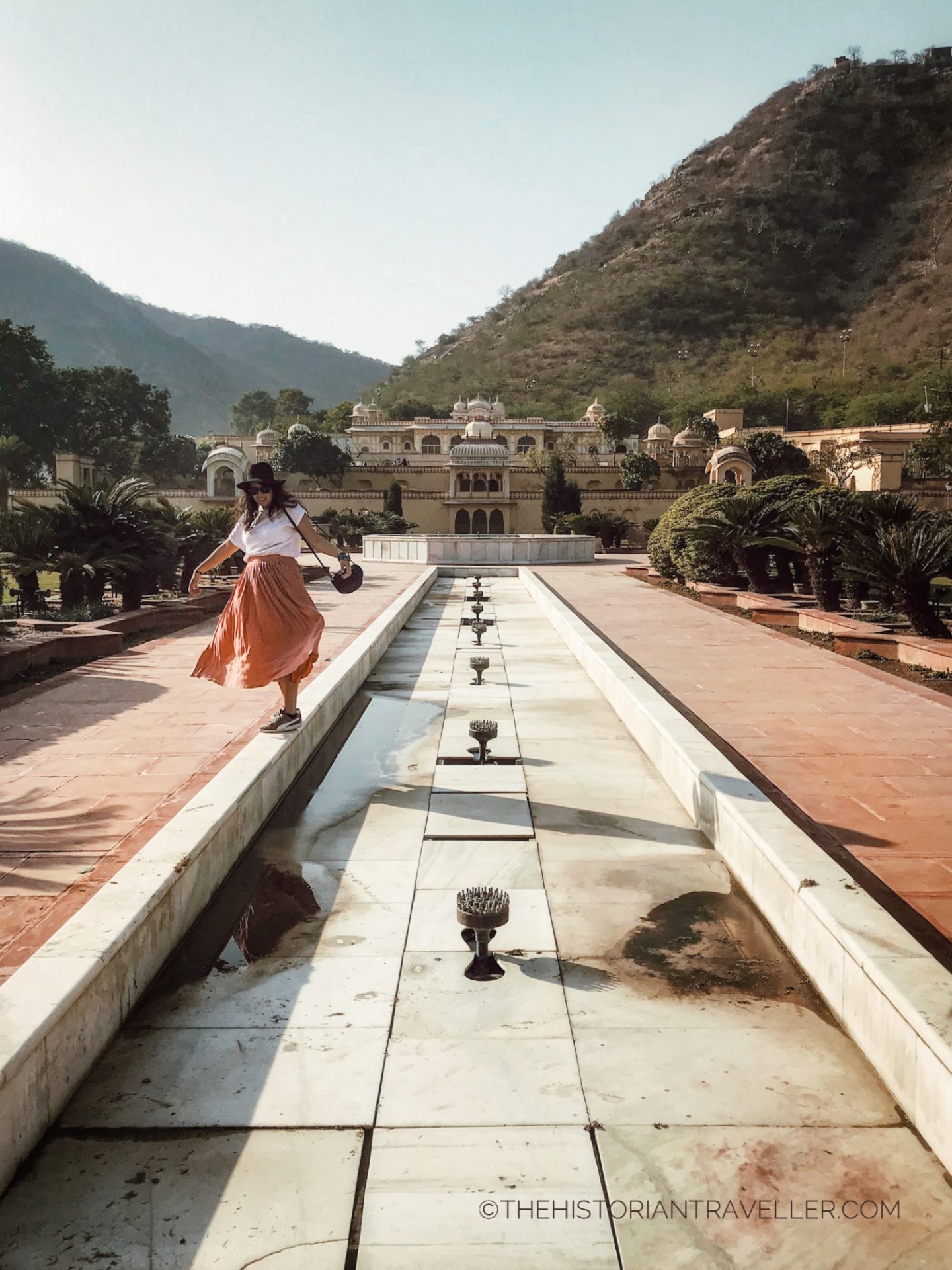
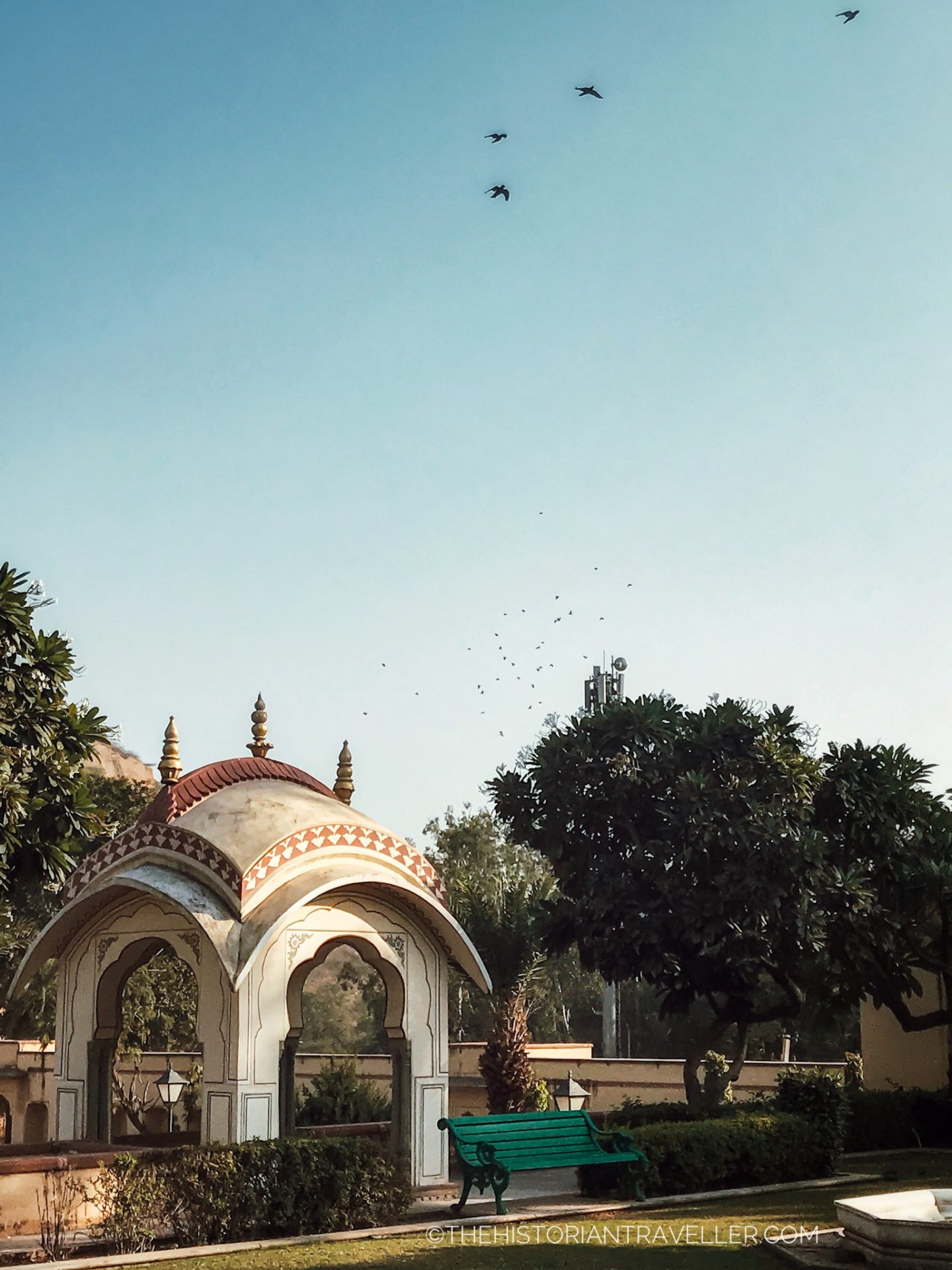
99% of the people I know who went to Jaipur, never heard about this place. They remained quite shocked in seeing that it was just less than 4 km from Galta-ji. When I planned our itinerary, I considered that, if everything went smoothly, after Galta-ji we should have still a couple of hours to explore. So, I was searching for a stop not too far from the temple. Here I found the Sisodia Garden.
A brief history of Sisodia Garden
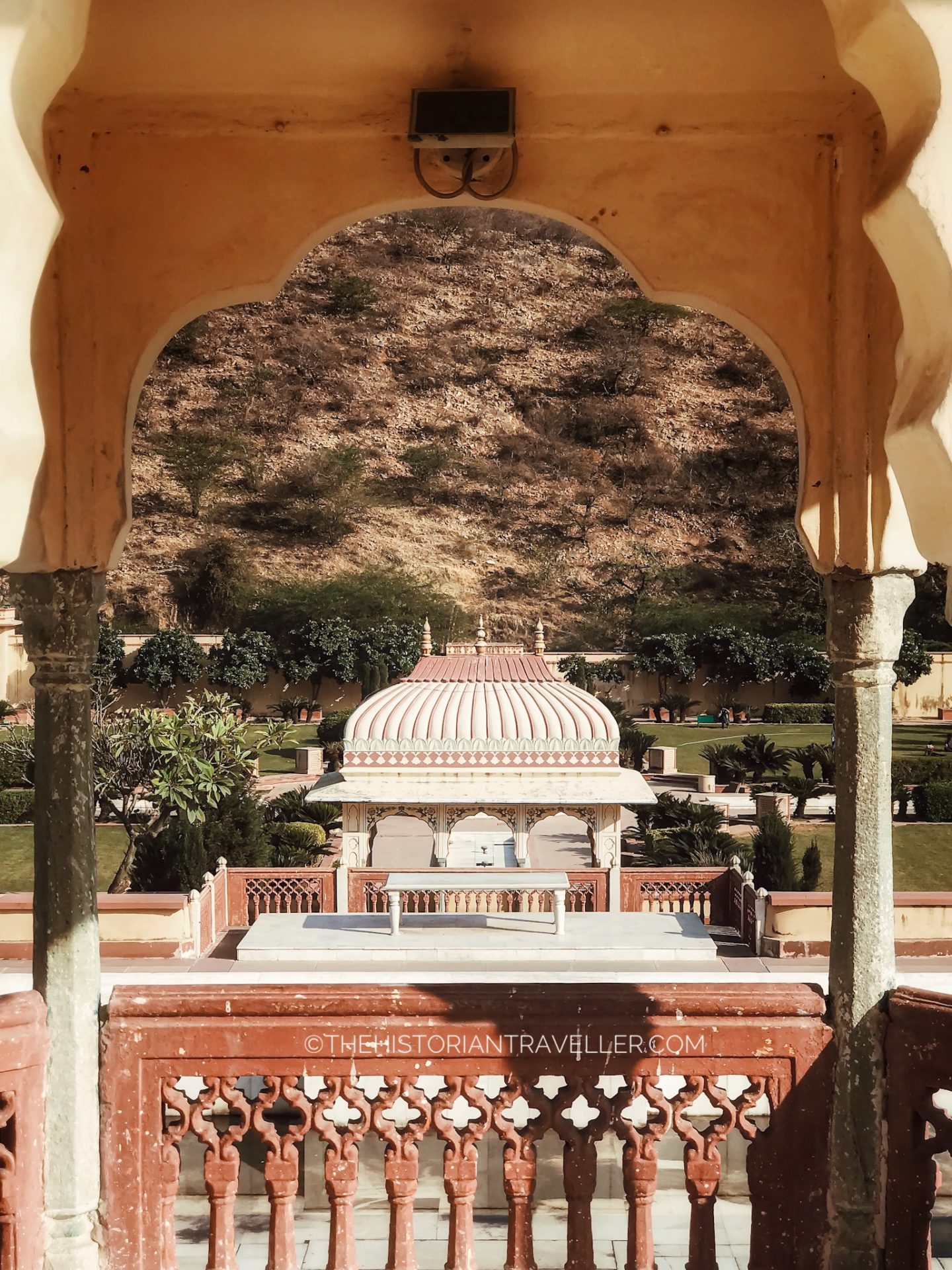
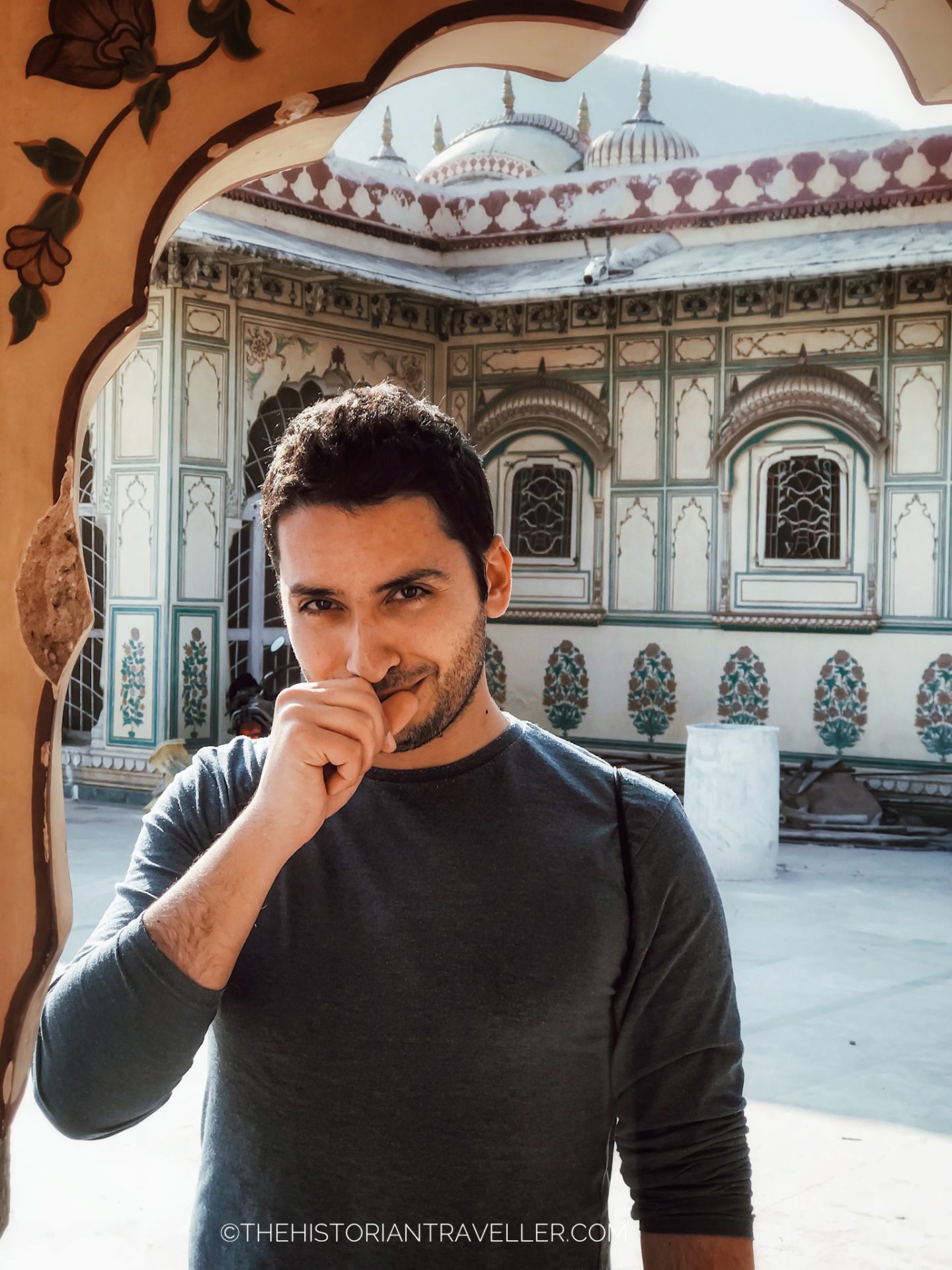


The Sisodia rani ka bag more famous with the name “Sisodia Garden“, is an eighteenth-century palace and garden built by Maharaja Sawai Jai Singh in honour of his second wife, Queen Sisodia Rani.
The garden represented for the Maharajah the symbol of his eternal love for the queen. The whole structure was designed entirely with the purpose of showing her this love. How romantic is this??? Sisodia was a princess from Udaipur and this luscious palace served as a peaceful retreat remembering her the beauty of her former home.
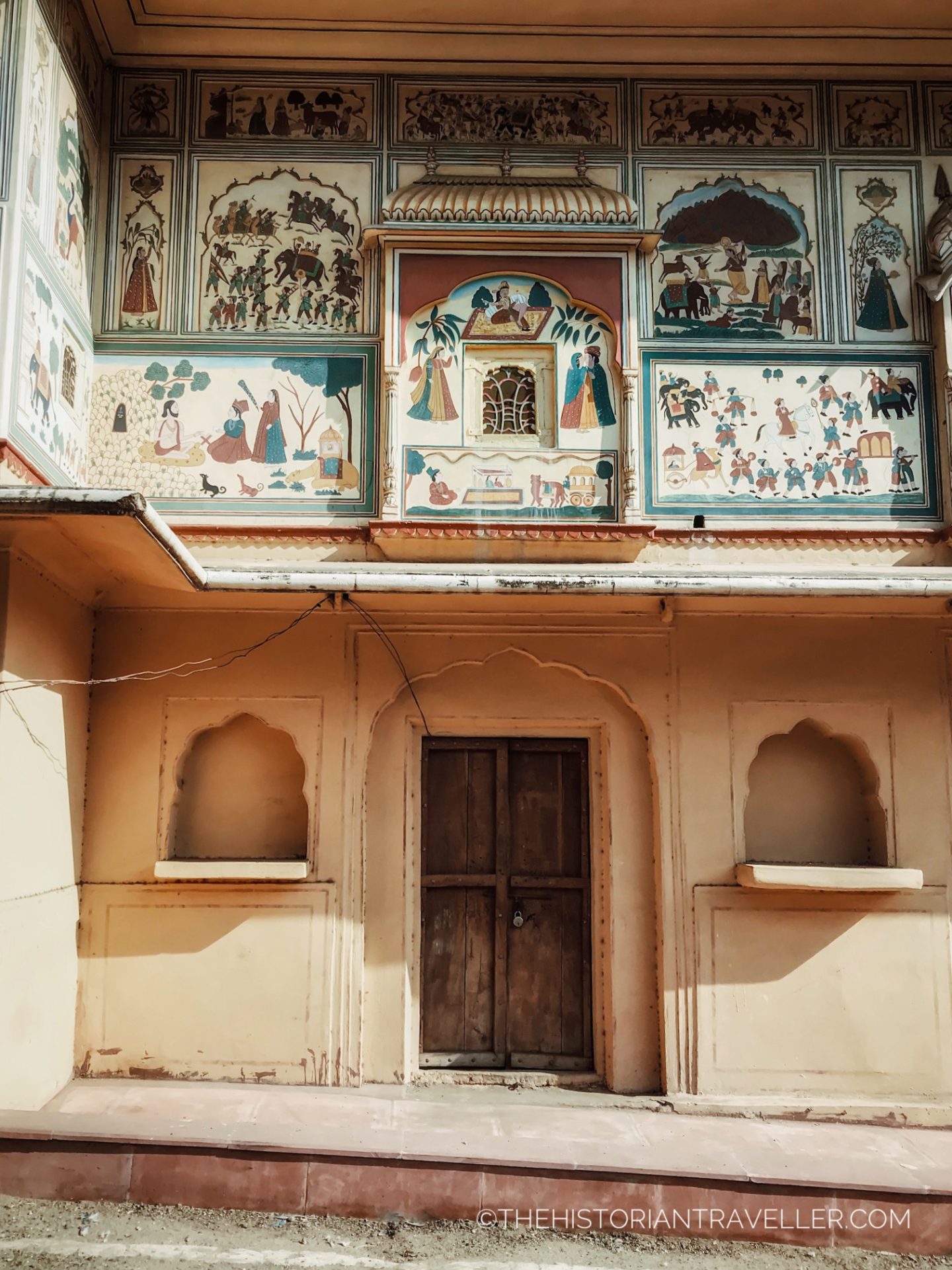
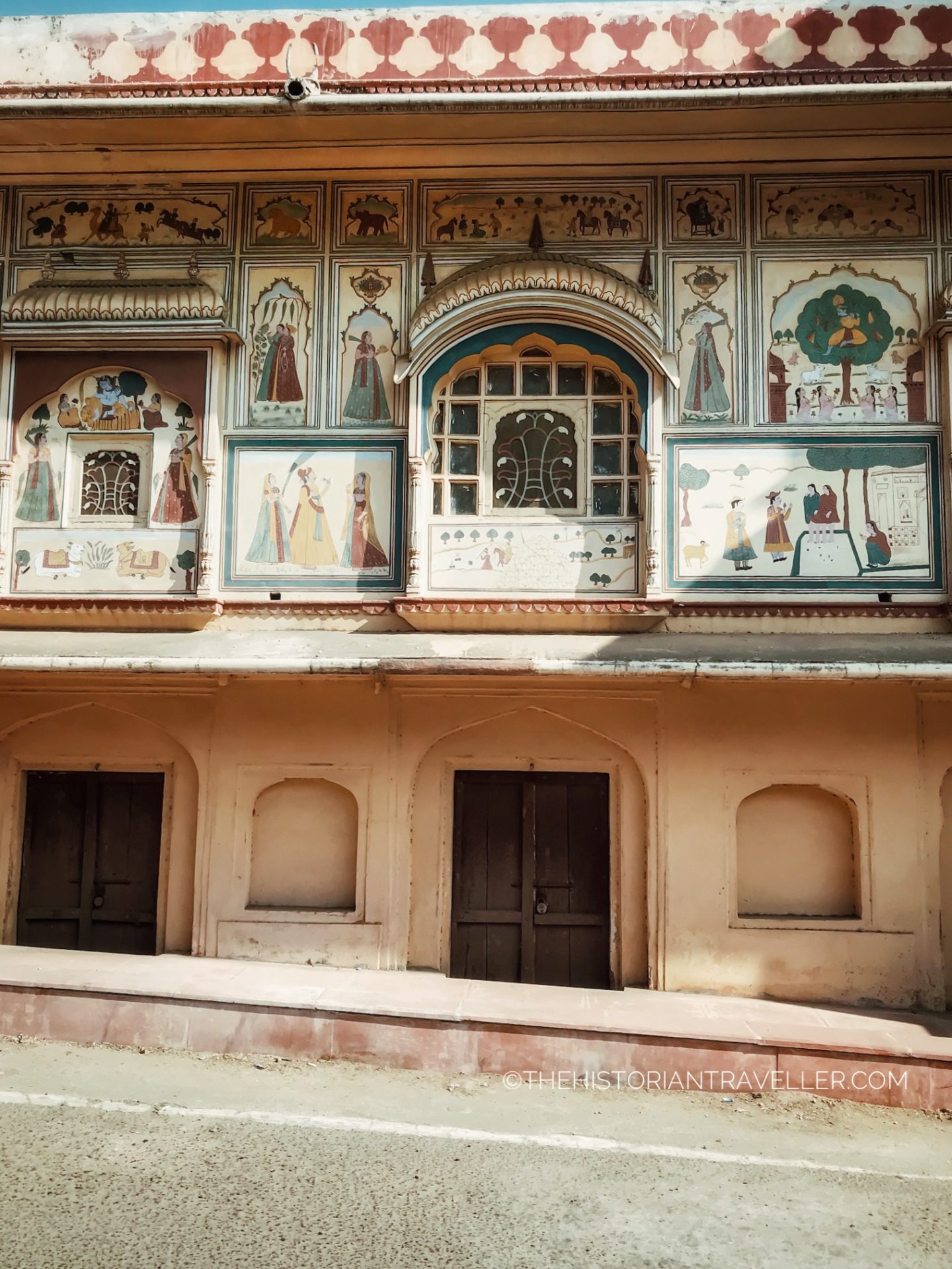
The palace is entirely painted with scenes of the Radha-Krishna love. This symbolises the love of the Maharajah for Sisodia.
How to reach the Sisodia Garden
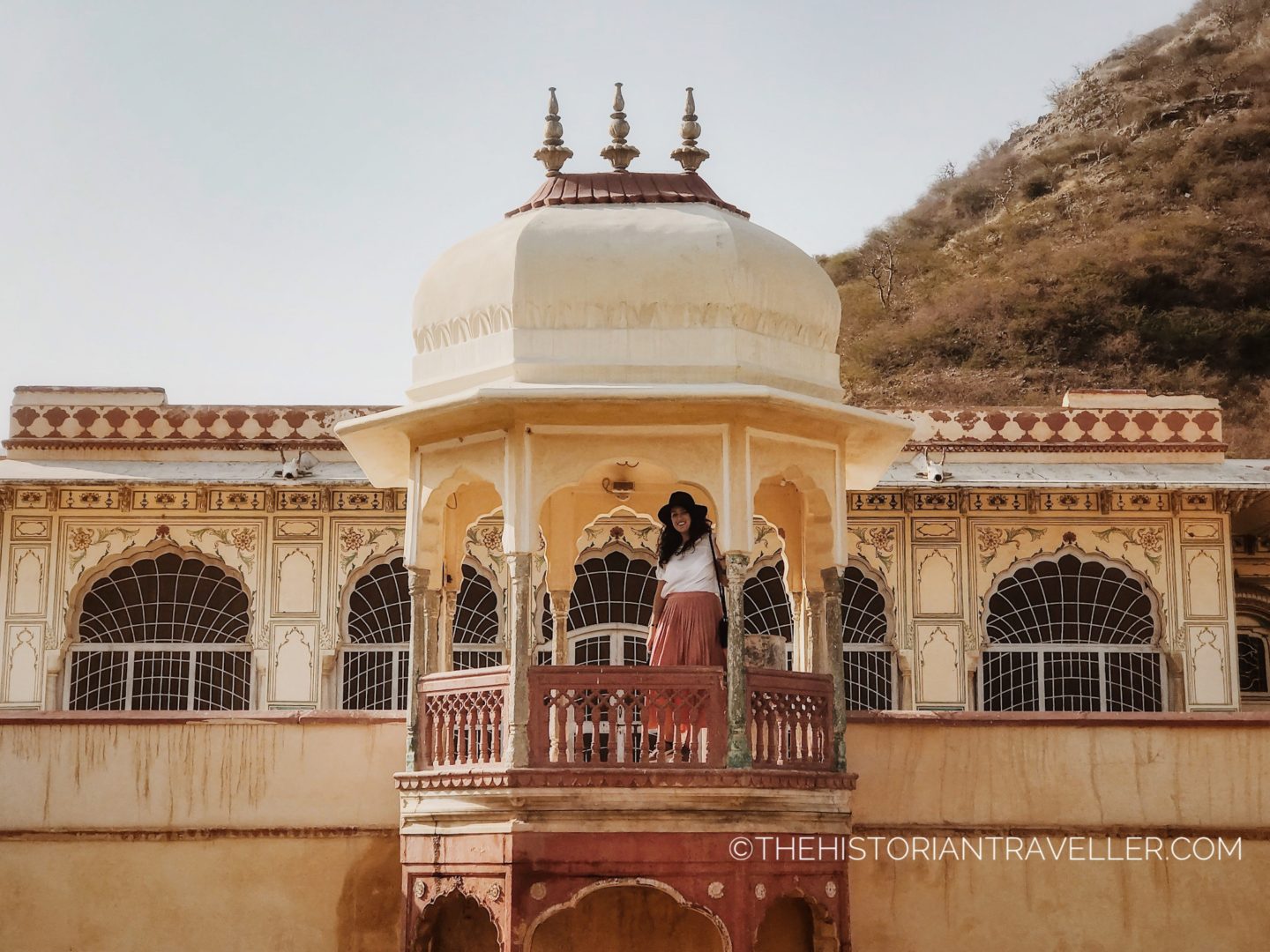
The Sisodia Garden is at just 4 km from the Galta-ji temple. If you’re up for a walk you can just exit the temple and follow the route down towards Jaipur (there is only one route, so you can’t go wrong). The temple entrance is on the street. If you want to save a bit of time, you can take one of the many tuk tuks at the exit of Galta-ji. It’s very cheap and safe.
Fees and Opening Hours
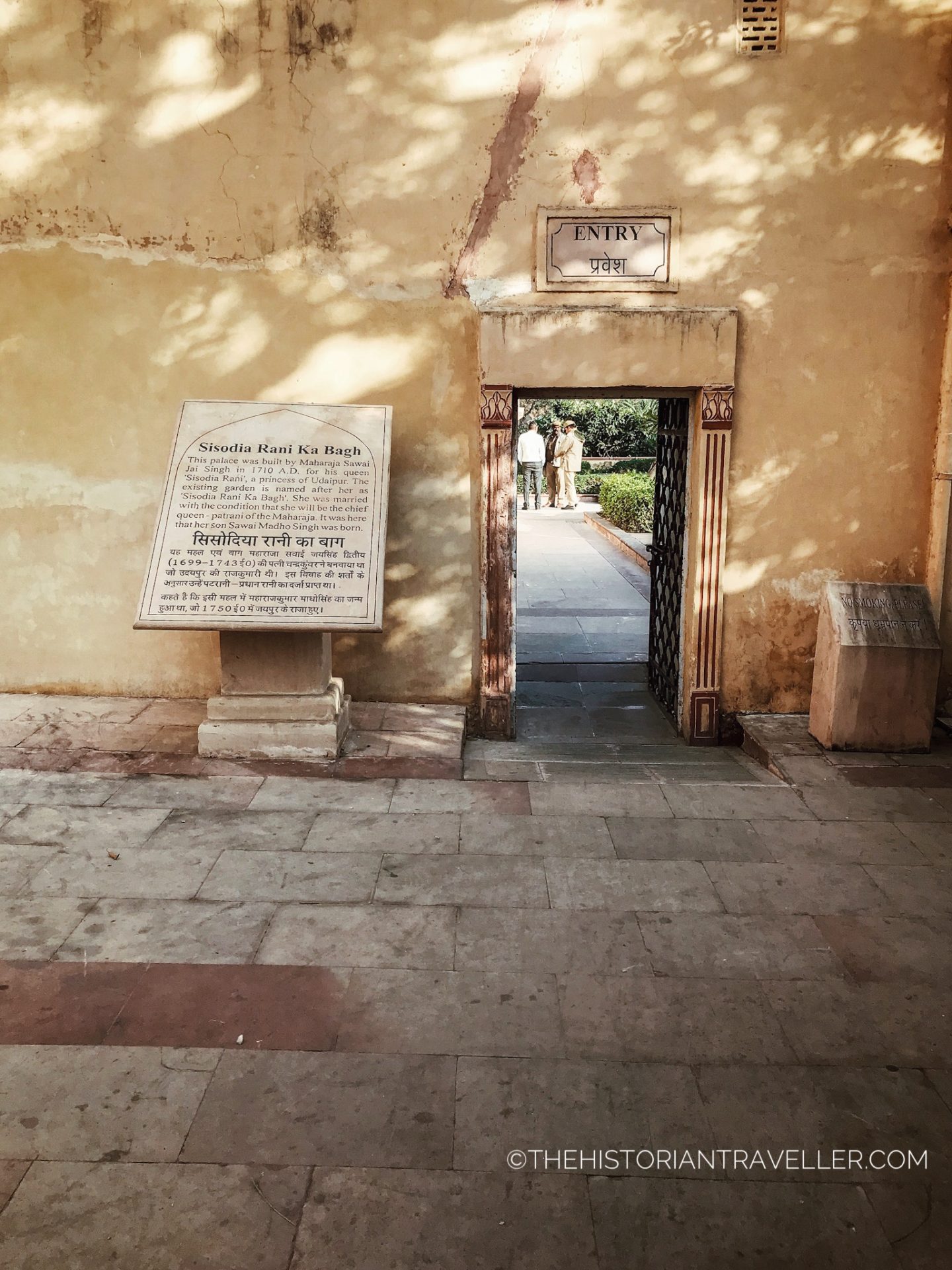
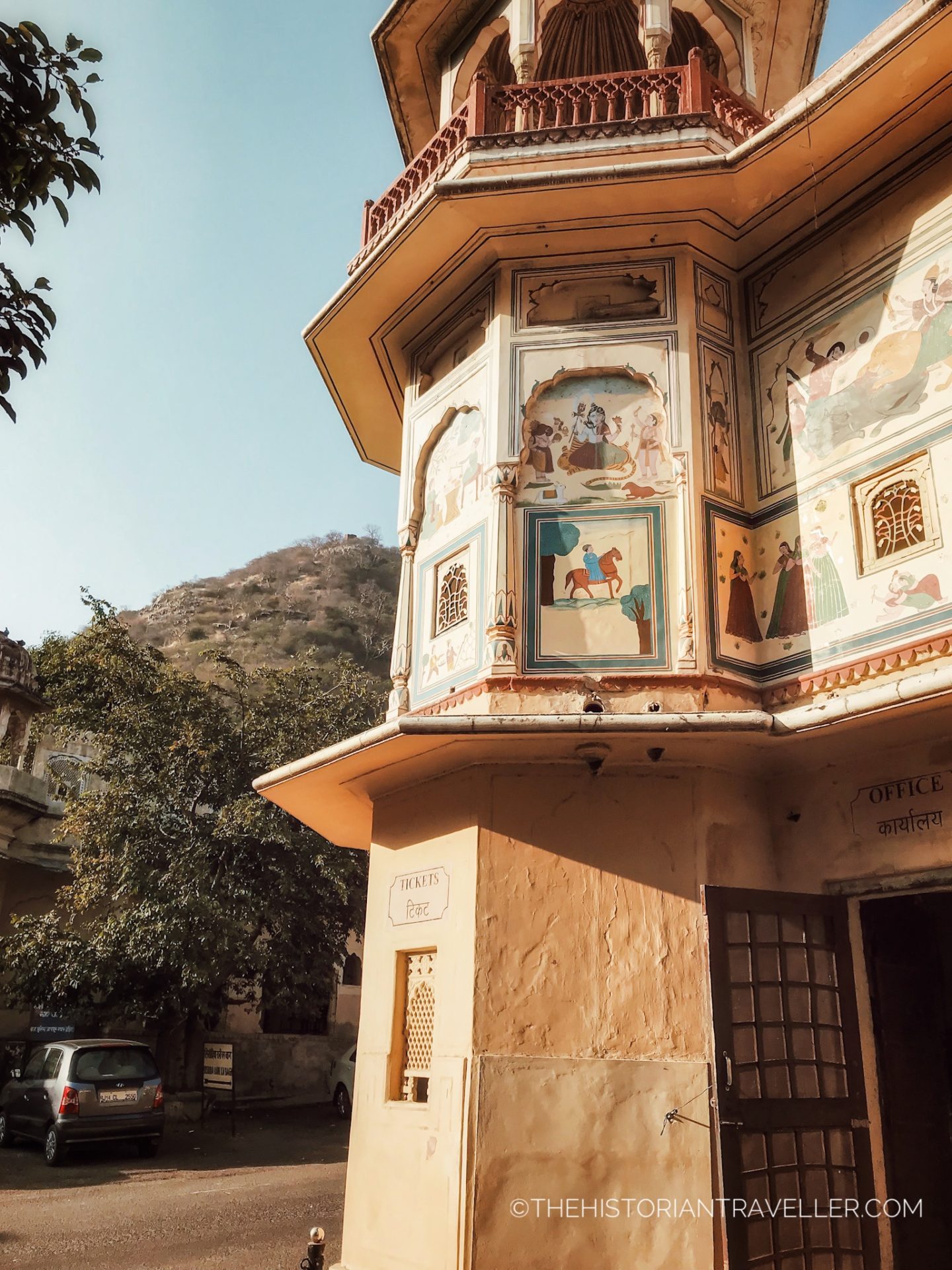
We arrived shortly after 4.30 pm and the place was immersed in a beautiful golden light. I had the impression this place was not much on the tourists radar as we were alone for more than 20 mins before another couple of tourists arrived.
There is an entry fee of ₹200. You should pay it at the small door on the left of the main gate BEFORE crossing the entry gate itself. I tell you this because the entrance gives you the impression that the ticket counter might be after the gate. Moreover, the door on the left isn’t immediately visible (see above pictures). The garden closes at 5.00 pm, in theory. However, the guardian is quite flexible if he see there are people coming. In fact, we stayed until around 5.30. If you are going at morning, bring your own lunch because there’s nothing around for miles.
Day 3 – Wandering around Jaipur’s fairytale forts
On our third day in Jaipur, we wanted to visit all the beautiful forts that surround the hills of the Rajasthan capital.
If you have time I think it would be better to split the visit at the forts in two days, leaving the visit to Amer on a single day. Unfortunately, we had just one day, so we needed to plan accordingly. On this occasion, instead of taking an Uber we opted for an all-day driver provided by our hotel.
Given that it was our first time in that city (and in India), we did not know much the streets and geography of those places. Furthermore, after having seen the isolation around Galta-ji, and considered also our short time, we wouldn’t want to risk to get lost or miss a visit. I don’t remember exactly how much we paid for a full day driver. However, it wasn’t much more than £50. Our first stops were in sequence Nahargarth Fort (A), Jaigarh Fort (B), and Amer Fort (C).
Ejoy the best of the views from the Nahargarh Fort
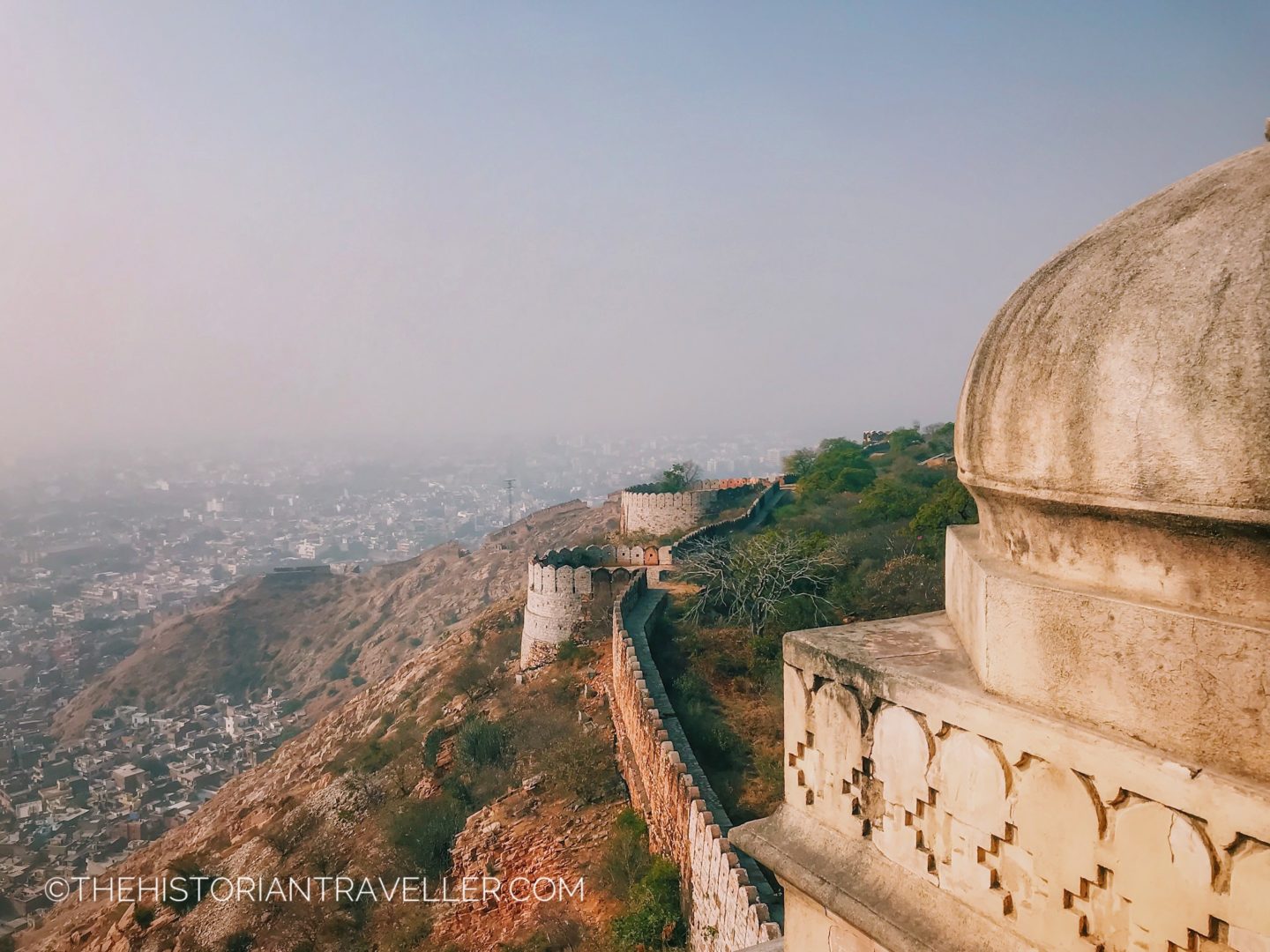
The Nahargarh Fort was built by Maharaja Sawai Jai Sing II (who founded also the city of Jaipur) in 1734. The main purpose of the palace was that of being an additional residence for the royal family. The fort is connected to the other city’s fortifications (Jaigarh and Amer) throughout an incredibly scenic series of walls surrounding Jaipur’s hills.
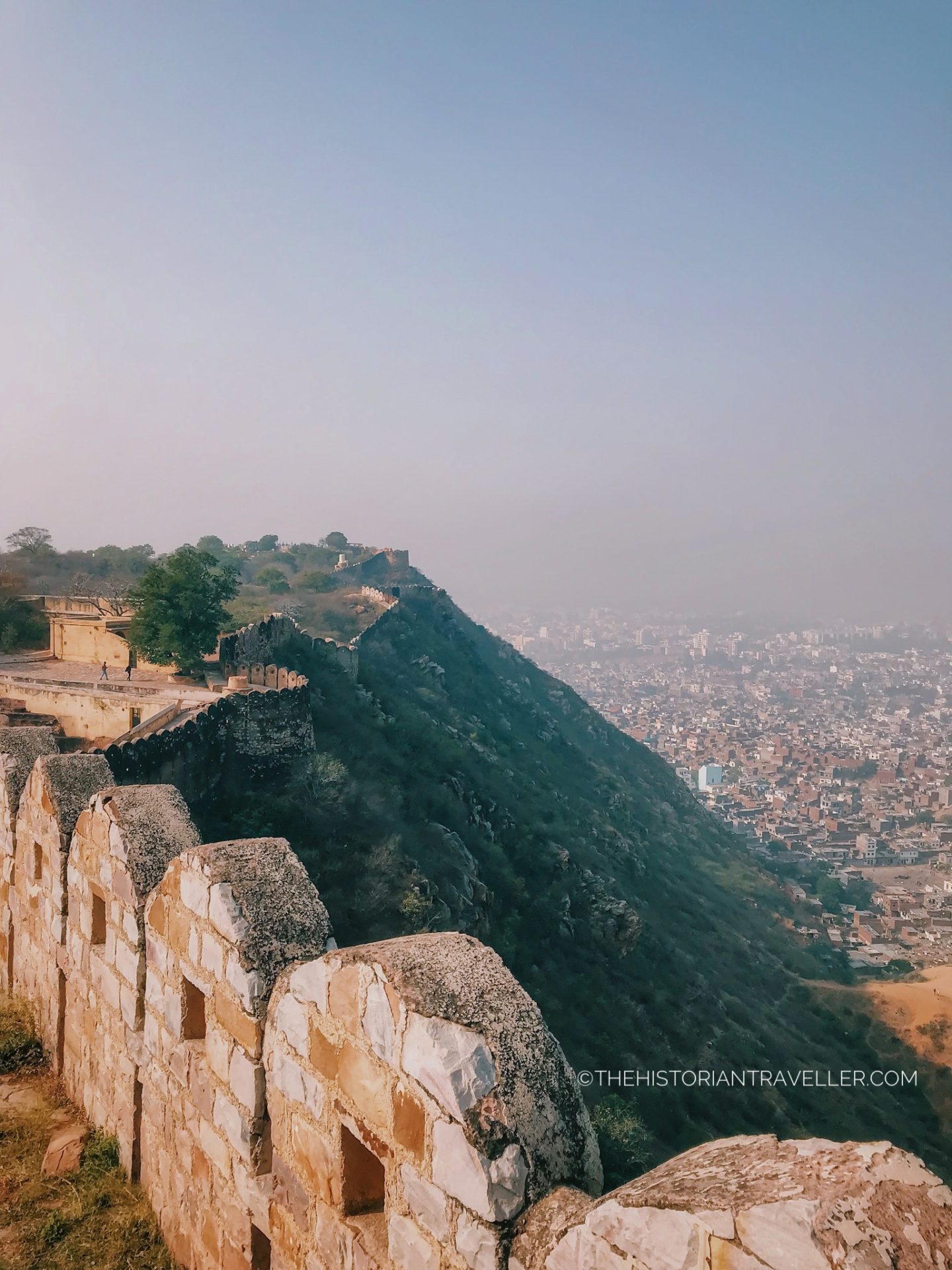
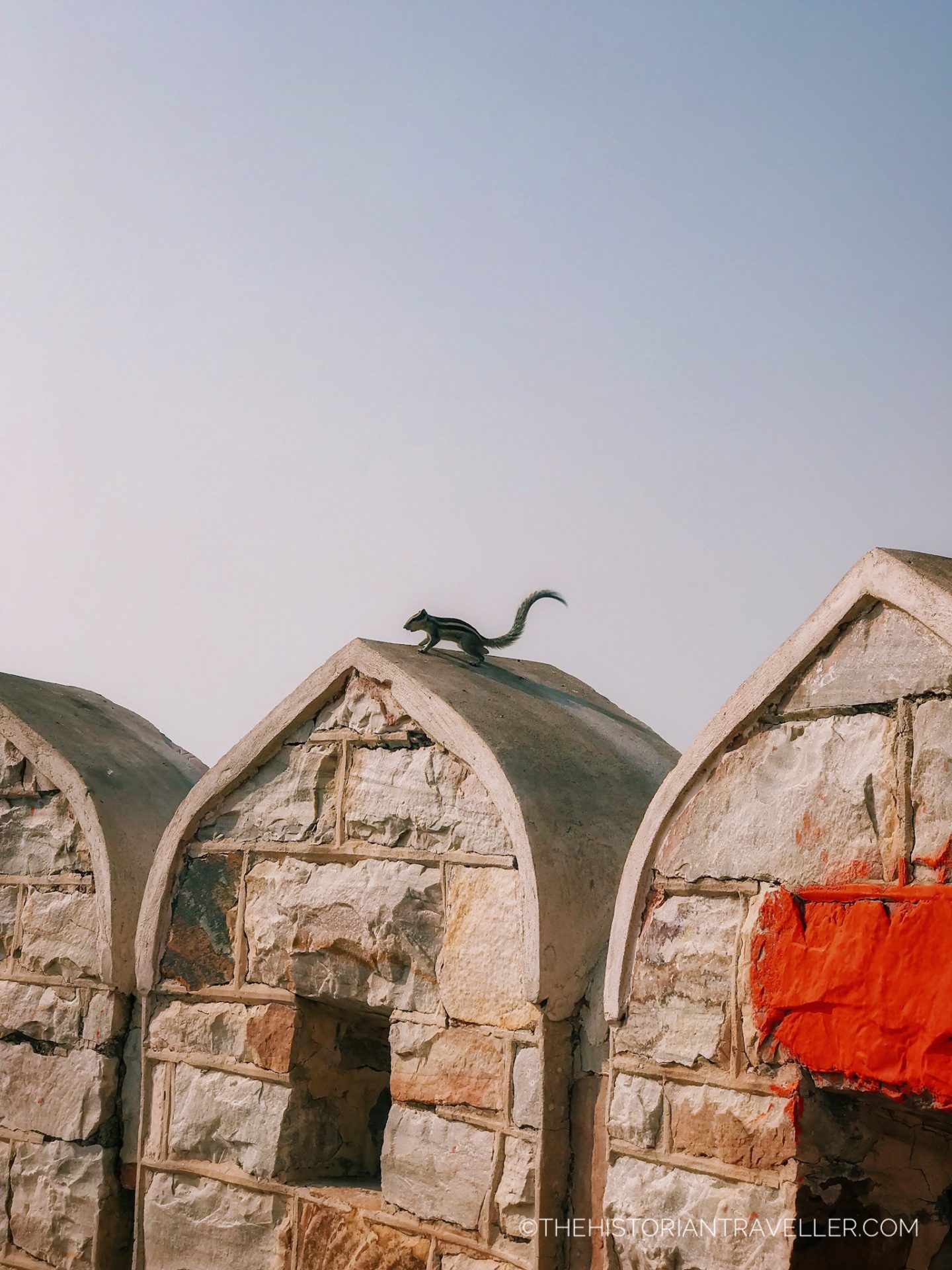
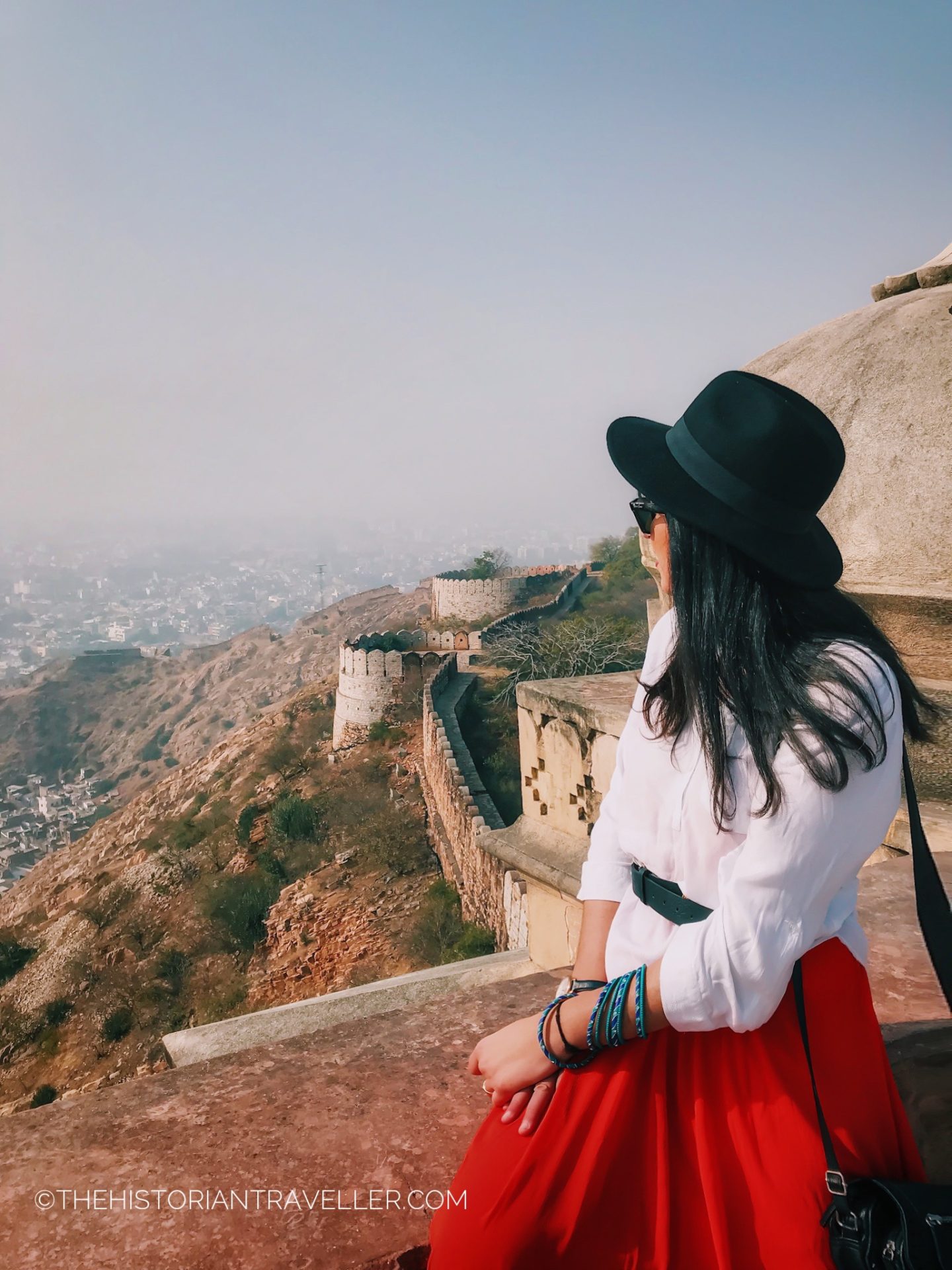
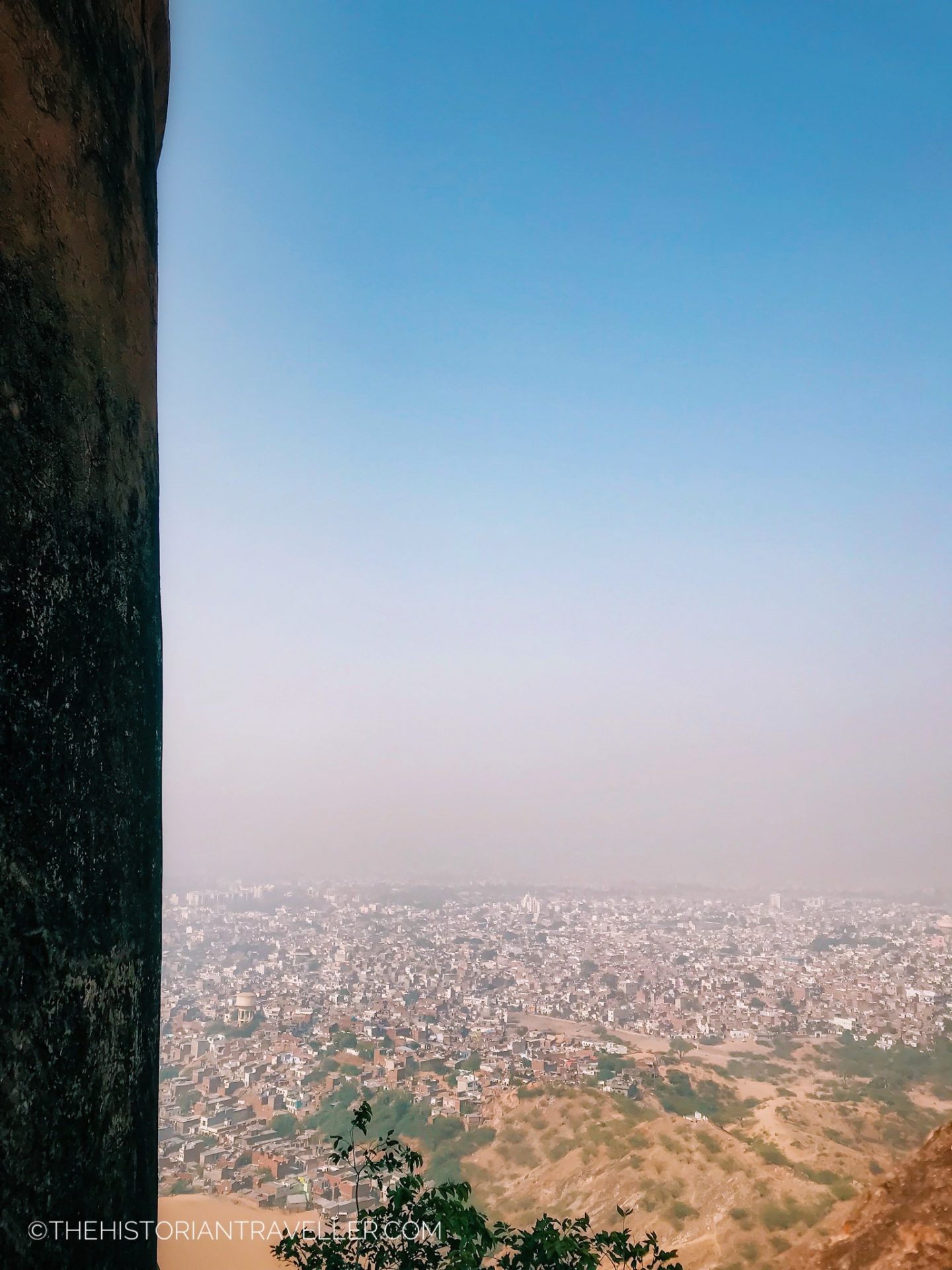
Nahargarh is also one of the fewest Indian fortification than never been under military attack since its construction. Indeed, all the walls, buildings and surroundings are practically intact since the eighteenth century, suffering only the damages of time.
I have to say I was so blown away about the beauty of the place that I didn’t pay attention to all the rubbish around. In fact, the Nahargarh Fort offers probably one of the most beautiful view of the entire city being positioned at a considerable height.
Curious facts about Nahargarh
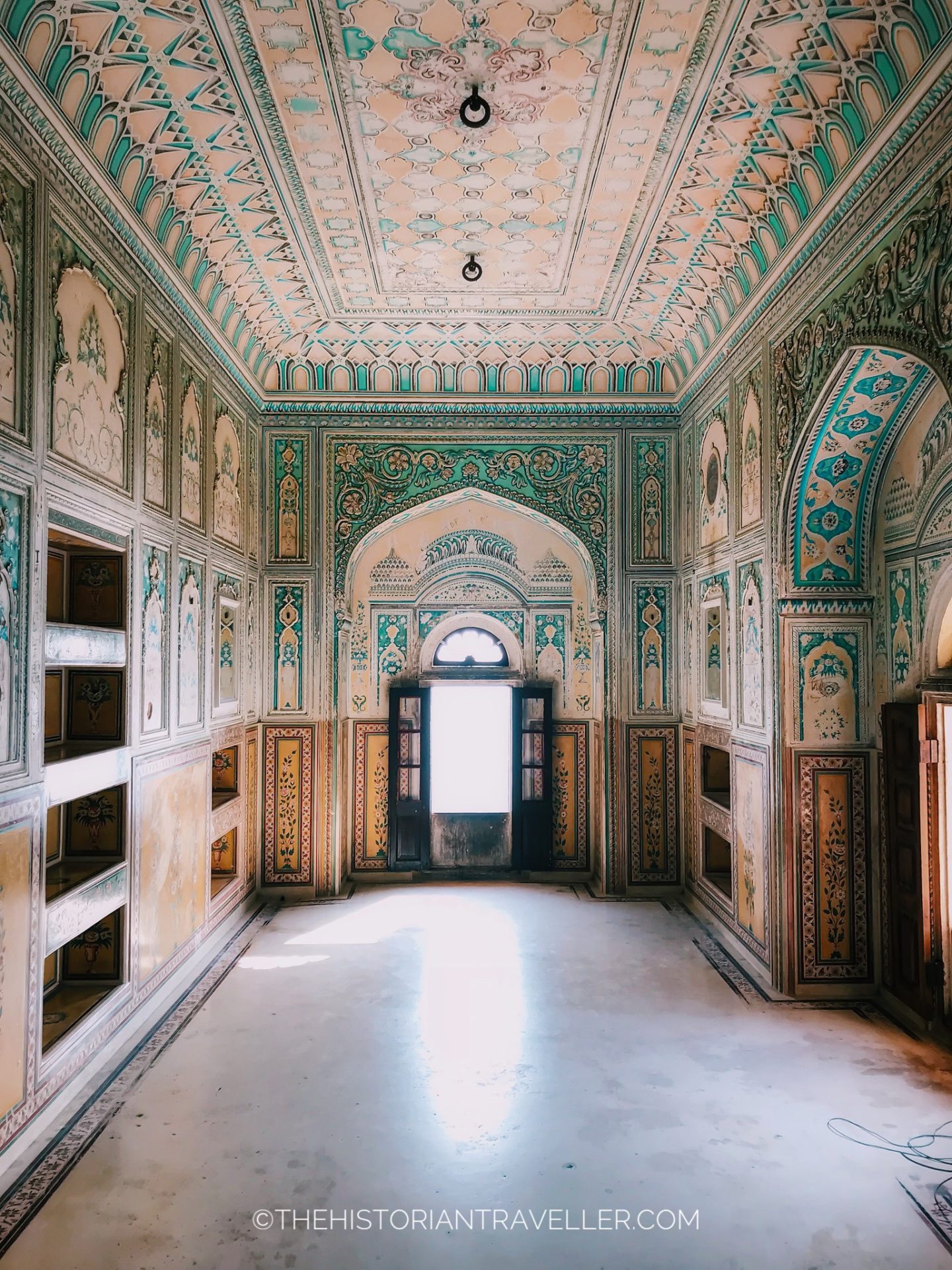
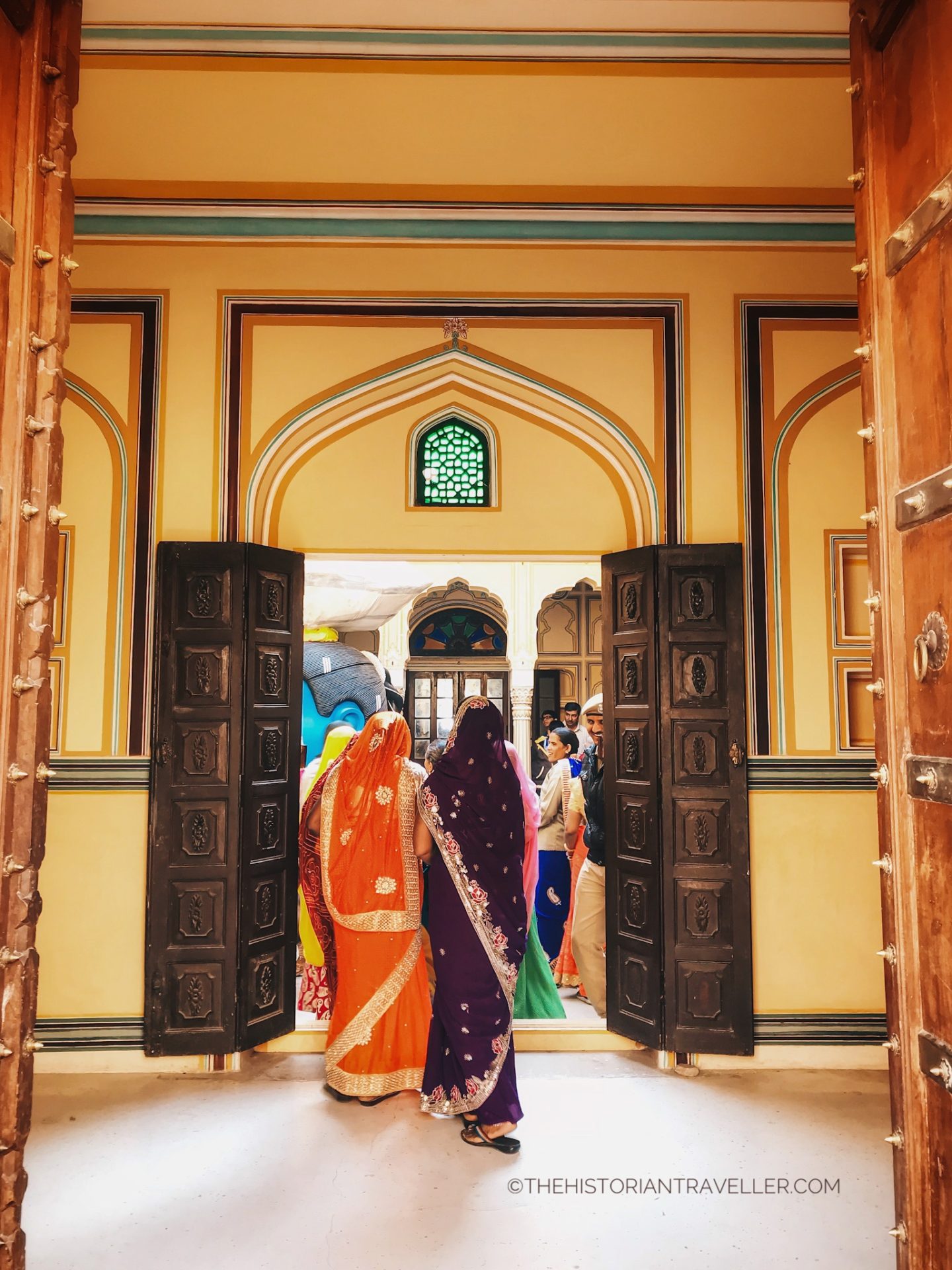
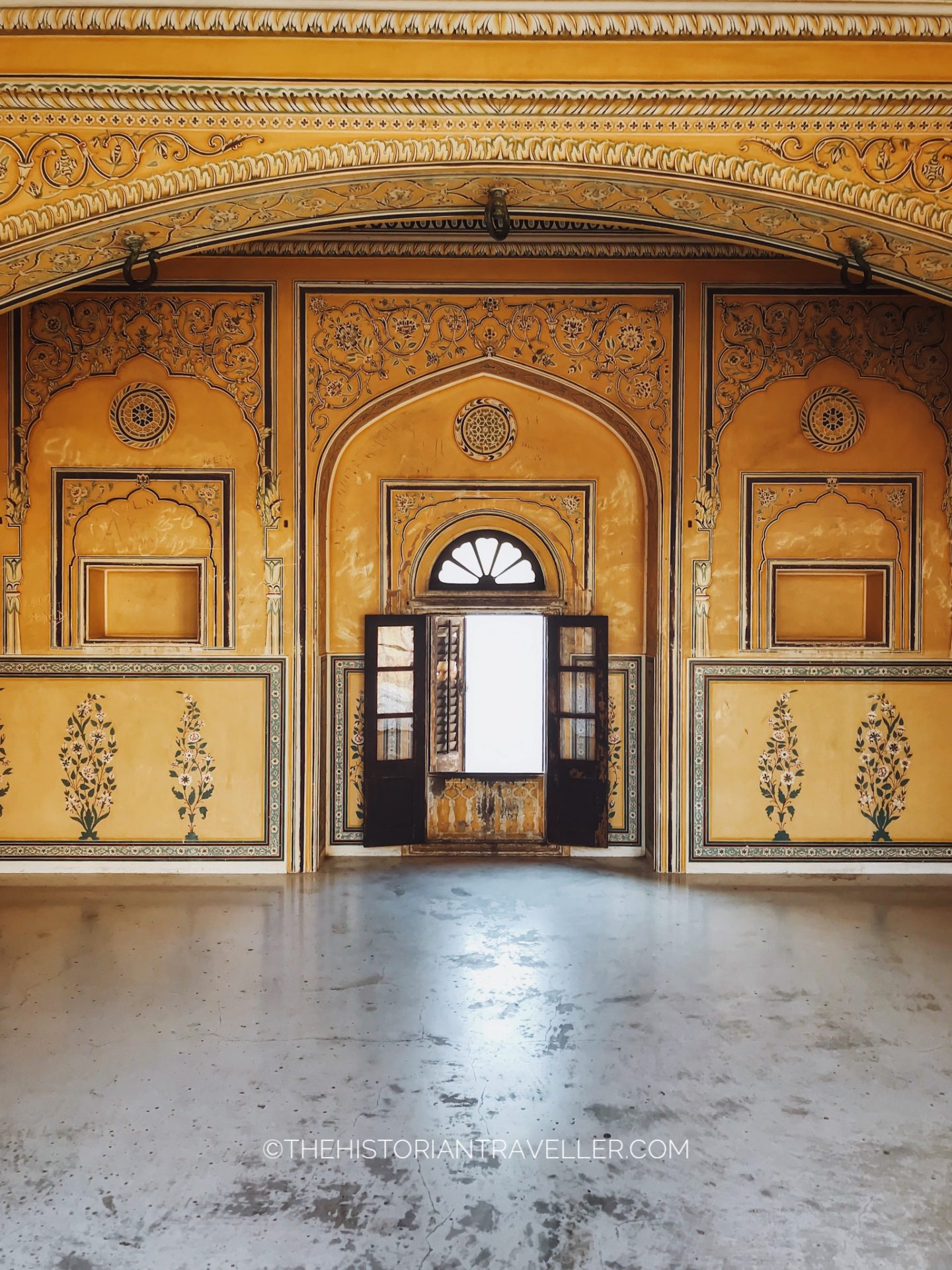
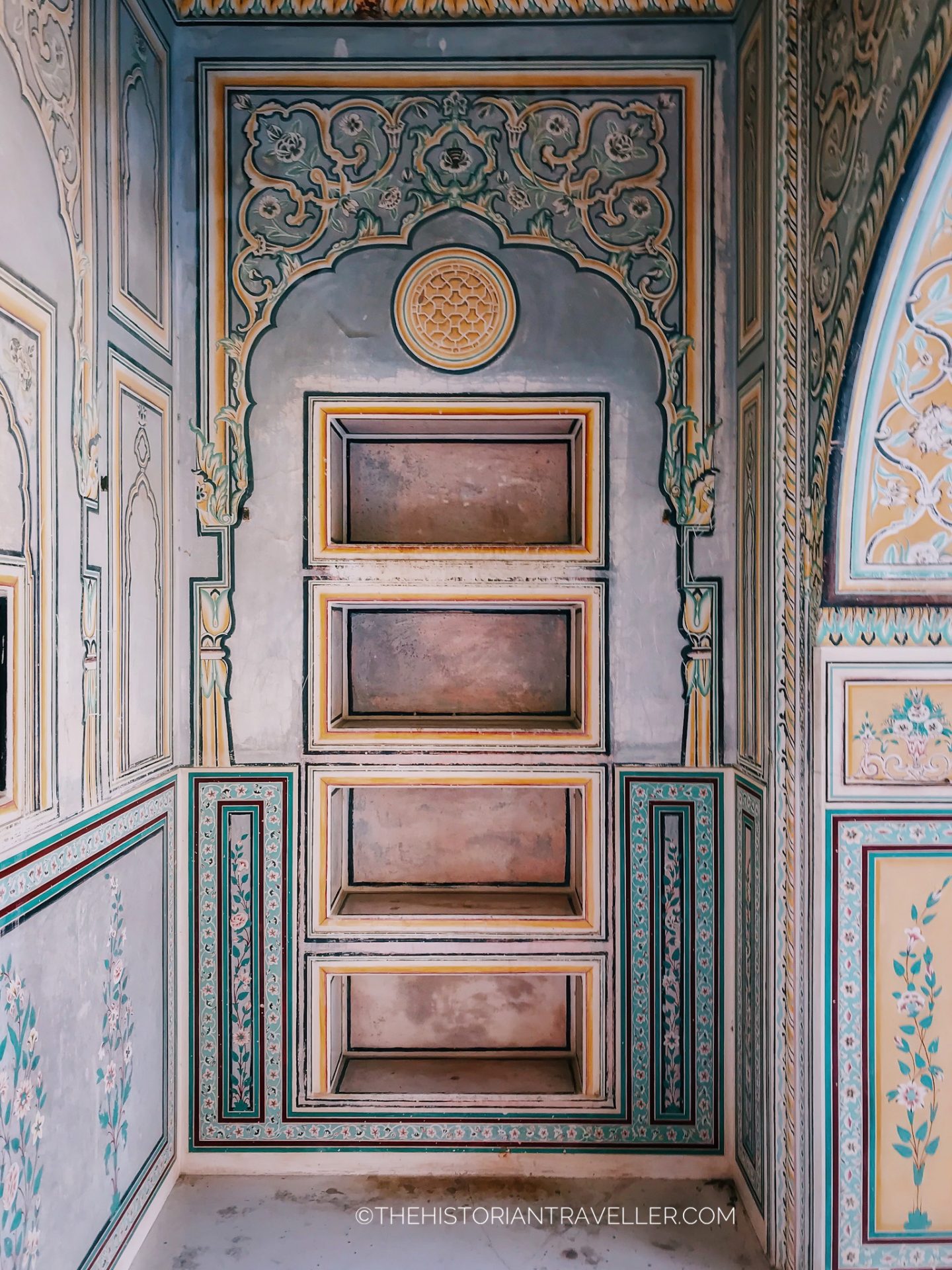
Among the curious facts about this place, locals believe Nahargarh is one of the seven most haunted places of Rajasthan. Apparently, the ghost of Prince Singh Bhomia likes to roam in the palaces’ rooms. Unfortunately, we did not see any ghost but surely the still fascinating beauty of the painted rooms impressed us.
Tip
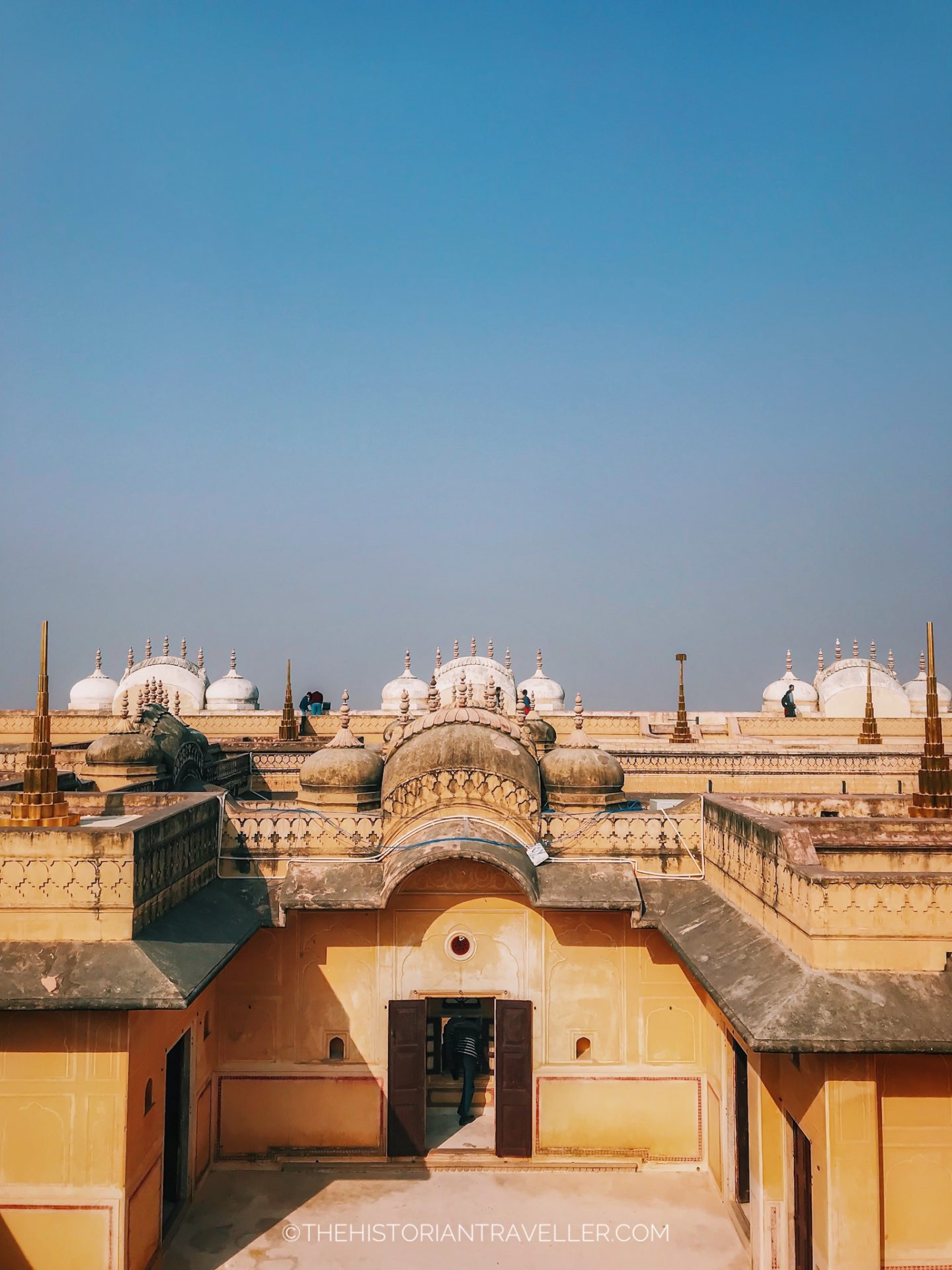
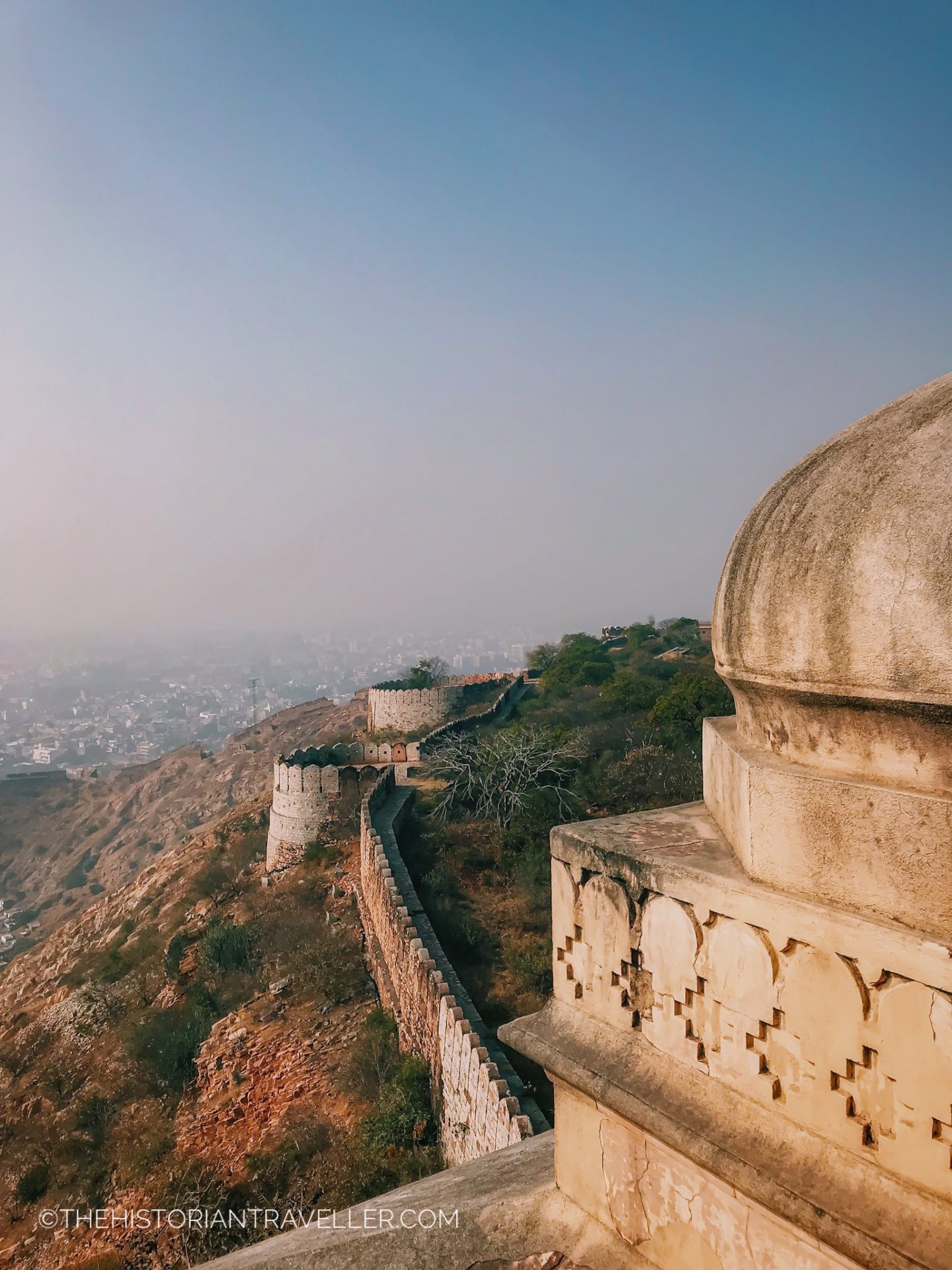
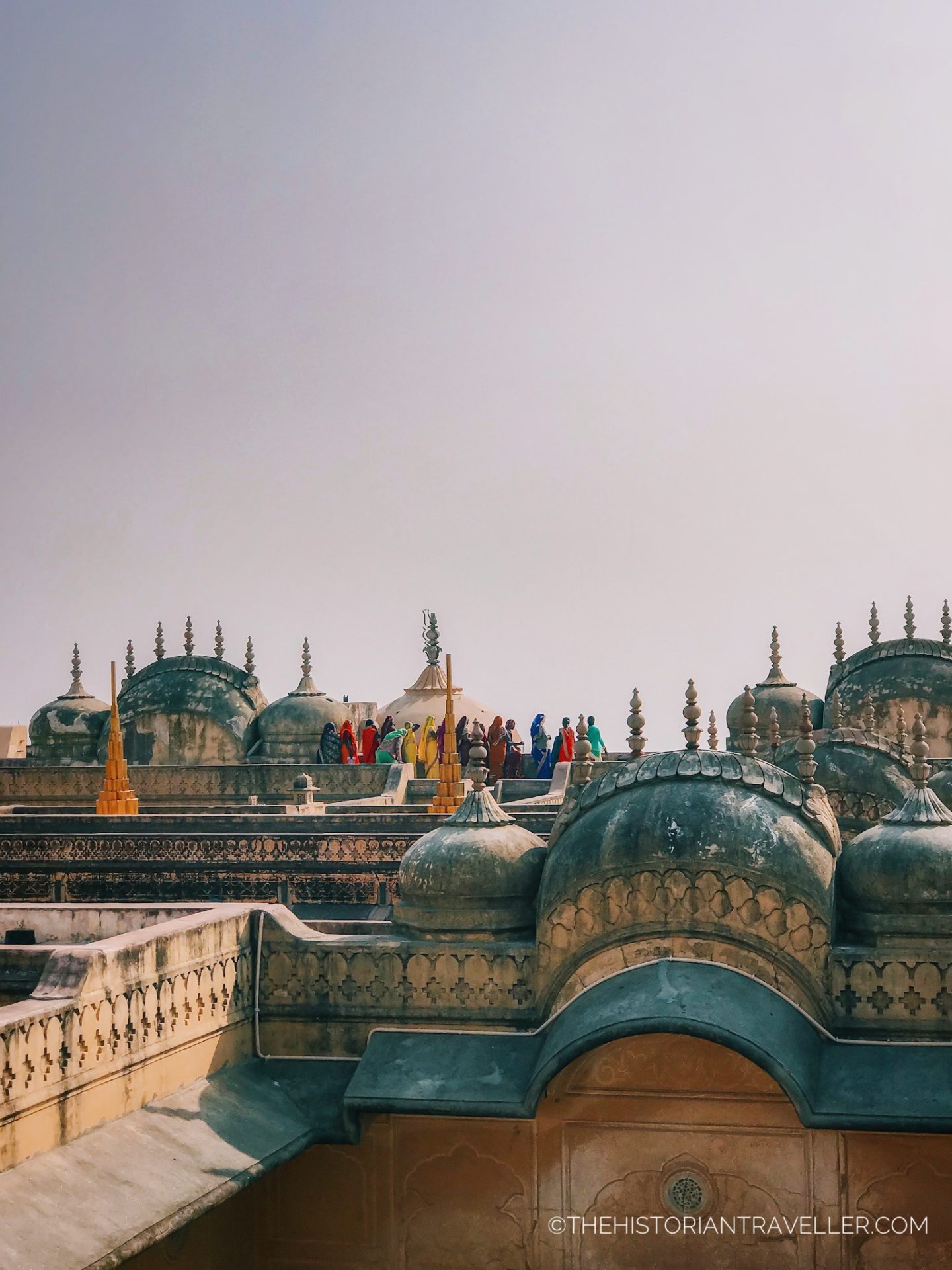
If you want to have a great view on the city of Jaipur, go up to the roof. A very narrow staircase will lead you to a labyrinthine series of terraces where you can spot a marvellous panorama. However, be aware that walking, or even taking pictures near the roof walls is strictly forbidden. I did not know this and a guardian yelled at me very loudly while I was taking my pictures sitting on the edge. It was too late anyway! Alessio already got all the photos!.
However, not all the guards are so strict (I saw other people taking pictures), so you may try your luck. Moreover, unless you literally walk on the edge, there’s no danger to fall down.
When is the best time to visit the Nahargarh Fort?
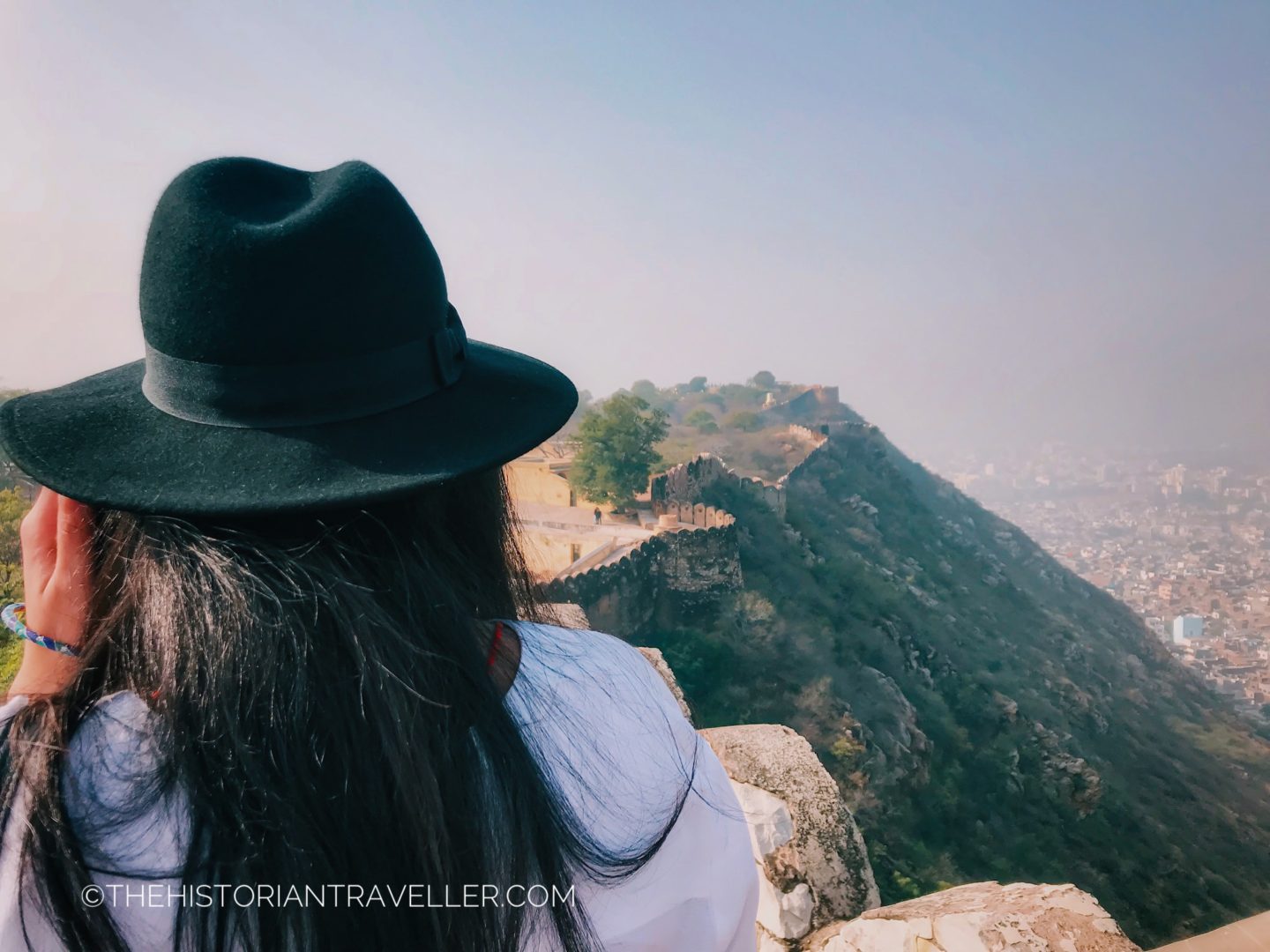
The best time to visit the Nahargarh Fort is at early morning. This because despite the palace itself is closed, (the opening time is 10:00 AM – 05:30 PM), you can wander around its beautiful walls and explore the area without rushing. Furthermore, if you have enough time, there is a small water step-well you can visit nearby the external wall belt.
Late afternoon, before closure is also a good moment because of the golden light that will make the view even more magical.
Fees and Opening Hours
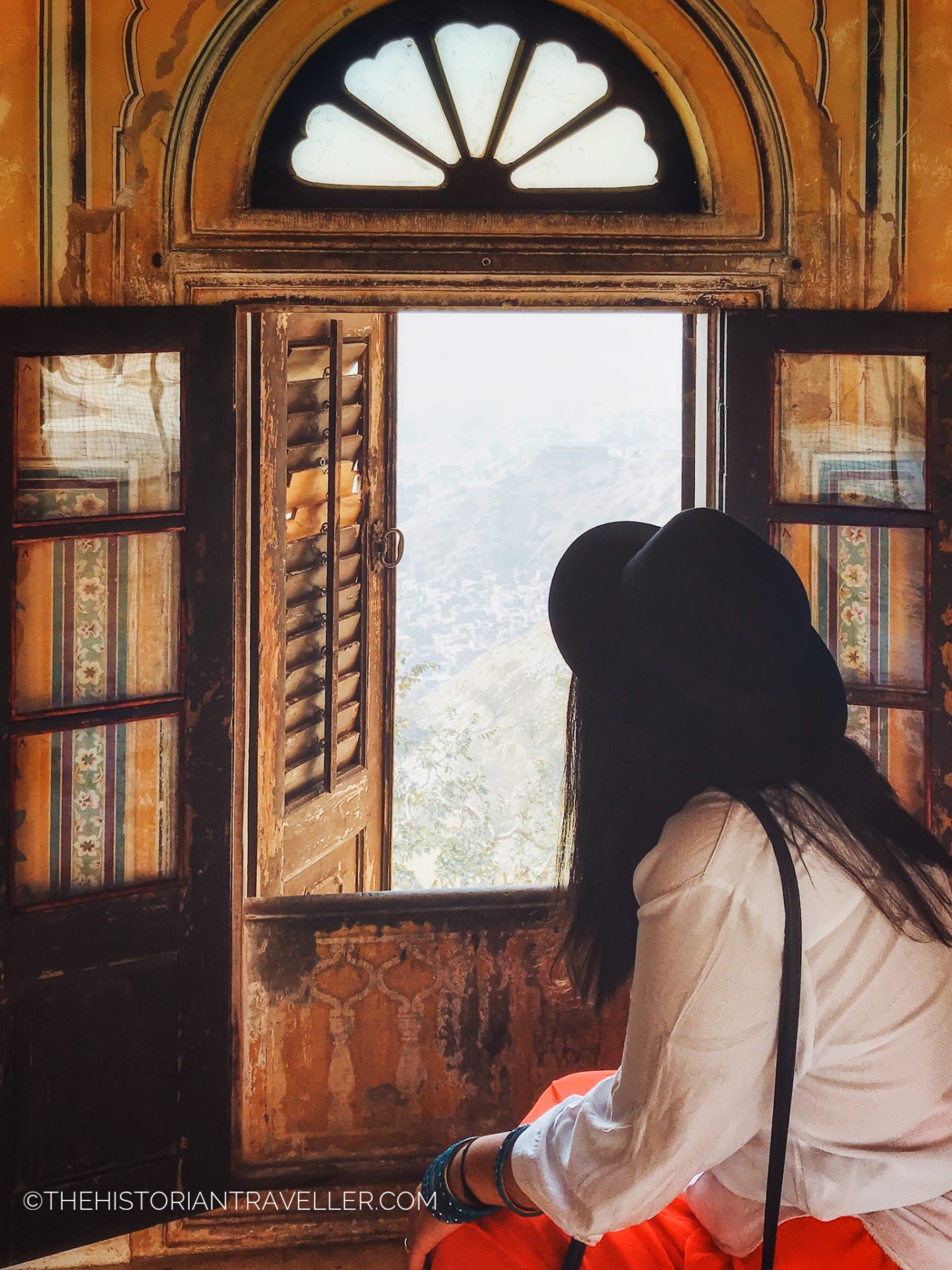
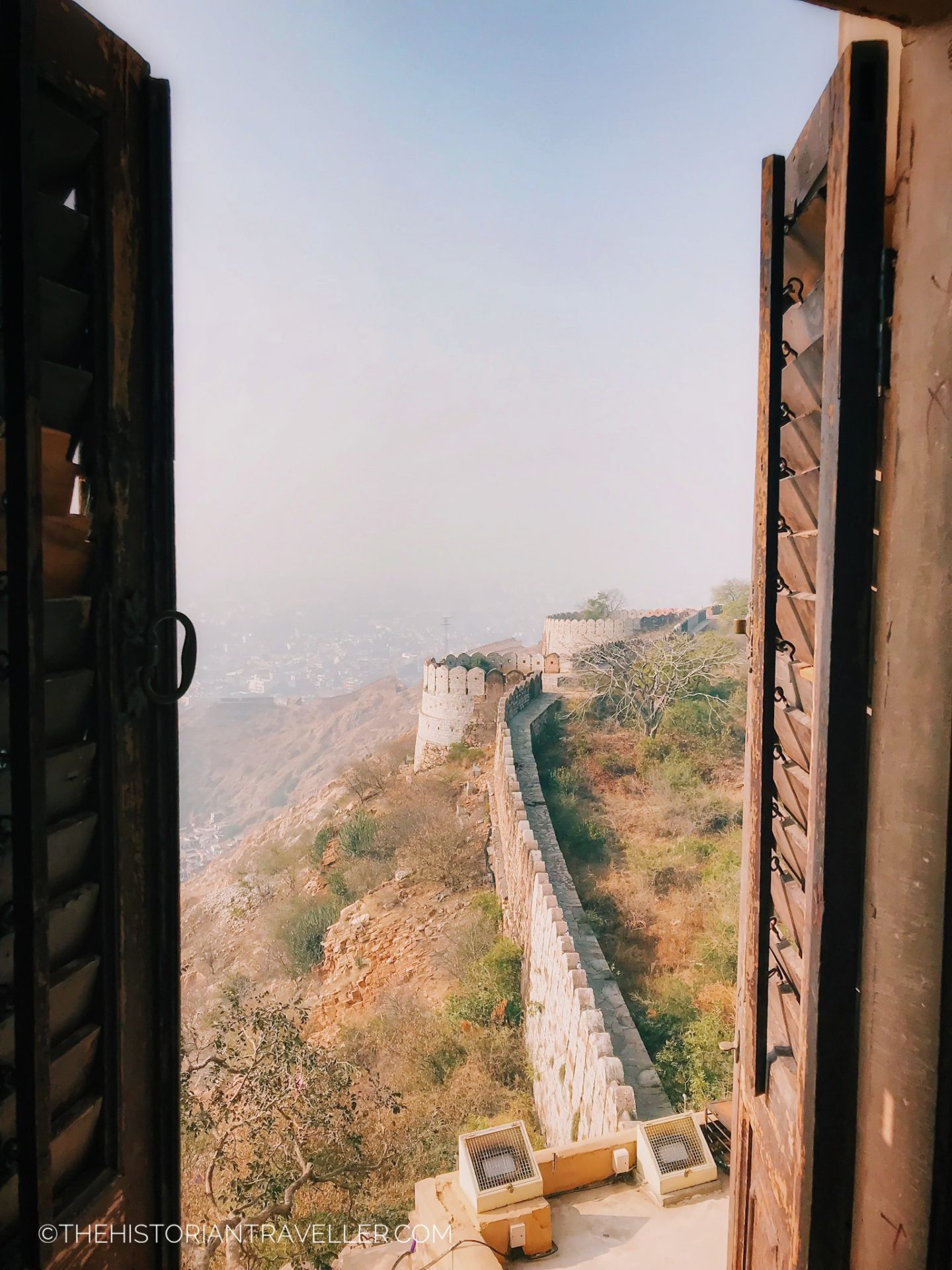
The access fee to the fort is of ₹200 per person to pay in cash. The fort is open daily from 10:00 am to 5.30 pm. You can access the grounds before the official opening.
Find adventure at the Jairgarh Fort

Jaigarh Fort is probably the less visually appealing of the three main forts surrounding Jaipur. This because it dates back to 1726 and the purpose of the construction was purely defensive. In fact, the scope of the fort was that of protecting the royal family who lived in the Amber Palace (immediately visible from the hill down Jaigarh). For this reason, the aesthetic of the structure is very simple, with a series of observation towers, complex labyrinthine corridors and just one small garden .
Interesting facts about Jaigarh
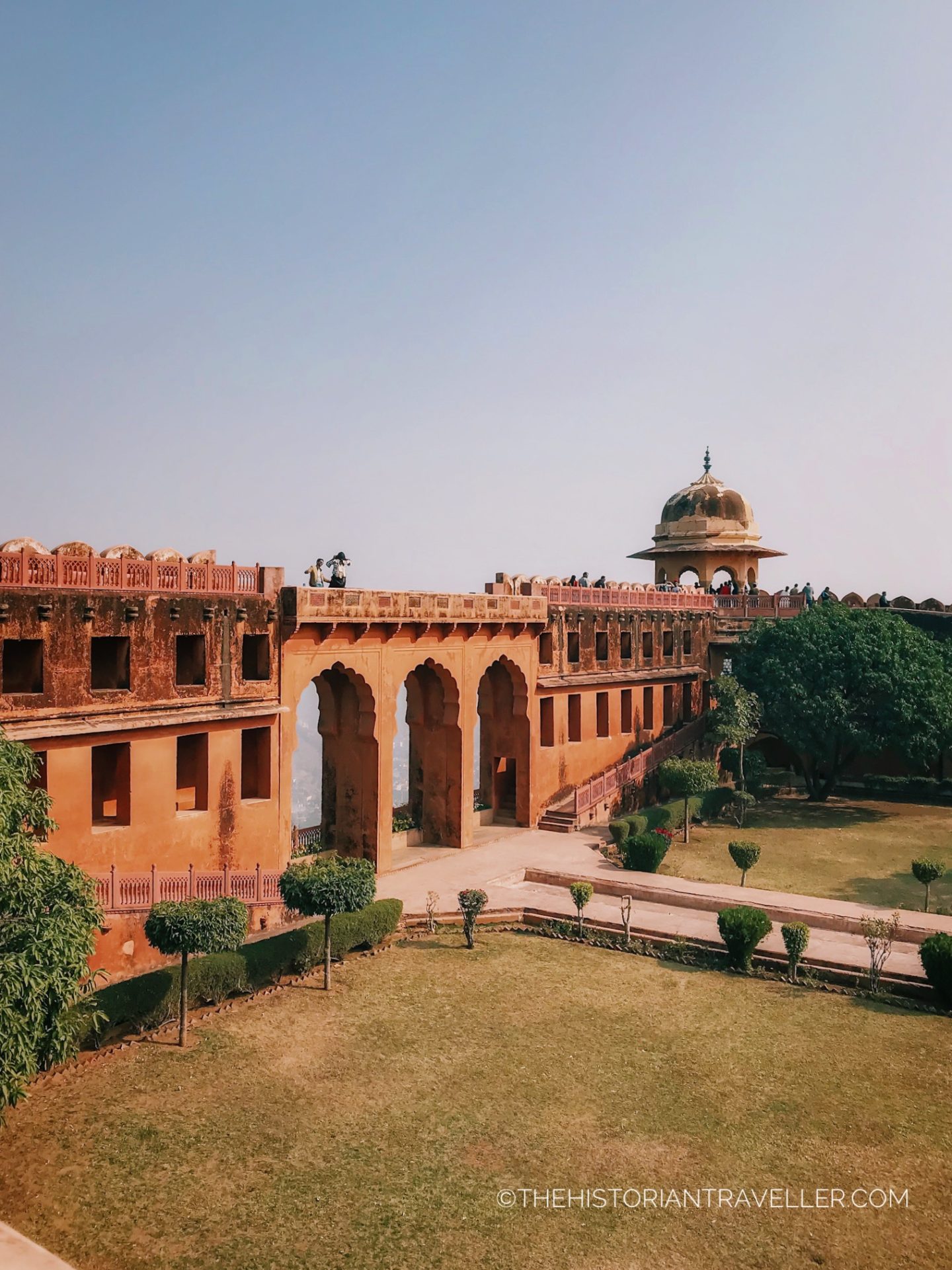
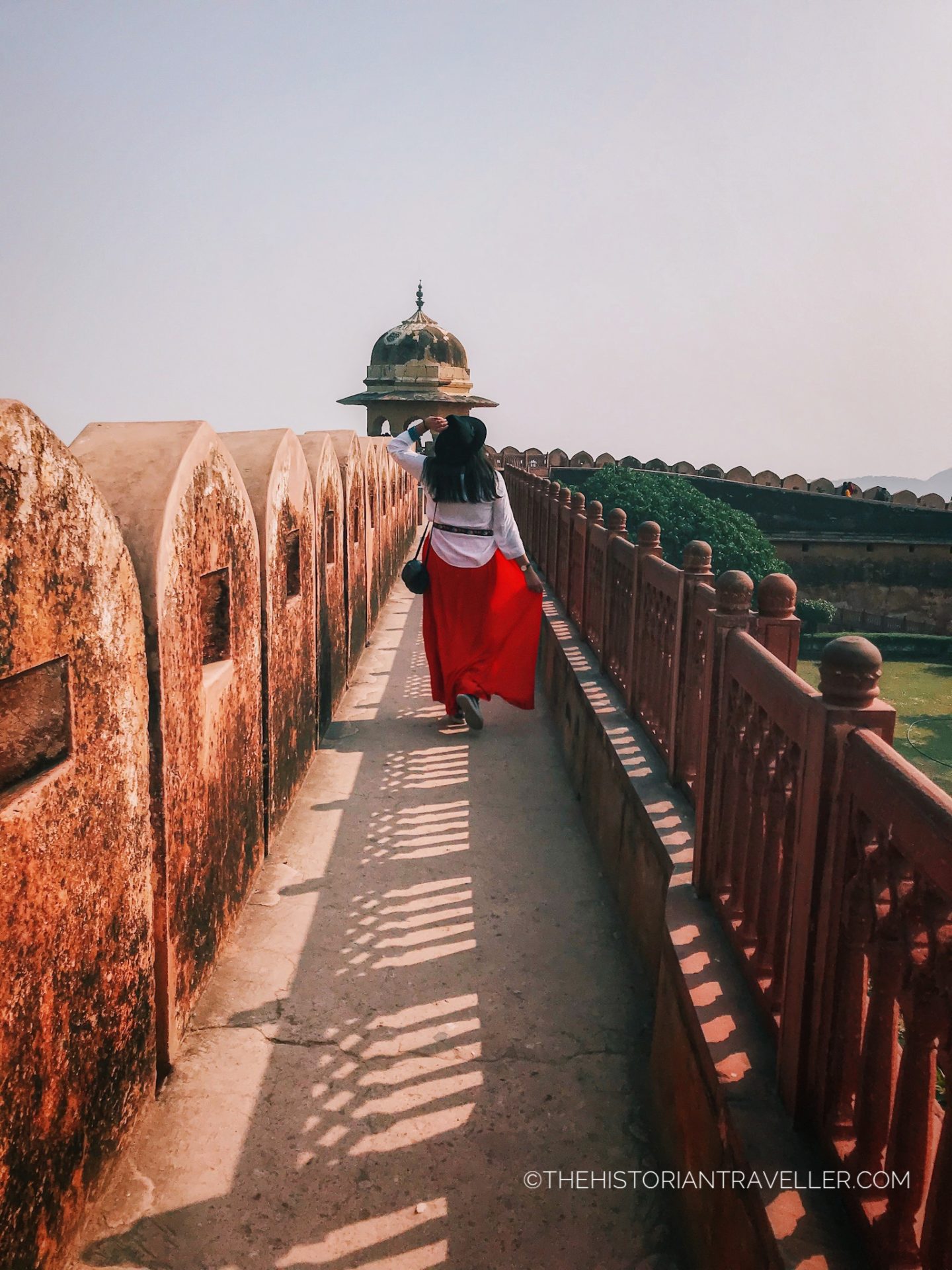
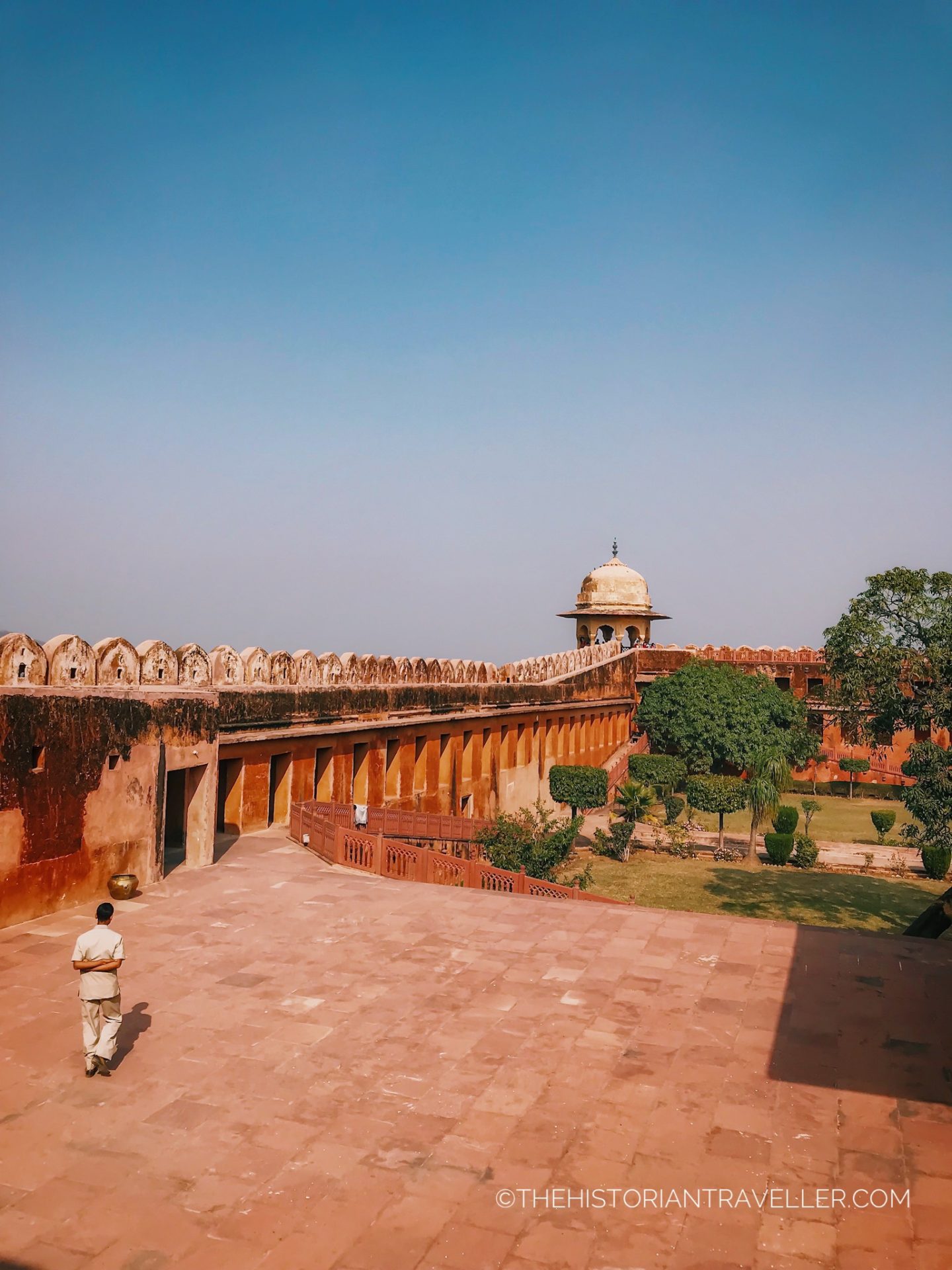

A legend says that Jaigarh was actually built to keep the treasures of the main palace in a safe place. The huge water tank of the palace, containing several underground levels and rooms, was designed to be one of the safest places of the fort.
For many years this legend was believed to be true and the treasure considered buried somewhere in the structure. In this regard, in 1977 Indira Gandhi launched a “treasure hunt” to find the mysterious treasure. However, nothing was found.
During our visit, I was quite disappointed to discover that the nicest part of the fort, the Aaram Bagh and its garden (photos above), were not open to public. I am not sure if this is a permanent closure or we were just unlucky!
Fees and Opening Hours
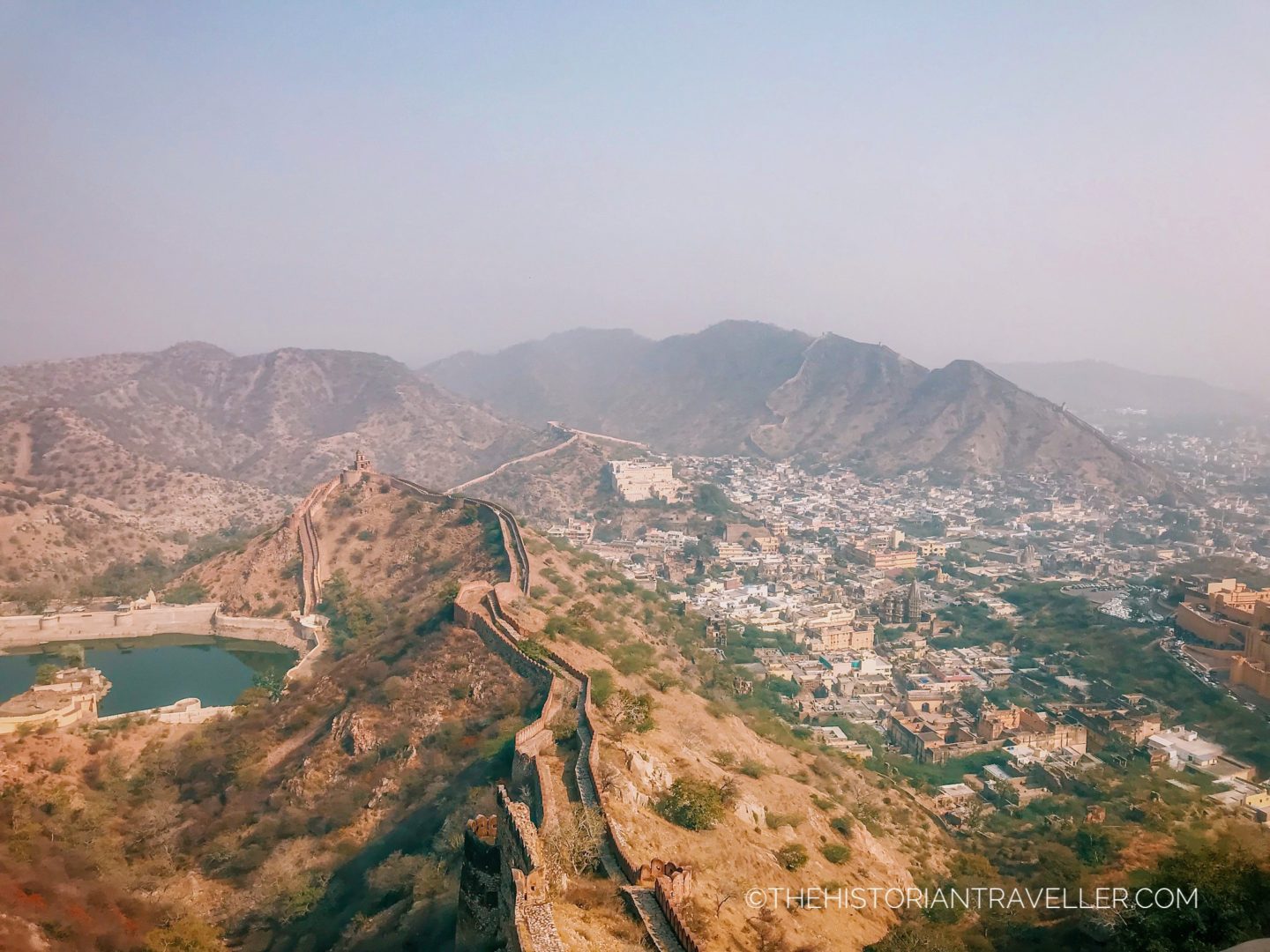
The access fee to Jaigarh Fort is ₹100. However, if you have already purchased a ticket for the City Palace, and used within the last 48 hours, this is valid also for a free entrance to the Jaigarh Fort! Moreover, if you want to have a real adventure, there are several secret passageways connecting Jaigarh to the Amber Palace.
A main one is an open-air tunnel long 325 metres going straight down the hill. To access, first, you have to find it and second, if there is a guardian you might have to pay him 100 rupees to let you in! Good Luck!
The Jaigarh fort is open daily from 10 am to 5 pm.
Feel the magic at the Amber Fort
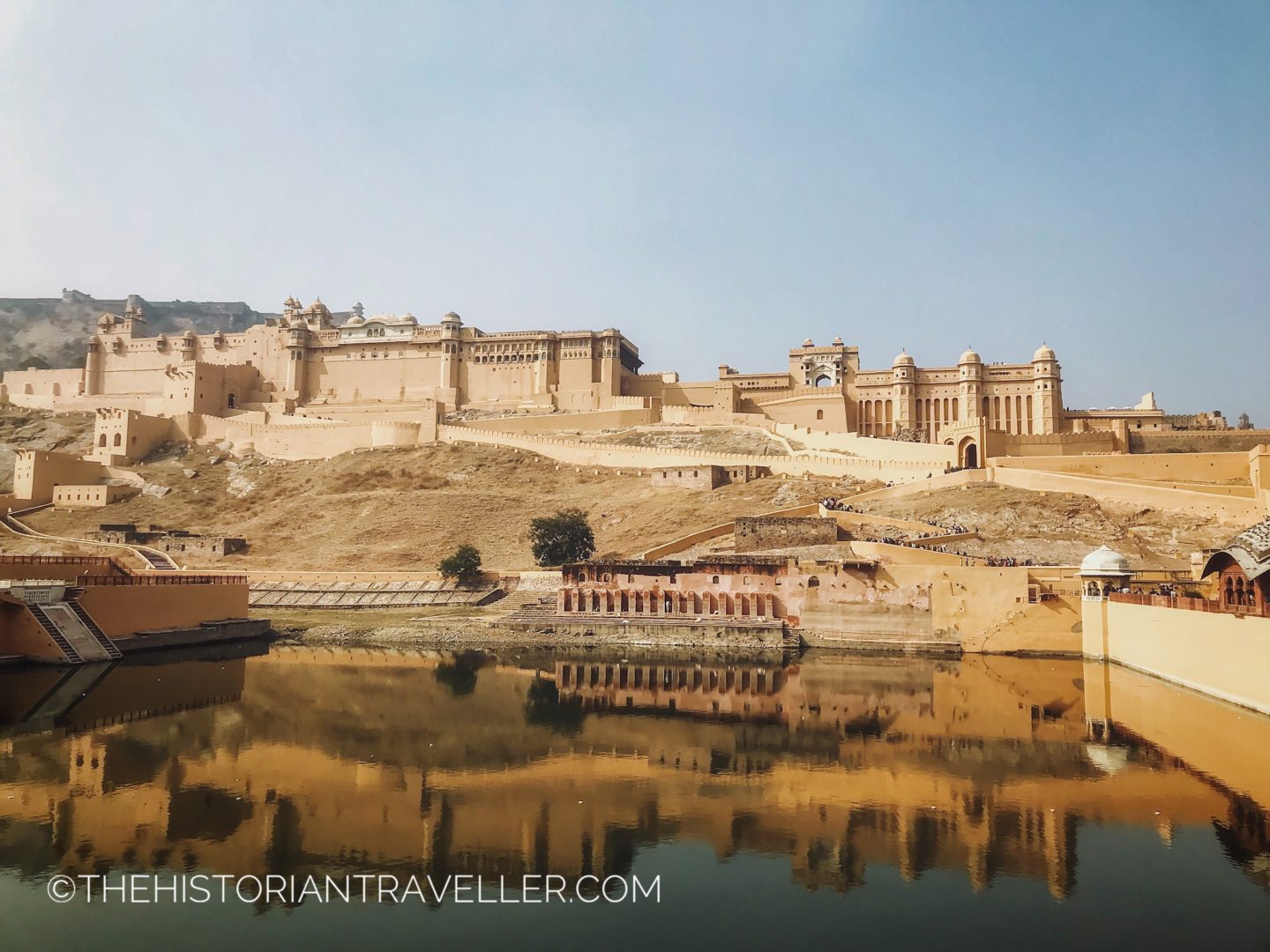
The Amber (or Amer) fort is probably the most impressive structure we visited during our three-days itinerary of Jaipur. Looking straight out of a Game of Throne episode, the current fort lies on the site of a former medieval fortification. It is a massive sandstone construction dating back to the sixteenth century. It took nearly 100 years to be completed and reach the current aspect. Moreover, the name “Amber” comes from the Ambikeshwar Temple situated at the top of the hill. This fort was on a strategic position for the royal family. In fact, the city of Amber was the historic capital of Rajasthan until Jaipur took his place in 1727.
Exploring the Amber Palace

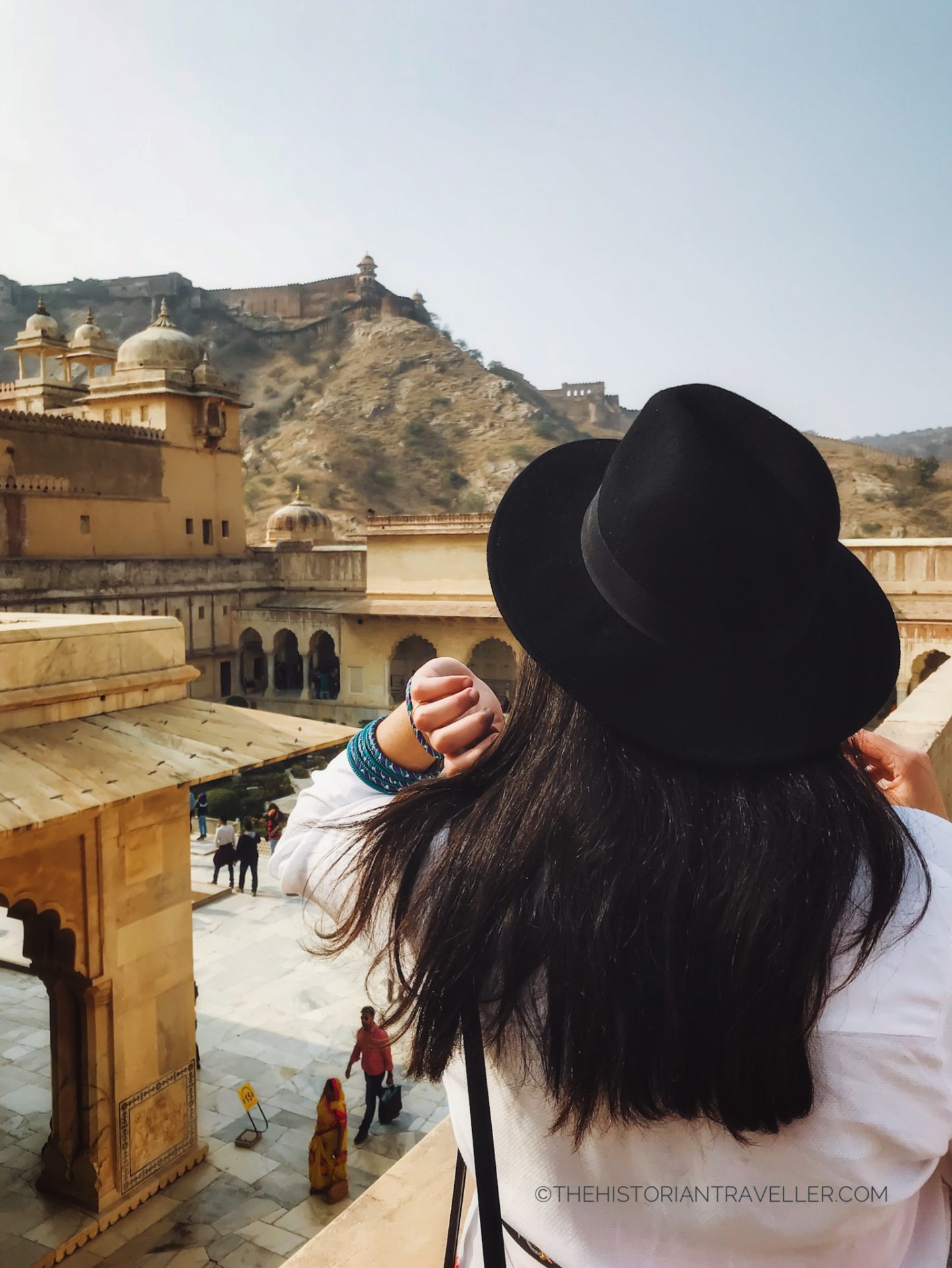
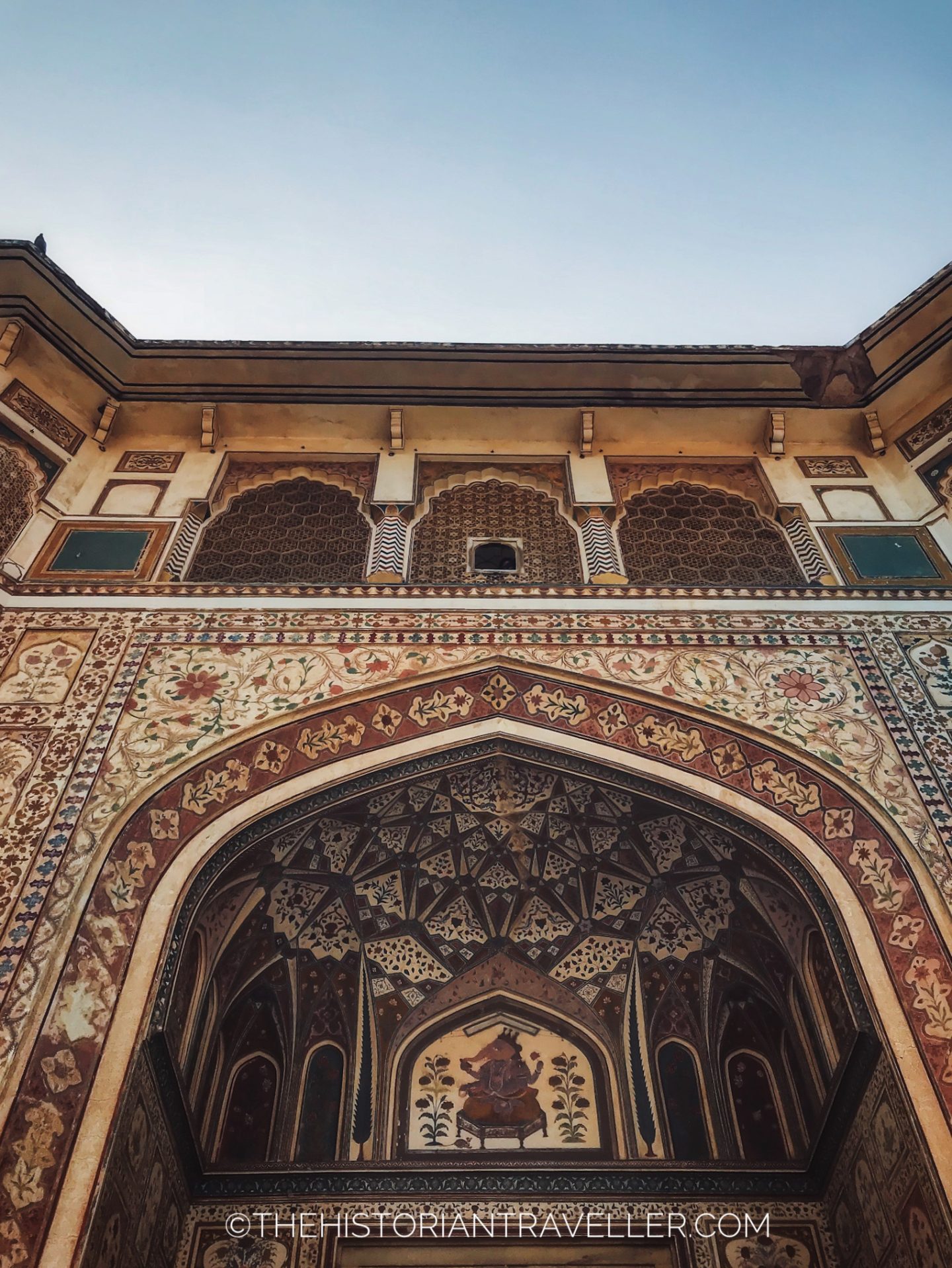
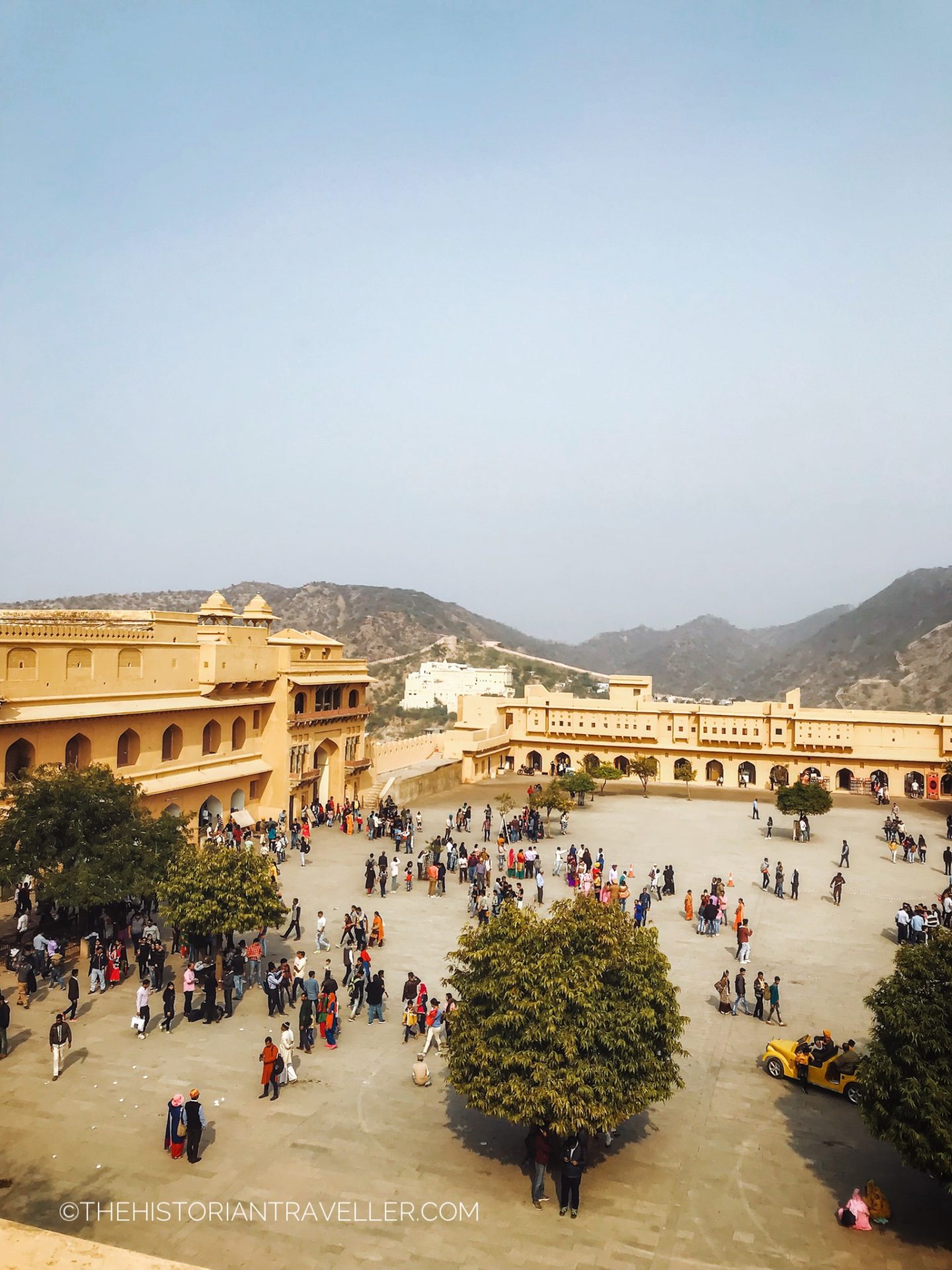
The palace has six huge sections that will take a great part of your day to be explored. I had the impression that our driver suggested us the wrong thing in making us visit this place for last because when we arrived it was incredibly crowded! So crowded that we had to queue on the ramps going to the main palace in order to access.
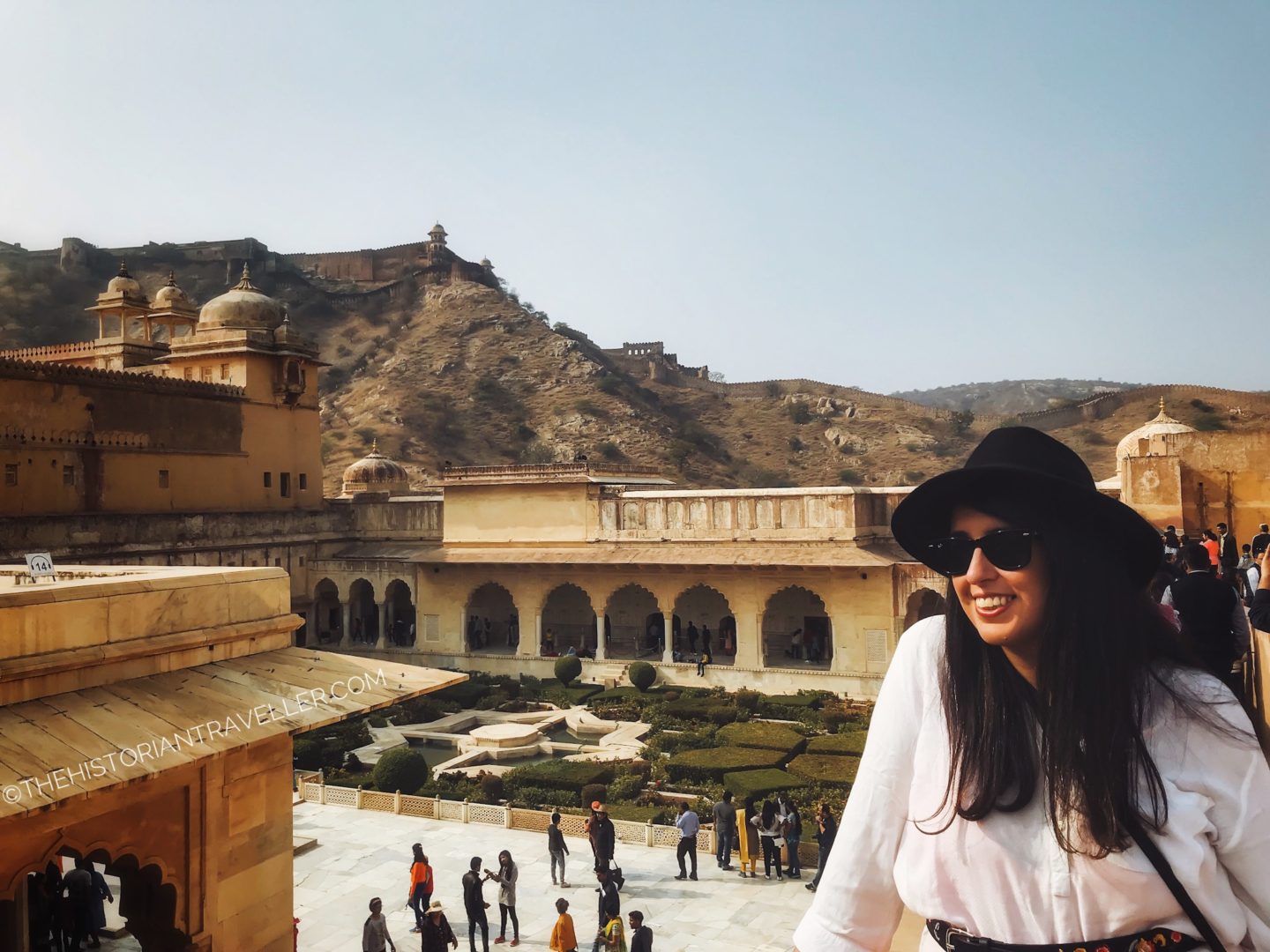
I believe also that late December is a high peak period for visitors. Probably, during another time of the year the place is more enjoyable. Because of the extreme crowd, we didn’t have the chance to take good pictures but we did our best!
What to visit inside the Amber Fort
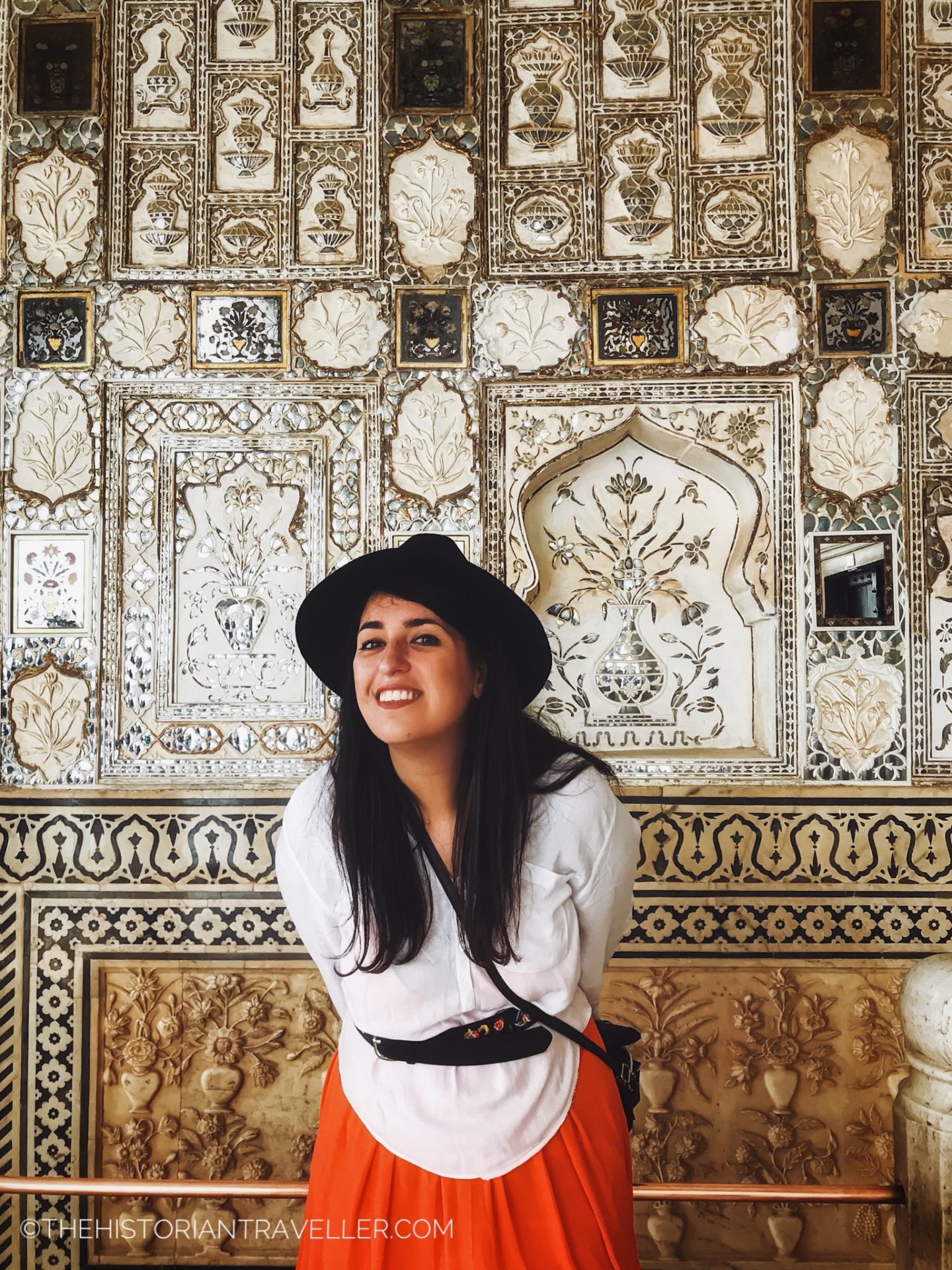
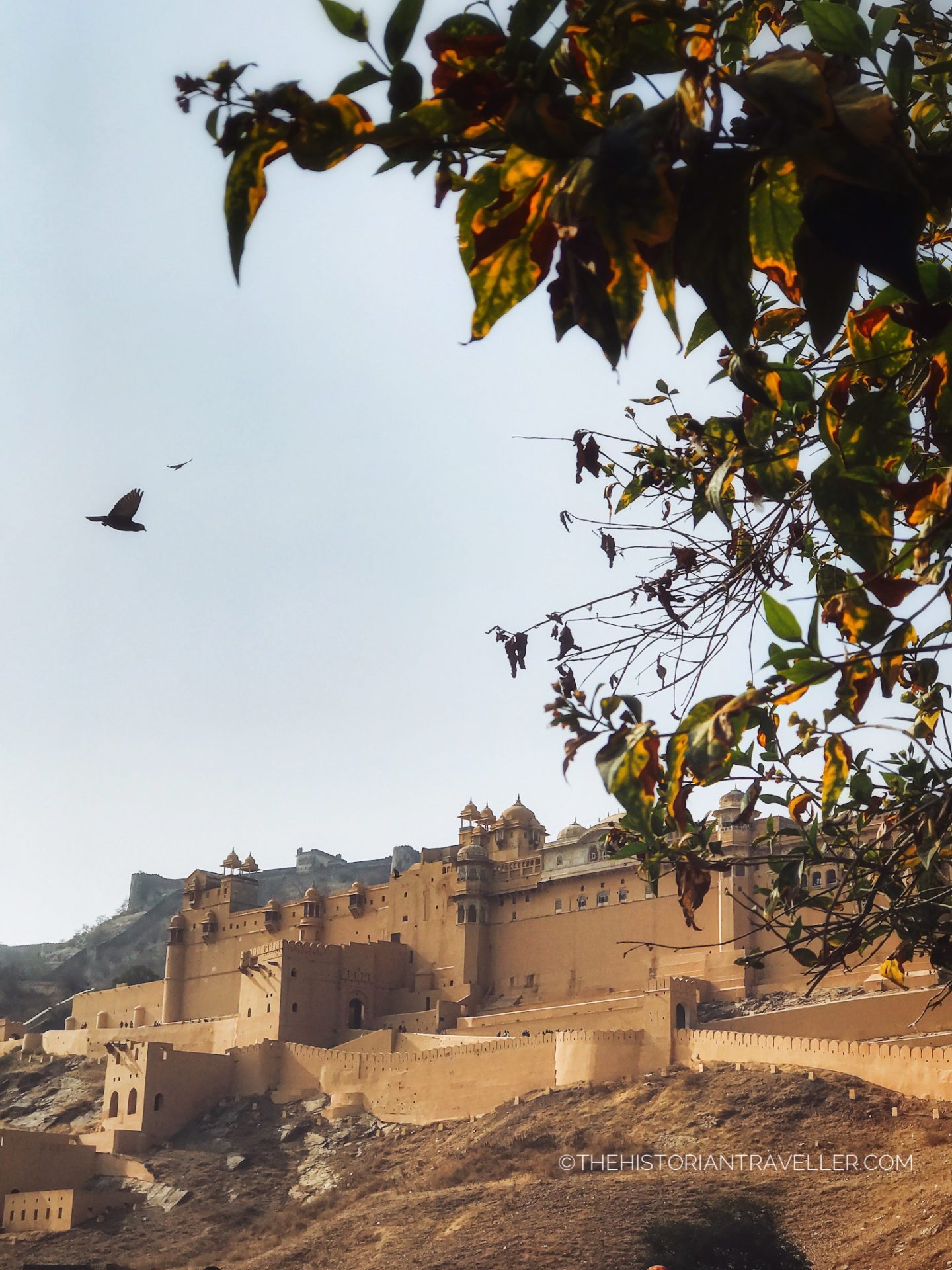
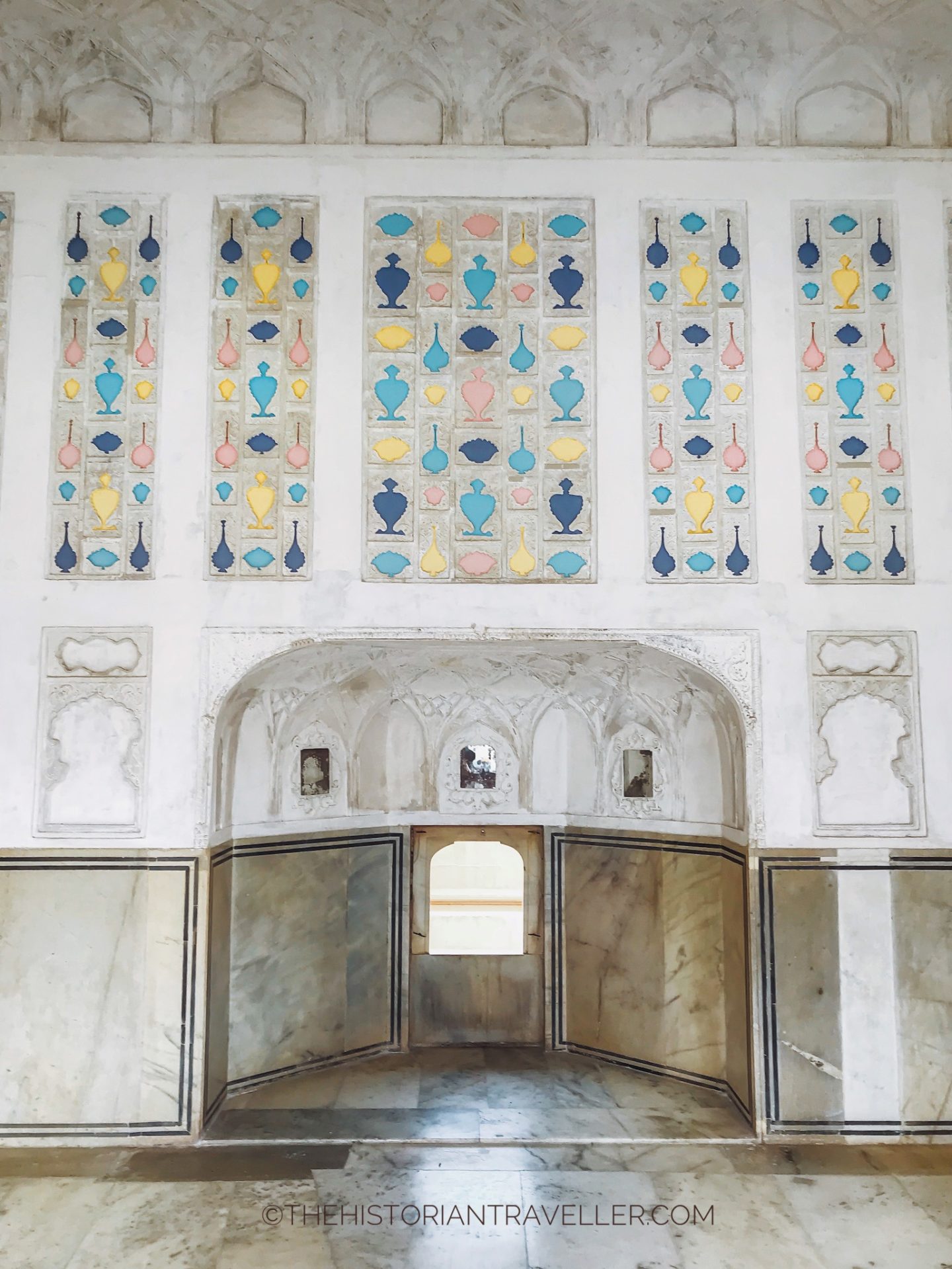
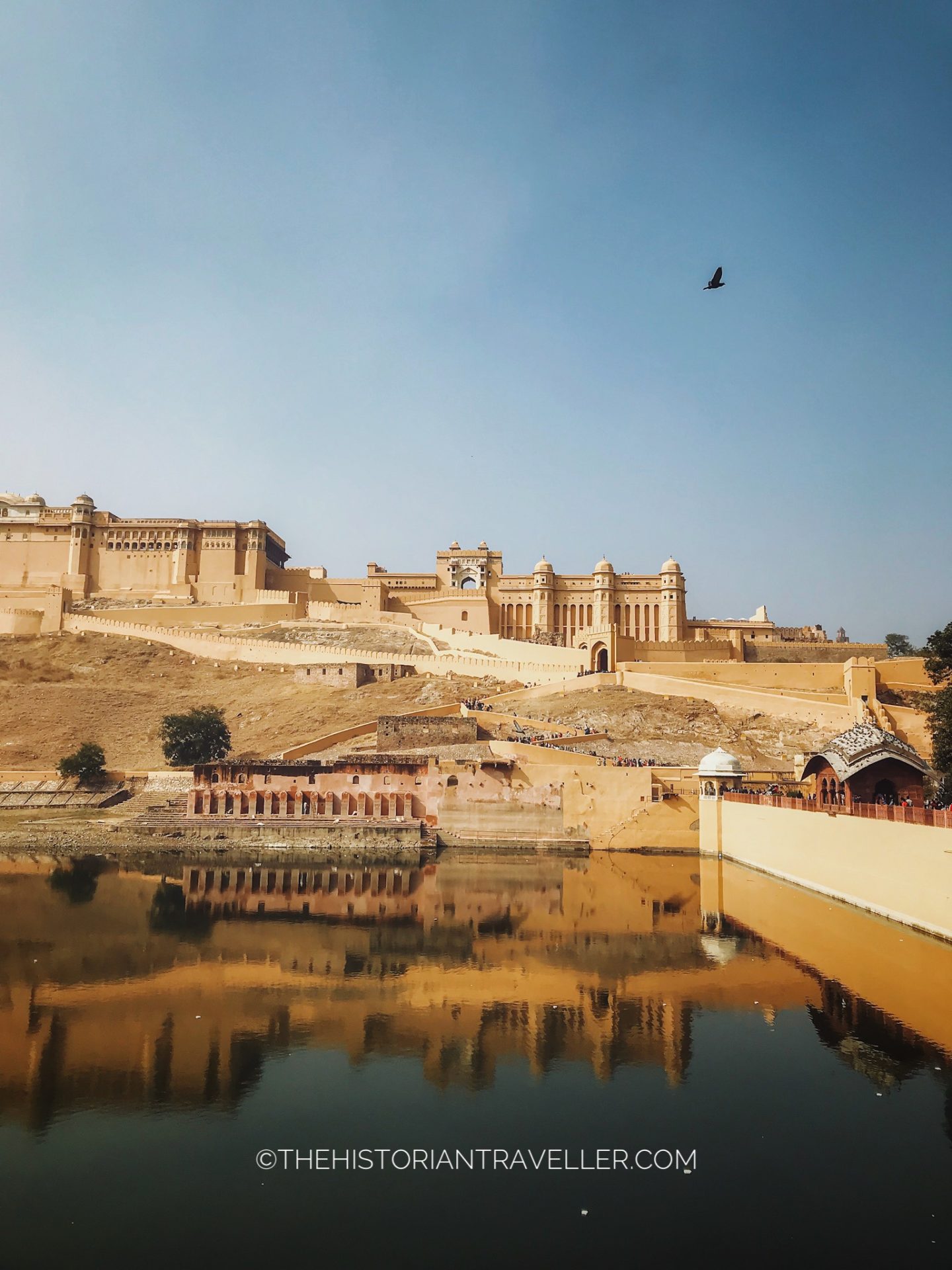
After climbing the main ramp to the palace, you will start your visit immediately after you by crossing the Suraji Pol (Sun Gate). You will find your self in one of the four courtyards of the Amber Fort, This is called Jaleb Chowk. Here you will see elephants, bazaars and street vendors like you have suddenly time-travelled in another era. Here is also where you will find the ticket counter (we needed to ask directions because it was impossible to find with the crowd!). This is the courtyard where the Maharaja used to inspect the guard contingent.
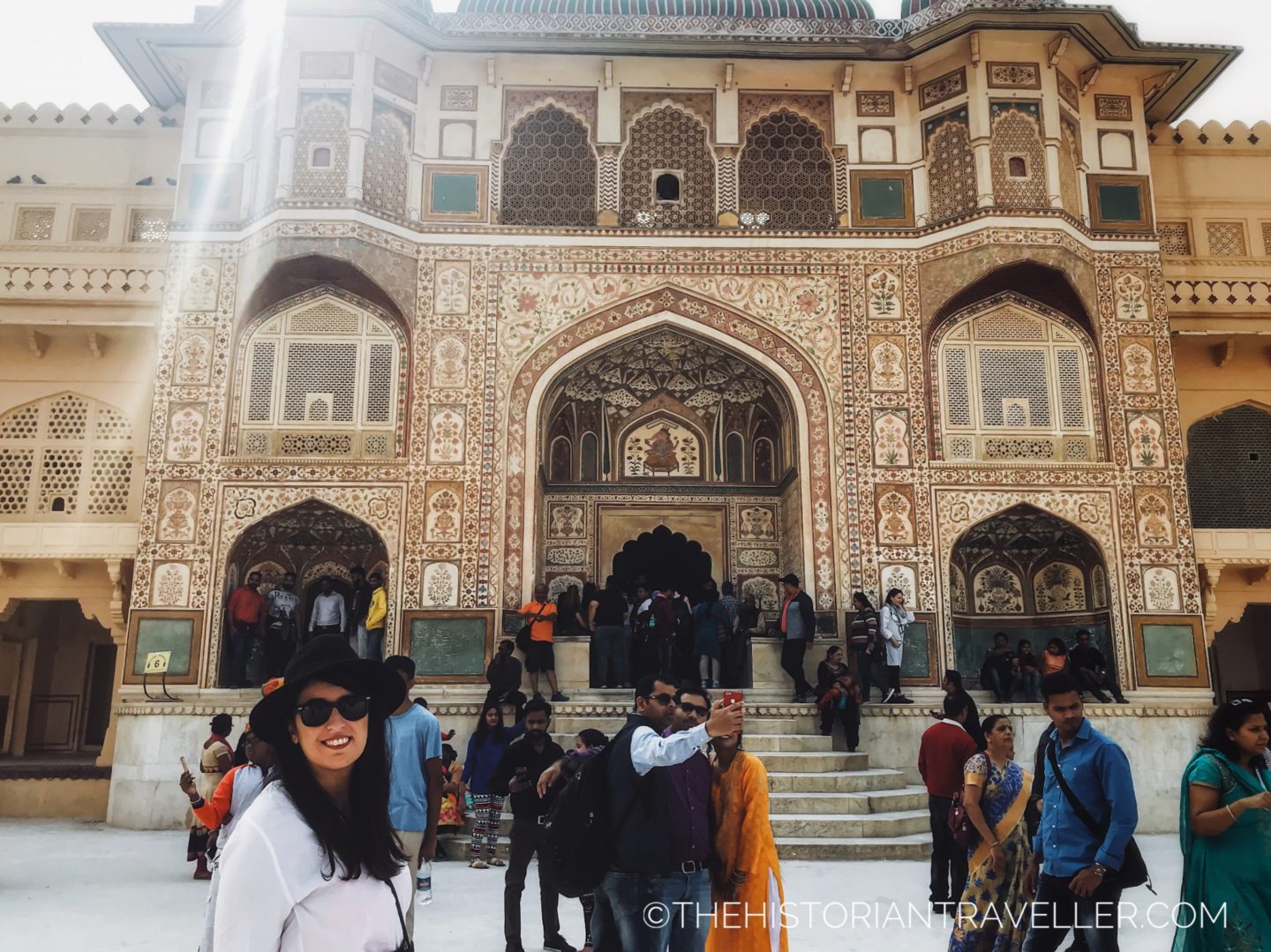
Once you have grabbed your tickets, you can enter the palace itself from the beautifully decorated Ganesh Pol (pictured above). This was likely one of the most photographed areas of the palace and, despite my efforts, I couldn’t have a decent picture. Of particular beauty is the third courtyard, where the Maharaja and his family were located. Here you can visit an interesting structure called Sheesh Mahal or “mirror palace”. A little palace embellished with glass inlaid panels and multi-mirrored ceilings that would shine with a candlelight.
Other notable attractions inside the Amber Fort are the Mughal Garden, the Palace of Man Singh I in the fourth courtyard and the Sila Devi Temple in the right side of the Jalebi Chowk.
Fees and Opening Hours
The entrance fee for foreign tourists is quite expensive compared to the other forts, amounting to ₹550.
The Amber fort is open daily from 8 am to 5.30 pm and from 6.30 pm to 9.15 pm
Don’t ride Elephants!!
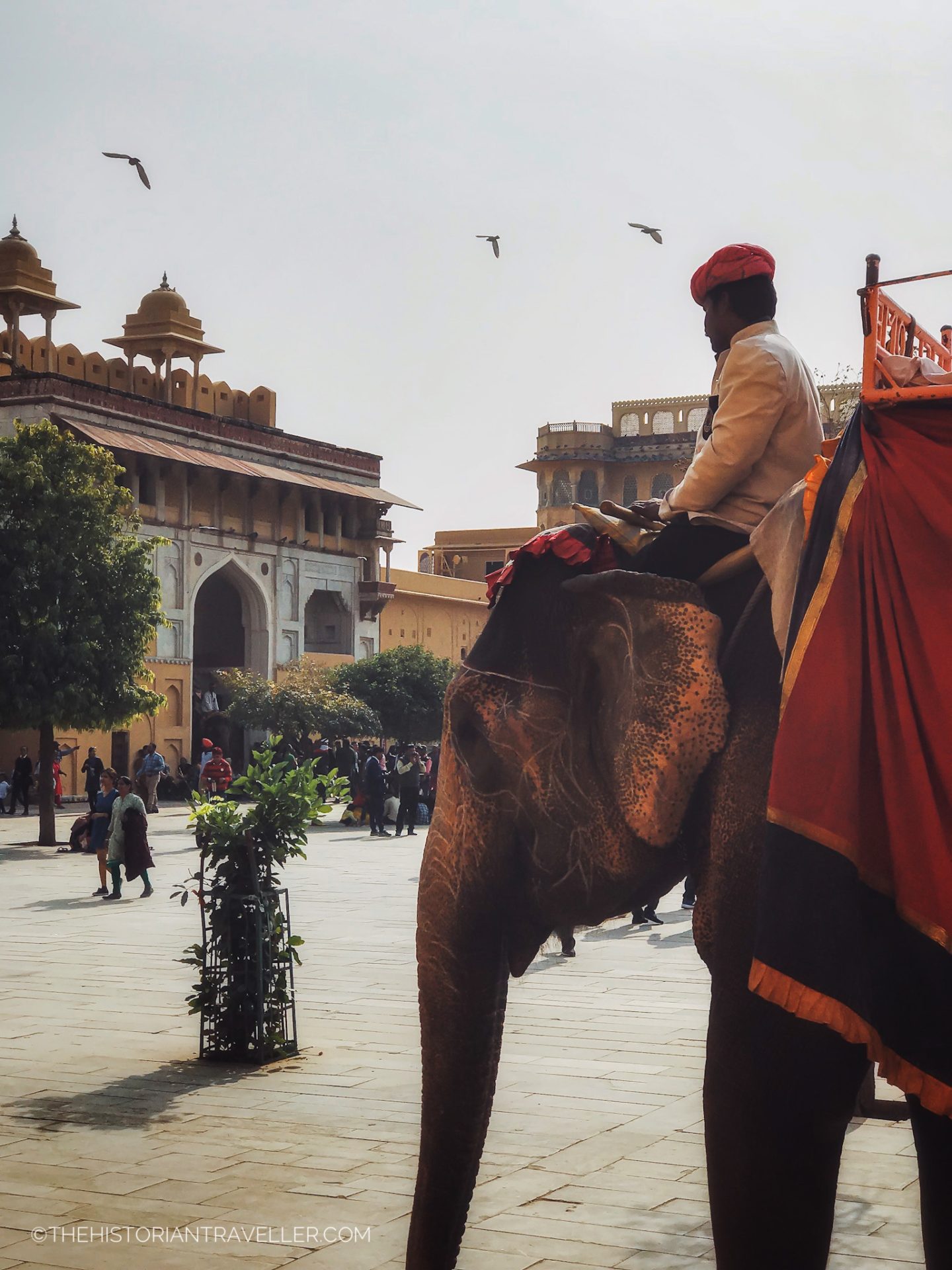
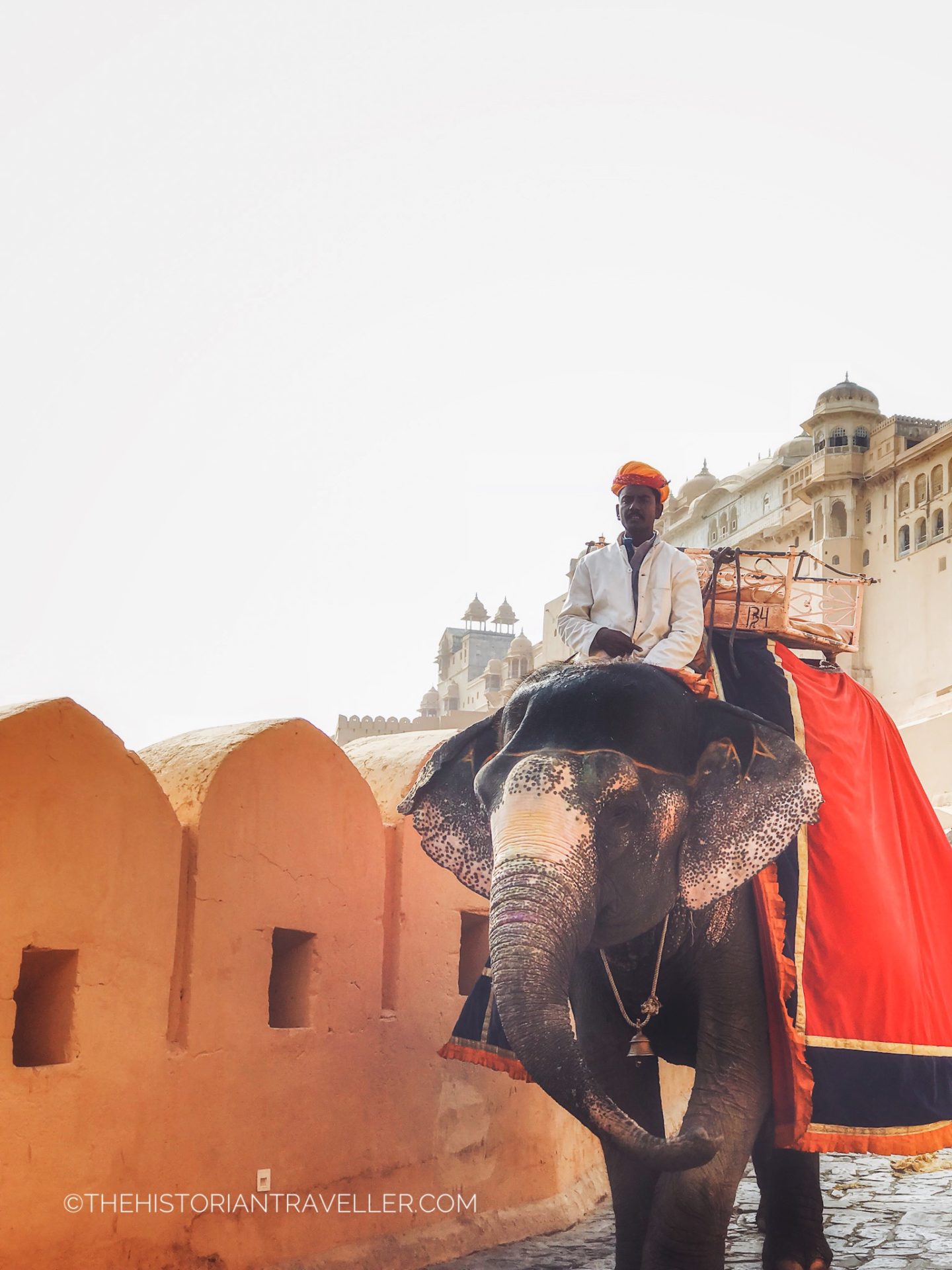
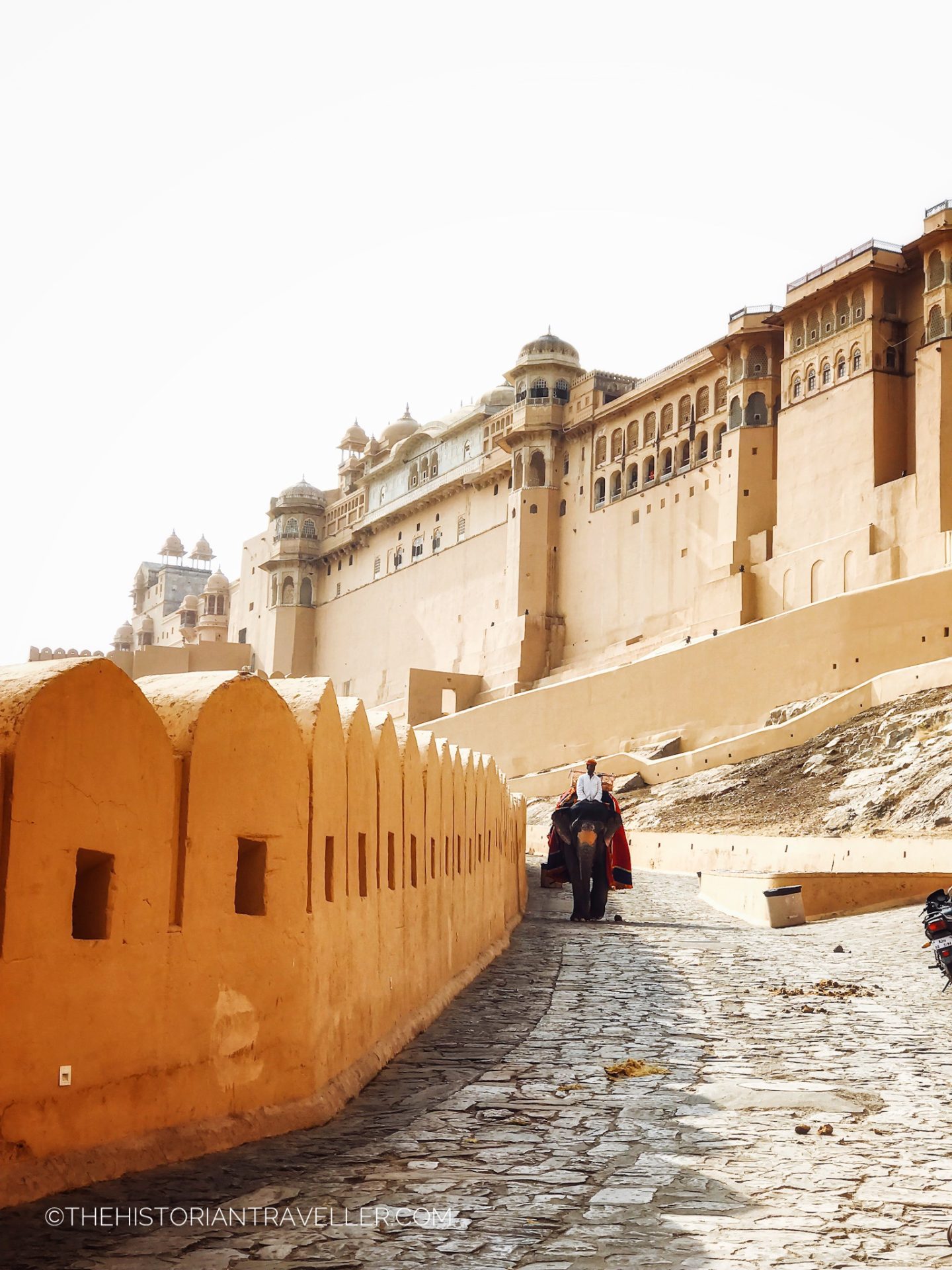
Once you arrive at the Amber Fort, the majestic elephants carrying tourist up and down the steep slope might immediately fascinate you. For Indian people, this is one of the most traditional experience a tourist can do. Nevertheless, I think that this is another way to get money at the damage of elephants working for hours in very poor conditions.This is a phenomenon spread all over India, not only in Rajasthan. In this regard, I would like to invite you to NOT RIDE ELEPHANTS for any reason. Don’t ride Elephants anywhere in India or in the world where they are used as tourist attraction and kept in captivity. If you are not convinced, please give a reading to the articles of World Animal Protection and BBC and try to be a better human!
However, If you want to have a genuine contact with these amazing animals while in India, go to an elephant sanctuary or a rescue centre where you can give help. I suggest you to give a look at the Wildlife SOS in Agra with a specialised elephant conservation and care centre in Mathura.
Where to eat in Jaipur: Bar Palladio
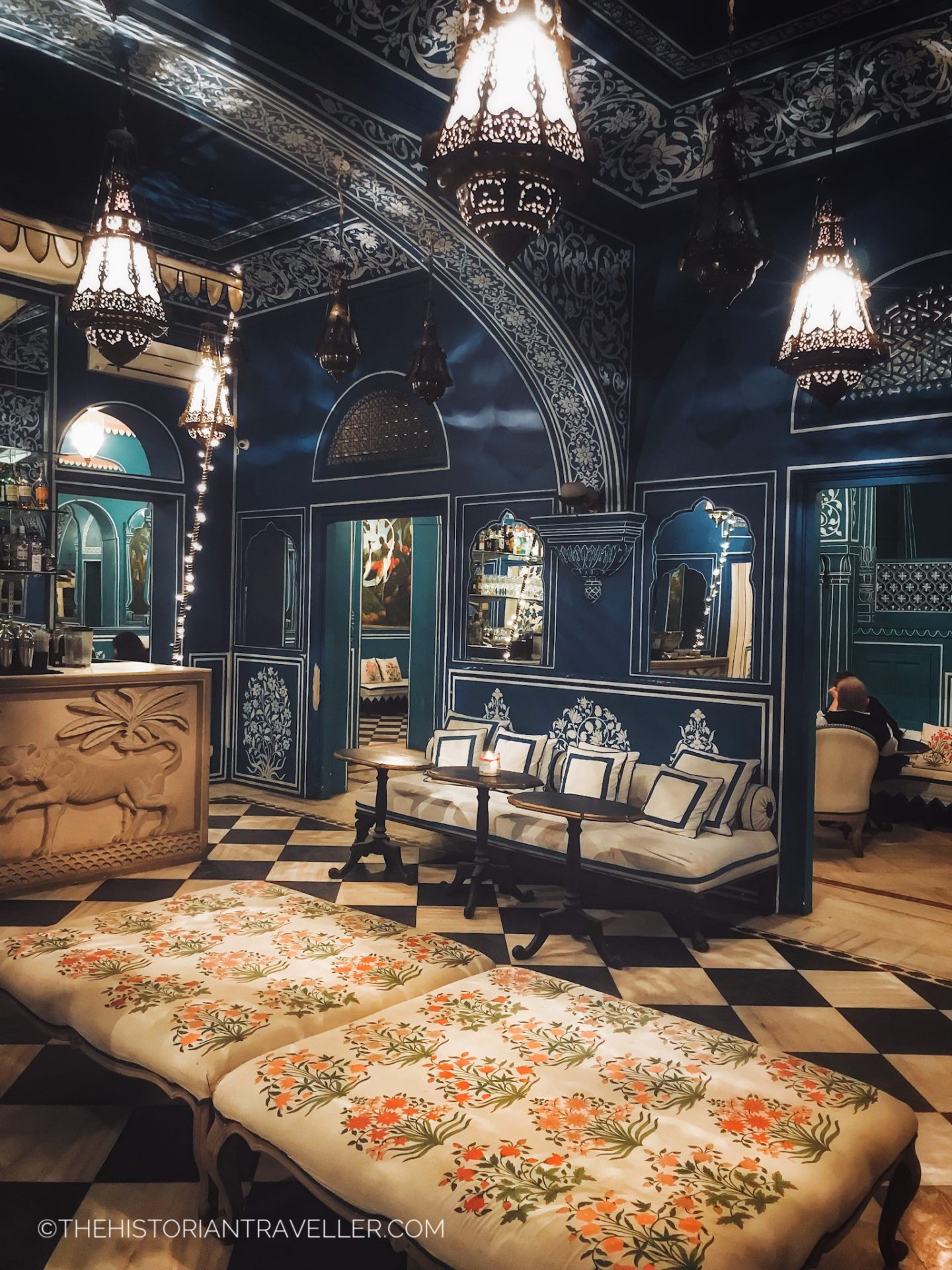
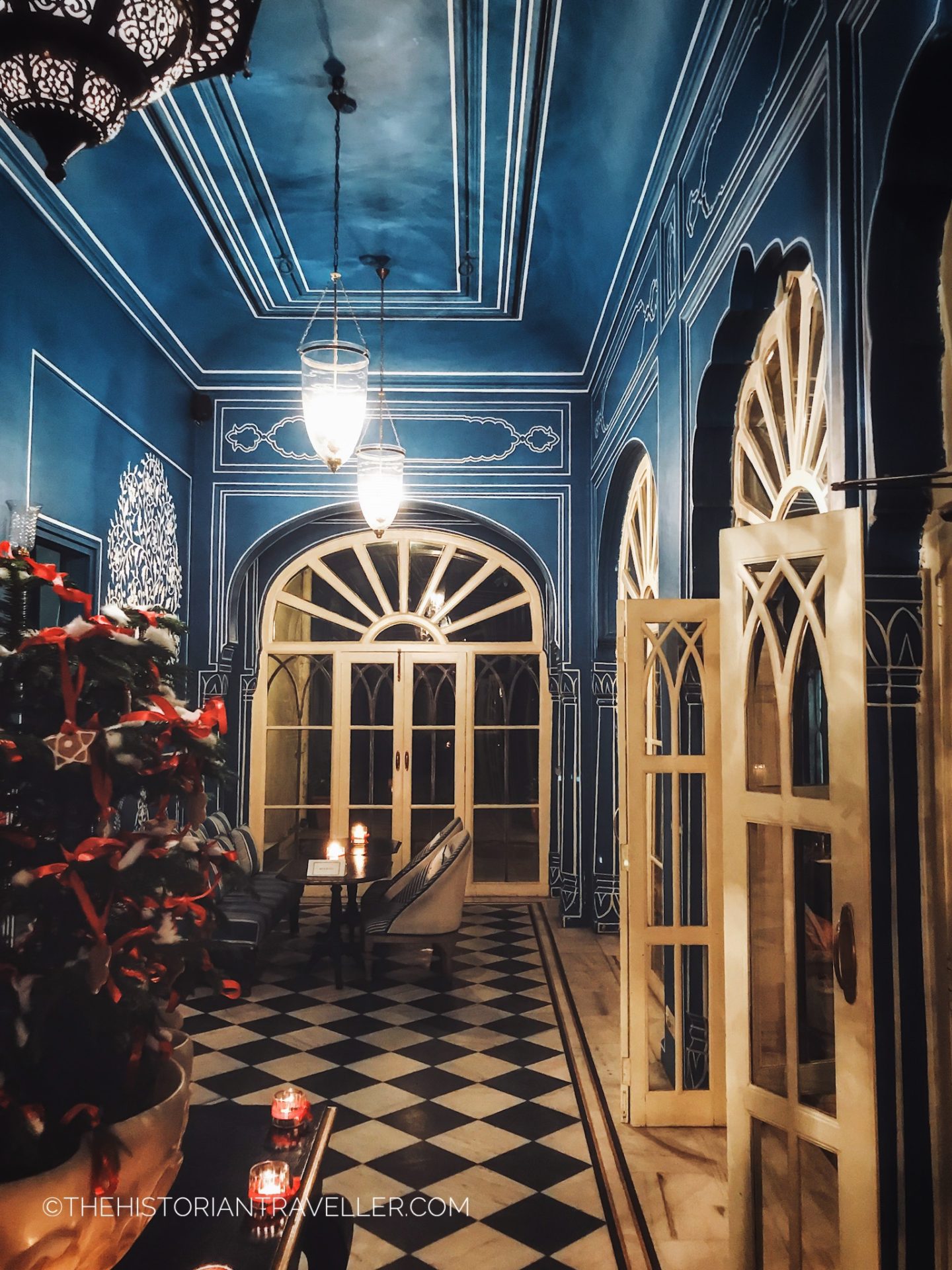
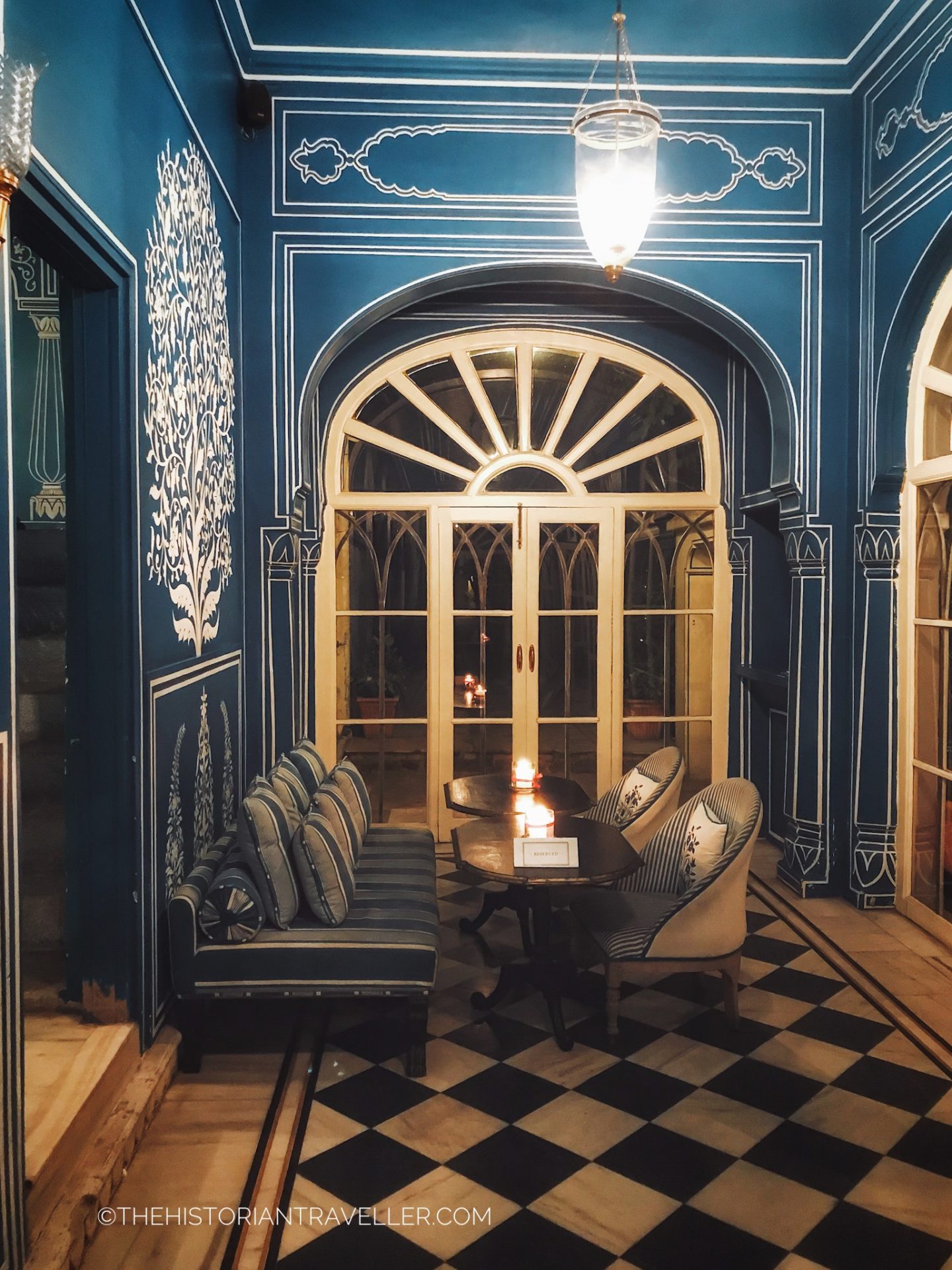
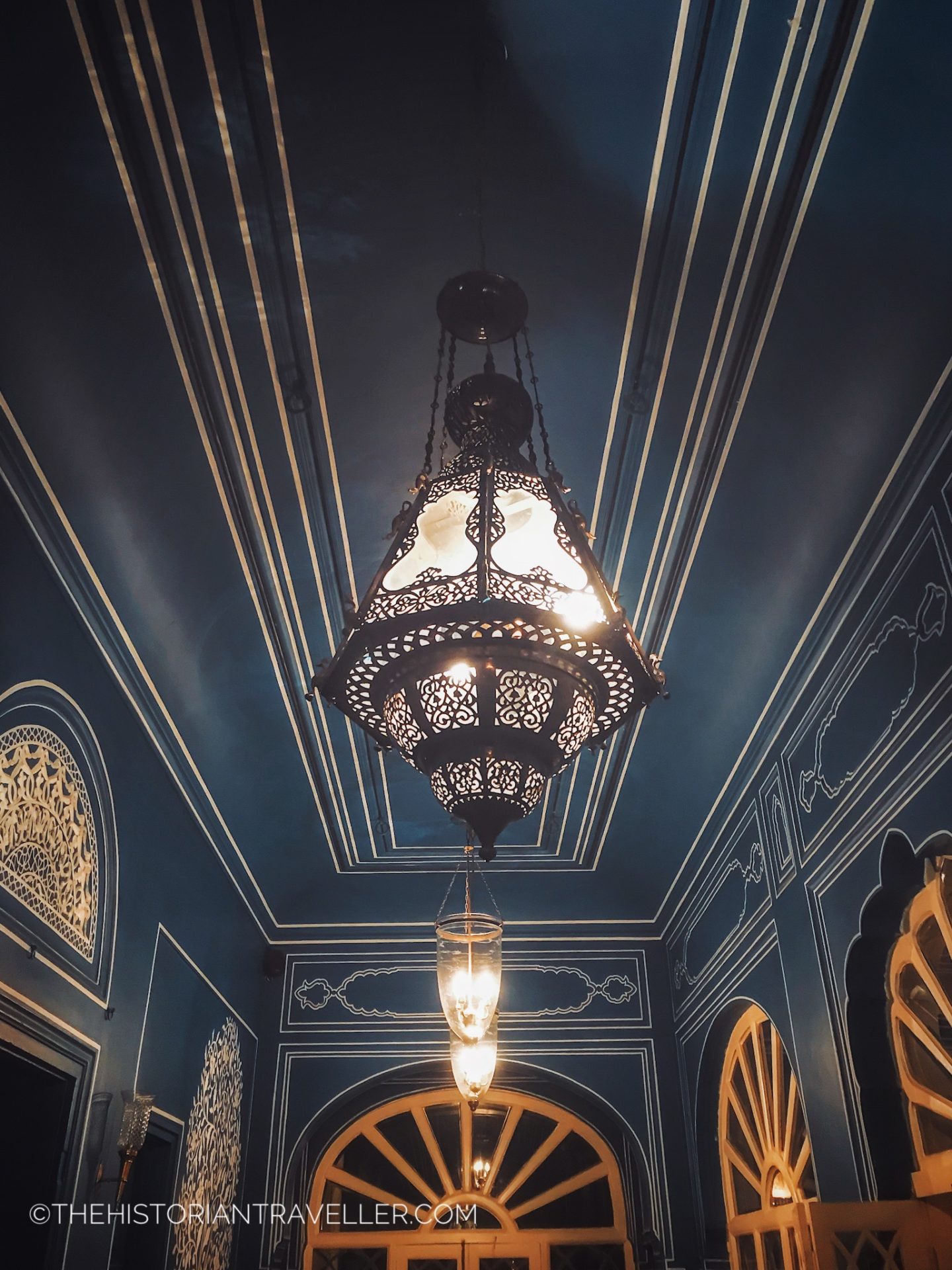
Amber Fort was the last stop of our Jaipur 3 days itinerary before heading to central Jaipur for dinner!
During our last night in Jaipur, we wanted to visit Bar Palladio. You can find Bar Palladio within the Narain Niwas Palace Hotel (so if your driver doesn’t know the location of the restaurant just give him the name of the hotel).
Bar Palladio or Caffé Palladio?
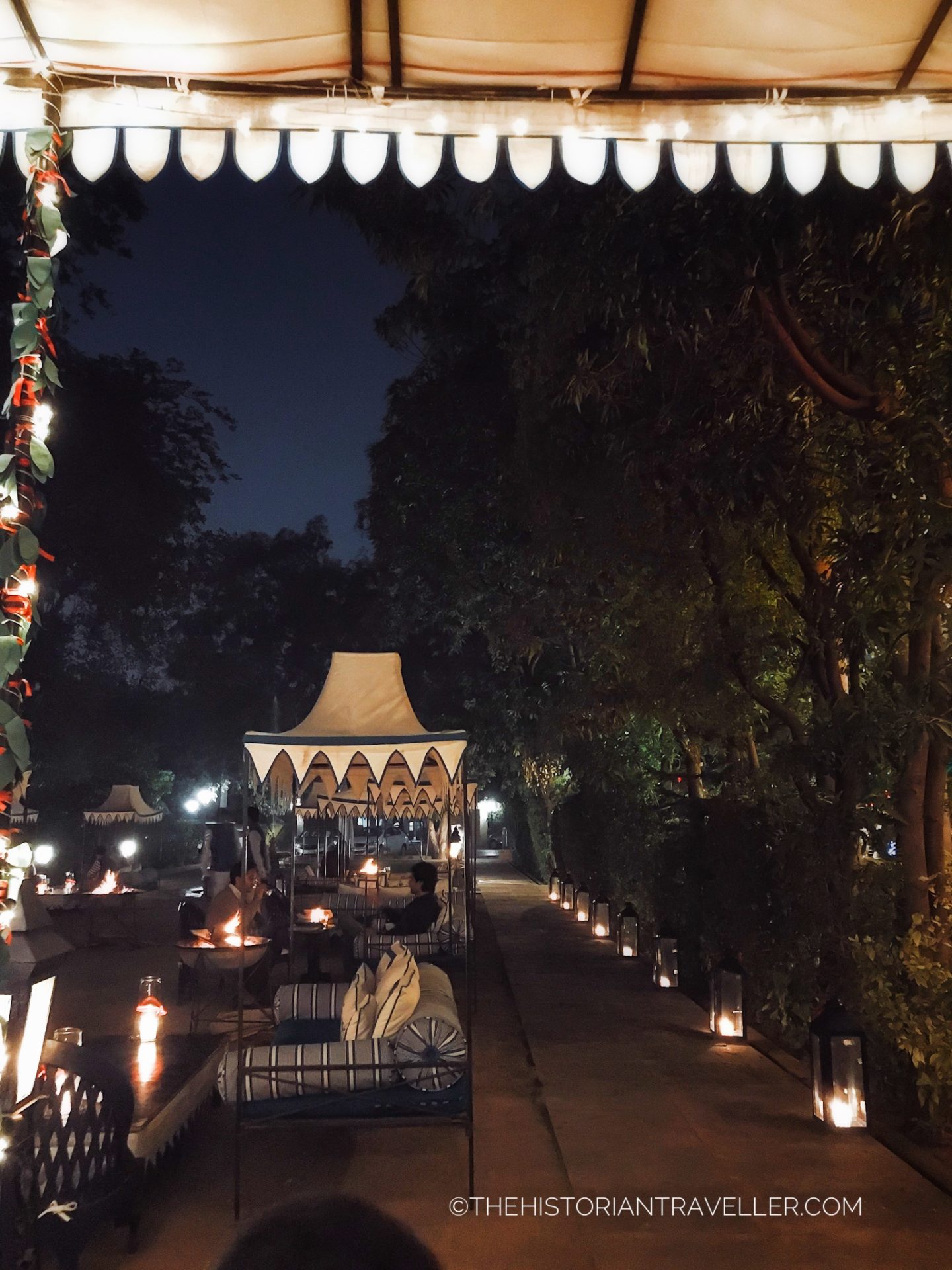
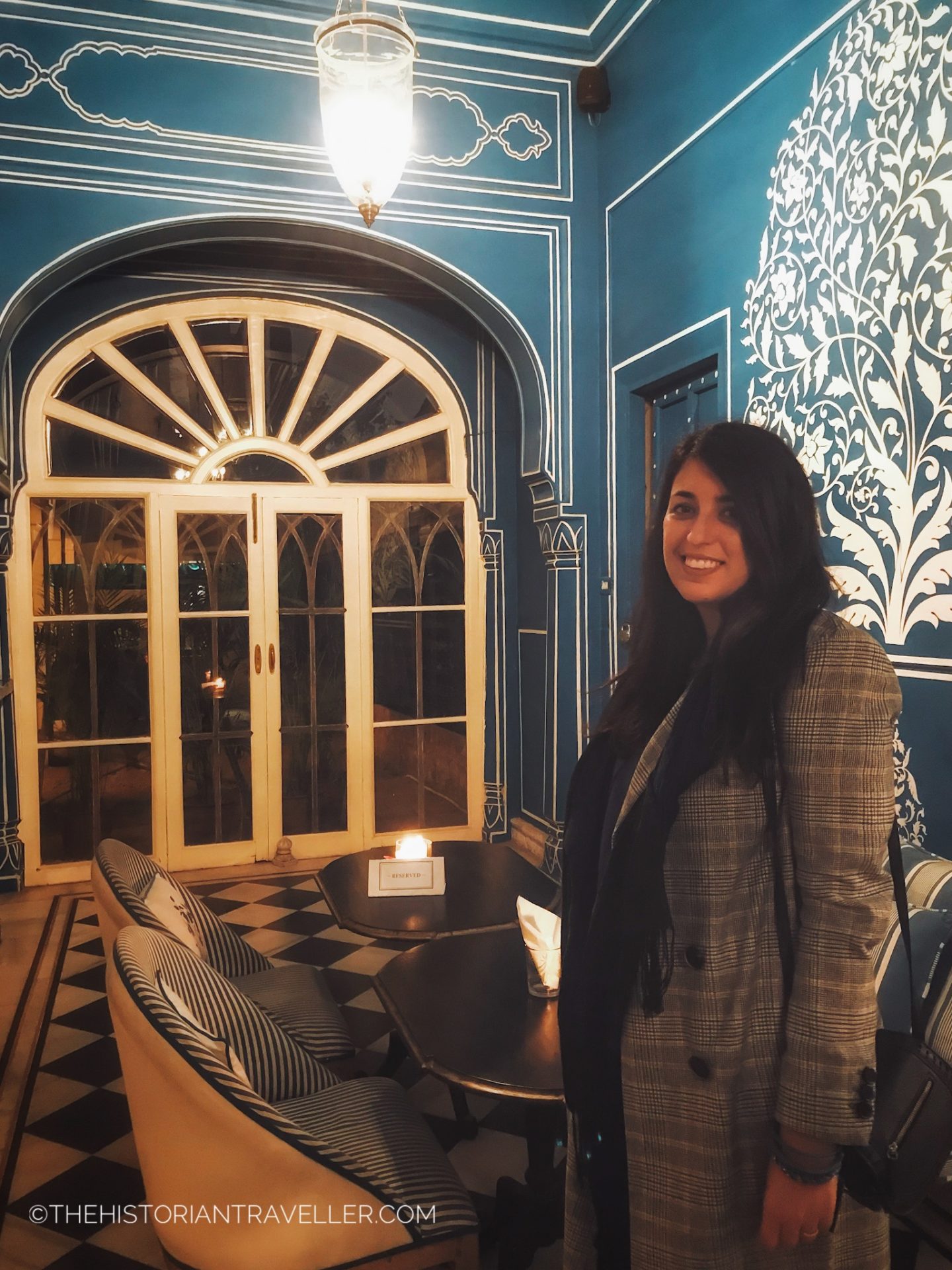
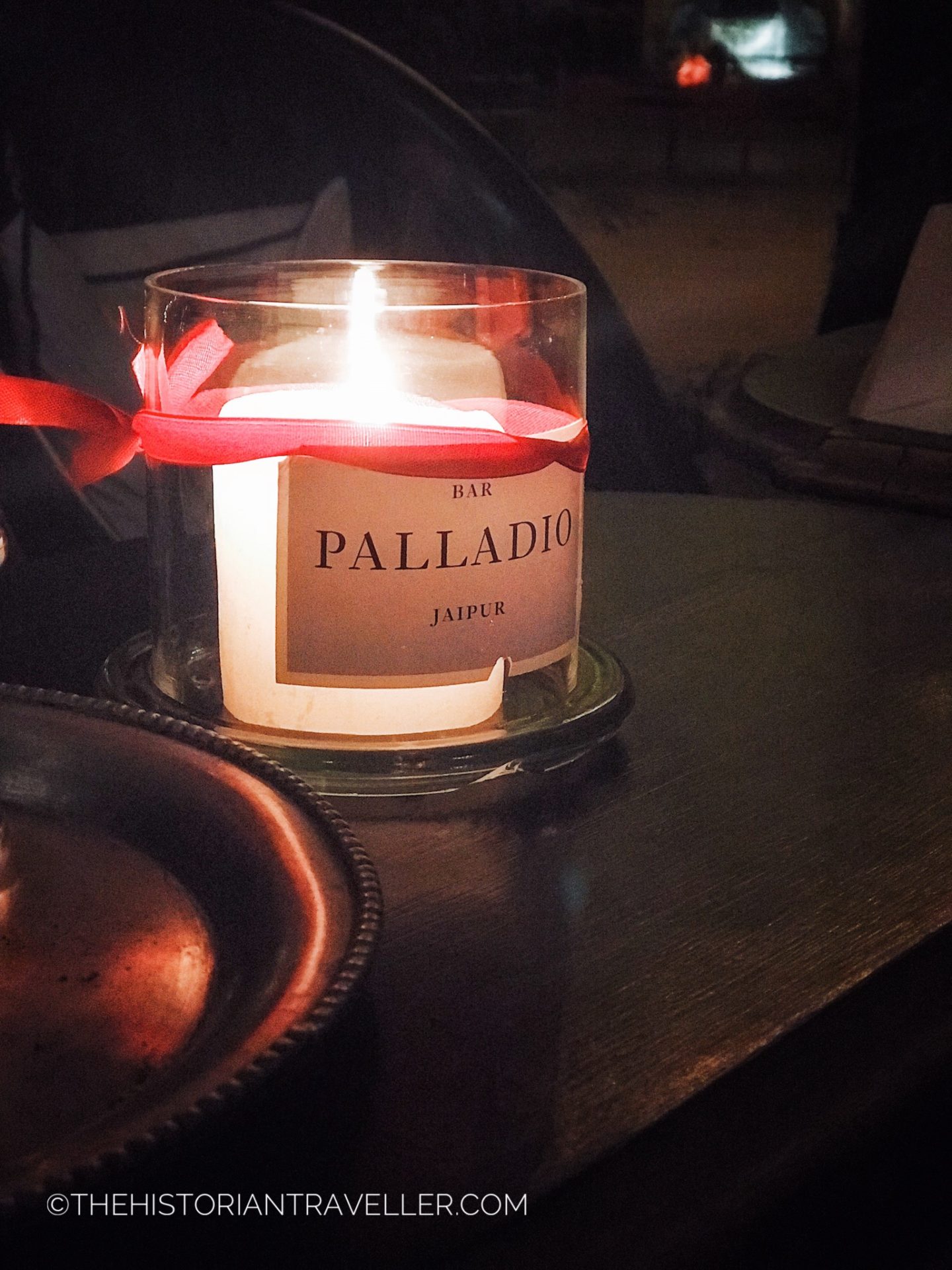
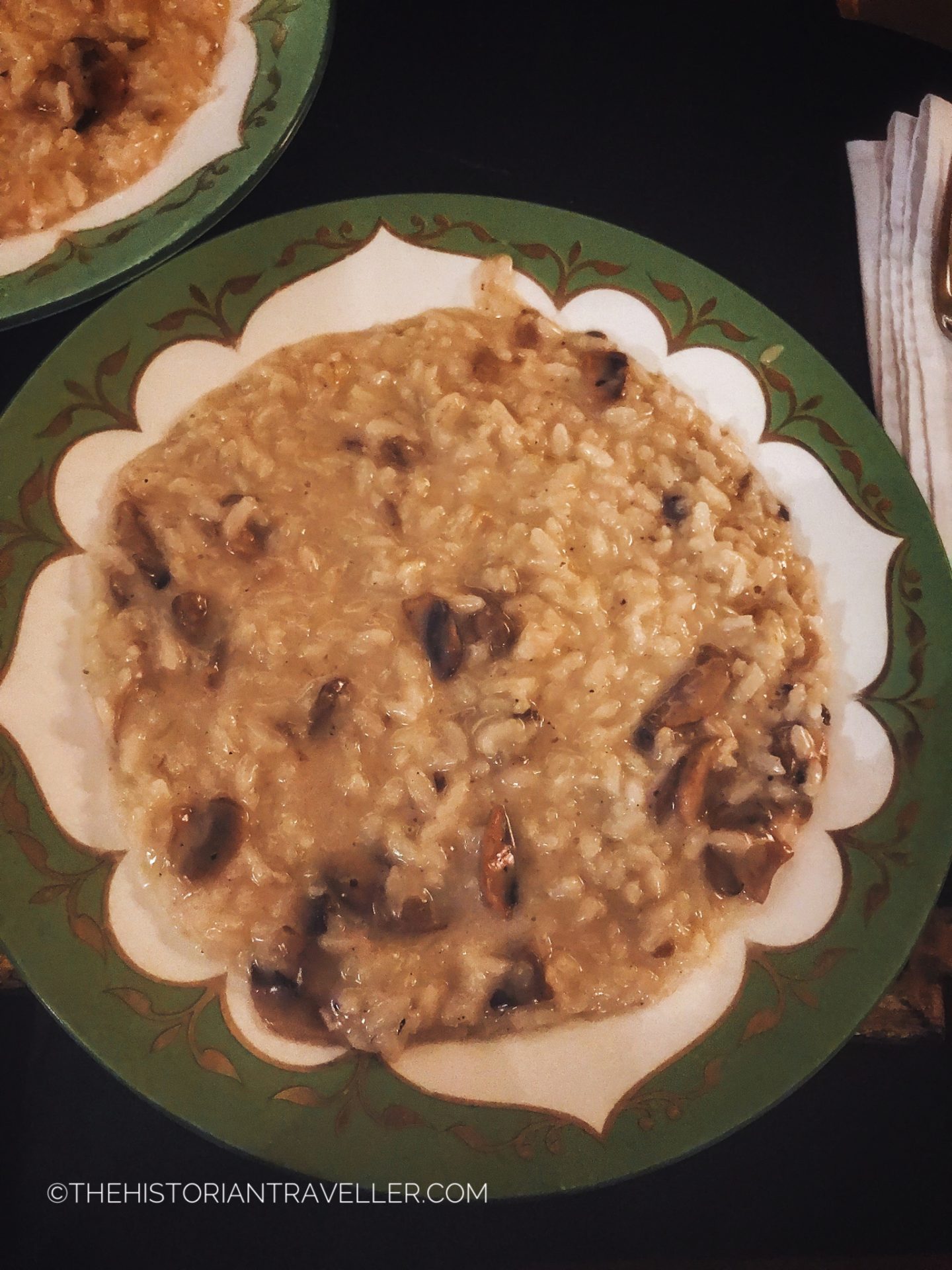
Differently from Caffé Palladio, which is open at lunchtime and you can just pop in and find a seat, to dine in Bar Palladio you will need a reservation. Indeed, this place is very popular (especially among tourists) and is often full. There is a nice courtyard, with various private gazebos, where you can dine or you can book a table inside.
The bar is fully painted in blue peacock, a distinctive sign of its identity. Moreover, the menu is quite different from the one in Caffè Palladio and you can taste a various range of first and second courses together with amazing cocktails. For our dinner, we chose a mushroom risotto but the menu can have some other variations now.
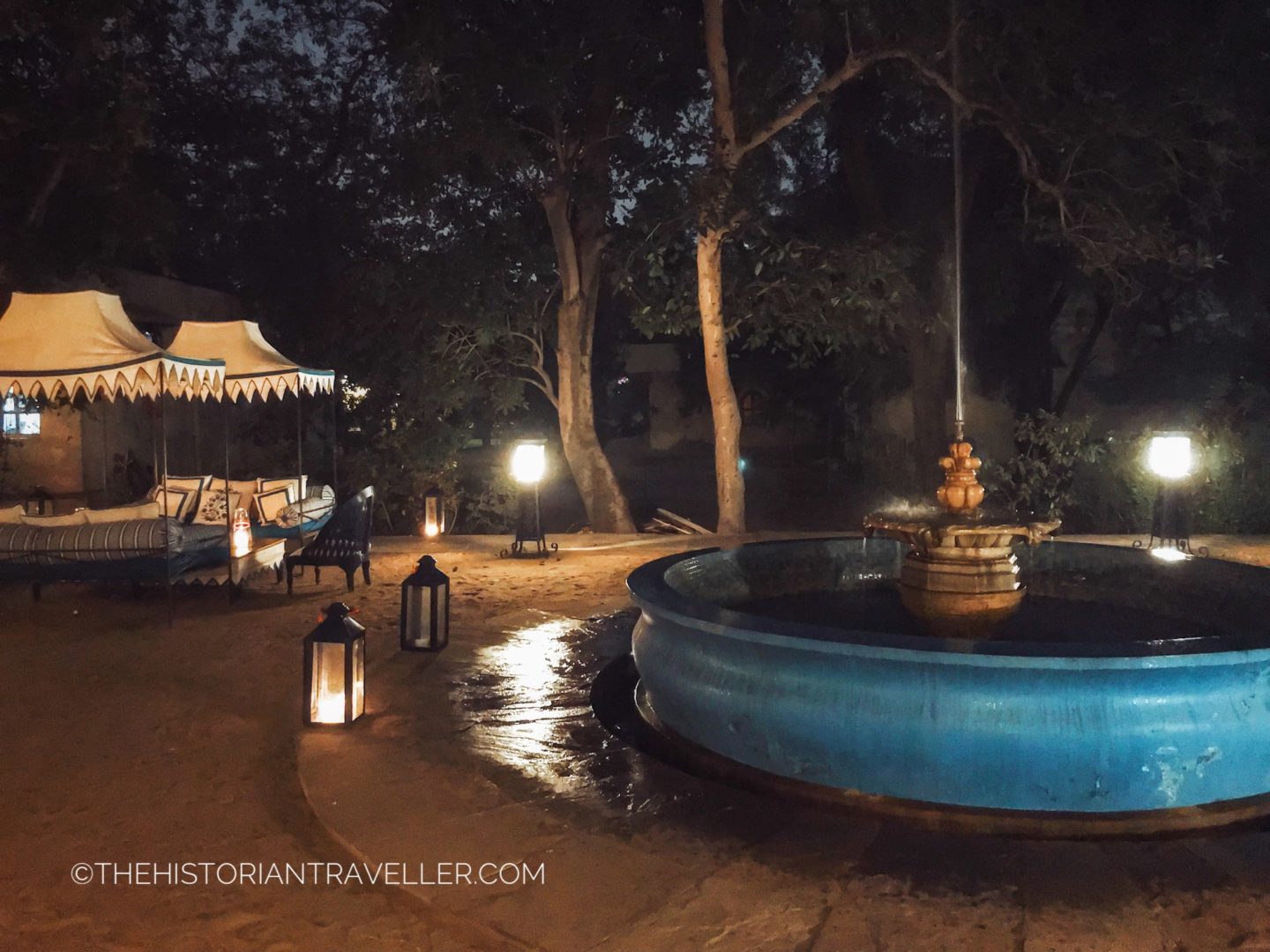
Dining at Bar Palladio Practical information
Bar Palladio is located at Narain Niwas Palace Hotel
Kanota Bagh, Narain Singh Road
Jaipur – RJ 302004 India
The opening time is Monday – Saturday 4 pm – 12 midnight
Sunday 11 am – 12 midnight
To reserve your seat you should call one of these numbers +91 141 2565556
+91 807 8689804 (from 11 am)
For more info visit the website Bar Palladio
Conclusions
We had a very great time in Jaipur. However, I admit that three days are quite a short time to see all the amazing things this city has to offer. In any case, if you are a first timer in India and want to enjoy the main highlights of the golden triangle within a short period, a 3-days itinerary is perfect! After our tour, I am definitely convinced I want to visit more of Rajasthan and hope to organise another trip soon! If you want any other info, give me a shout!
Loved this blog? Pin it for later!
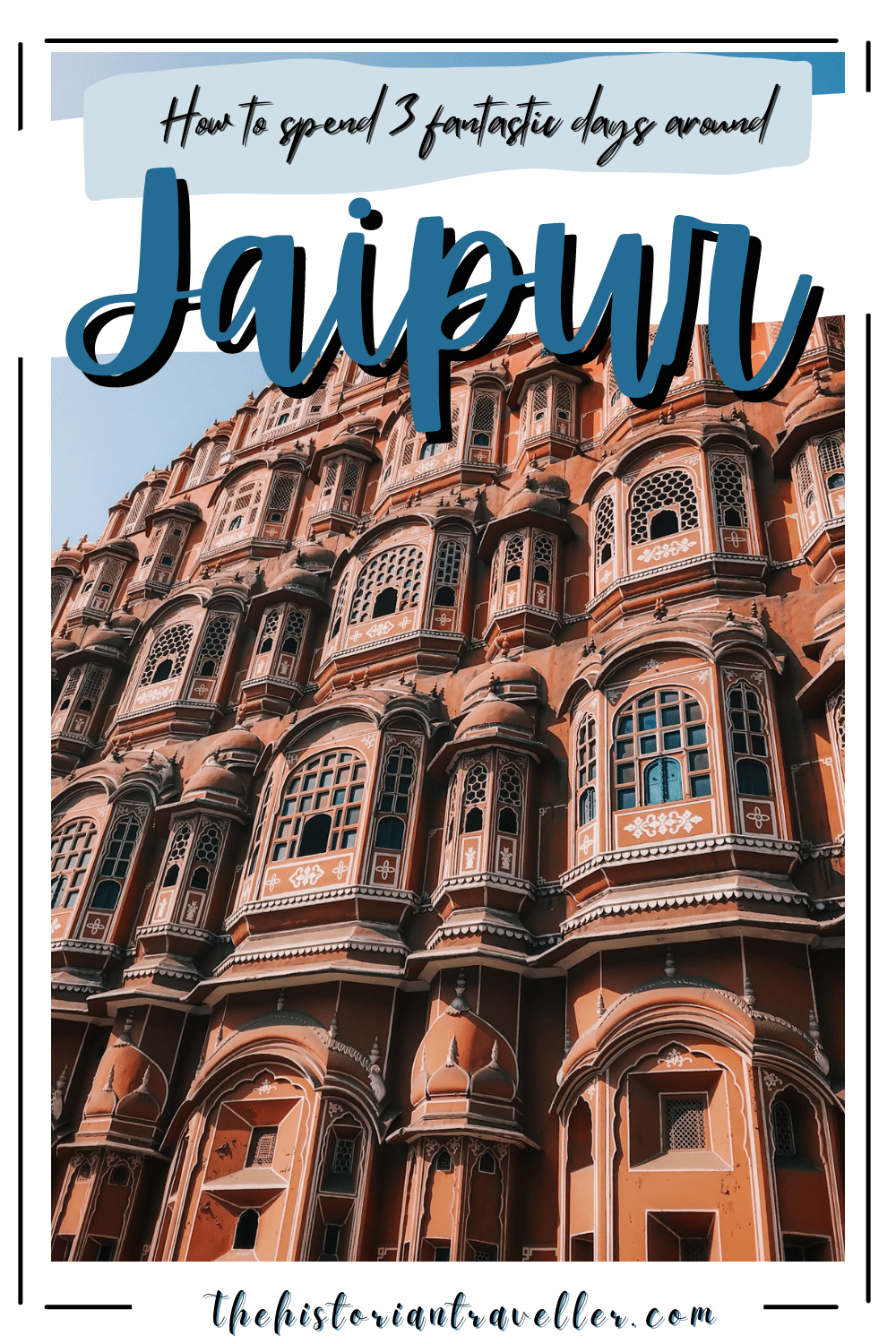

Great read.